Chili peppers
2016
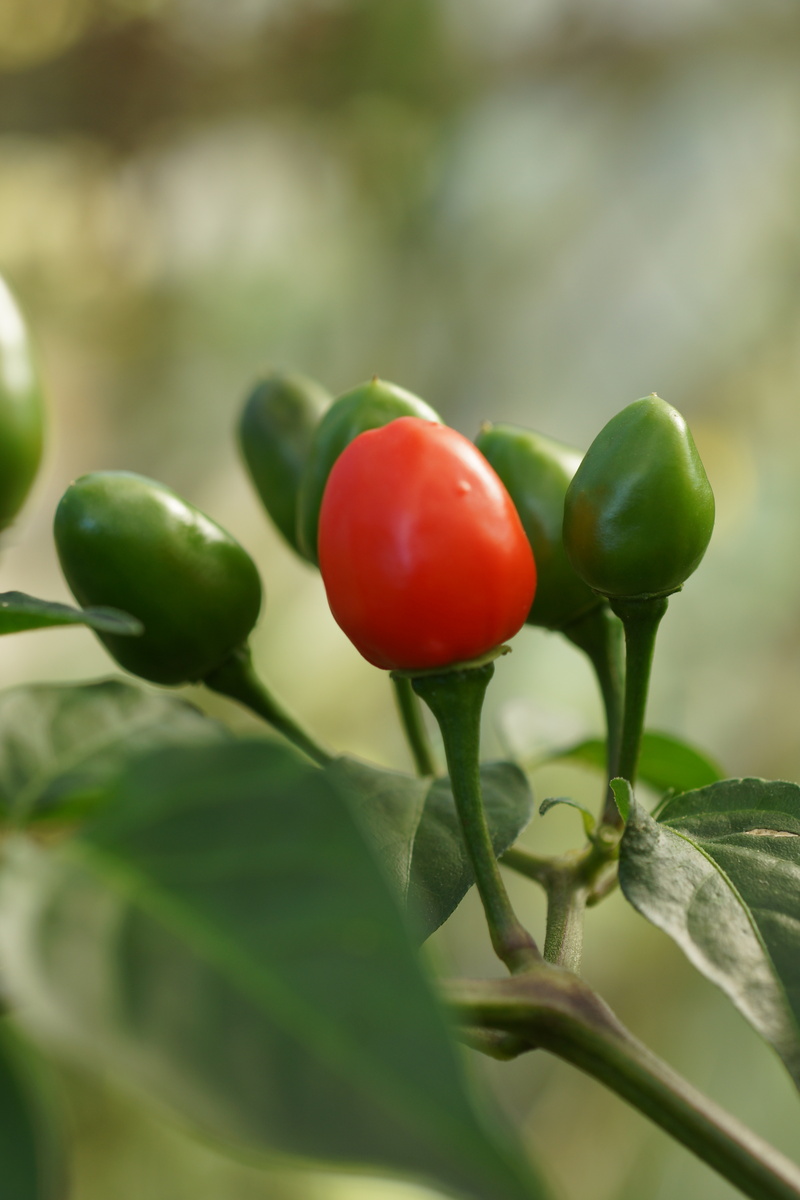
devdas 2015 red (dalle khursani or maybe akabare khursani)
Possibly C. frutescens; possibly C. chinense.
Very hot, small, red chili. Upright growth habit. Plants are very large with a heavy central stem and enormous leaves. Taste is somewhat fruity, reminescent of strawberries. Heat: 10/10
Possibly C. frutescens; possibly C. chinense.
Very hot, small, red chili. Upright growth habit. Plants are very large with a heavy central stem and enormous leaves. Taste is somewhat fruity, reminescent of strawberries. Heat: 10/10
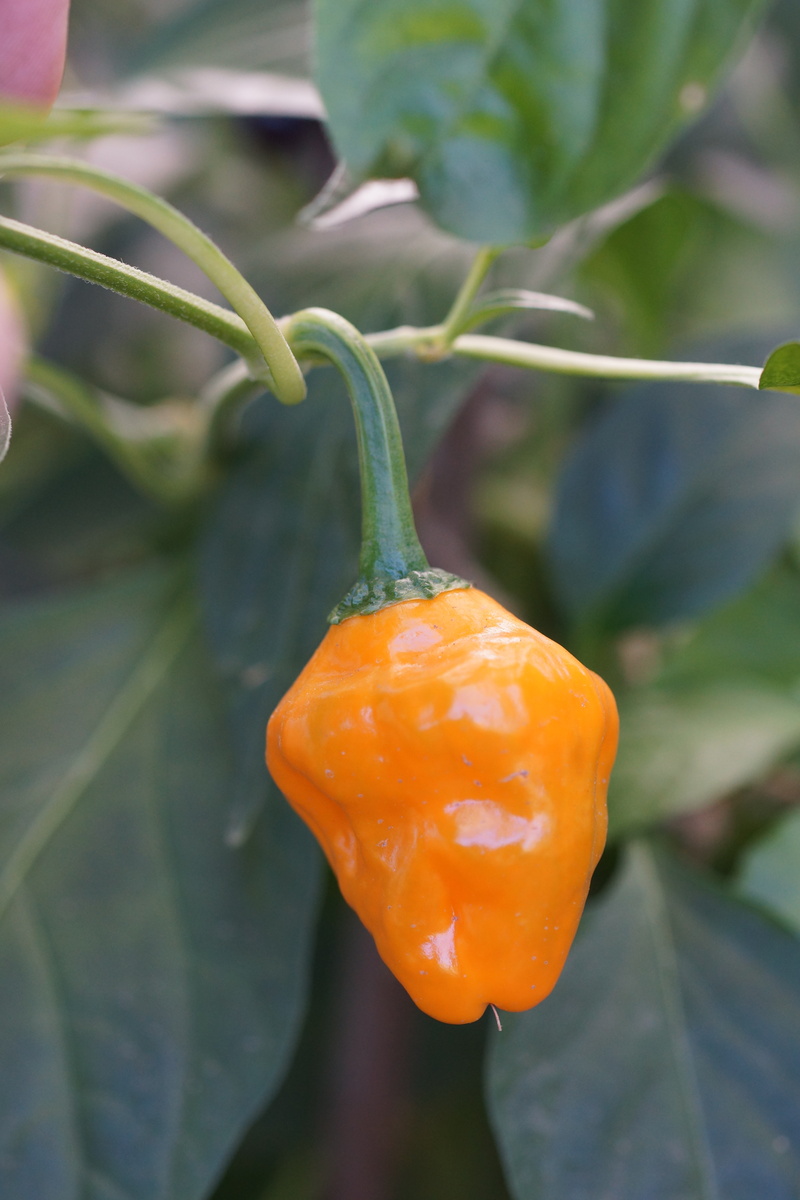
mushroom pepper
C. annuum
Quite hot, productive. Flavor is not distinctive but is good. Chilis are 3-4cm. Heat: 7/10
C. annuum
Quite hot, productive. Flavor is not distinctive but is good. Chilis are 3-4cm. Heat: 7/10
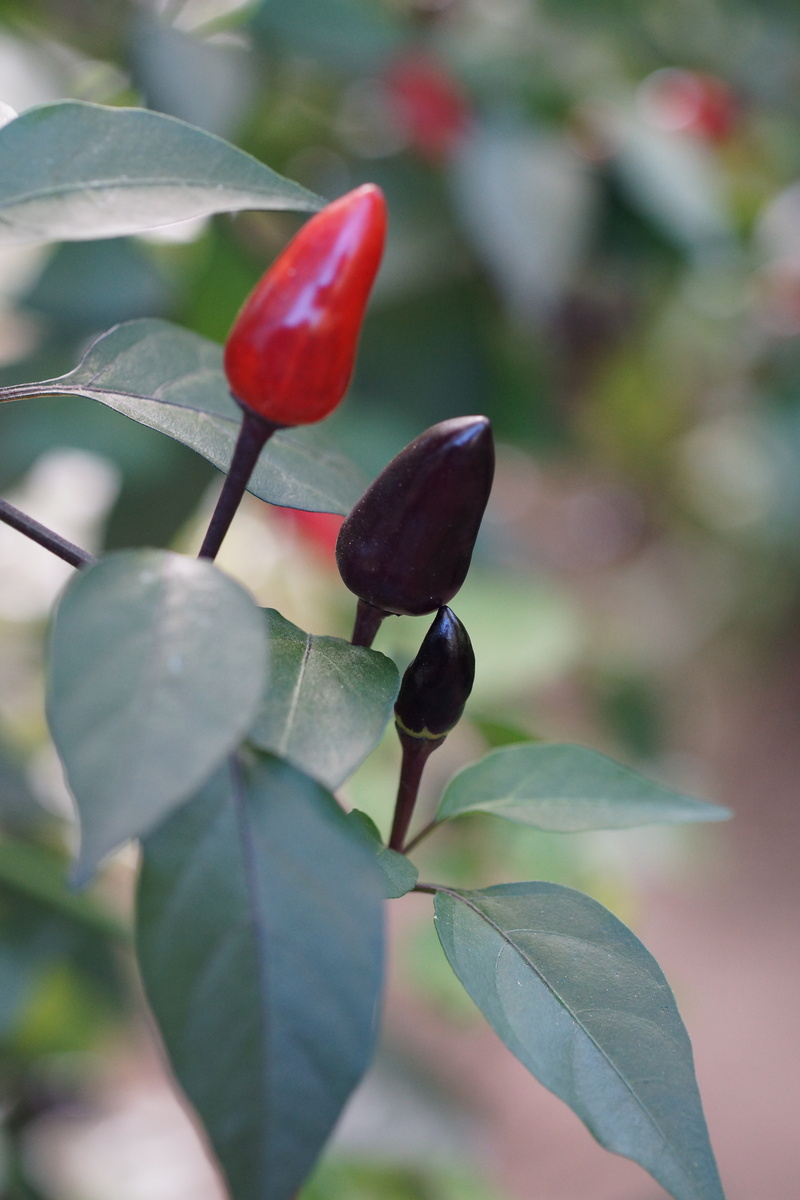
royal black
C. annuum
Prolific, hot, and pretty, but flavor is not exceptional.
C. annuum
Prolific, hot, and pretty, but flavor is not exceptional.
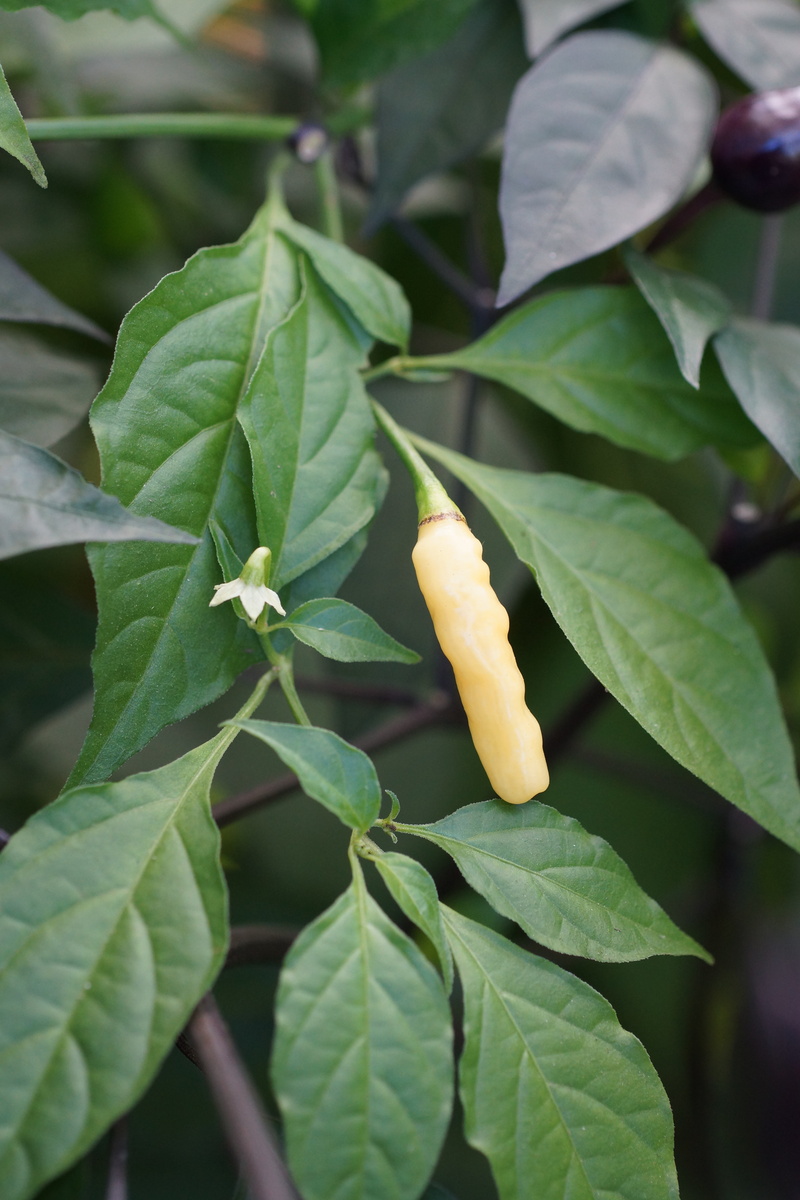
aribibi gusanito
C. chinense
Vendor: Peperzaden.nl
Indistinguishable in all respects from aribibi gusano. Ripens from green to white to off-white. Tends to produce single or small clusters of 1-3cm long peppers. Flavor is very good - searingly hot, with notes of tropical fruit, but lacking the acrid overtones of most chinense. Heat: 10/10
C. chinense
Vendor: Peperzaden.nl
Indistinguishable in all respects from aribibi gusano. Ripens from green to white to off-white. Tends to produce single or small clusters of 1-3cm long peppers. Flavor is very good - searingly hot, with notes of tropical fruit, but lacking the acrid overtones of most chinense. Heat: 10/10
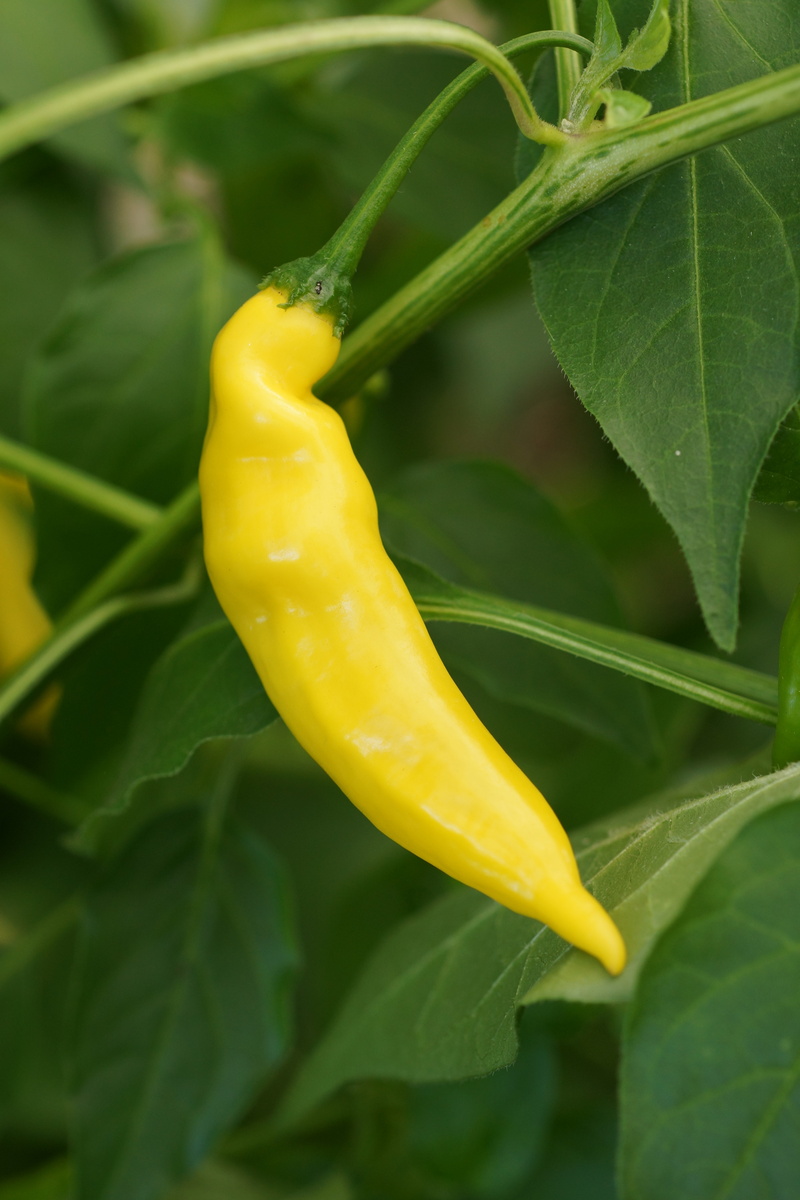
aji pineapple
C. baccatum
Vendor: Refining Fire
Indistinguishable from Hot Lemon. ~7cm long. Quite hot (7/10) with a surprisingly strong citrus smell and flavor. The citrus tones are more prononounced in some specimens than others.
C. baccatum
Vendor: Refining Fire
Indistinguishable from Hot Lemon. ~7cm long. Quite hot (7/10) with a surprisingly strong citrus smell and flavor. The citrus tones are more prononounced in some specimens than others.
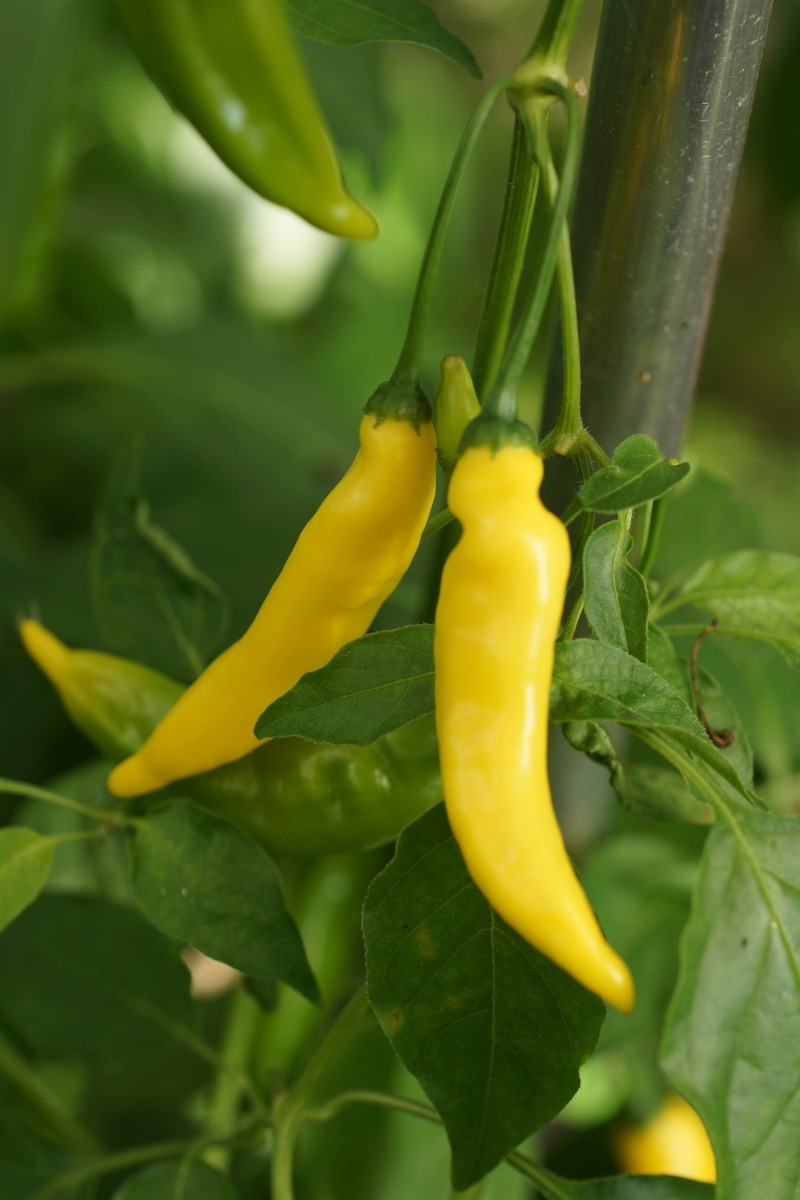
aji pineapple / hot lemon
C. baccatum
C. baccatum
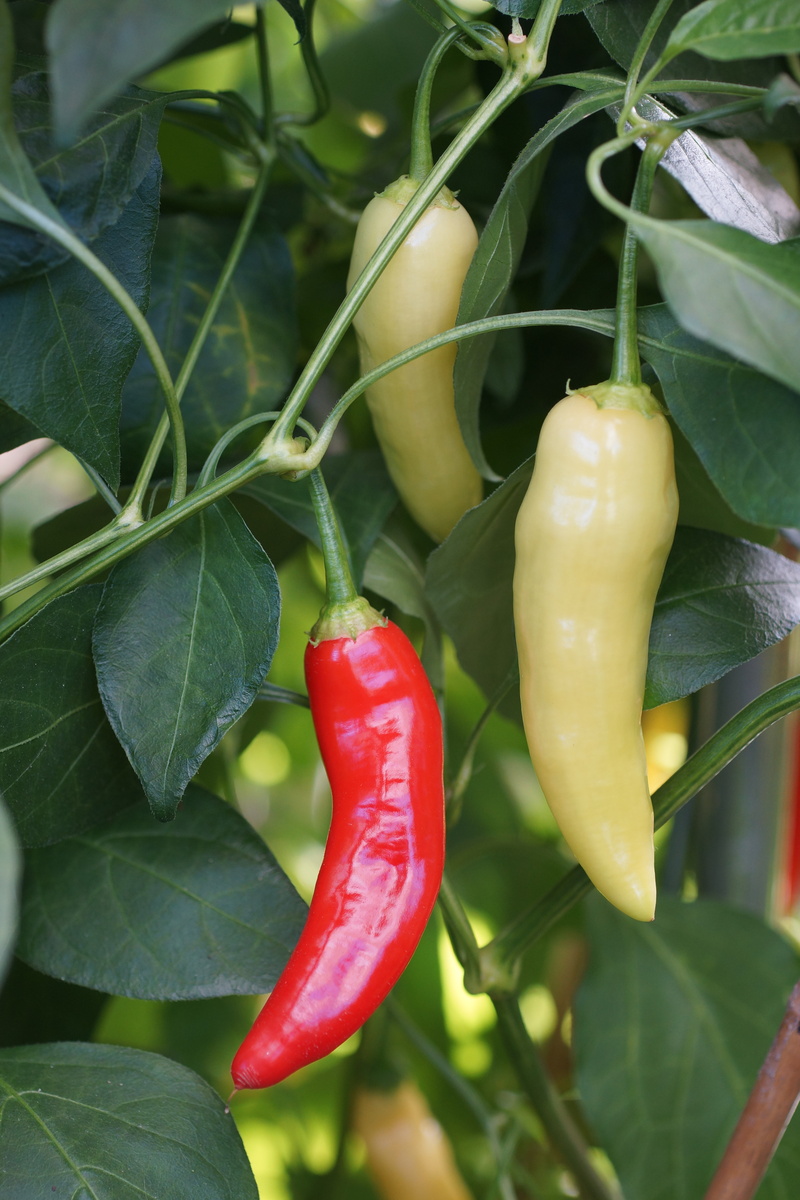
aji crystal
C. baccatum
Vendor: Peperzaden.nl
Quite hot chili with a pleasant, fruity baccatum flavor. Very prolific; does well outdoors, indoors, in a pot, wherever. Apparently this chili is traditionally picked when it is just turning from pale green to orange, and used to make salsa pebre (recipes vary, but generally it is a fresh salsa made with tomatoes and wine vinegar). Heat is medium-hot; 6/10.
C. baccatum
Vendor: Peperzaden.nl
Quite hot chili with a pleasant, fruity baccatum flavor. Very prolific; does well outdoors, indoors, in a pot, wherever. Apparently this chili is traditionally picked when it is just turning from pale green to orange, and used to make salsa pebre (recipes vary, but generally it is a fresh salsa made with tomatoes and wine vinegar). Heat is medium-hot; 6/10.
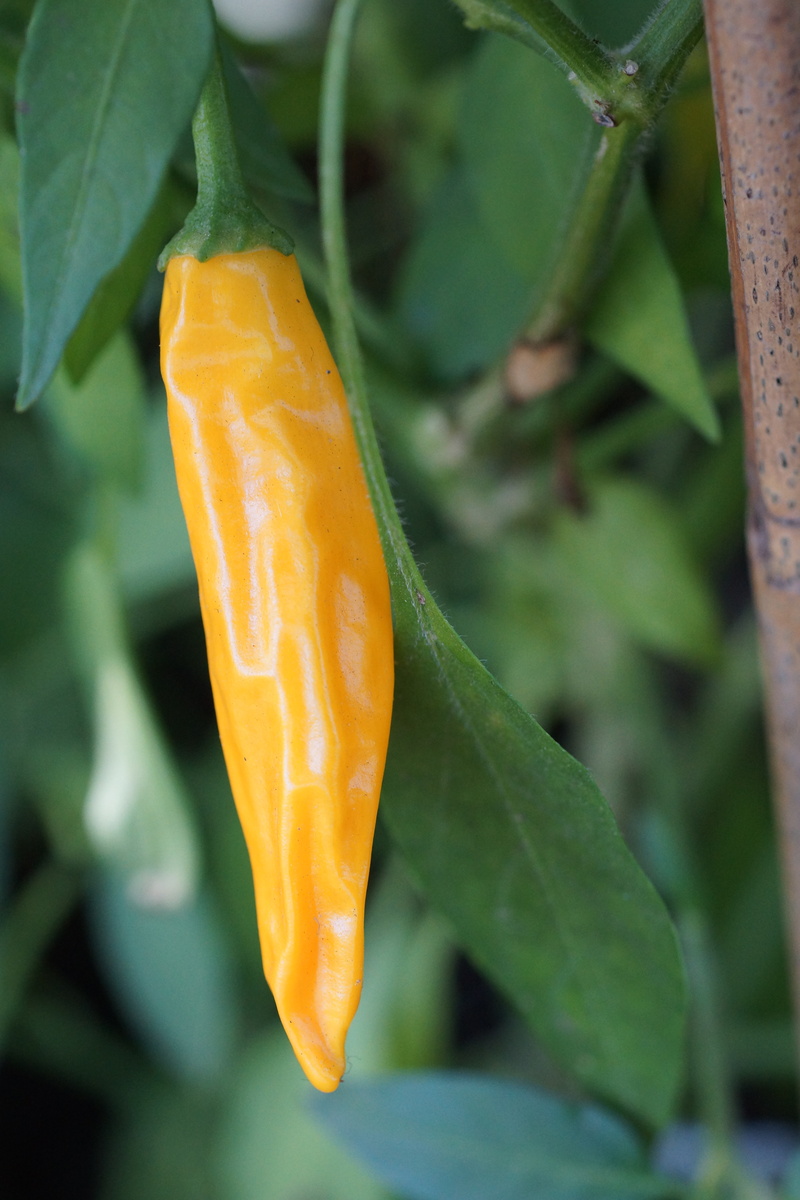
costeno amarillo
C. annuum
Vendor: Nicky's Nursery
Orange, thin-walled, medium-hot, with a somewhat floral flavor. The thin walls make it nice for drying but not great for using fresh.
C. annuum
Vendor: Nicky's Nursery
Orange, thin-walled, medium-hot, with a somewhat floral flavor. The thin walls make it nice for drying but not great for using fresh.
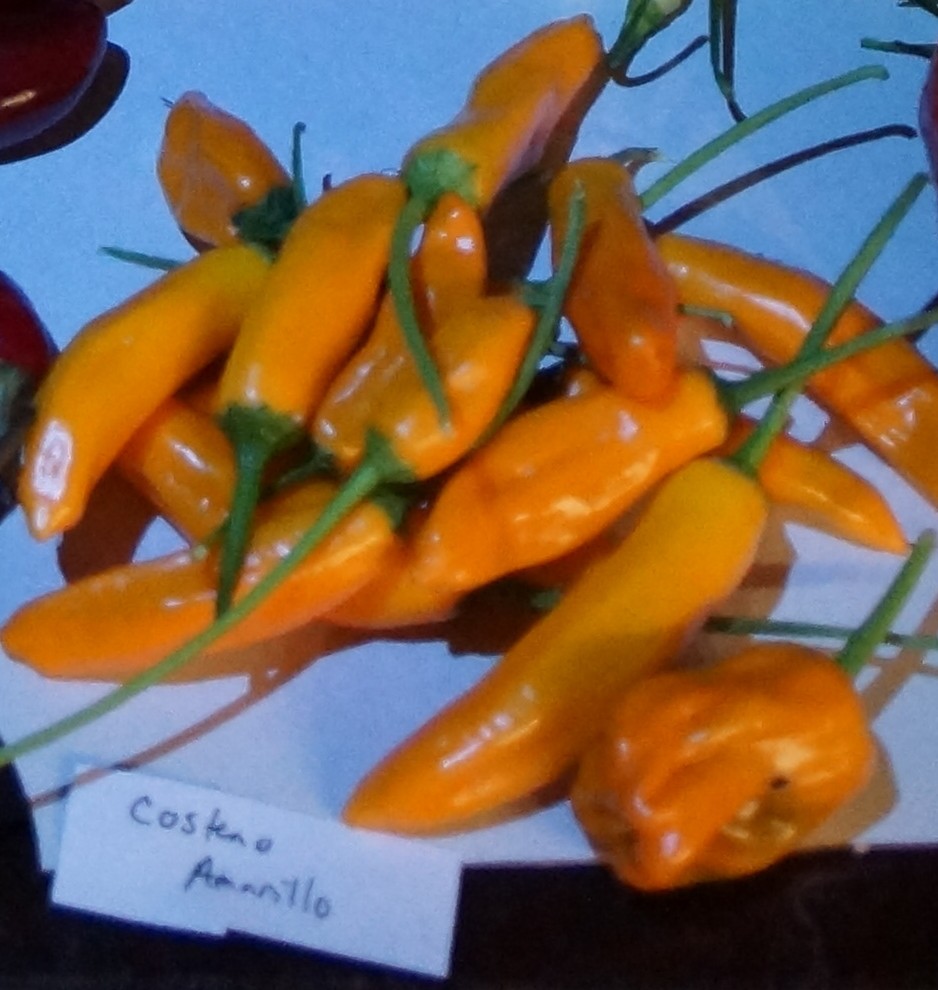
costeno amarillo
C. annuum
C. annuum
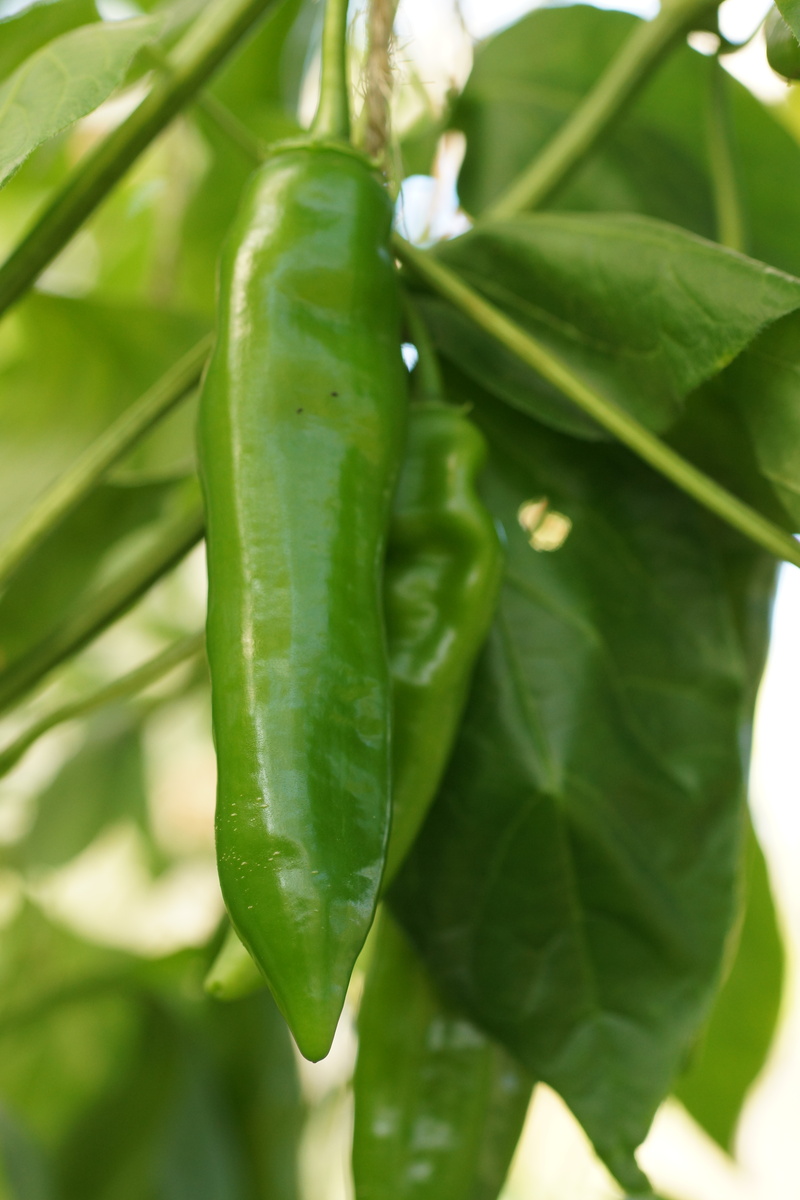
aji yellow
C. baccatum
Vendor: Nicky's Nursery
Very slow to ripen. Pods seemed to be maturing to a true yellow rather than orange (unlike the other Aji Amarillos), but an early frost destroyed the crop and I haven't been able to get more.
C. baccatum
Vendor: Nicky's Nursery
Very slow to ripen. Pods seemed to be maturing to a true yellow rather than orange (unlike the other Aji Amarillos), but an early frost destroyed the crop and I haven't been able to get more.
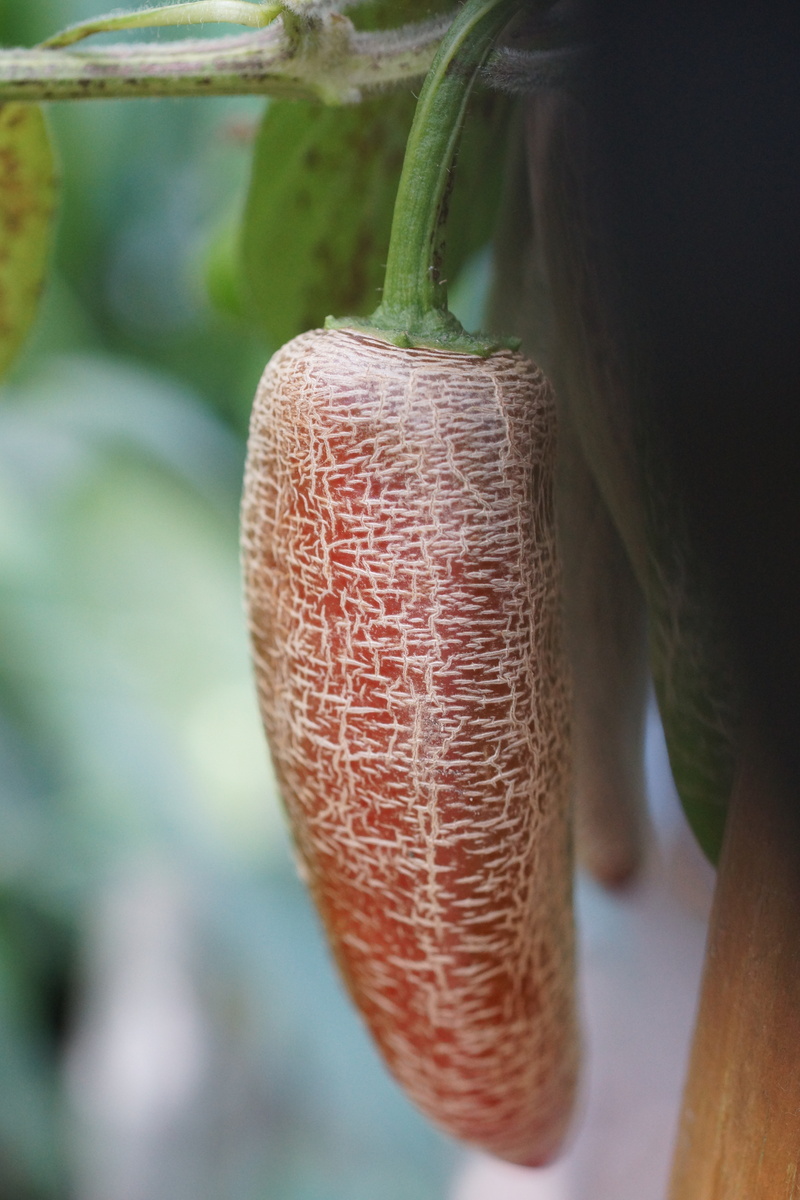
jalapeno farmer's market
C. annuum
Vendor: Peperzaden.nl
As advertised: a jalapeno with a very strong tendency to develop a corky skin. The flavor is similar to other jalapenos, with the corky parts having little flavor at all, thus overall it is not as good as other jalapenos.
C. annuum
Vendor: Peperzaden.nl
As advertised: a jalapeno with a very strong tendency to develop a corky skin. The flavor is similar to other jalapenos, with the corky parts having little flavor at all, thus overall it is not as good as other jalapenos.
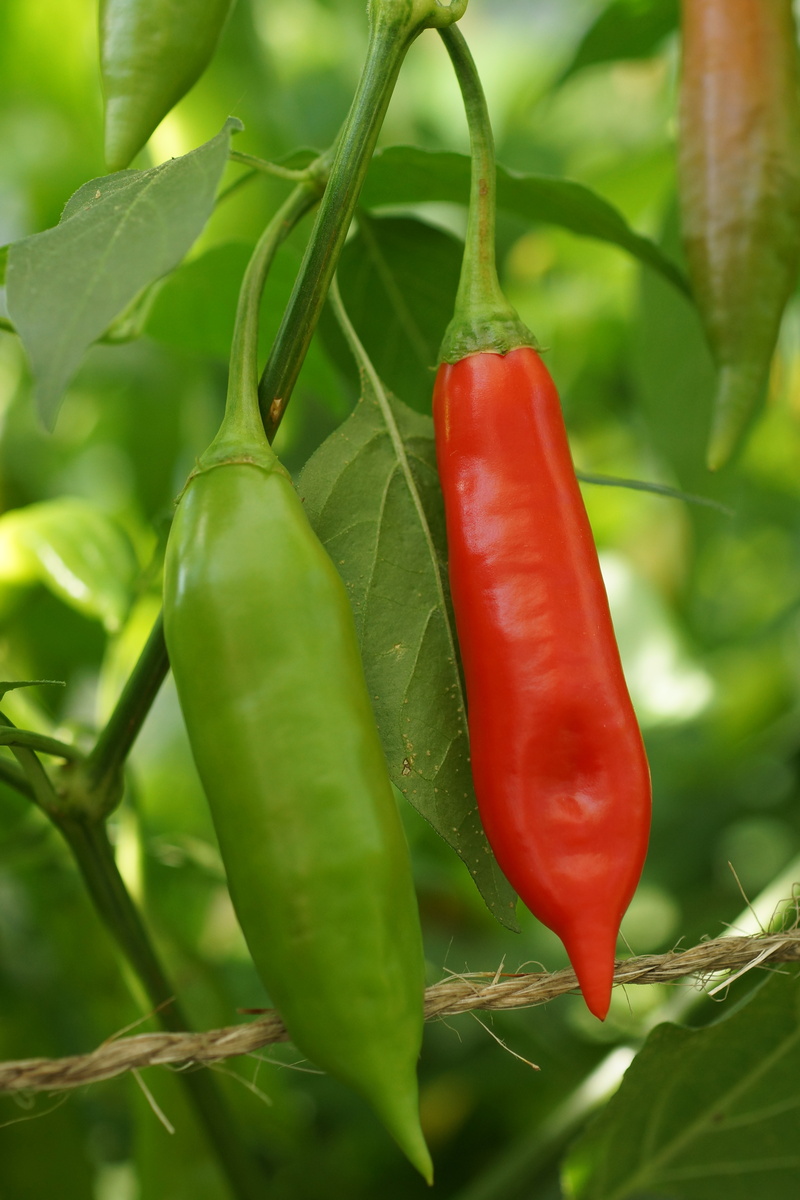
aji colorado
C. baccatum
Vendor: Reimer
The original peppers were 7-10cm long, ripening from green to red, with medium heat and a nice fruity baccatum flavor with a rich undertone reminescent of smoke or barbecue sauce. I've been growing this variety for almost 20 years and have been selecting for larger peppers, so they are now usually 10-12cm. Most of them are uniformly torpedo-shaped (like the unripe one on the left); flat/wide spots as seen on the right are fairly rare. Heat 3/10.
C. baccatum
Vendor: Reimer
The original peppers were 7-10cm long, ripening from green to red, with medium heat and a nice fruity baccatum flavor with a rich undertone reminescent of smoke or barbecue sauce. I've been growing this variety for almost 20 years and have been selecting for larger peppers, so they are now usually 10-12cm. Most of them are uniformly torpedo-shaped (like the unripe one on the left); flat/wide spots as seen on the right are fairly rare. Heat 3/10.
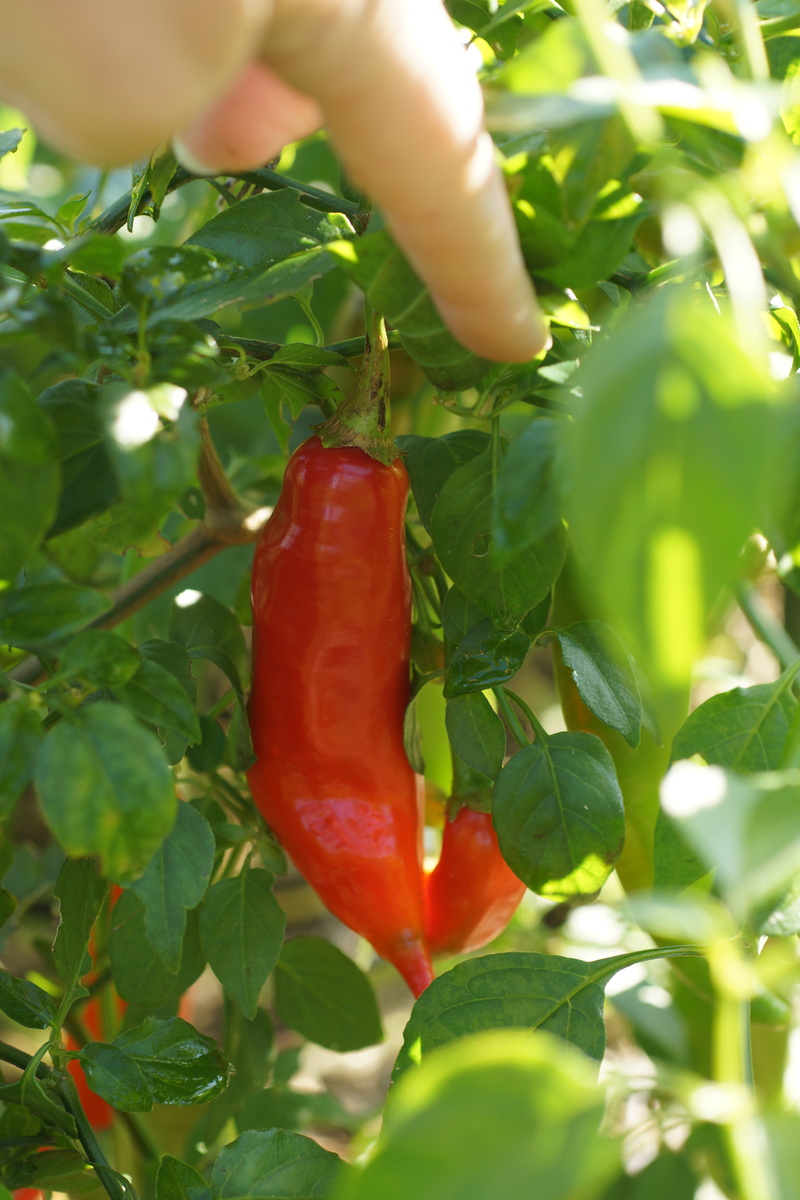
aji colorado
C. baccatum
C. baccatum
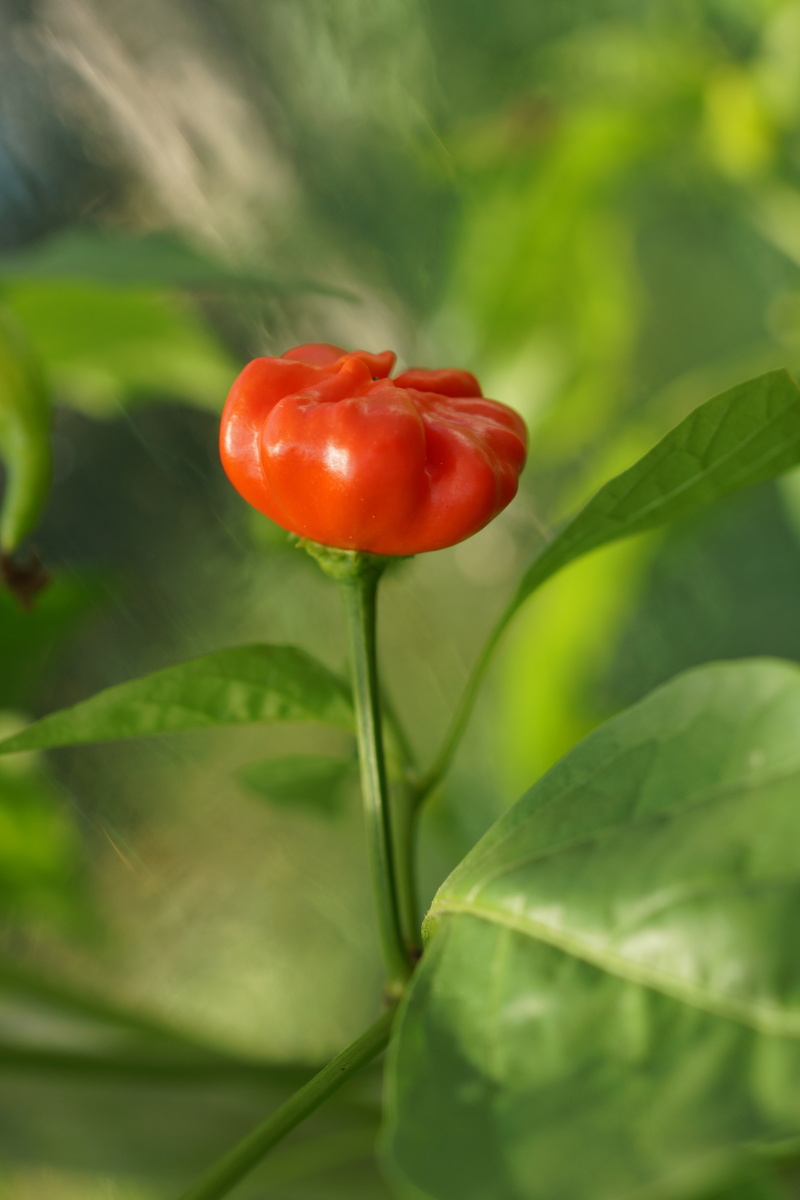
starfish
C. baccatum
Vendor: Fatalii
Funky little starfish-shaped peppers. The flavor is similar to other baccatums, with medium heat, but the peppers are rather small (2-3cm diameter).
C. baccatum
Vendor: Fatalii
Funky little starfish-shaped peppers. The flavor is similar to other baccatums, with medium heat, but the peppers are rather small (2-3cm diameter).
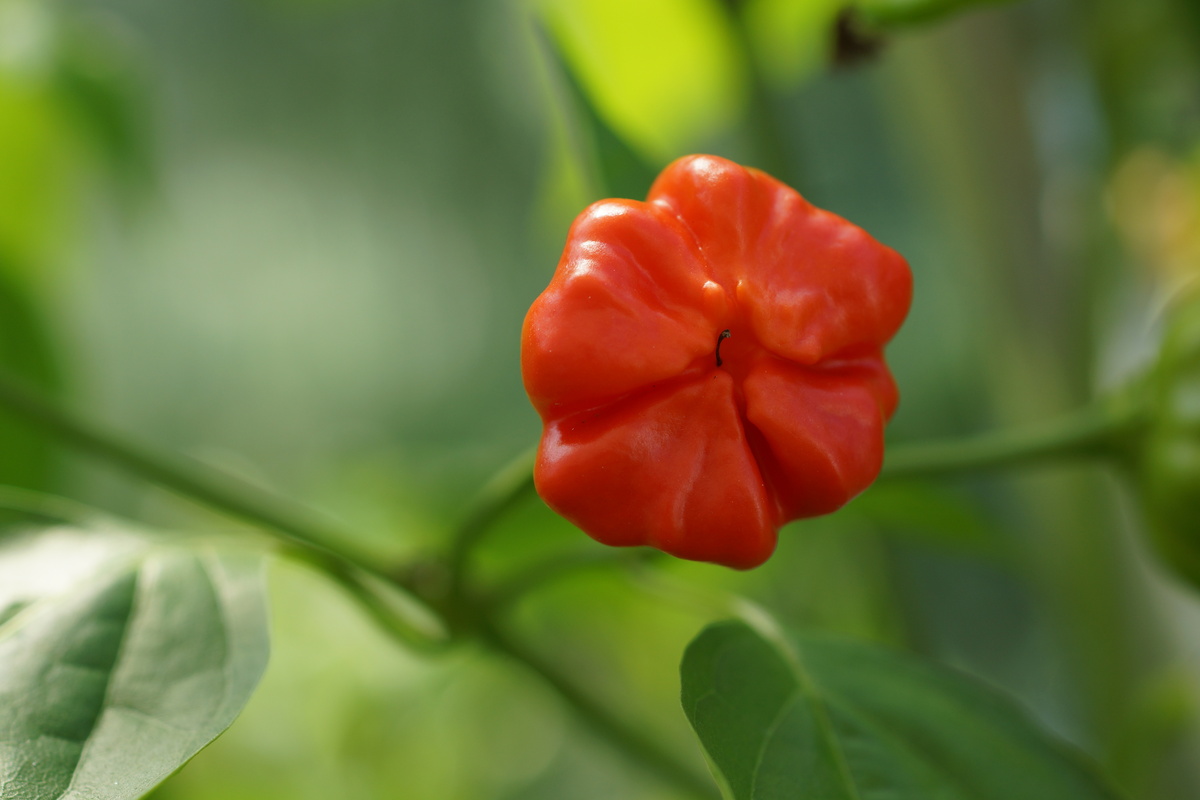
starfish
C. baccatum
C. baccatum
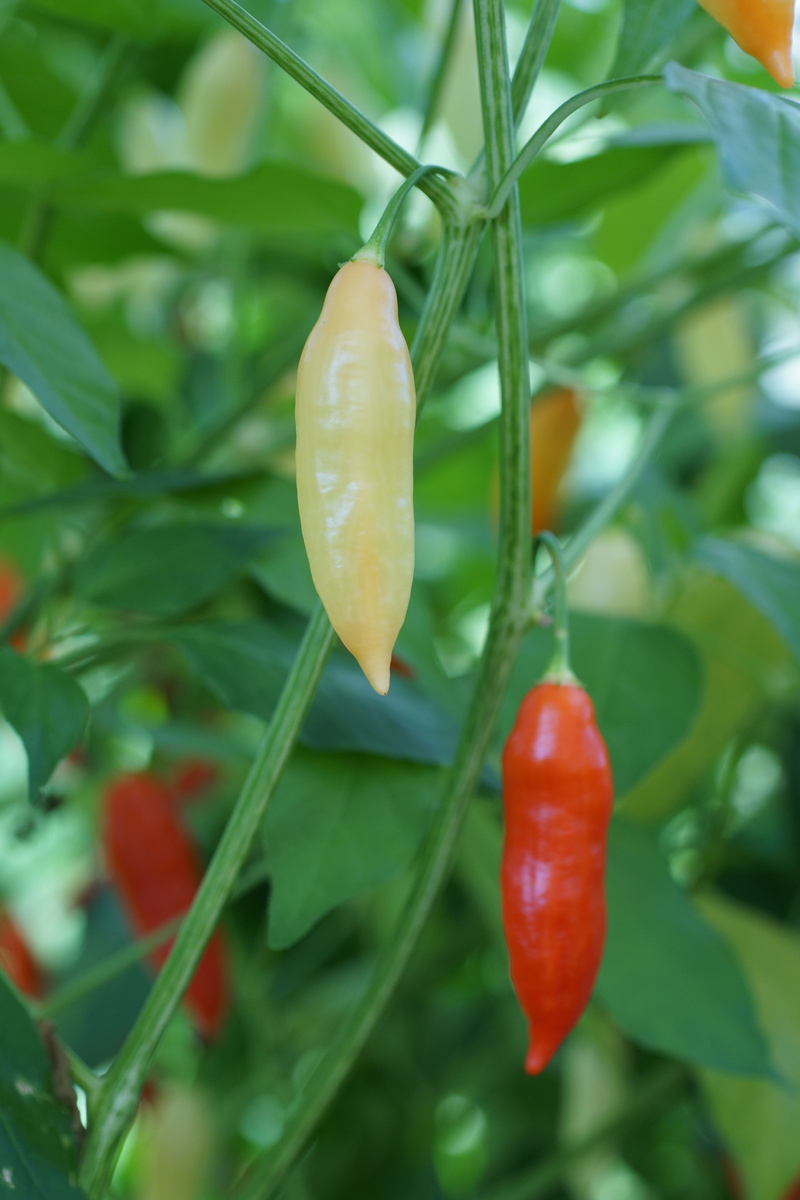
aji amarilloTK
C. baccatum
Vendor: Tuinkabouter
The website makes it very clear that these are open pollinated plants, and it is clear that these are not an aji amarillo. They go from green, to white, to purple, to red... but yellow isn't in the palette. They are quite pretty, and are probably either crossed with an aji omnicolor or simply are an aji omnicolor (with some mix-up in the seed-packaging process).
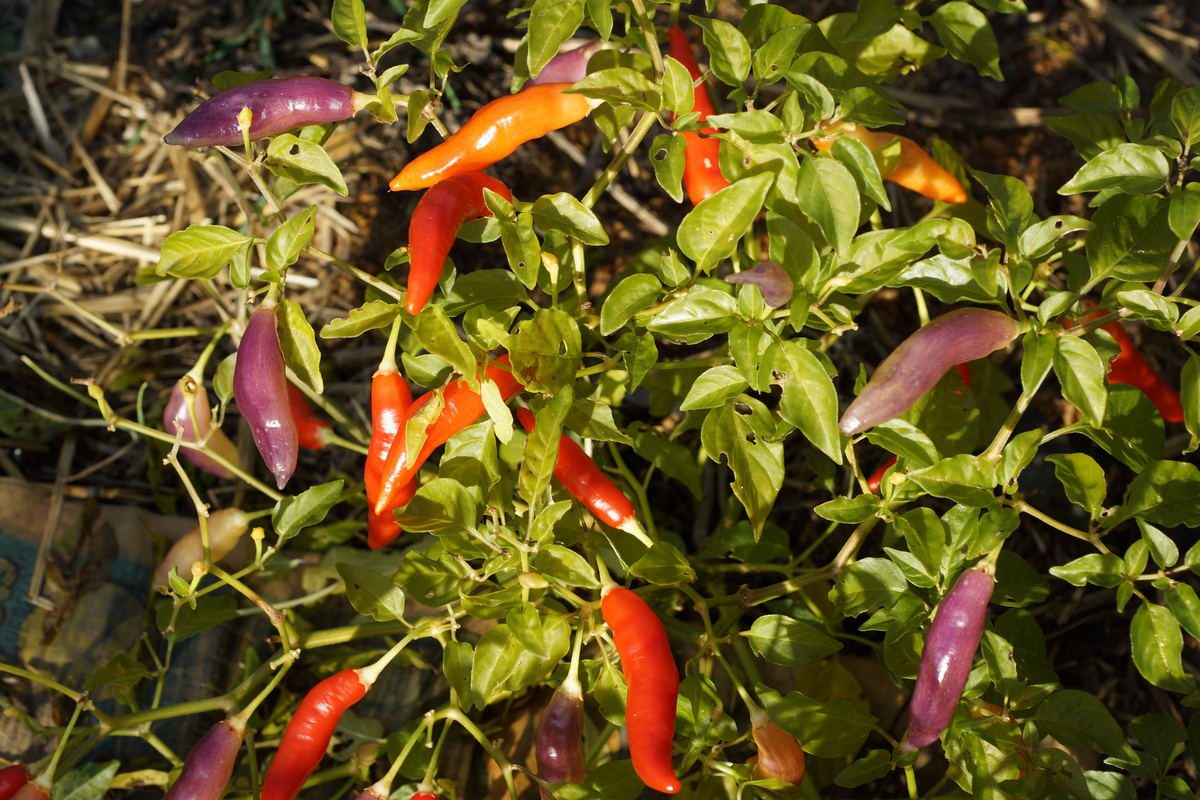
aji amarilloTK
C. baccatum
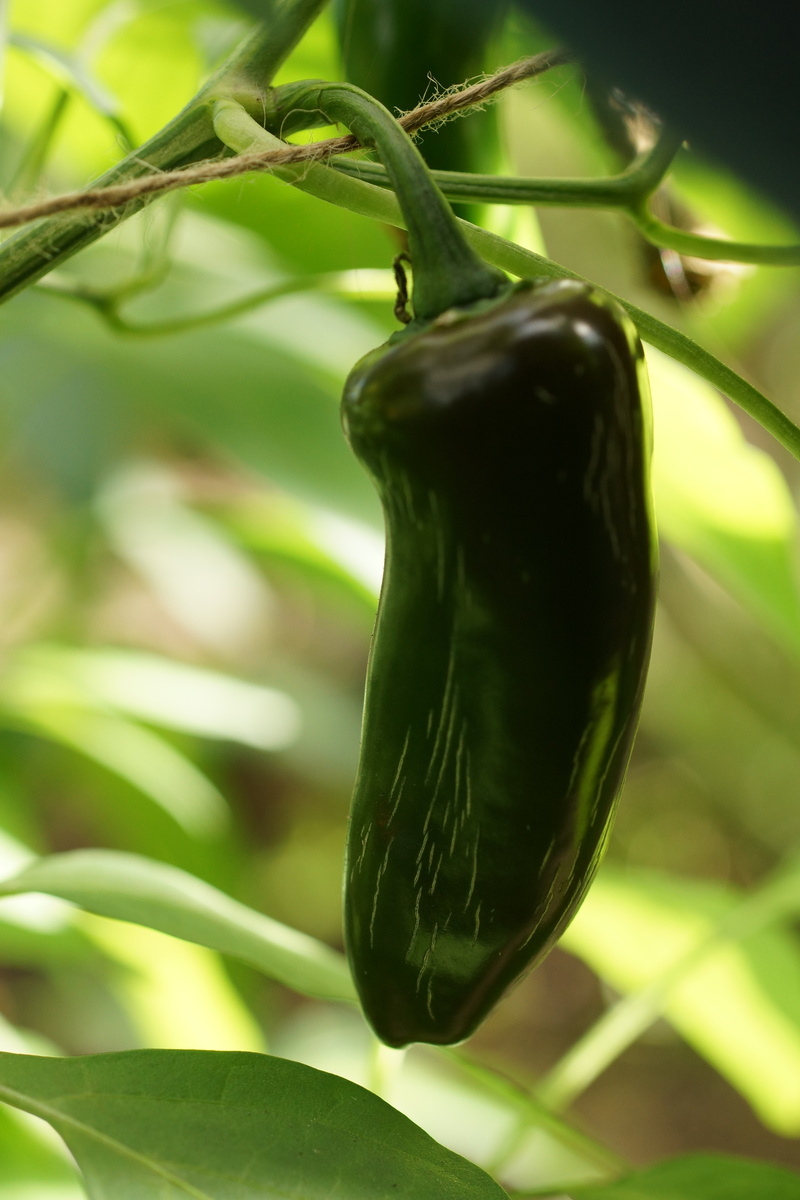
jalapeno early
C. annuum
Vendor: Peperzaden.nl
A nice jalapeno, similar to other jalapenos. Heat in this climate is mild: 2/10.
C. annuum
Vendor: Peperzaden.nl
A nice jalapeno, similar to other jalapenos. Heat in this climate is mild: 2/10.
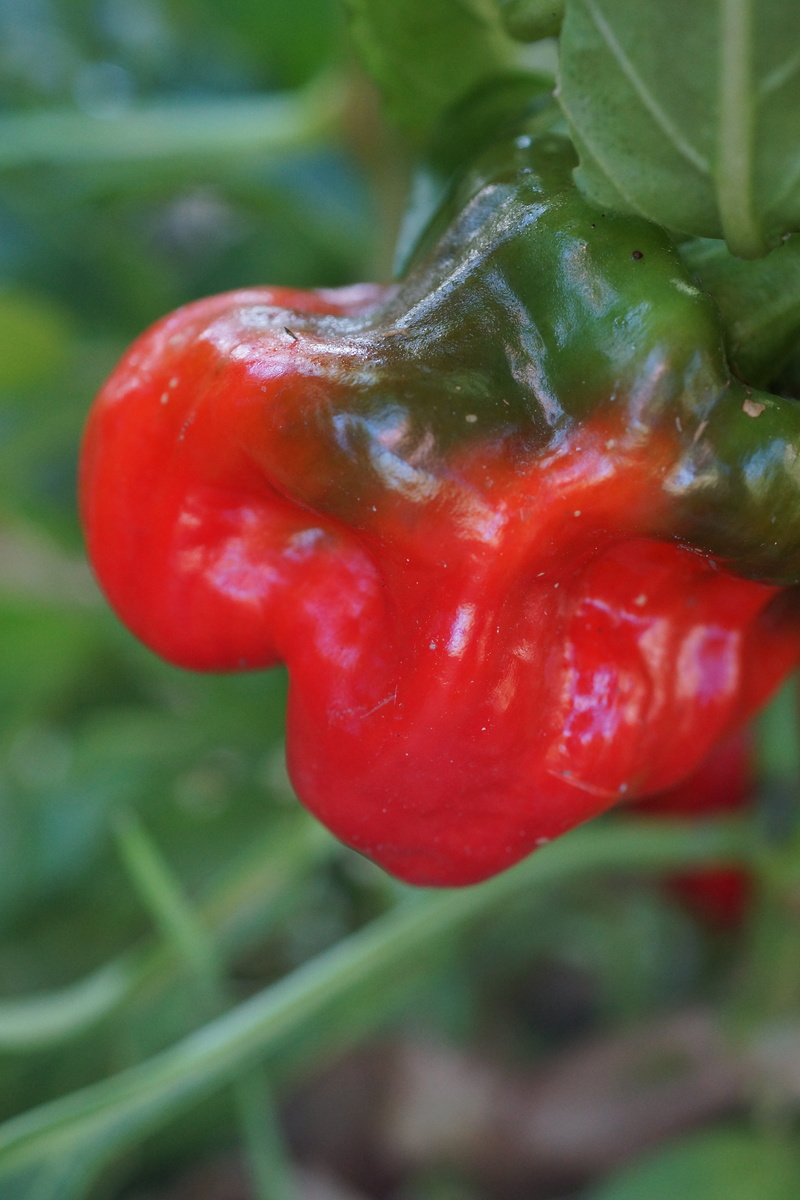
urfa biber
C. annuum
Vendor: Refining Fire
These peppers look like a slightly small, slightly flattened bell pepper, but they have a kick like a ploughhorse. After the initial punch, the heat tends to build and linger. They also have a very nice flavor, similar to that of the pasilla bajio. About 1/4 plants will produce really well; another 1/2 will produce a couple peppers, and 1/4 will remain stunted and sullen throughout the growing season.
C. annuum
Vendor: Refining Fire
These peppers look like a slightly small, slightly flattened bell pepper, but they have a kick like a ploughhorse. After the initial punch, the heat tends to build and linger. They also have a very nice flavor, similar to that of the pasilla bajio. About 1/4 plants will produce really well; another 1/2 will produce a couple peppers, and 1/4 will remain stunted and sullen throughout the growing season.

unnamed chili gifted from our Turkish neighbors
C. annuum
This chili was a gift from our neighbors, who don't speak English, and only speak a little Dutch, but do speak chili. I understand that these chilis are meant to be eaten green and are often grilled on the barbecue.
C. annuum
This chili was a gift from our neighbors, who don't speak English, and only speak a little Dutch, but do speak chili. I understand that these chilis are meant to be eaten green and are often grilled on the barbecue.
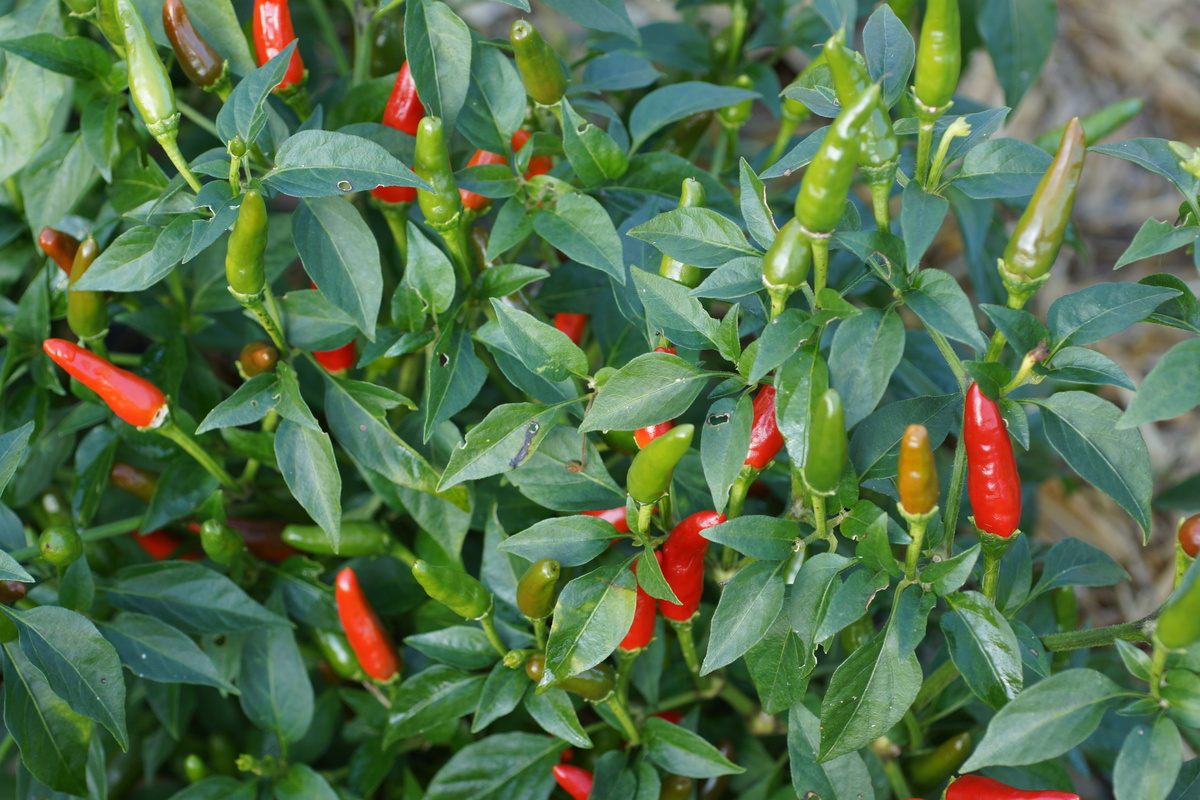
prik ki nu
C. frutescens? C. annuum?
These seeds grew plants with two distinct types of peppers; one with very small peppers (2-3cm) and one with larger peppers (5-7cm). The species was also not clear (to me, anyway). They were quite hot but without any distinctive flavor; I suspect these were actually a cross with something else.
C. frutescens? C. annuum?
These seeds grew plants with two distinct types of peppers; one with very small peppers (2-3cm) and one with larger peppers (5-7cm). The species was also not clear (to me, anyway). They were quite hot but without any distinctive flavor; I suspect these were actually a cross with something else.
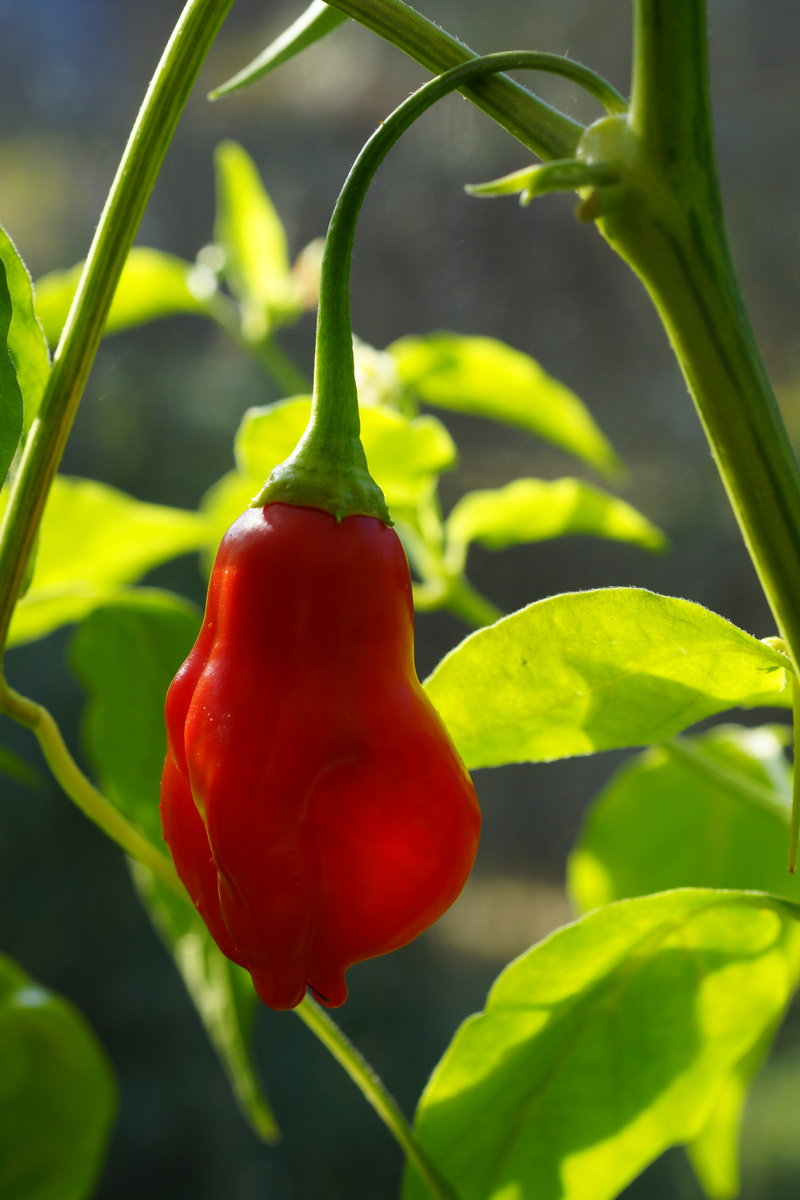
dulce dolor
C. baccatum
Vendor: Fatalii
These started out as 5cm long, wide, medium-hot chilis with a nice flavor, similar to aji colorado but with a fresher tone. Then some larger ones showed up. Then a long, wrinkled one that was a bit hotter. Then some orange ones. All of them have a similar flavor and are quite nice, but I am hoping to convince the original phenotype to breed true.
C. baccatum
Vendor: Fatalii
These started out as 5cm long, wide, medium-hot chilis with a nice flavor, similar to aji colorado but with a fresher tone. Then some larger ones showed up. Then a long, wrinkled one that was a bit hotter. Then some orange ones. All of them have a similar flavor and are quite nice, but I am hoping to convince the original phenotype to breed true.
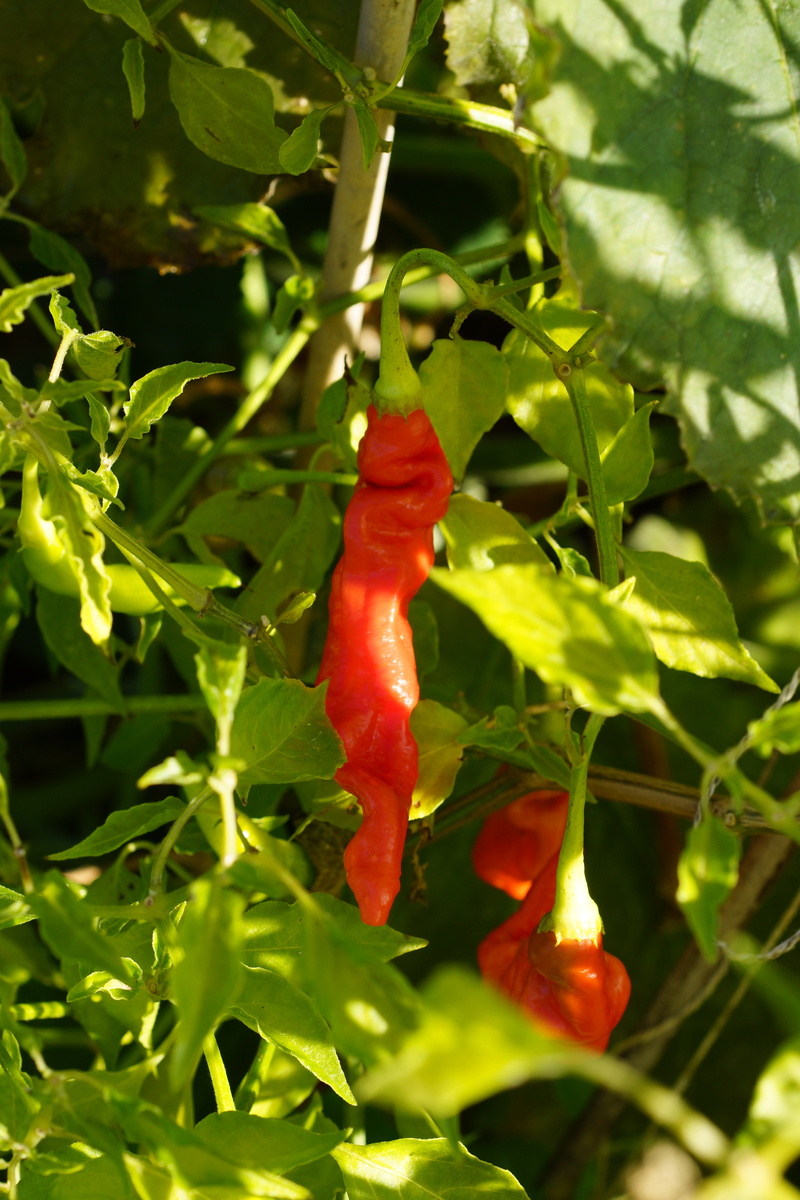
dulce dolor - long phenotype
C. baccatum
Vendor: Fatalii
C. baccatum
Vendor: Fatalii
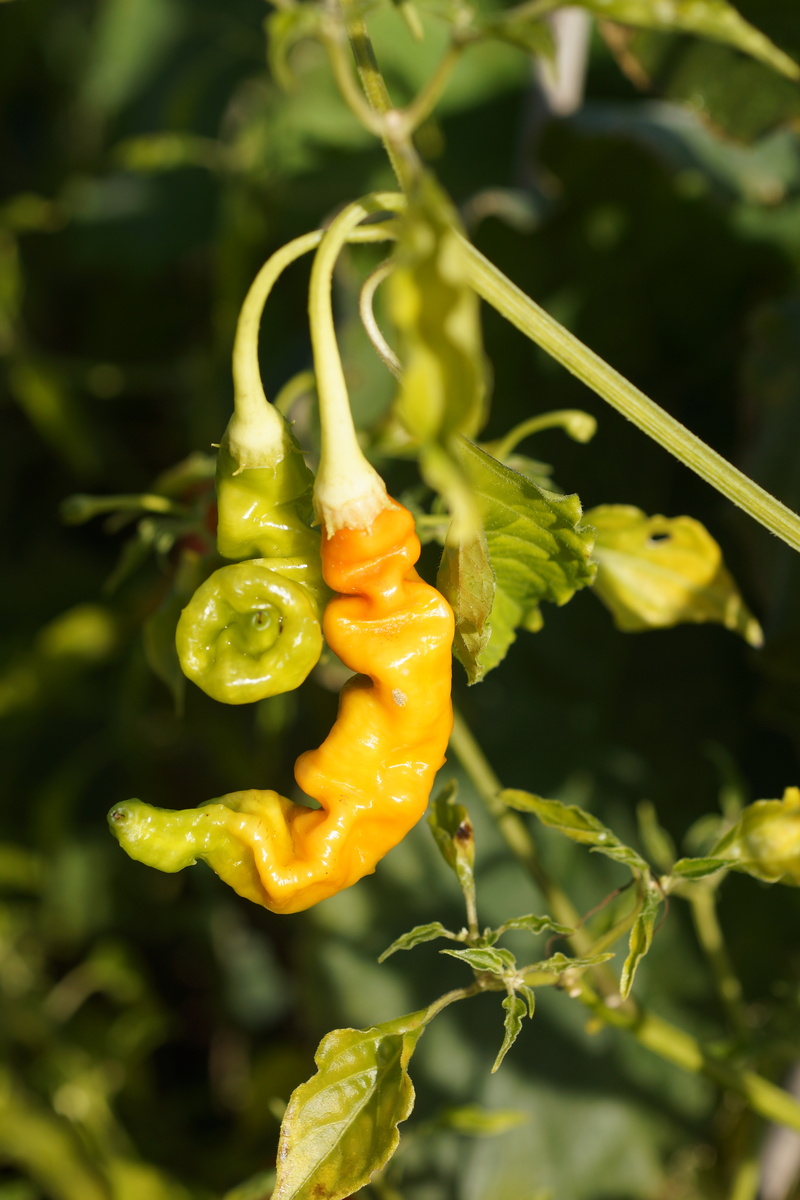
dulce dolor - long phenotype
C. baccatum
C. baccatum
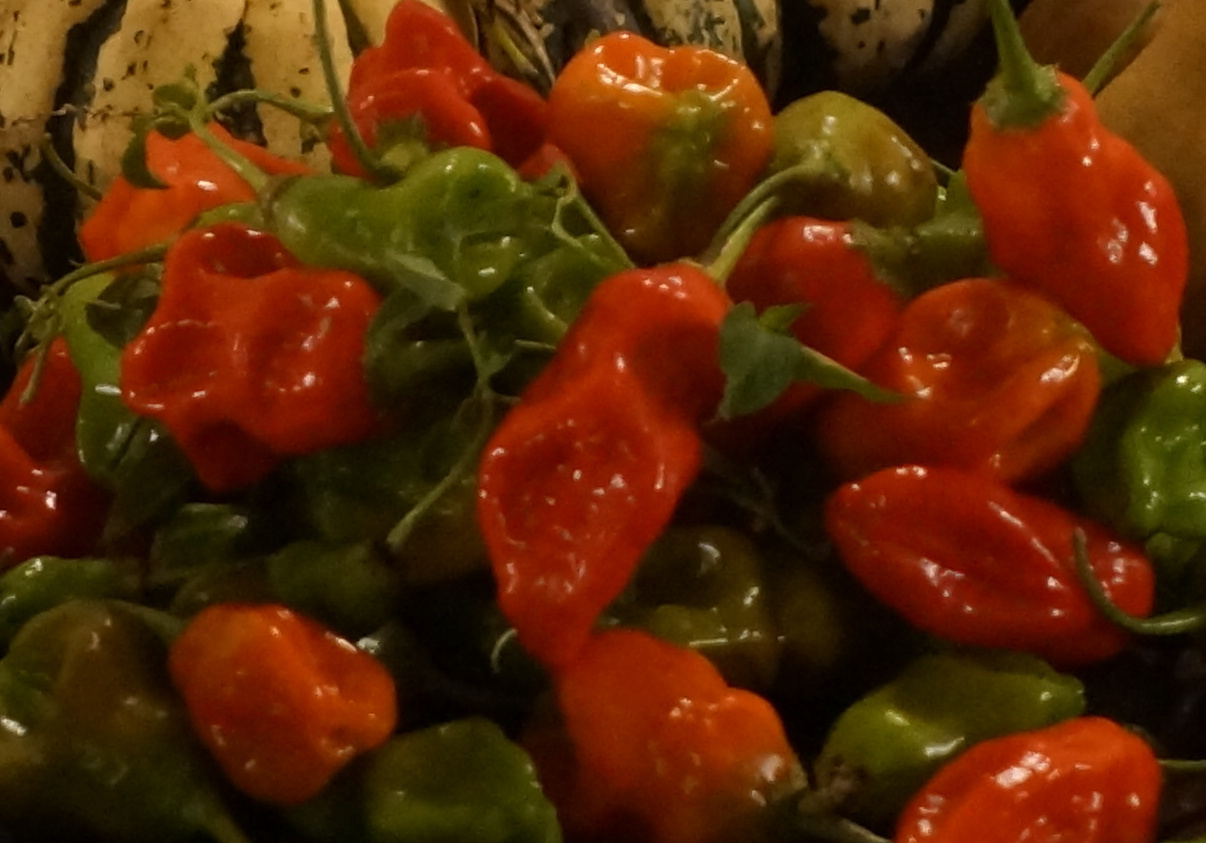
dulce dolor - classic phenotype
C. baccatum
C. baccatum
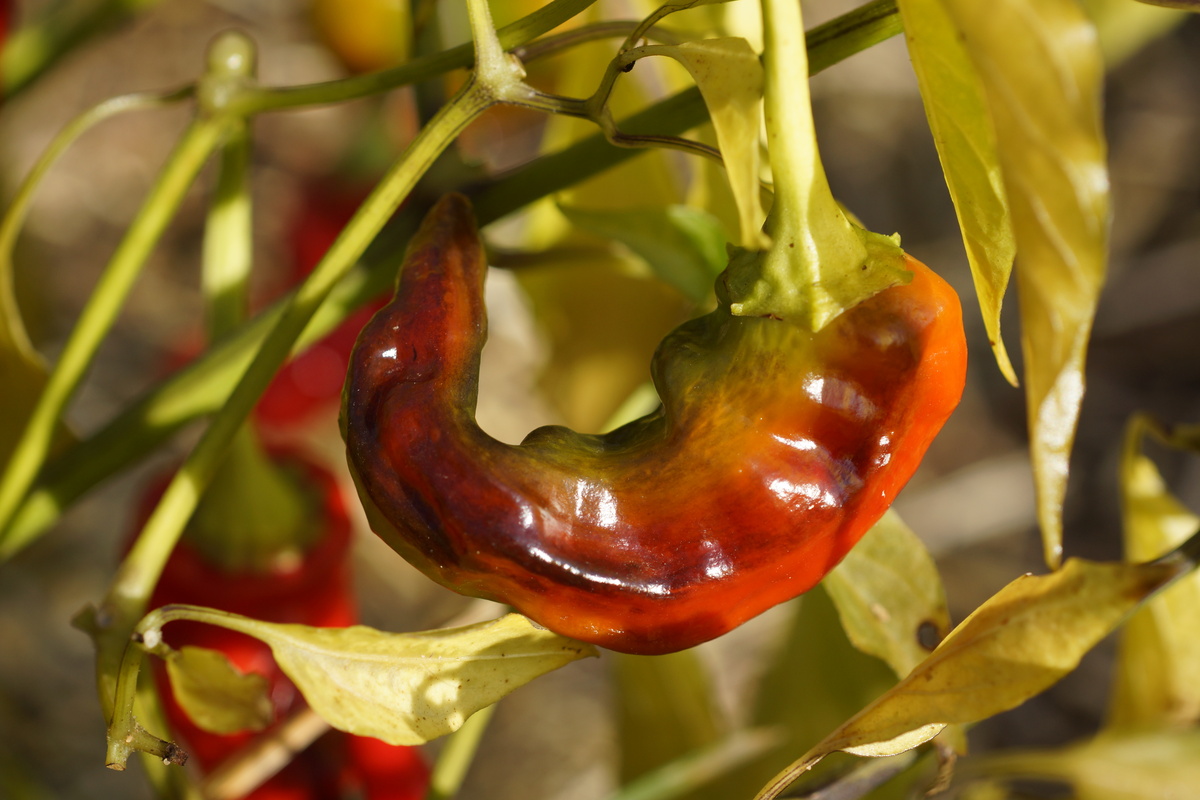
Devdas chili #3
C. annuum
These peppers never did well enough in this climate to learn much about them.
C. annuum
These peppers never did well enough in this climate to learn much about them.
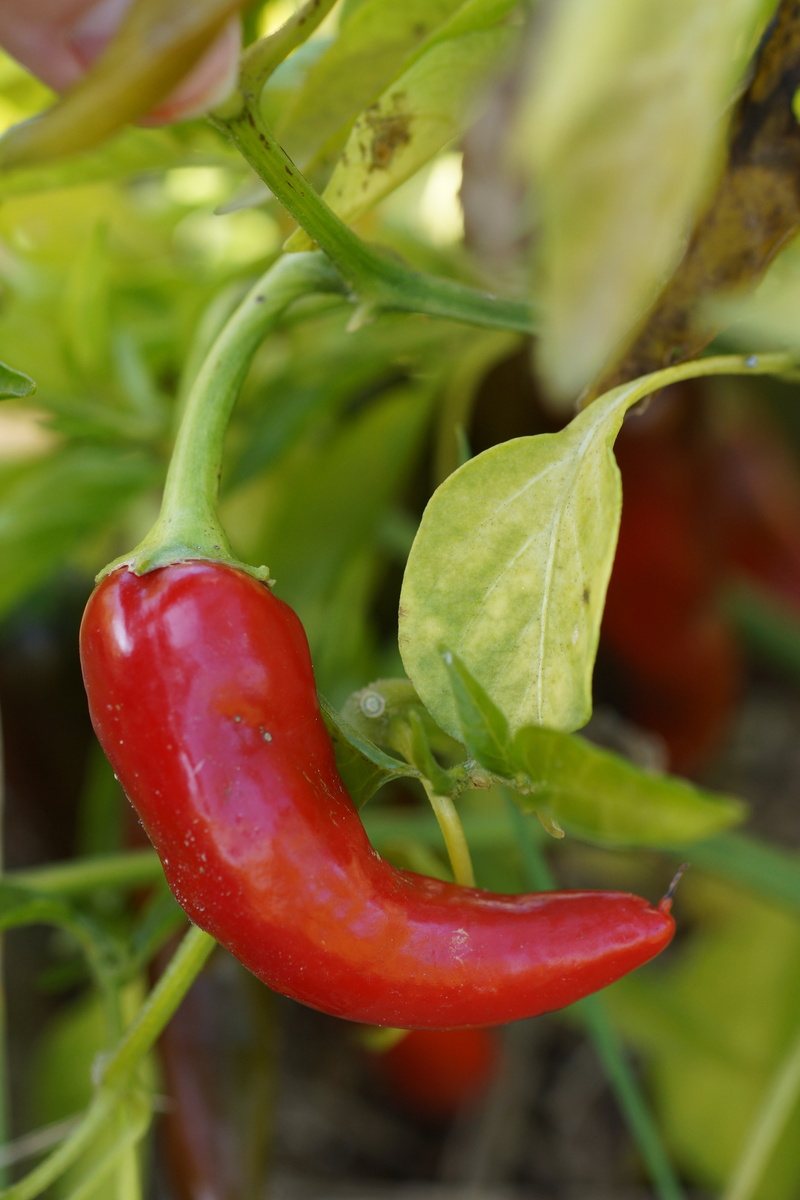
Chili descended from seeds saved from an Indian restaurant in France
Possibly a jwala pepper, possibly a
Possibly a jwala pepper, possibly a
Spanish redpepper (often called a cayenne in Europe, but much bigger and thicker-fleshed than a cayenne), whatever it is, it was too cold for it to grow happily in the Netherlands.
2017
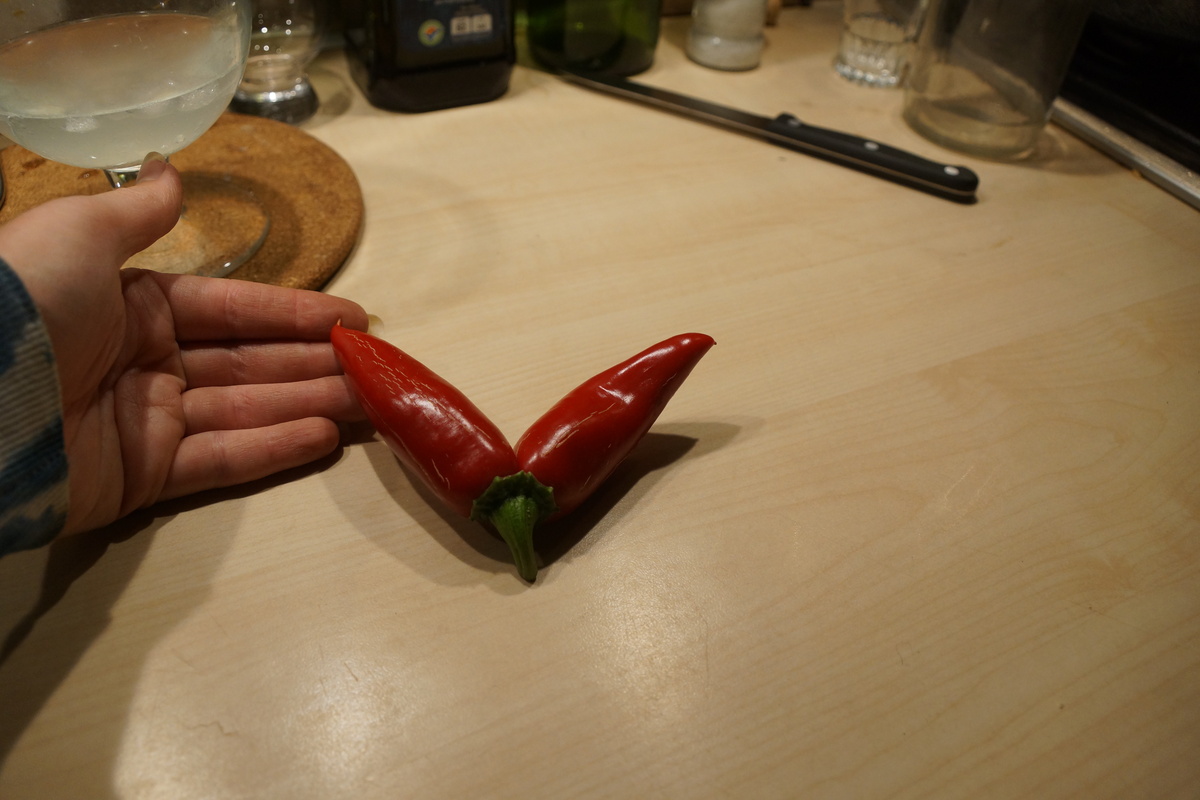
Jalapeno - twins!
C. annuum
C. annuum
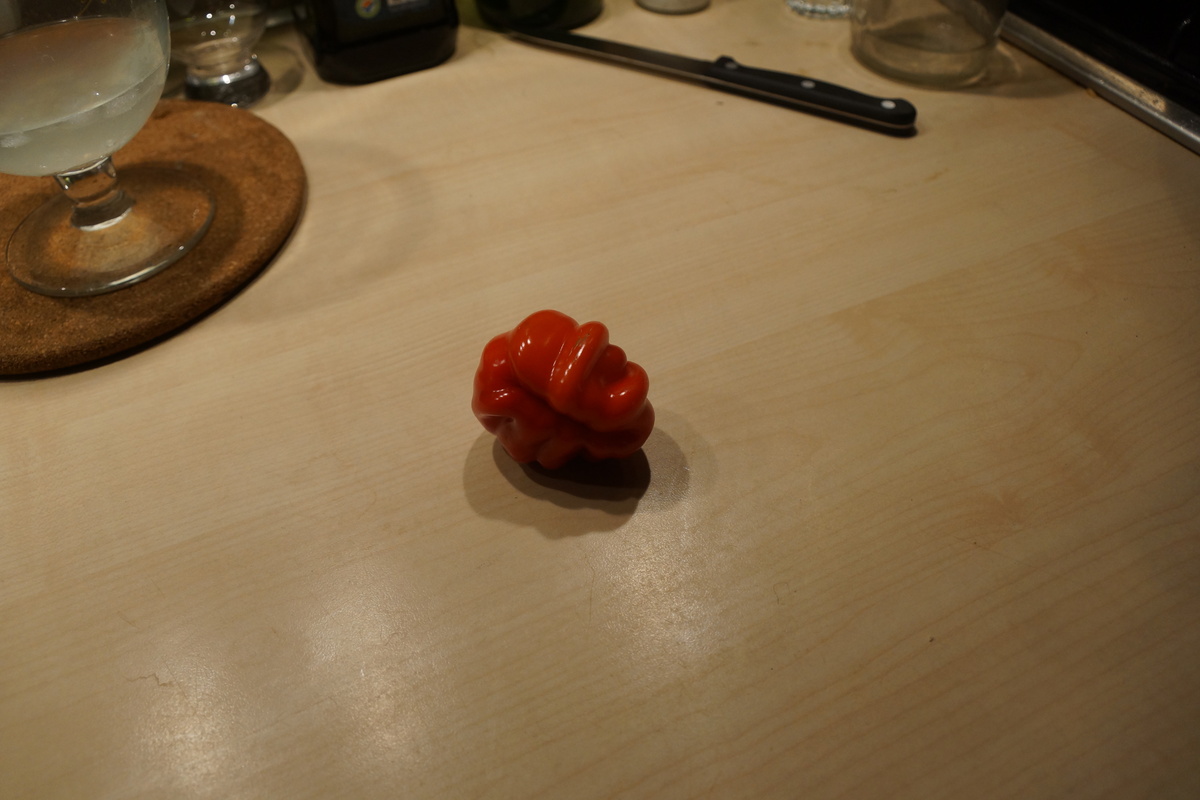
A mutant Jalepeno
C. annuum
C. annuum
2018
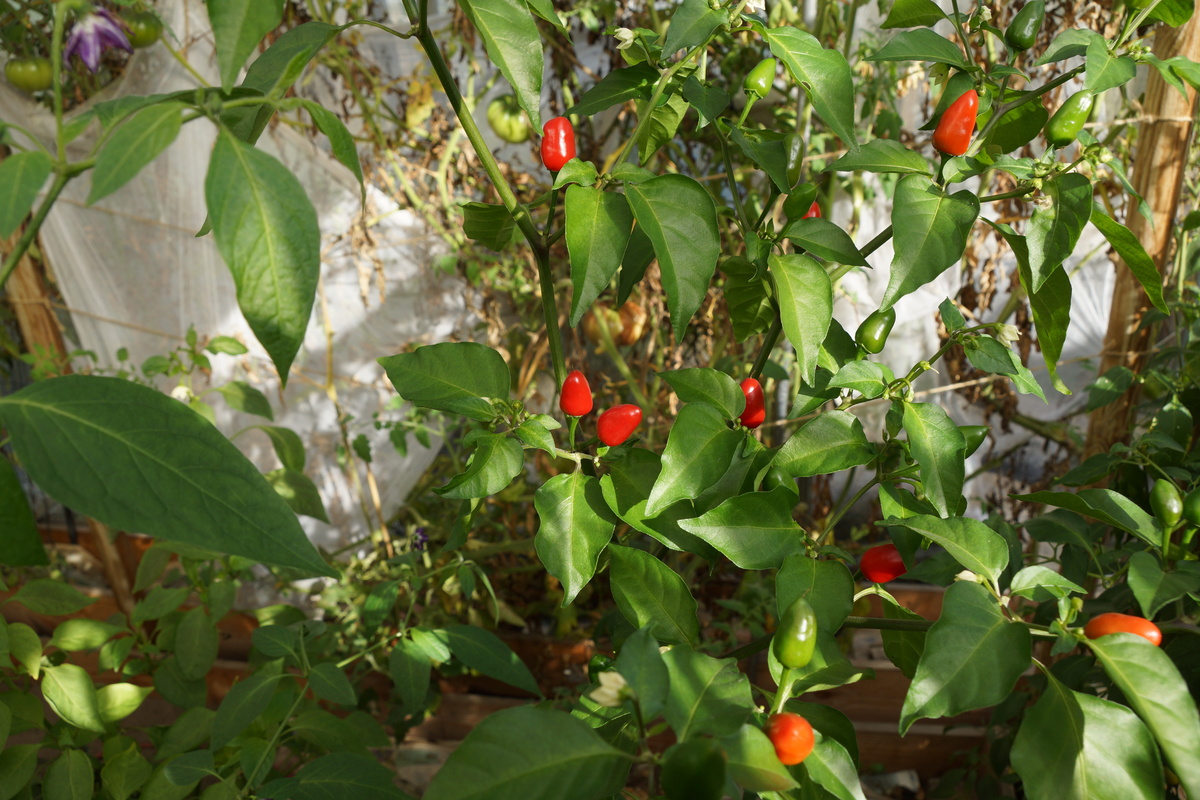
Devdas 2015 (dalle khursani)
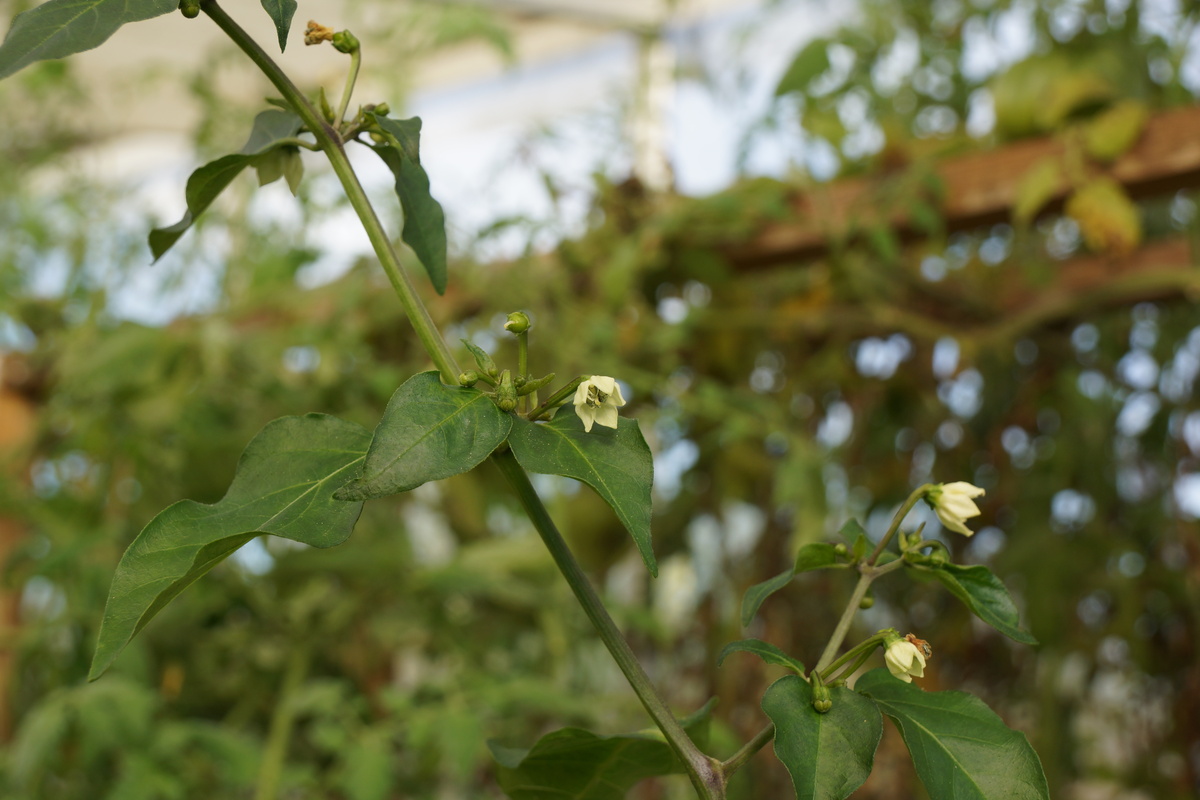
Devdas 2015 (dalle khursani)
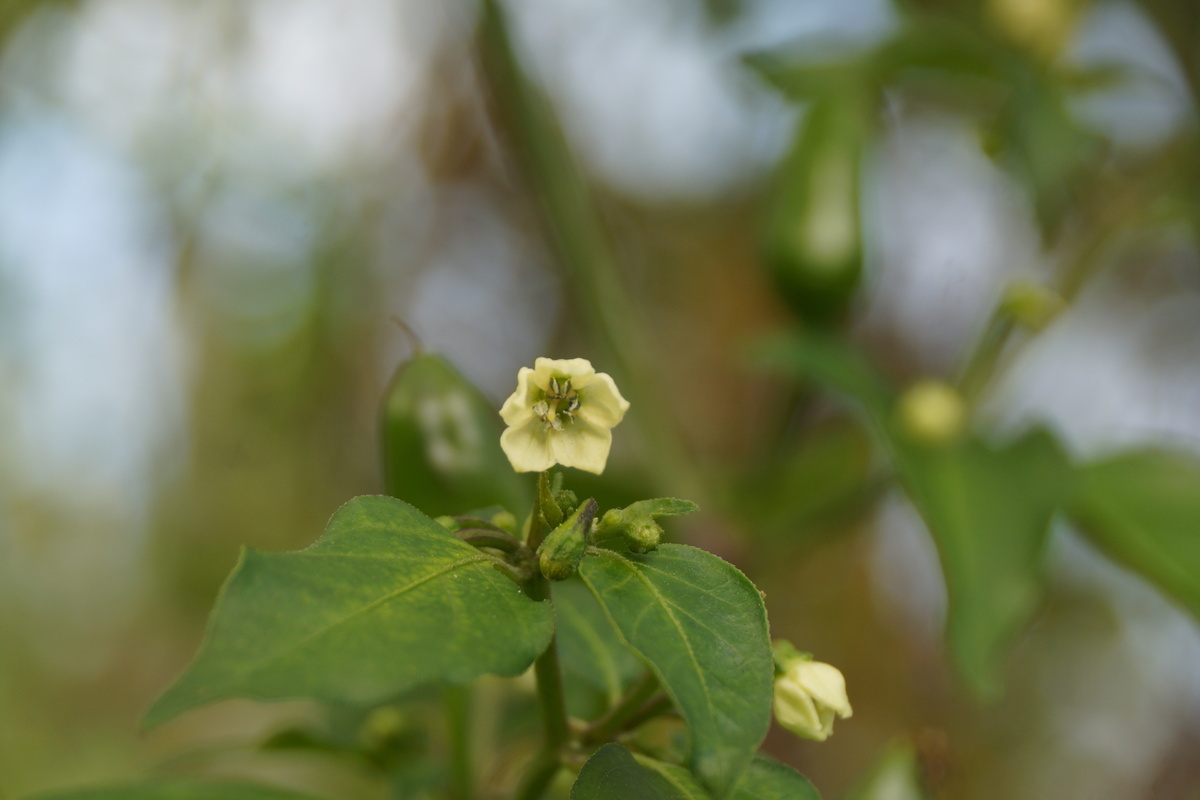
Devdas 2015 (dalle khursani)
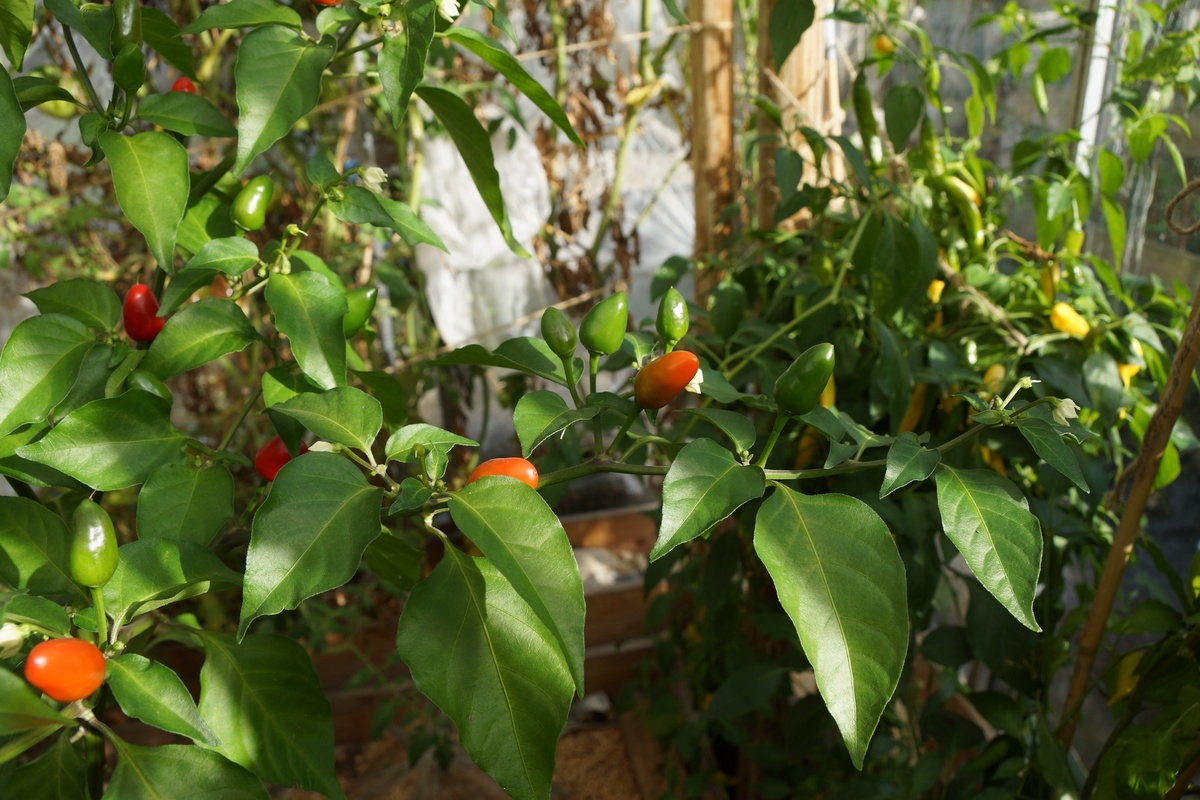
Devdas 2015 (dalle khursani)
2019
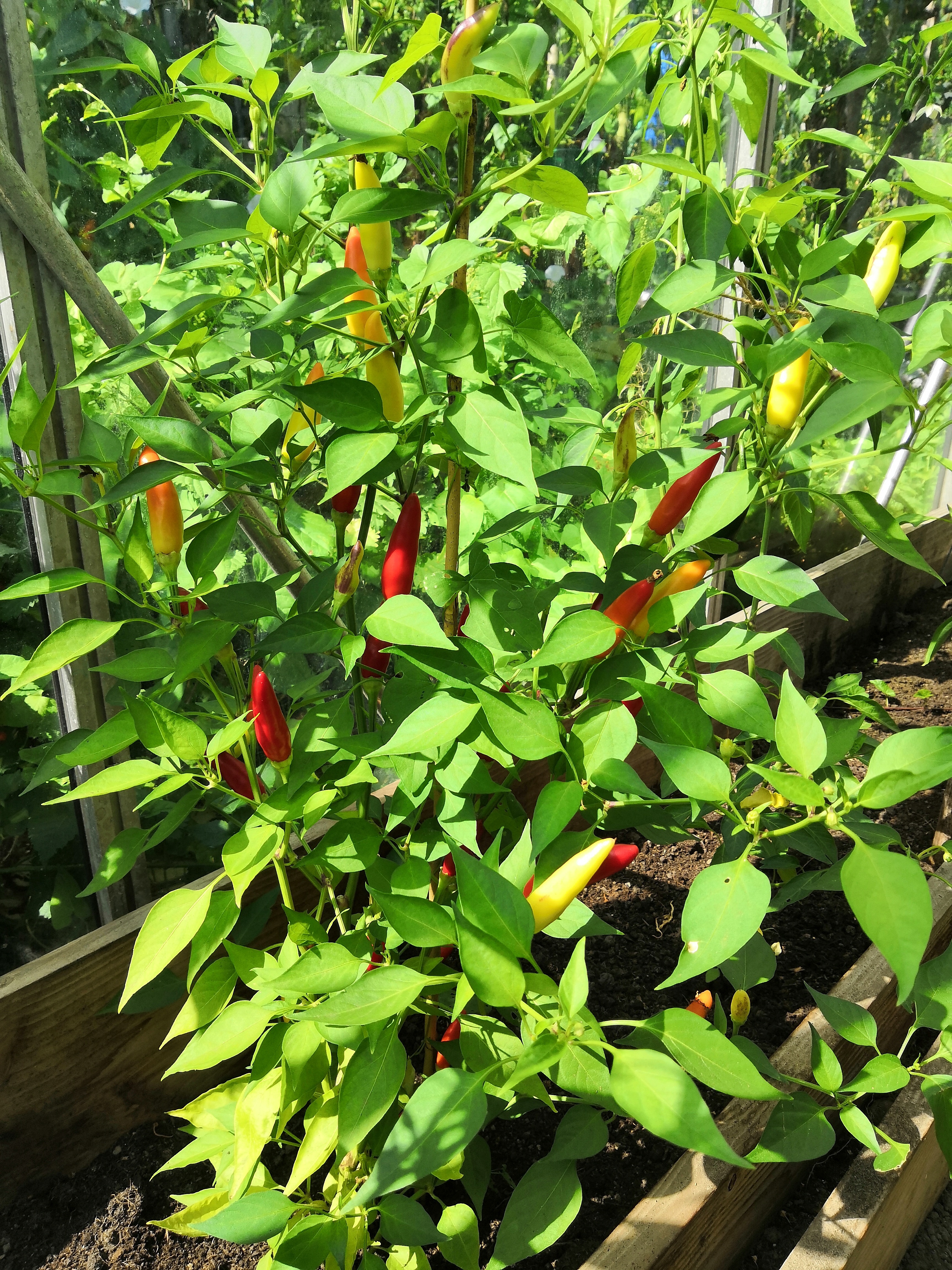
aji camba
C. baccatum
Vendor: Hippy Seed
This one didn't seem to have much going on behind the heat. Fairly hot and reasonably productive.
C. baccatum
Vendor: Hippy Seed
This one didn't seem to have much going on behind the heat. Fairly hot and reasonably productive.
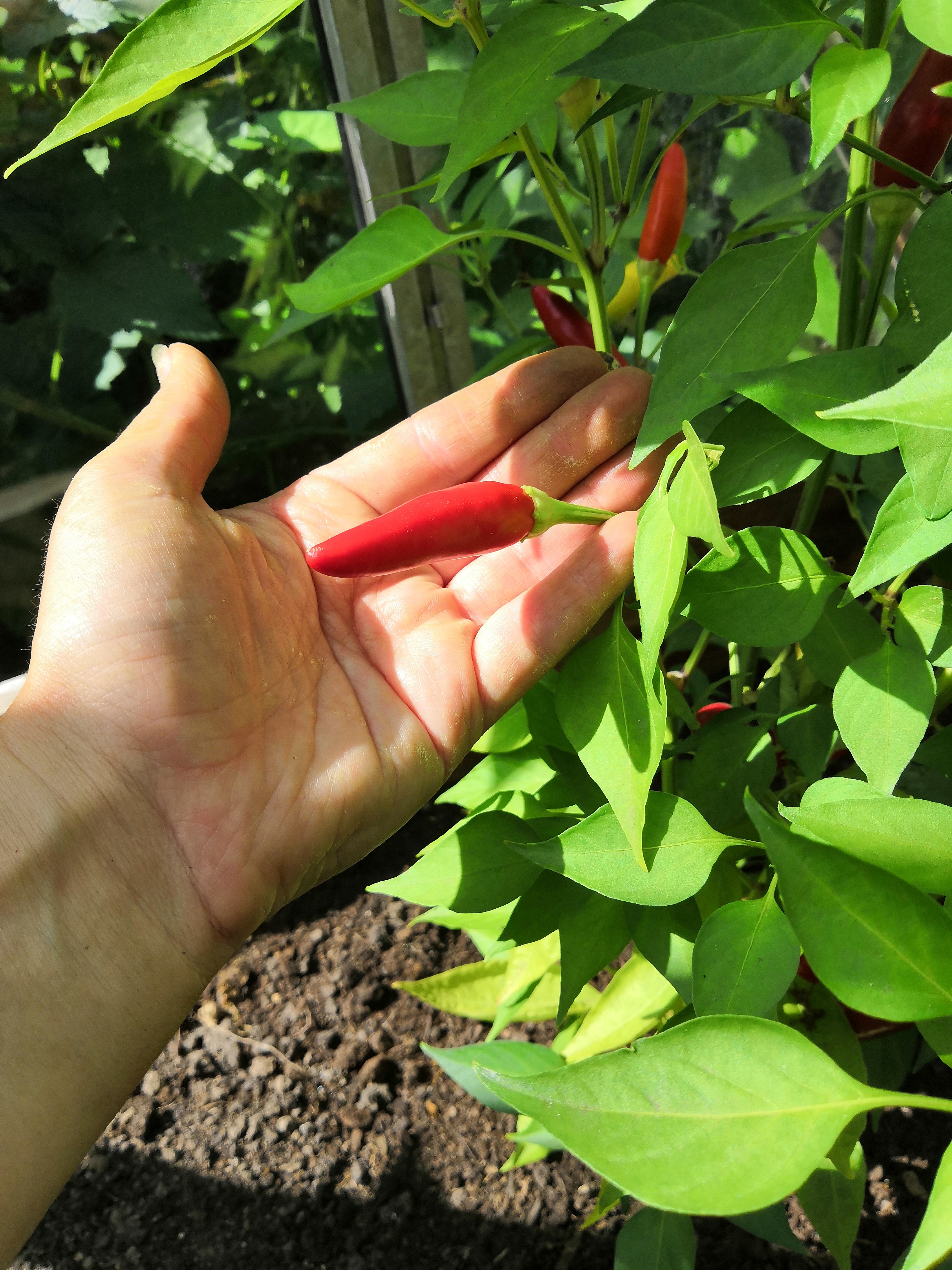
aji camba
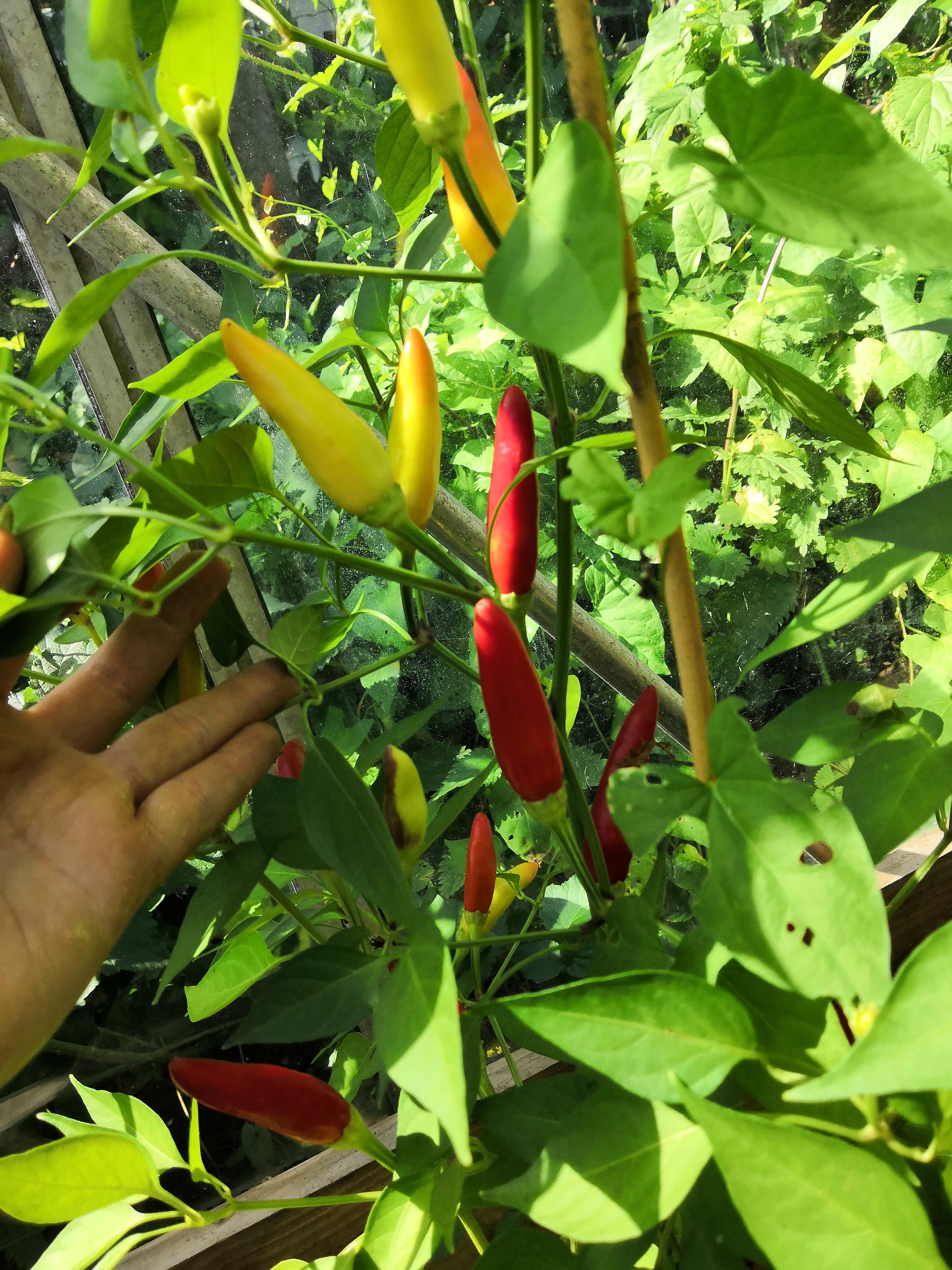
aji camba
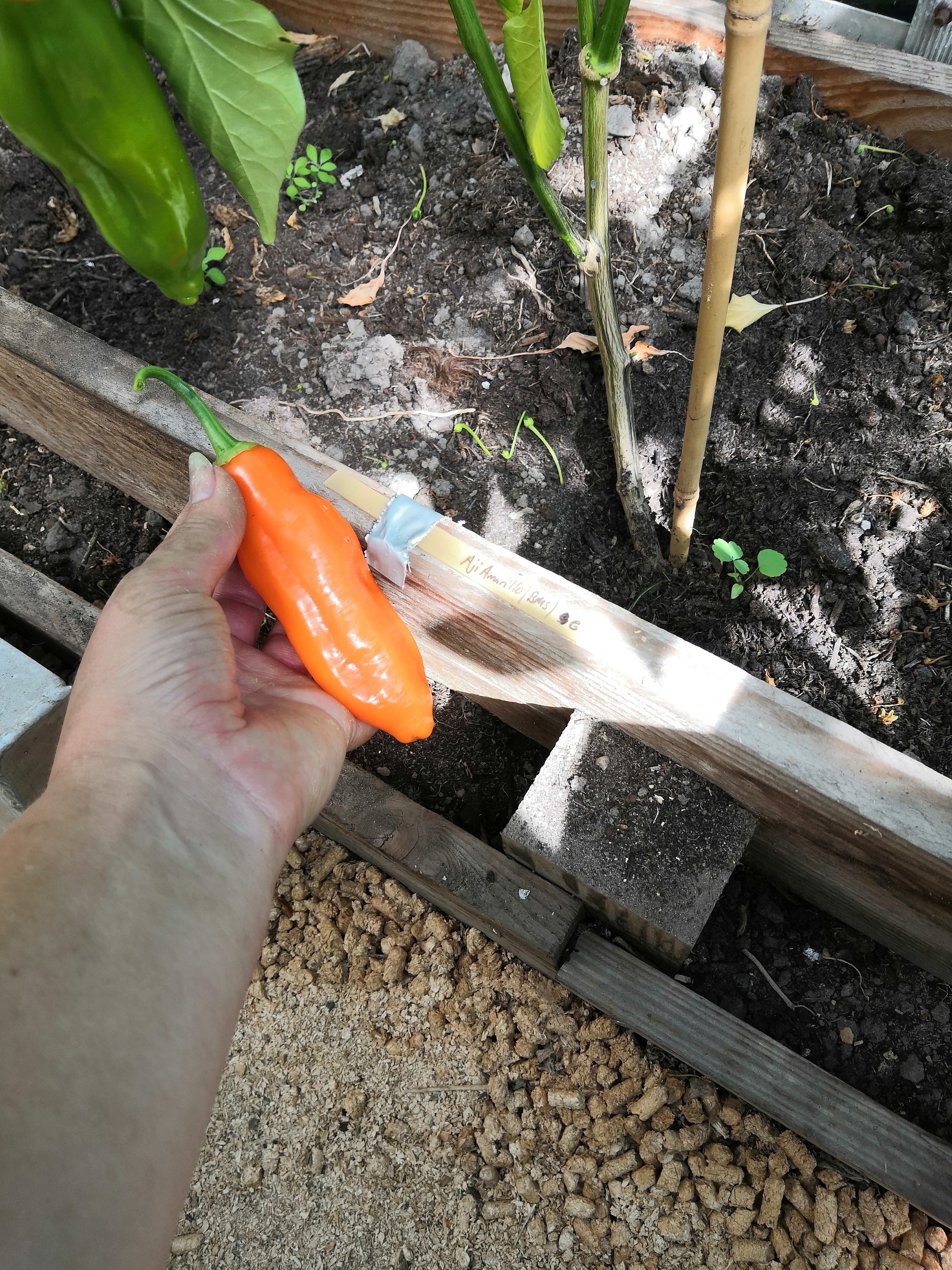
aji amarillo BMS
C. baccatum
Vendor: B More Spicy
Very productive plants, chilis have a good medium heat, thick flesh, and plenty of good baccatum flavor. Heat 4/10.
C. baccatum
Vendor: B More Spicy
Very productive plants, chilis have a good medium heat, thick flesh, and plenty of good baccatum flavor. Heat 4/10.
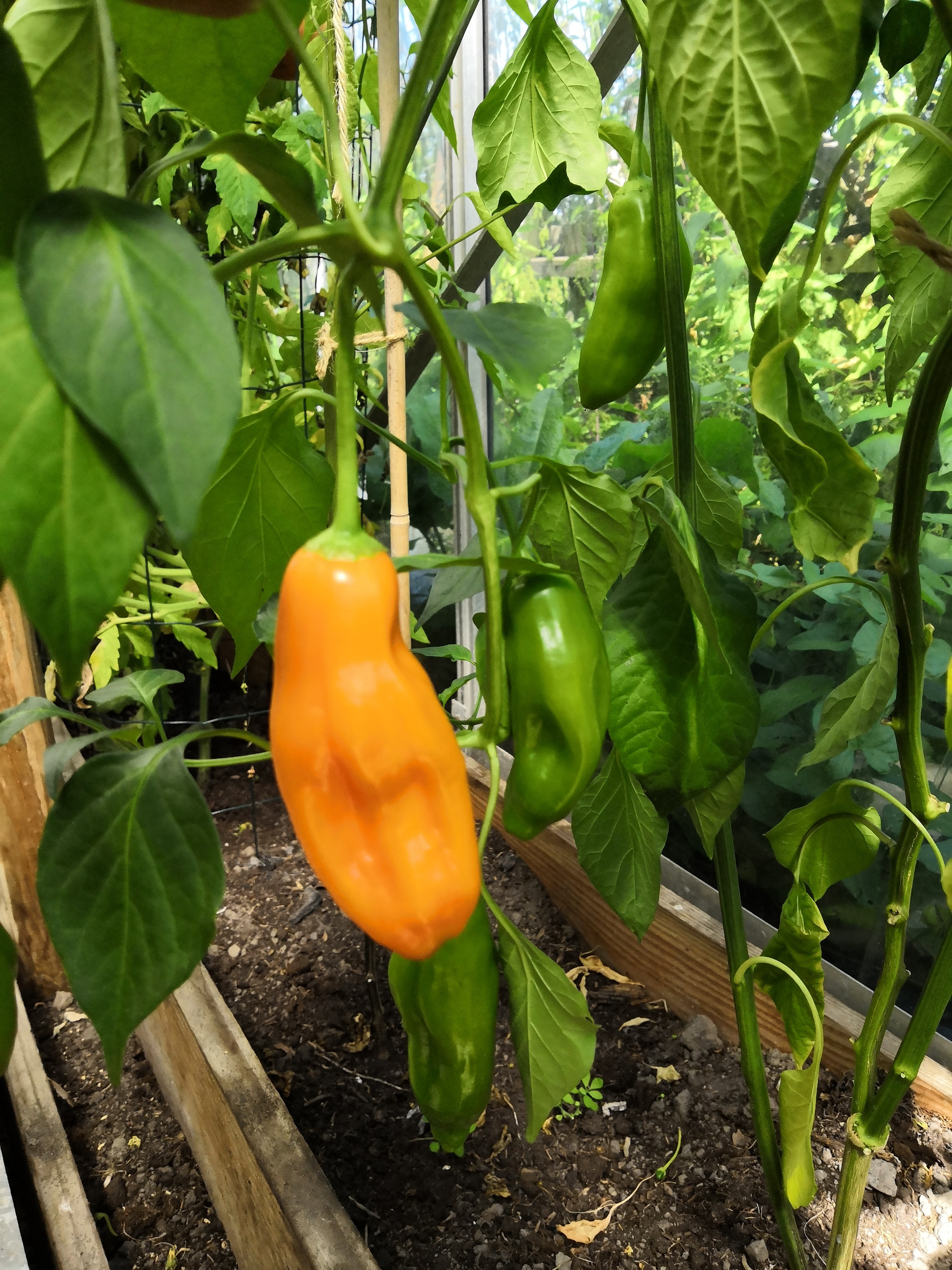
aji amarillo BMS
C. baccatum
C. baccatum
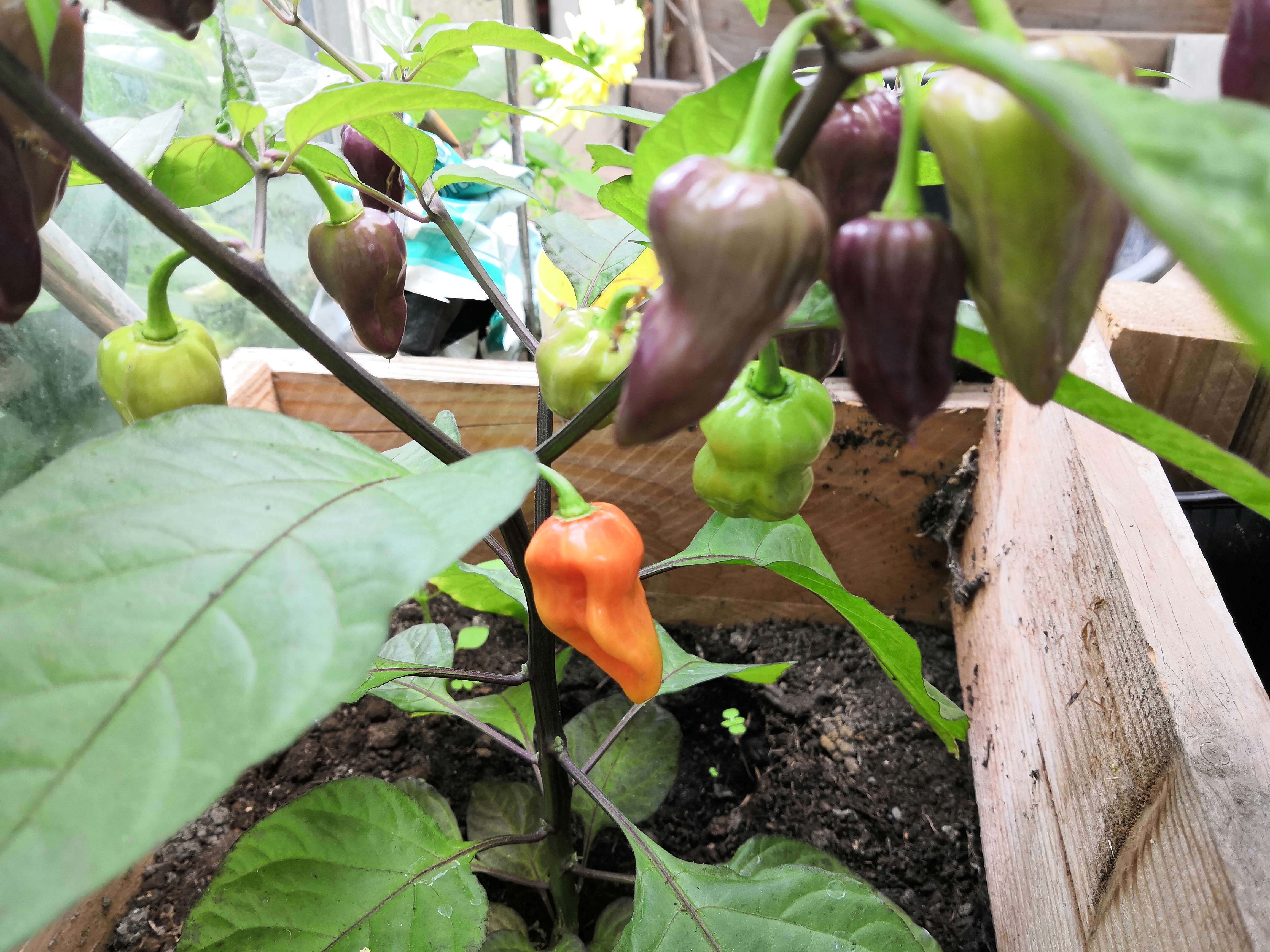
bhut jolakia
C. chinense
The
C. chinense
The
ghost pepperof India, also known as the Naga morich or Naga jolokia. (Nagaland is one of the regions where it is cultivated; it does not refer directly to snake people.) A few years ago, chili pepper breeders were getting all wound up about the Habenero Red Savina, clocking in at 500,000 Scovilles. Then some Indians tried them.
These are nice,they said,
but not all that hot. This is hot.Clocking in at 1,000,000 Scovilles, those Indian farmers weren't kidding. Furthermore, unlike the superhot habeneros, this is an heirloom variety that will breed true. There are now hotter hybrids on the market, but (so far as I know) the bhut is still the hottest heirloom. There are now many colors on the market, too; these go through a very pretty purple phase before ripening to red. Heat level: "Hail Mary".
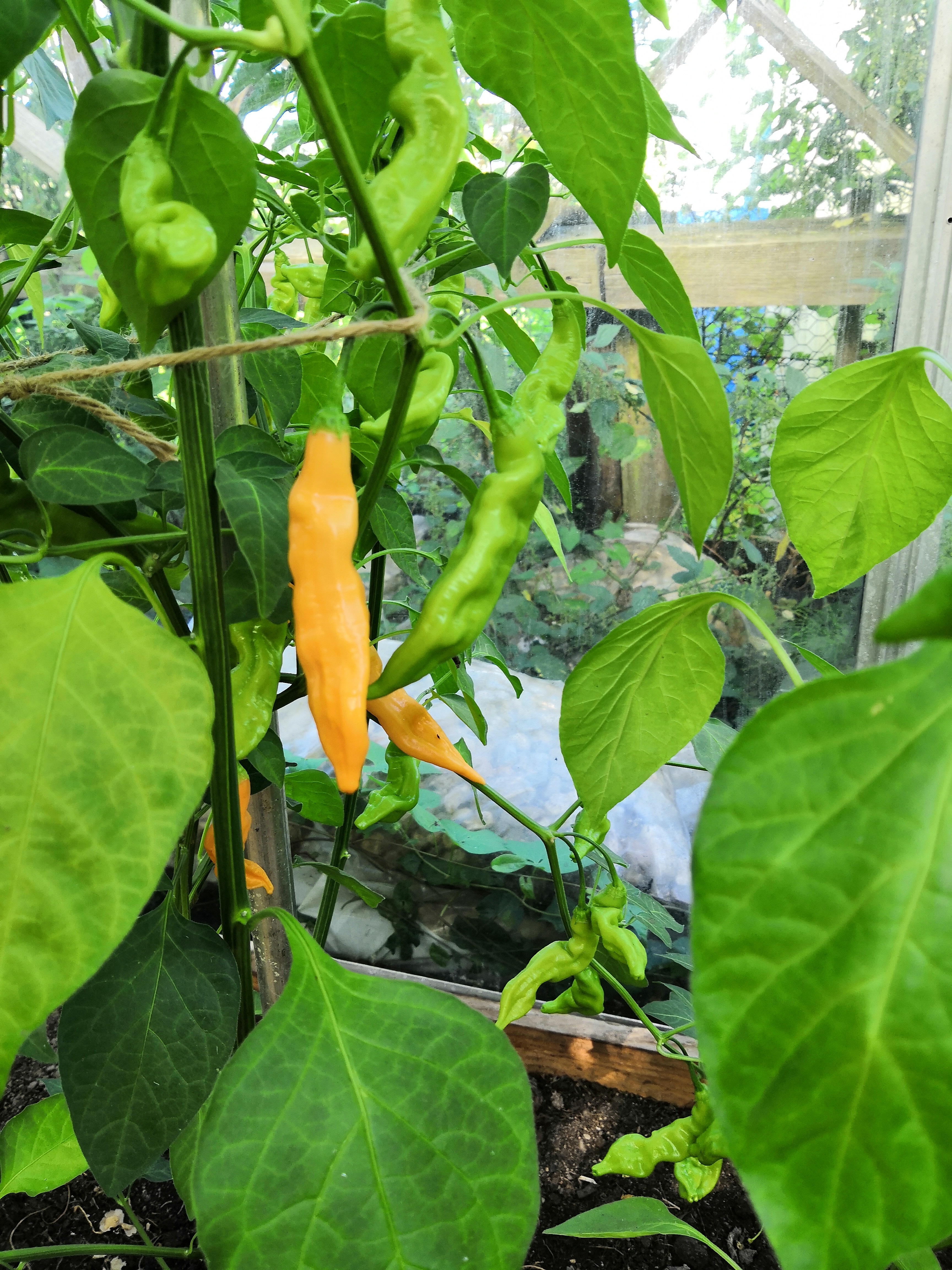
aji melocoton
C. baccatum
Vendor: Hippy Seed
This chili seems to have 3 types: all about 10cm long and wrinkled, but with the color being ivory white, peach, or orange. It is also quite a bit hotter than the vendor indicated: its heat level is similar to the hot lemon, but the vendor indicated that it's a mild pepper. I suspect it might be a cross, but if so, it's a good one - excellent fruity baccatum flavor, and the heat level is great for salsas or cooking.
C. baccatum
Vendor: Hippy Seed
This chili seems to have 3 types: all about 10cm long and wrinkled, but with the color being ivory white, peach, or orange. It is also quite a bit hotter than the vendor indicated: its heat level is similar to the hot lemon, but the vendor indicated that it's a mild pepper. I suspect it might be a cross, but if so, it's a good one - excellent fruity baccatum flavor, and the heat level is great for salsas or cooking.
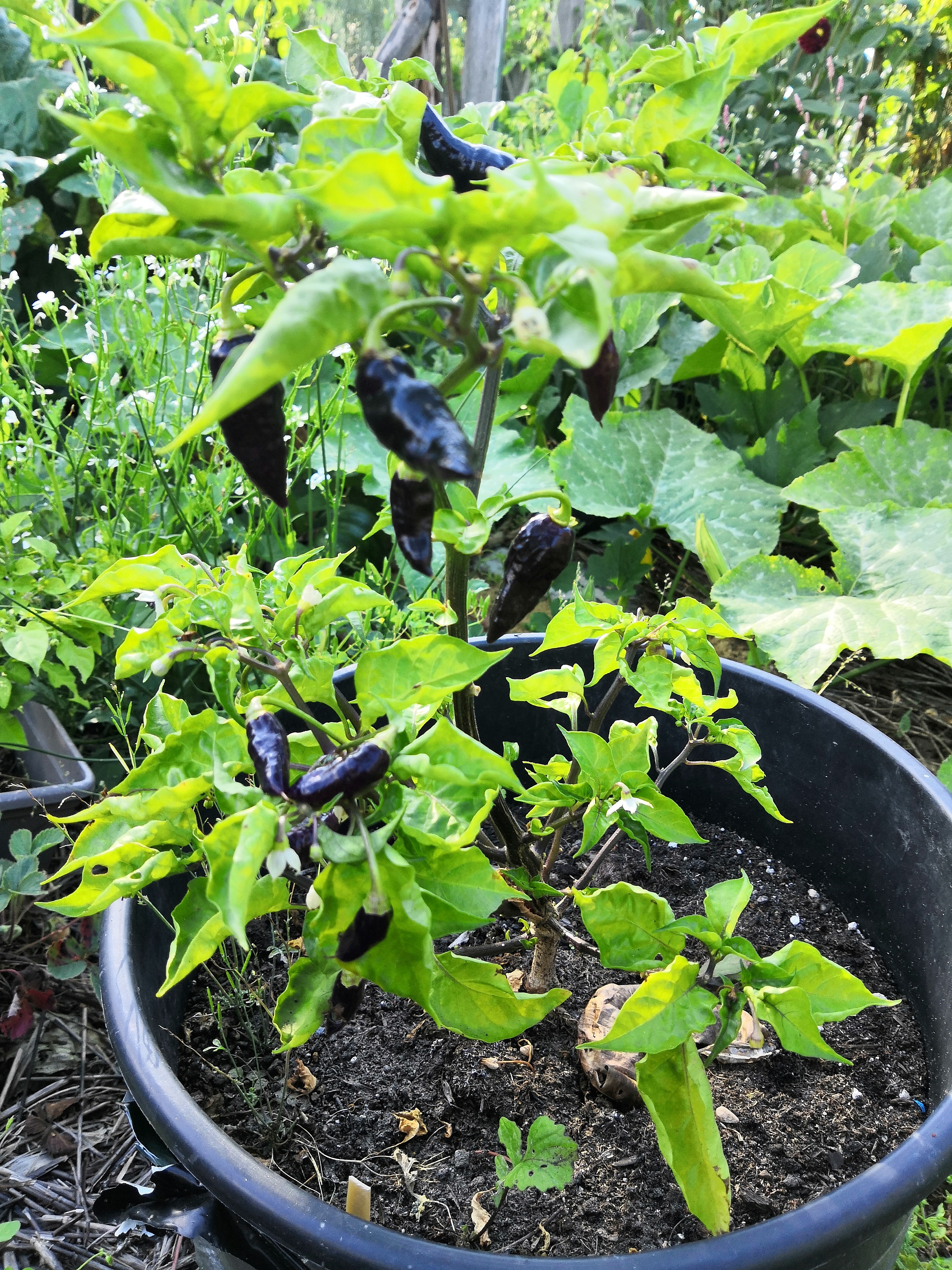
GRIF 9238
C. chinense
Vendor: Hippy Seed
Very pretty pepper that ripens from purple to red, with an orangy-pink phase in between. Not particularly hot, but has a nice flavor. Like the aribibi, it has the fruity part of the chinense flavor without the acrid taste of habeneros. Heat 7/10.
C. chinense
Vendor: Hippy Seed
Very pretty pepper that ripens from purple to red, with an orangy-pink phase in between. Not particularly hot, but has a nice flavor. Like the aribibi, it has the fruity part of the chinense flavor without the acrid taste of habeneros. Heat 7/10.
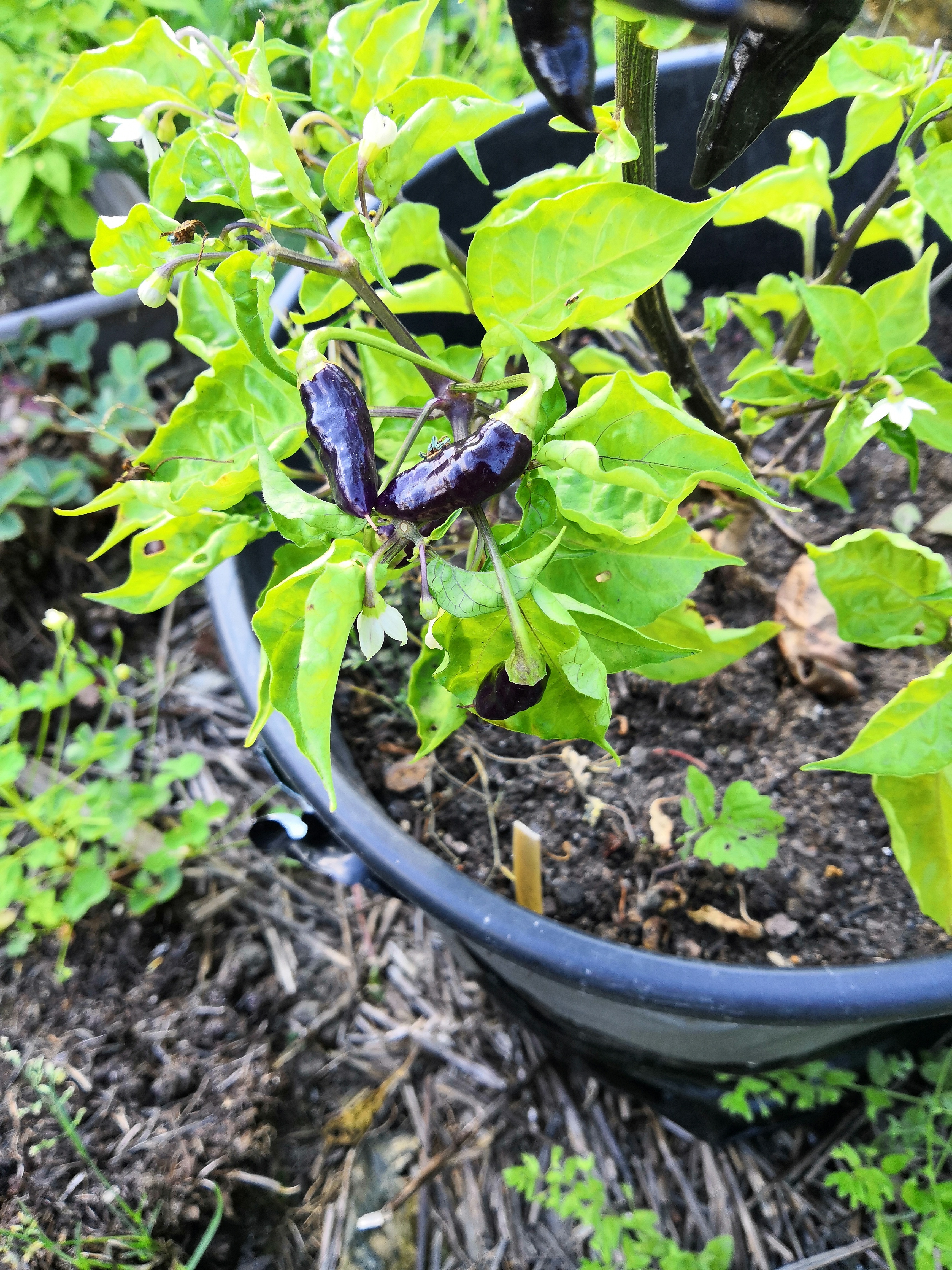
GRIF 9238
C. chinense
C. chinense
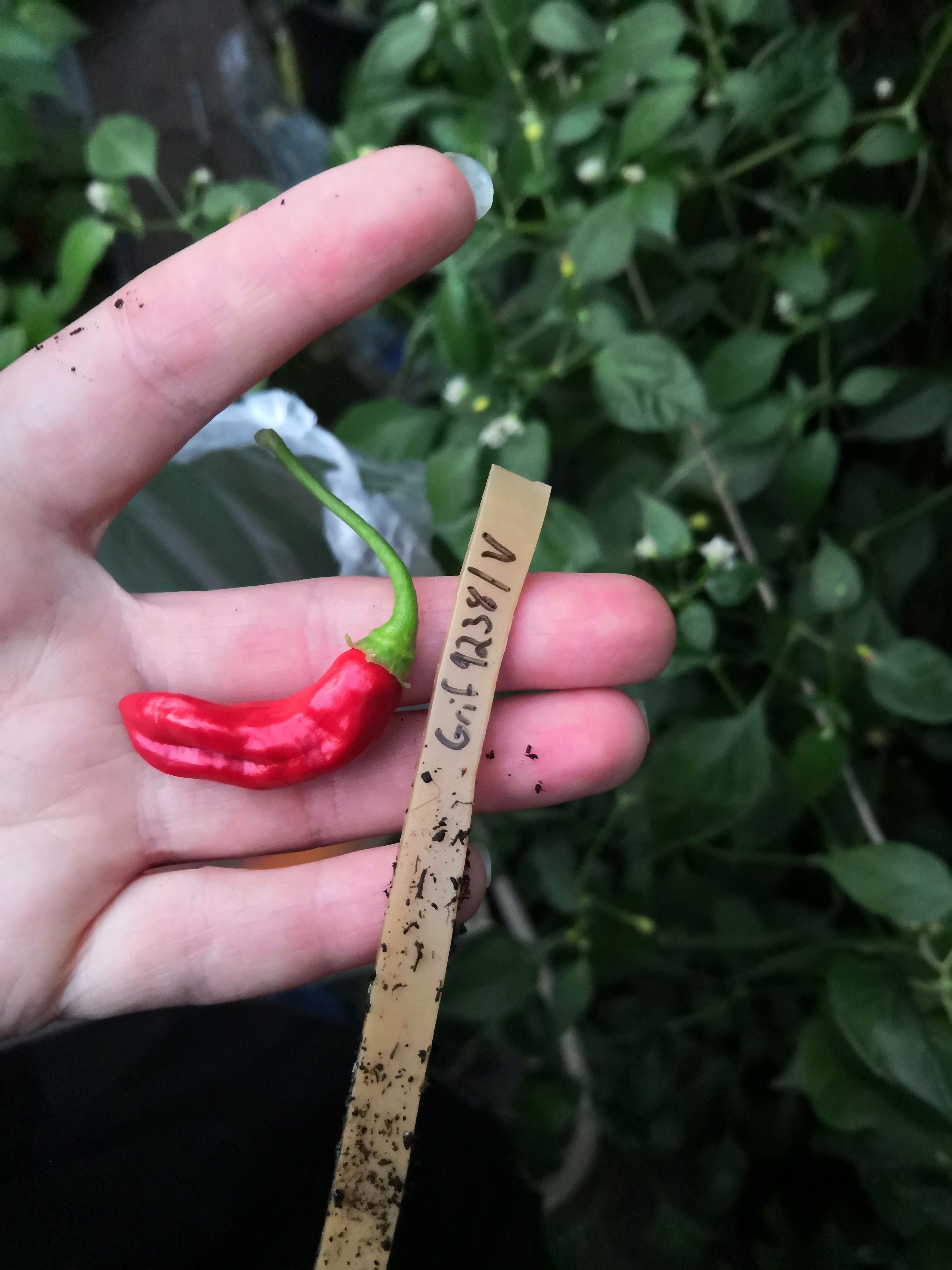
GRIF 9238
C. chinense
C. chinense
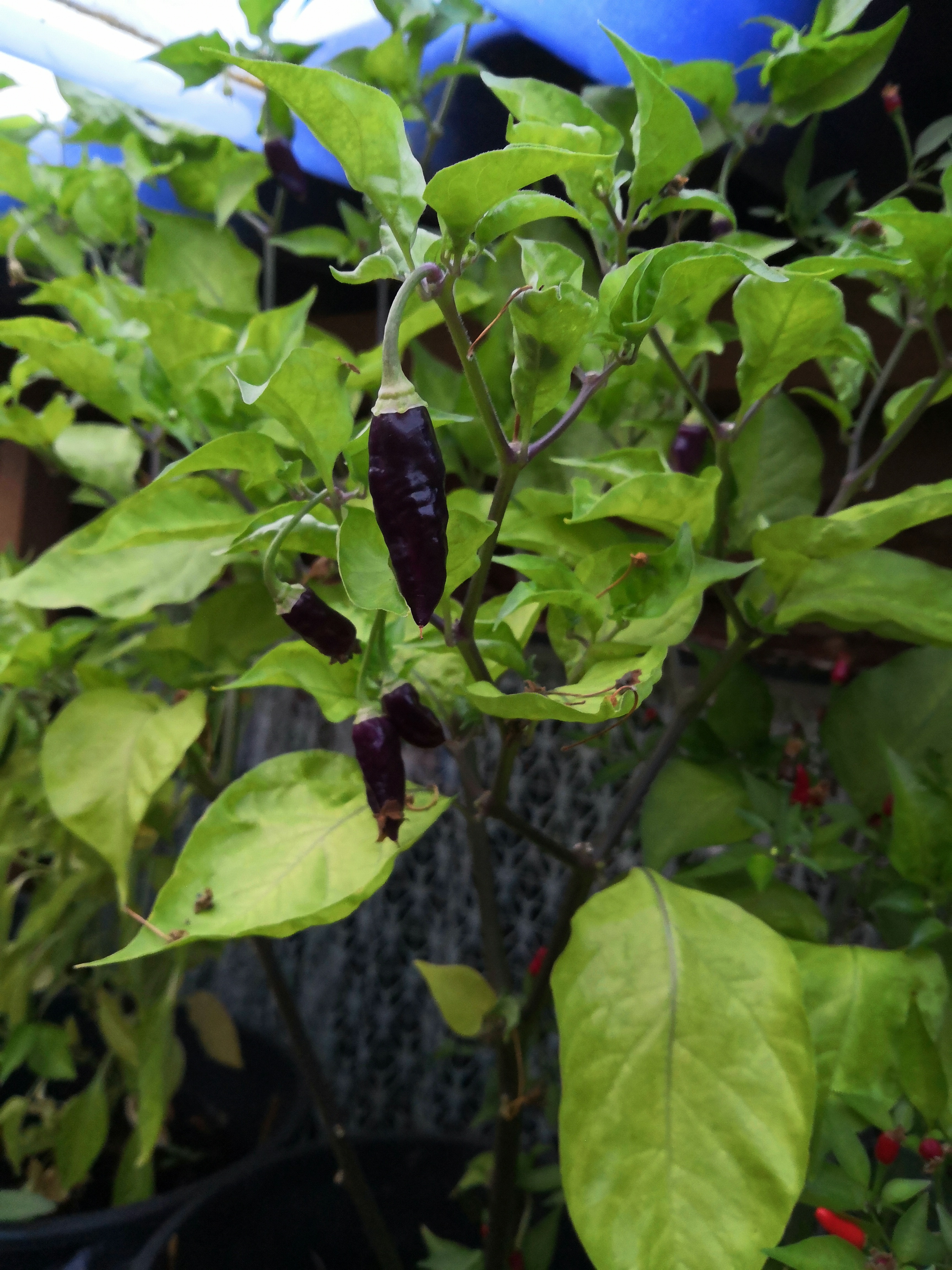
GRIF 9238
C. chinense
C. chinense
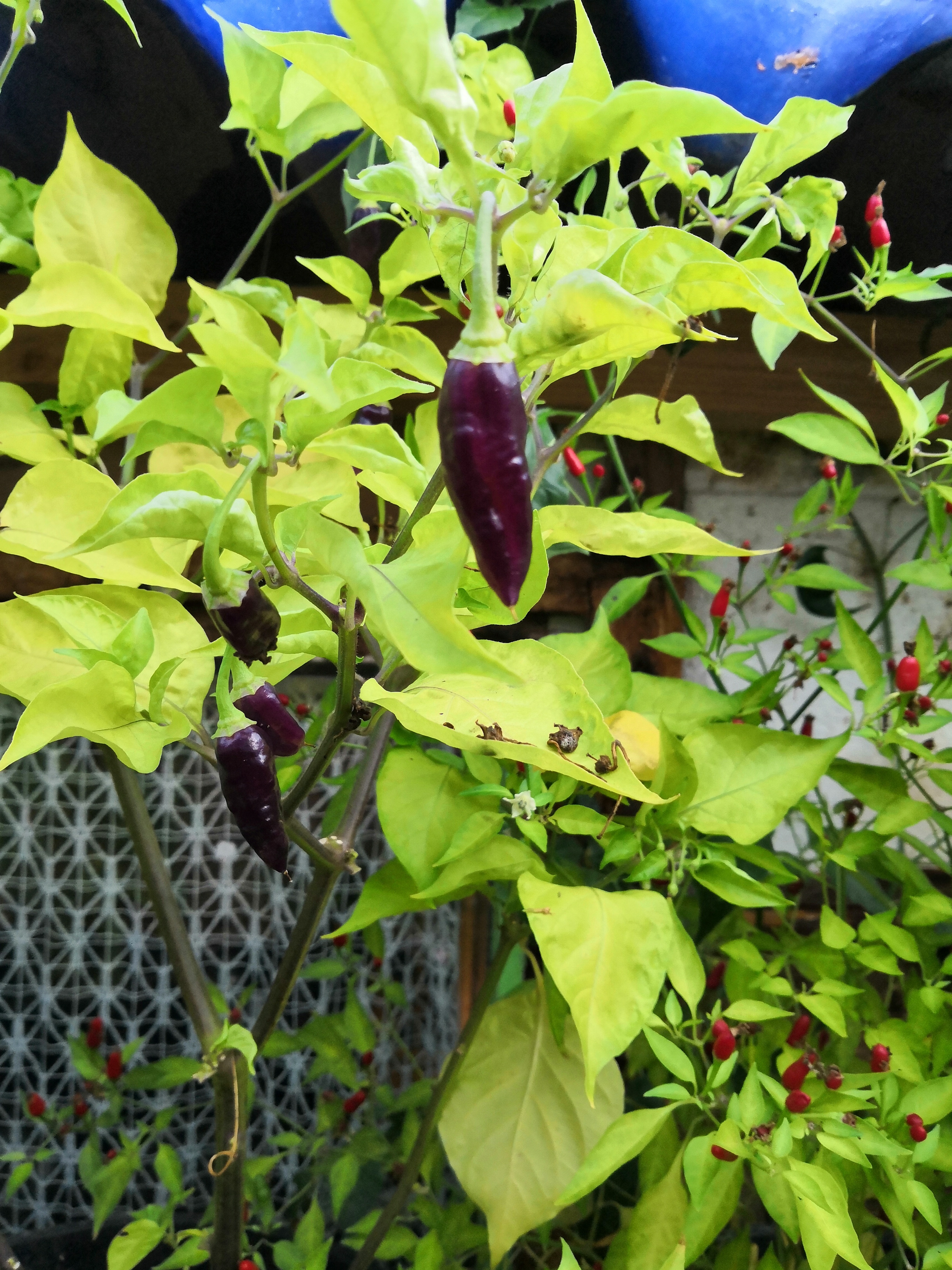
GRIF 9238
C. chinense
C. chinense
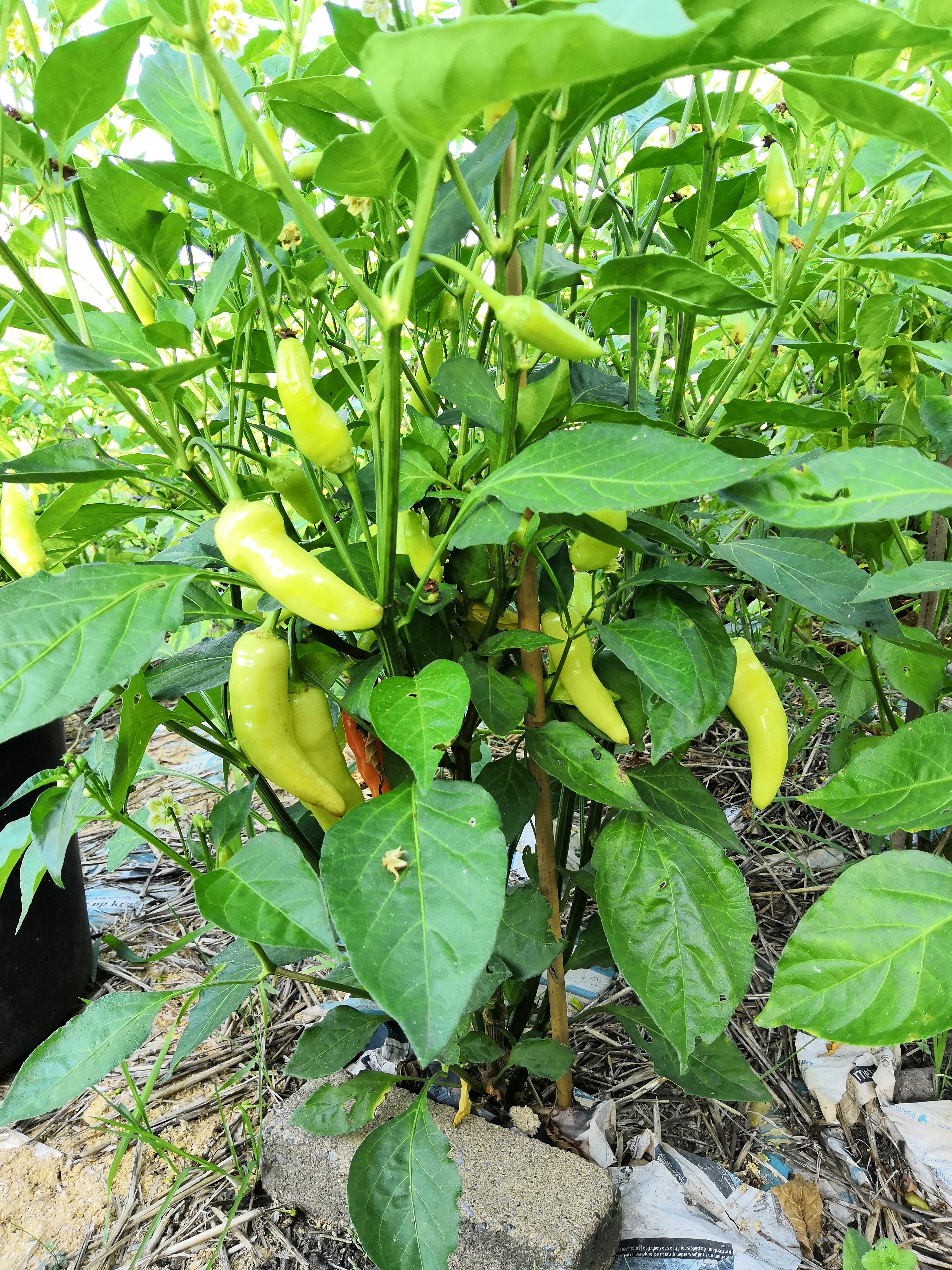
aji crystal
C. baccatum
C. baccatum
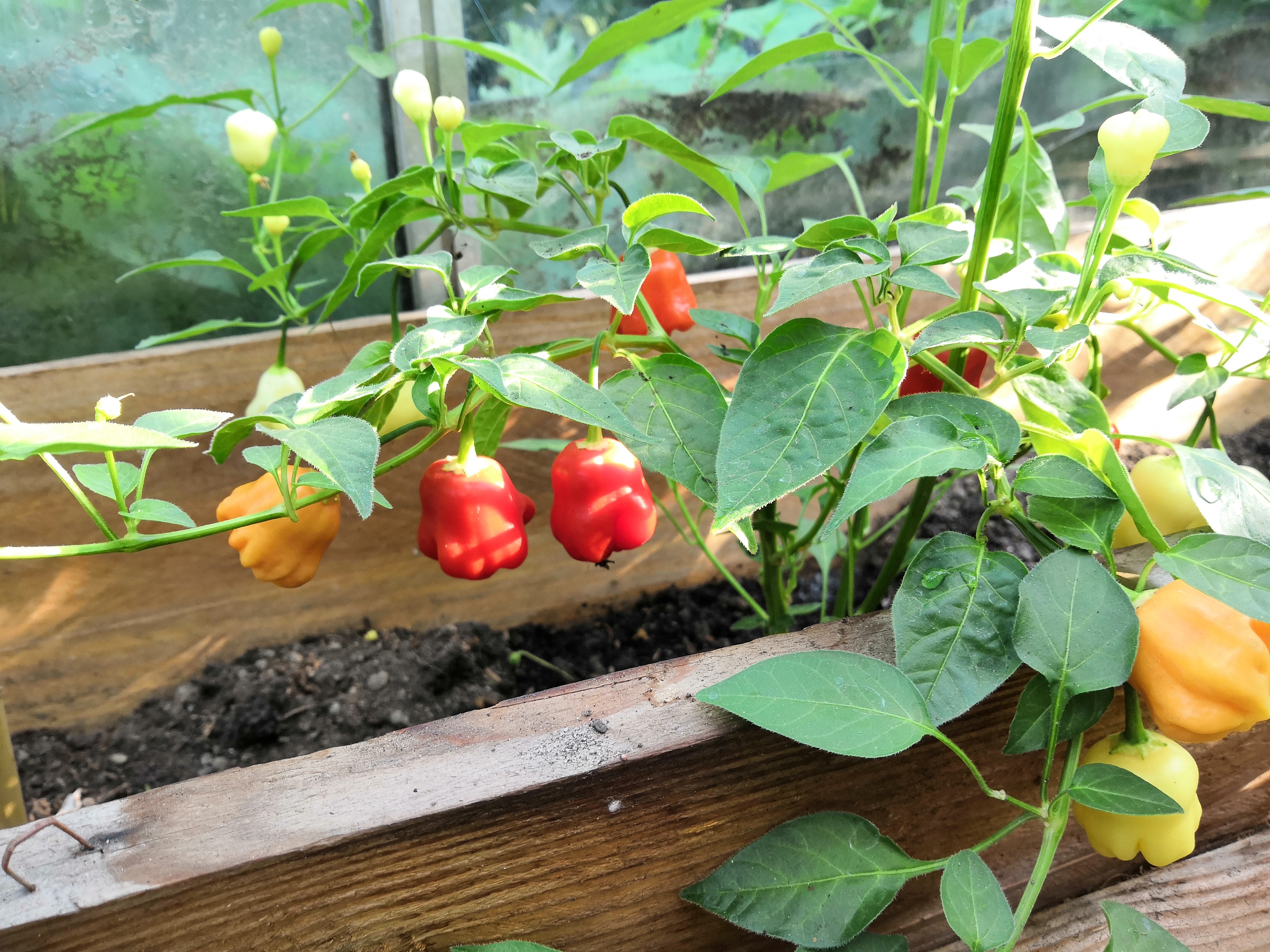
aji rainforest
C.baccatum
Vendor: Miss Charlotte
This is a relatively mild baccatum with a flavor similar to dulce dolor, but with much smaller peppers.
C.baccatum
Vendor: Miss Charlotte
This is a relatively mild baccatum with a flavor similar to dulce dolor, but with much smaller peppers.
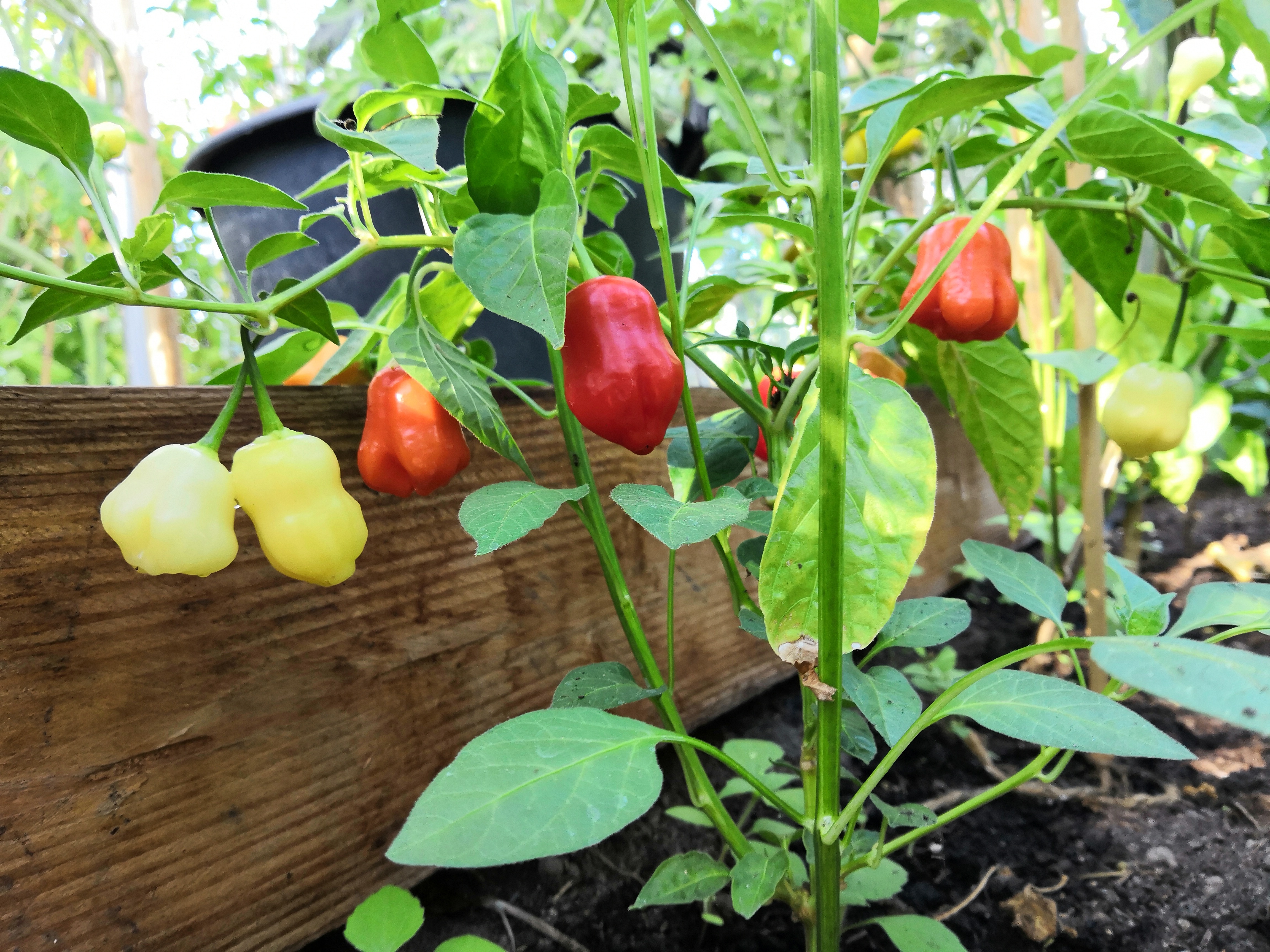
aji rainforest
C.baccatum
C.baccatum
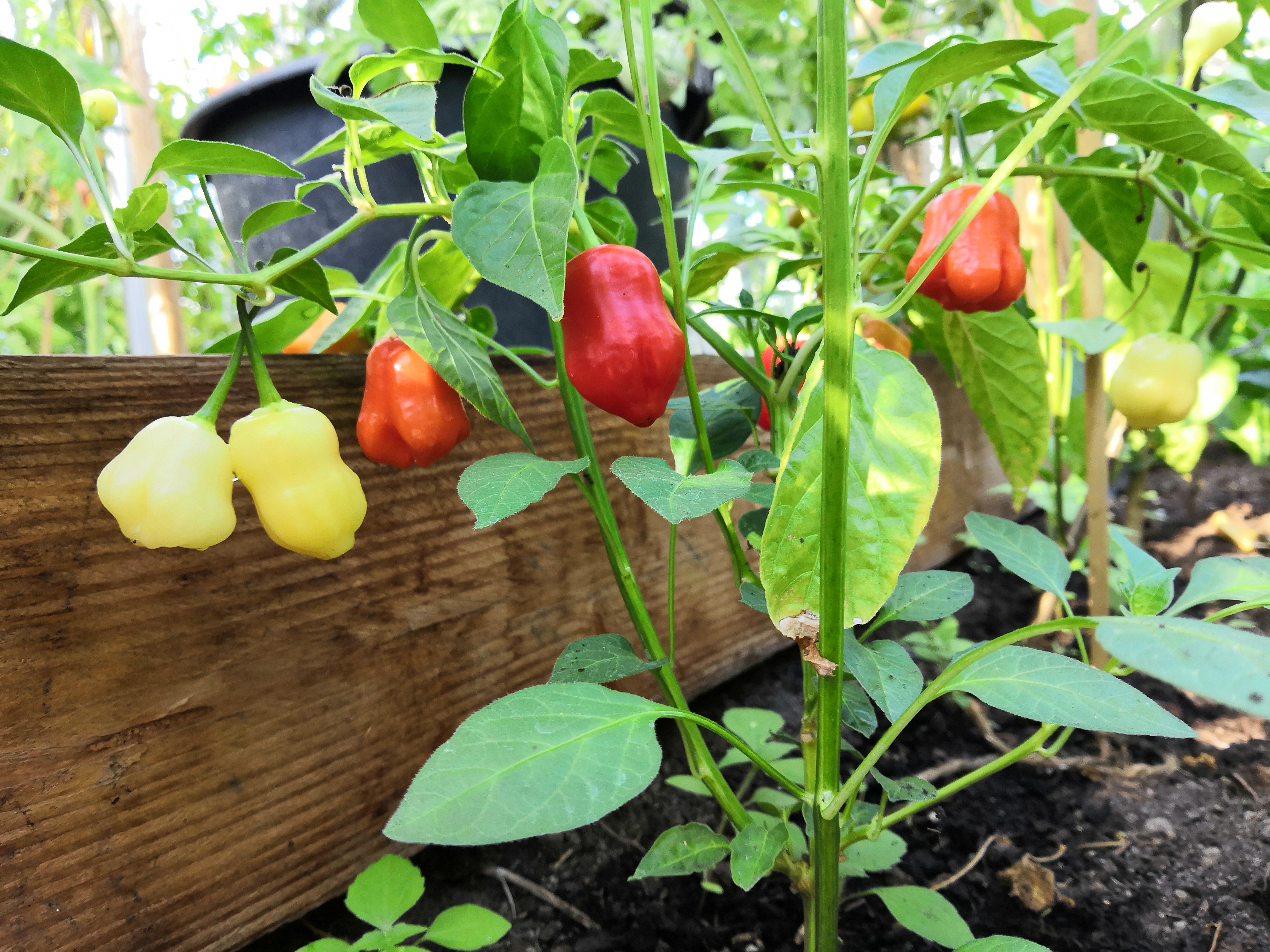
aji rainforest
C.baccatum
C.baccatum
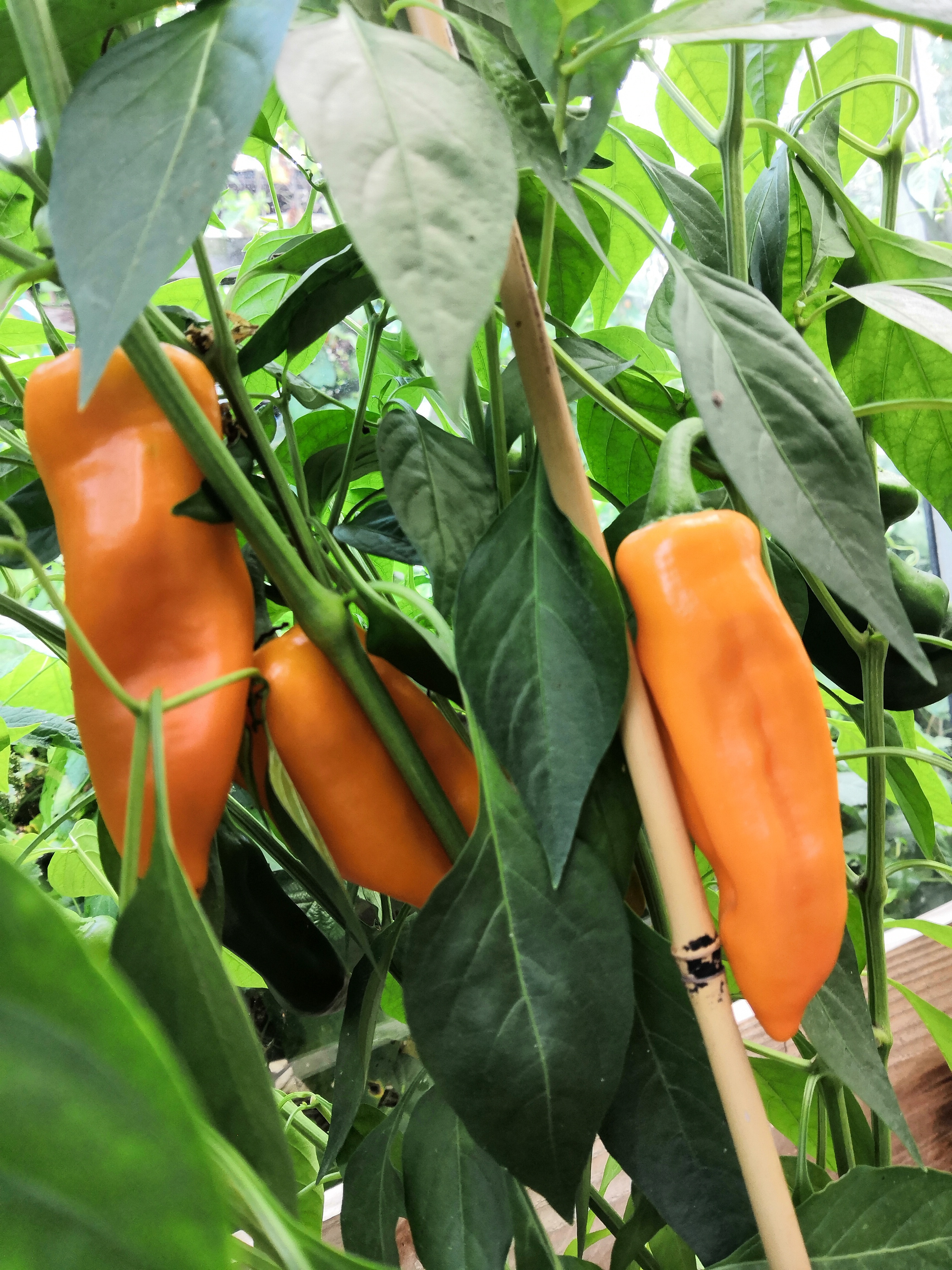
Chilhuacle amarillo
C. annuum
Vendor: Refining Fire
These seem to be very tough-skinned and thin-walled, with a mild grassy flavor. There is no sweetness, no heat, and nothing particularly pleasant about them.
C. annuum
Vendor: Refining Fire
These seem to be very tough-skinned and thin-walled, with a mild grassy flavor. There is no sweetness, no heat, and nothing particularly pleasant about them.
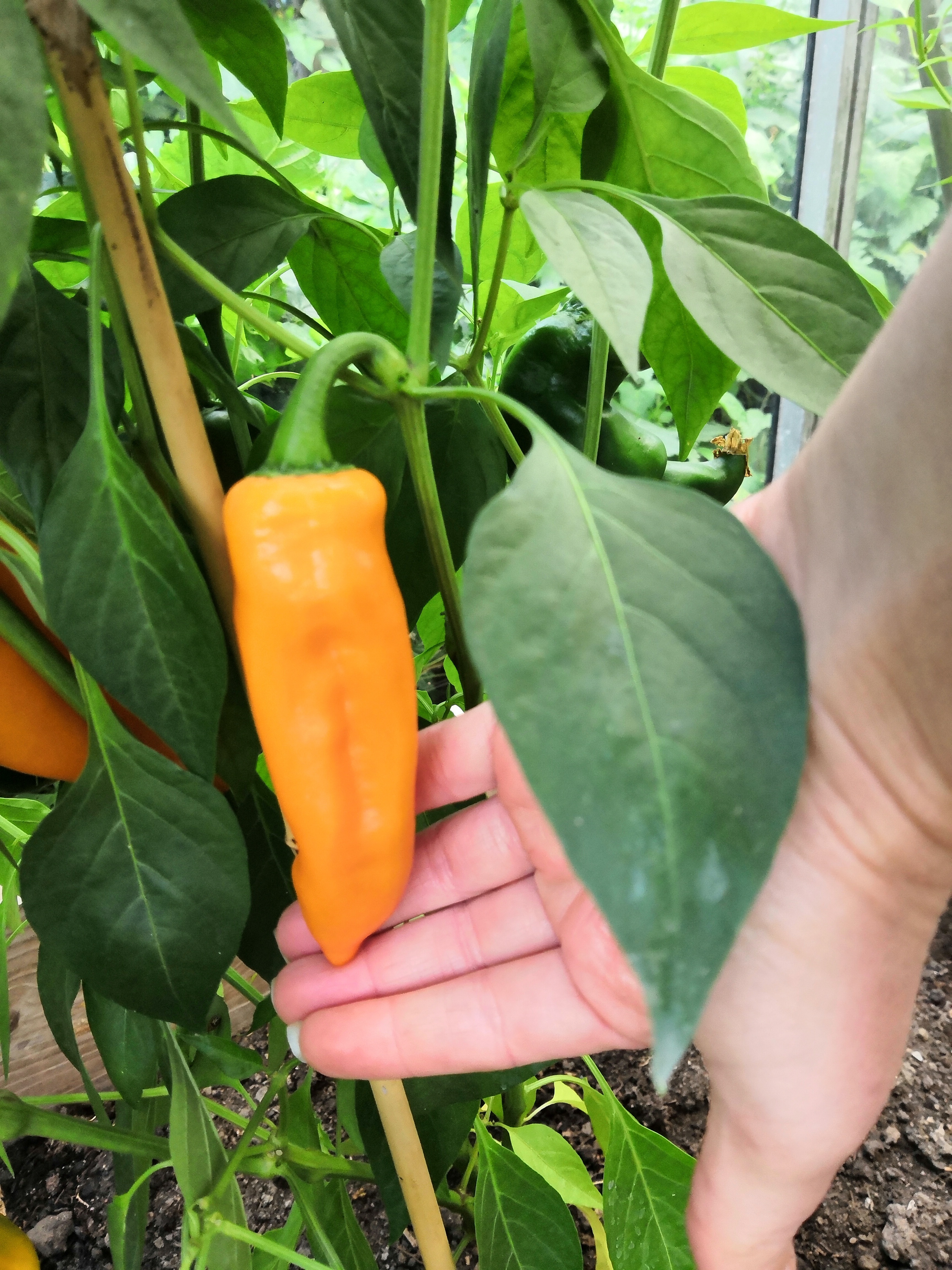
Chilhuacle amarillo
C. annuum
C. annuum
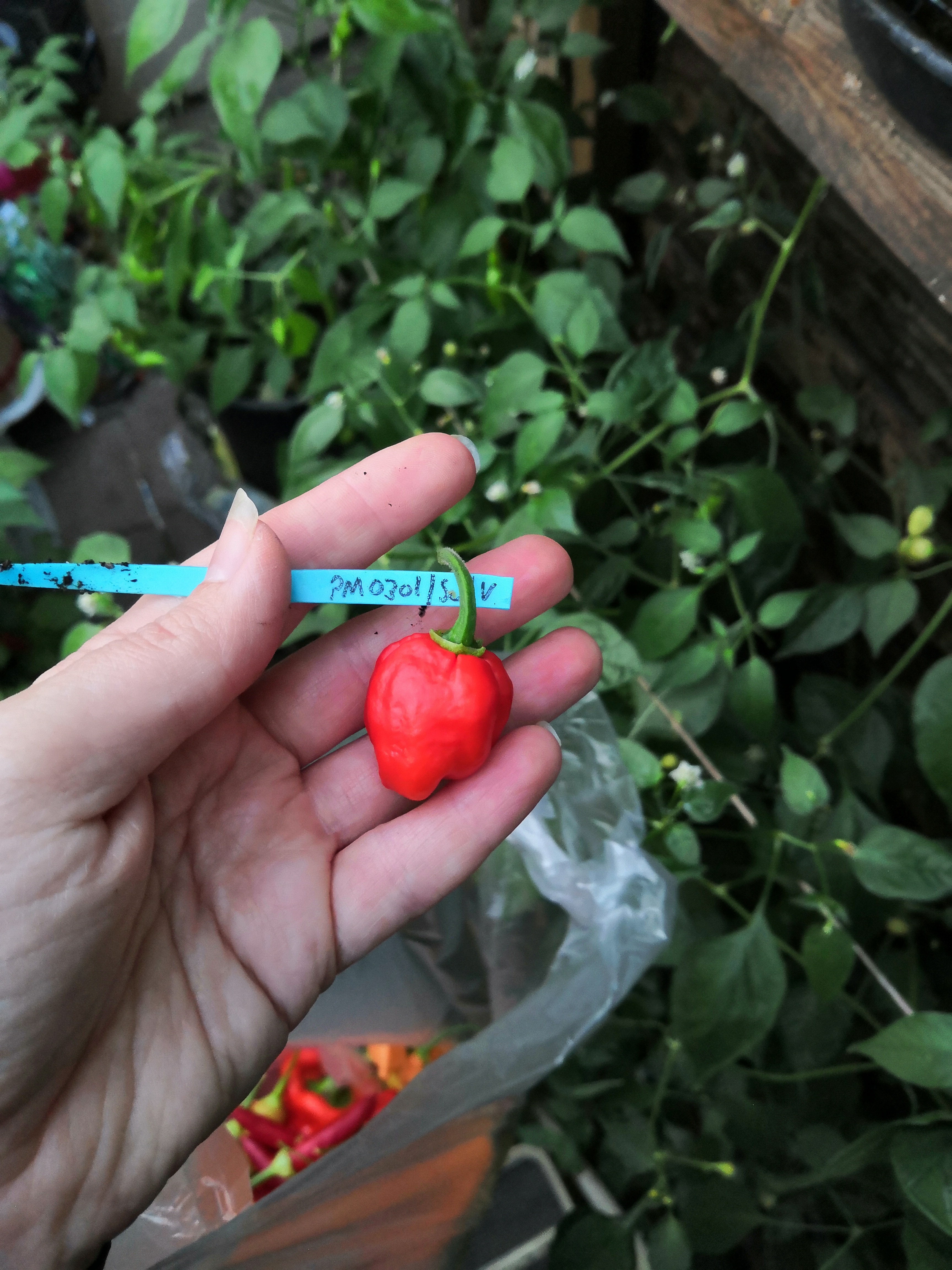
PM0361
C. chinense
Vendor: Semillas La Palma
Very good flavor with hints of lime. On the mild side for a chinense; heat 8/10.
C. chinense
Vendor: Semillas La Palma
Very good flavor with hints of lime. On the mild side for a chinense; heat 8/10.
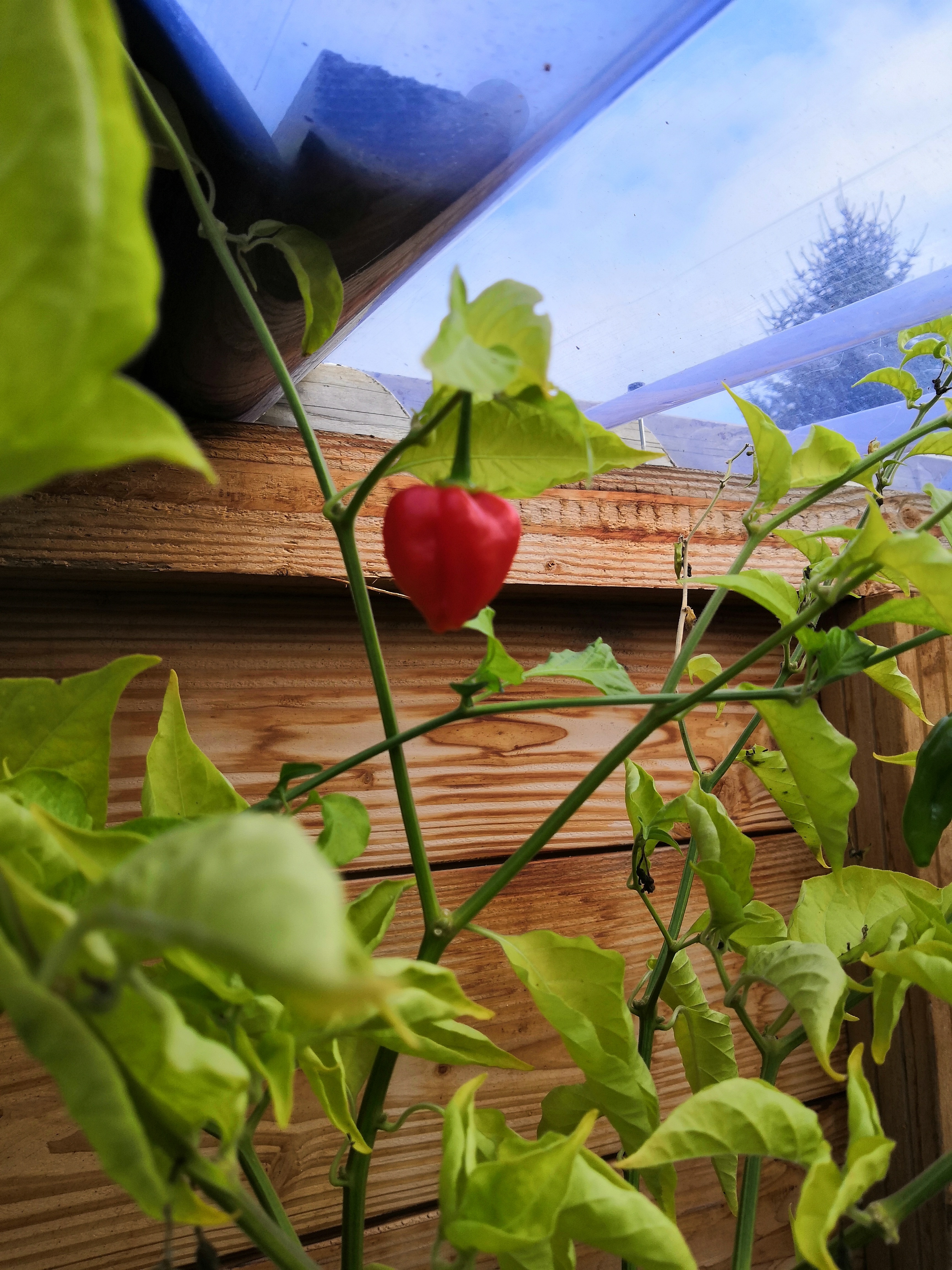
PM0361
C. chinense
C. chinense
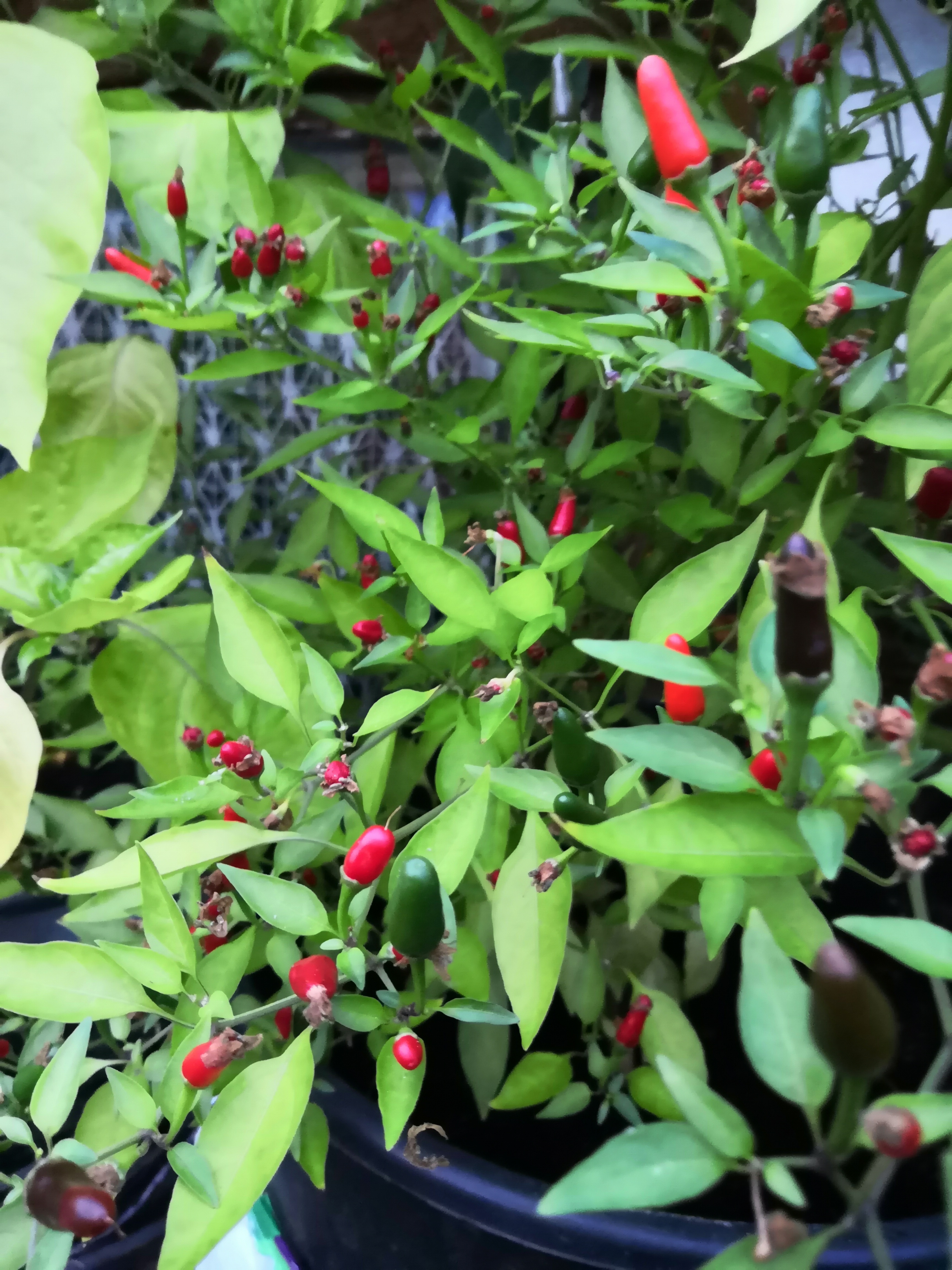
thai sun
C. annuum
Vendor: Carlo
Teeny tiny Thai peppers.
C. annuum
Vendor: Carlo
Teeny tiny Thai peppers.
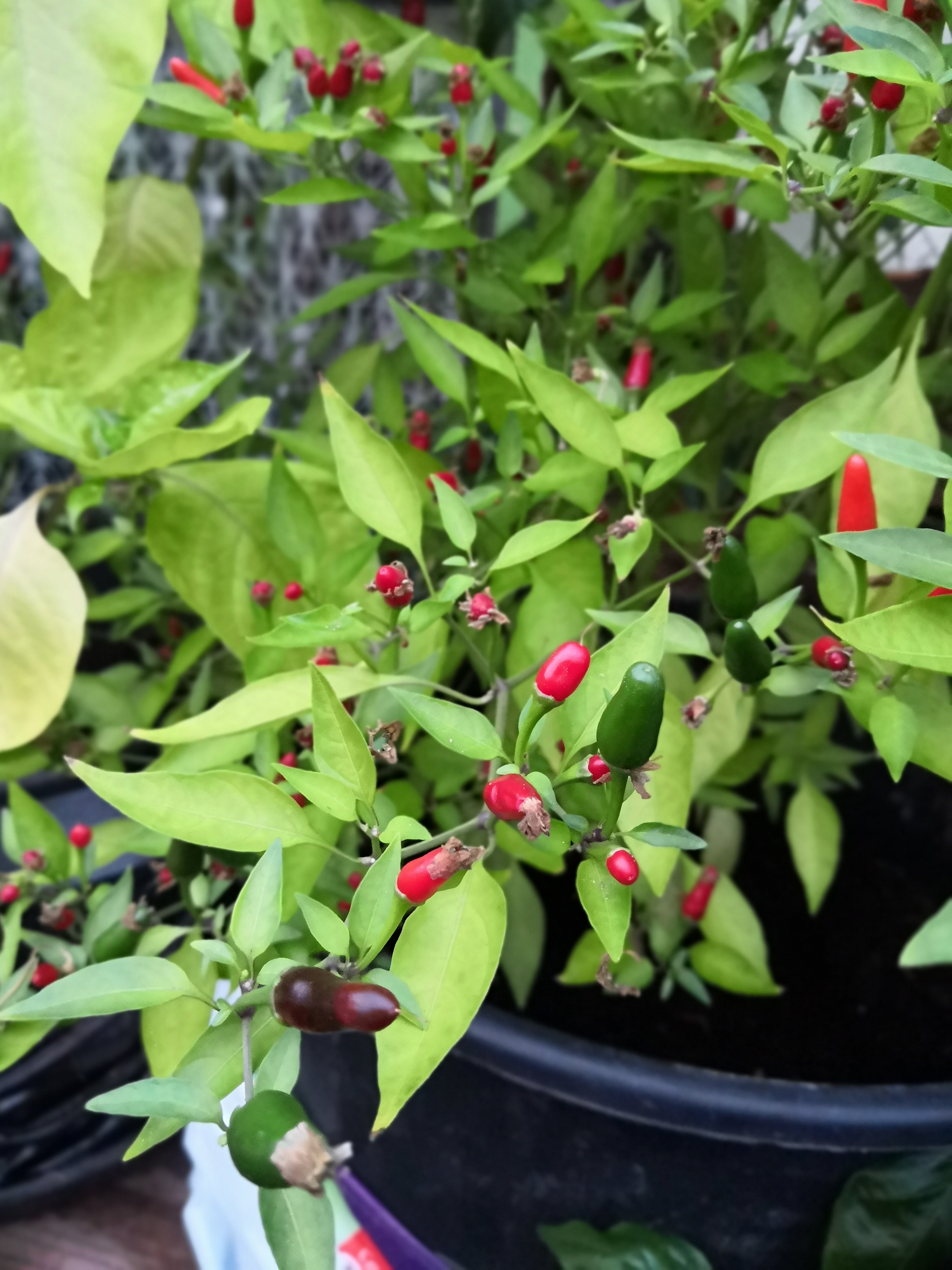
thai sun
C. annuum
C. annuum
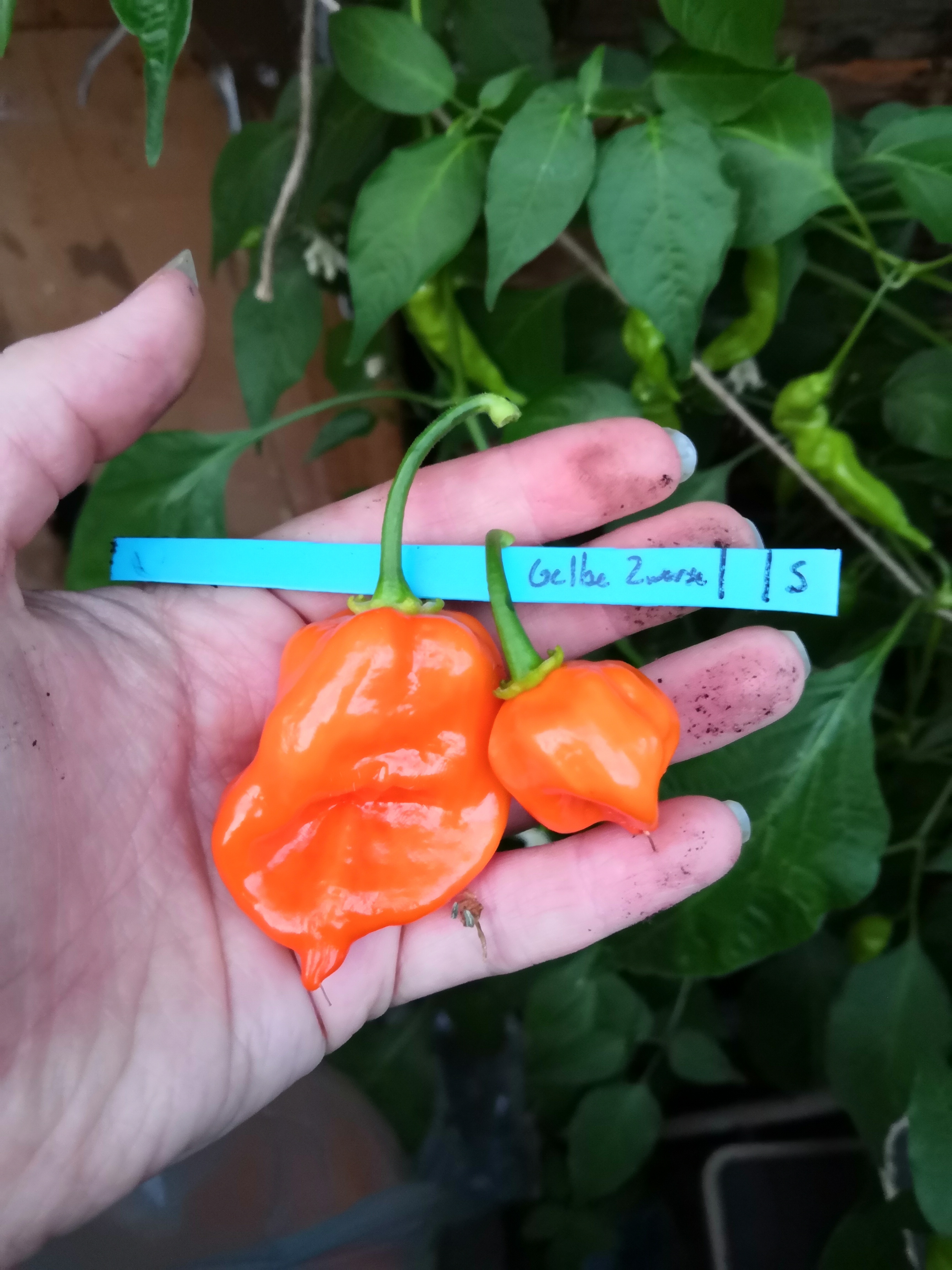
Gelbe Zwerge
C. chinense
Seems just like any other habenero, to me. Heat 10/10.
C. chinense
Seems just like any other habenero, to me. Heat 10/10.
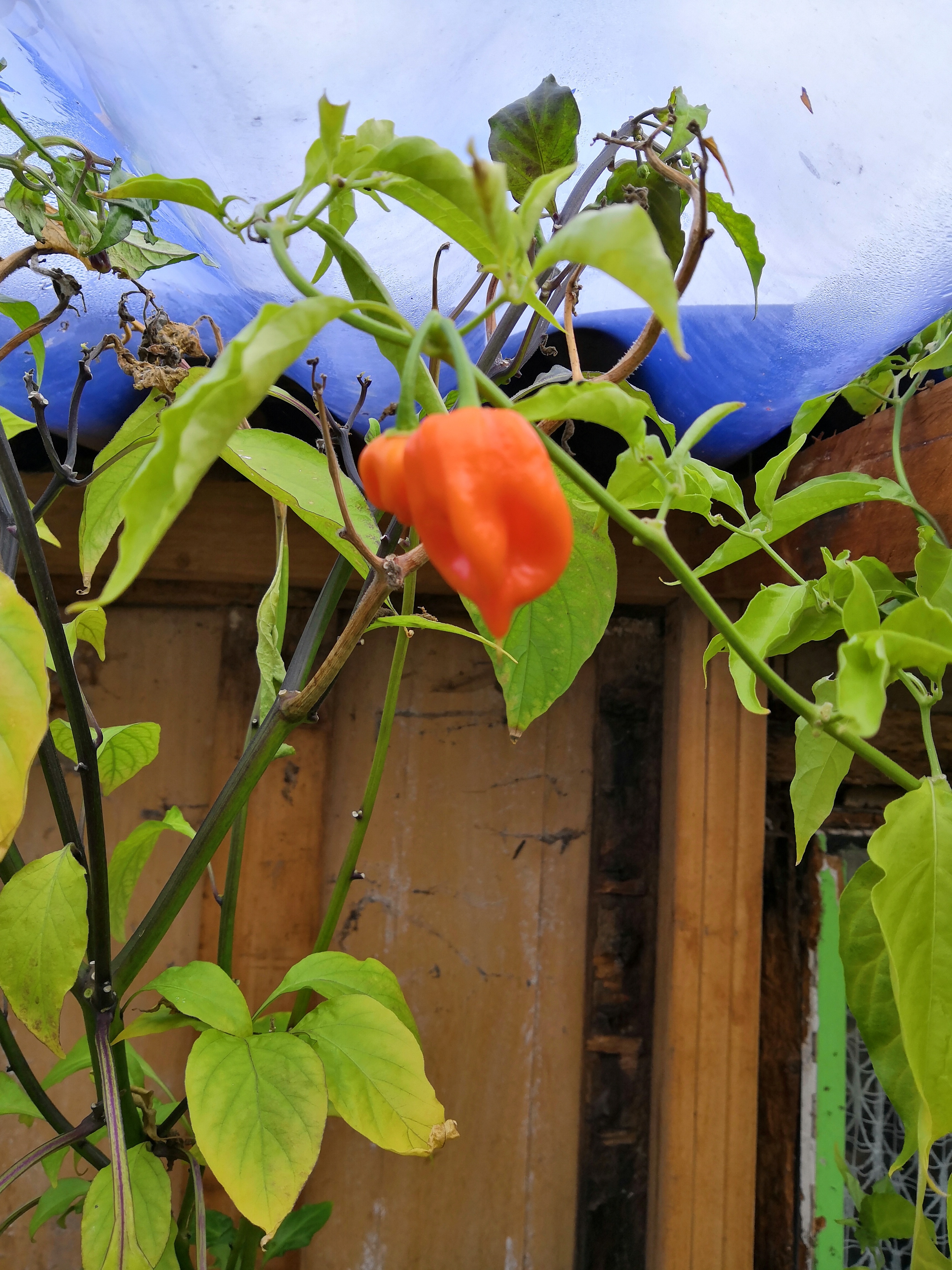
Gelbe Zwerge
C. chinense
C. chinense
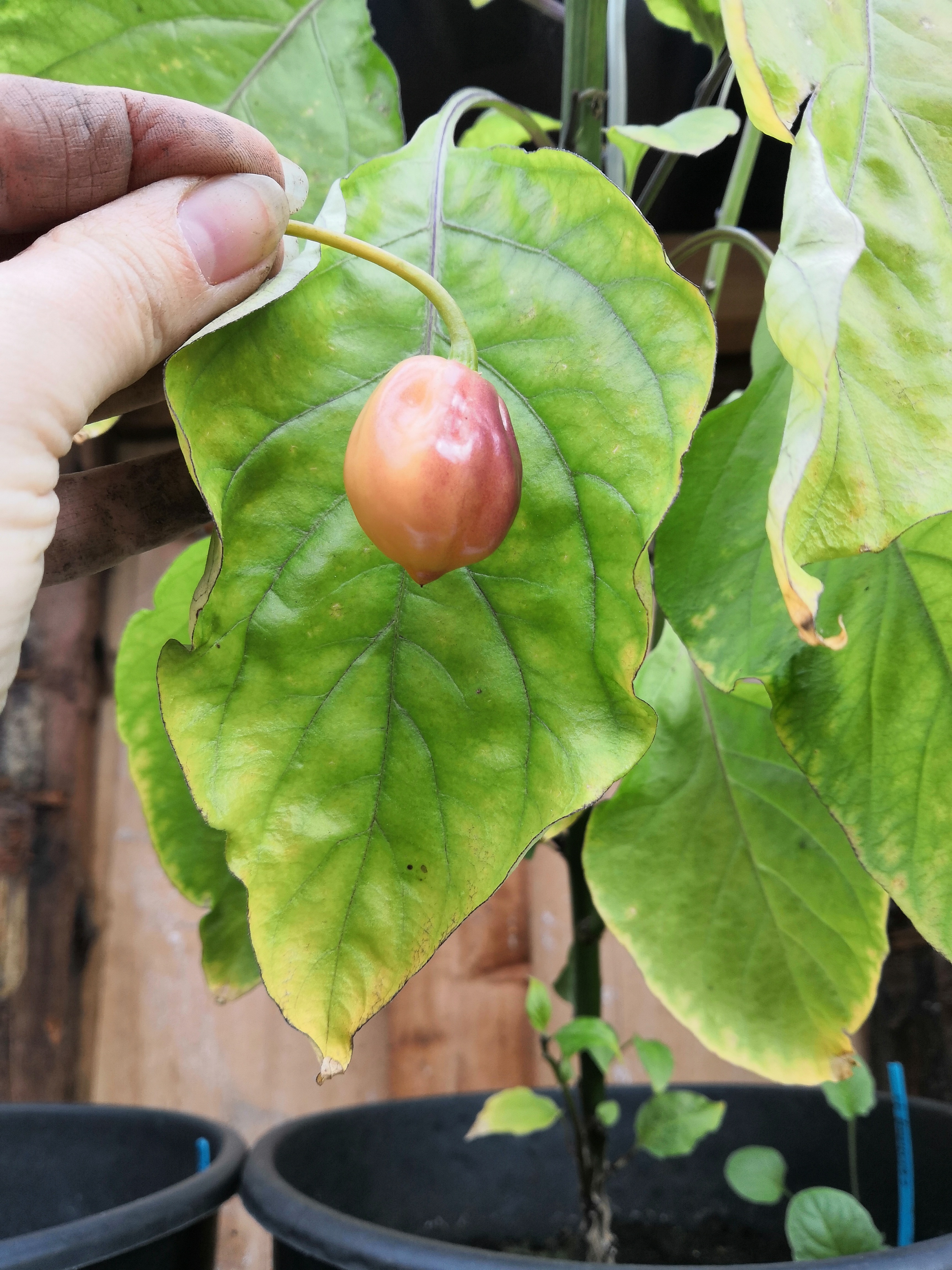
CGN21500
C. chinense
Refining Fire
Without a doubt one of the prettiest peppers in the garden. Color turns from pale peach to bright peach when ripe, but retains the purple blush that is visible here. The flavor is nice too, with a manageable heat level. Heat 9/10.
C. chinense
Refining Fire
Without a doubt one of the prettiest peppers in the garden. Color turns from pale peach to bright peach when ripe, but retains the purple blush that is visible here. The flavor is nice too, with a manageable heat level. Heat 9/10.
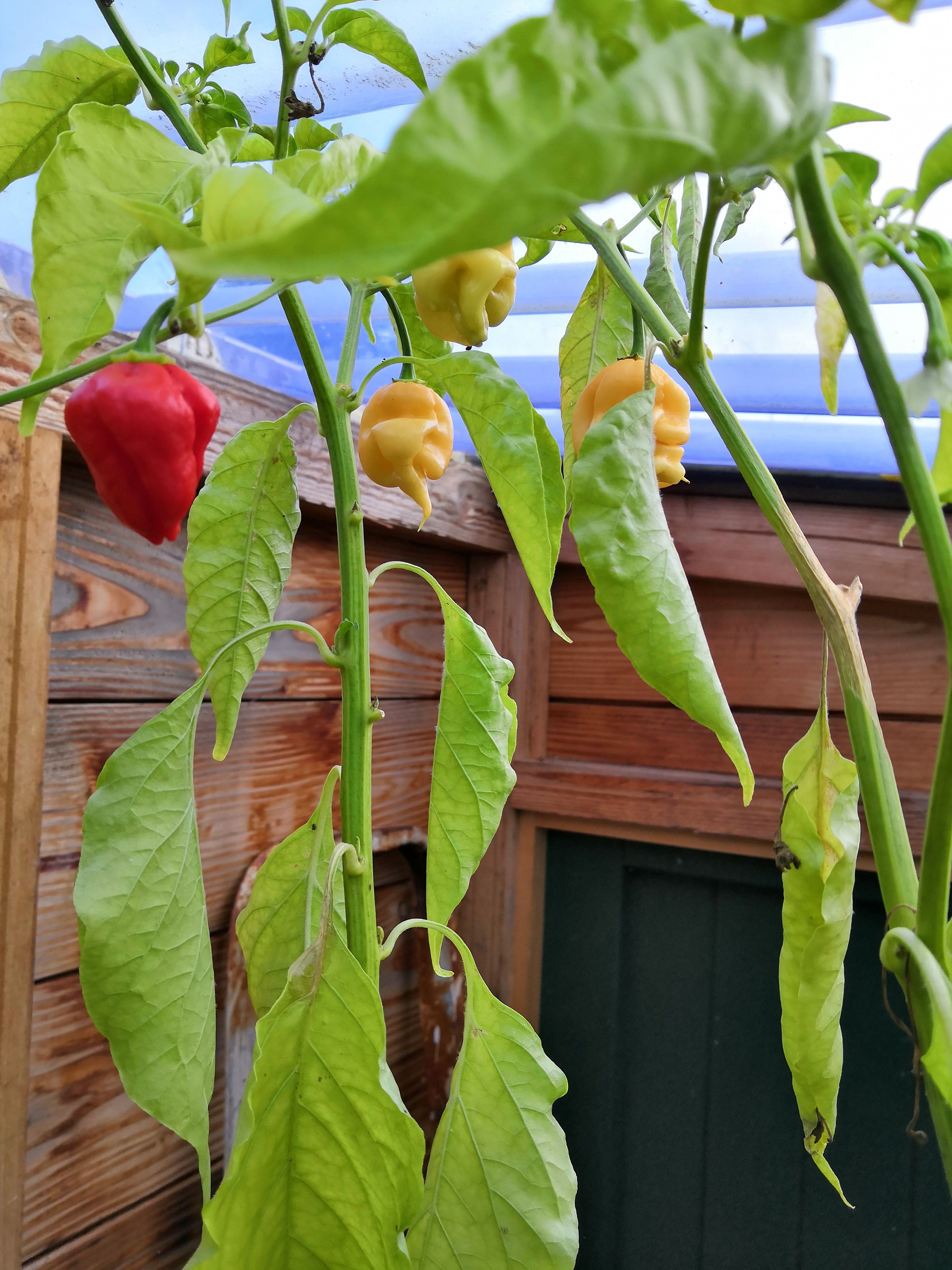
peach scorpion
C. chinense
Vendor: pepperlover
(unknown red chinense in foreground - maybe PM0361?)
Scorpions are known for intense heat and flavor. This one has plenty of flavor, but is surprisingly moderate in its heat level. Heat 7/10.
C. chinense
Vendor: pepperlover
(unknown red chinense in foreground - maybe PM0361?)
Scorpions are known for intense heat and flavor. This one has plenty of flavor, but is surprisingly moderate in its heat level. Heat 7/10.
2020
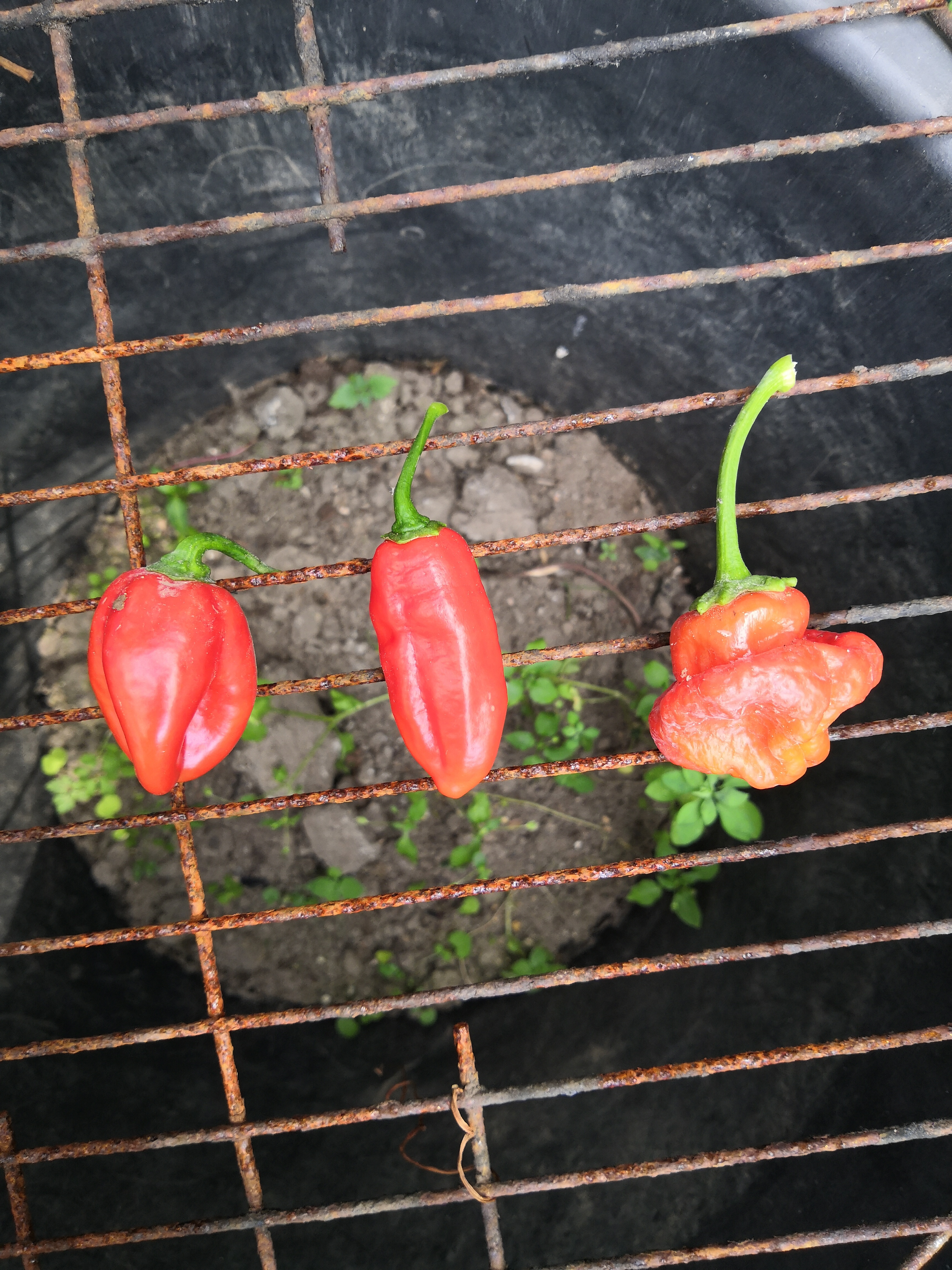
2x PM0361 and scotch bonnet
C. chinense
Vendor: magic garden
The first two peppers in this photo are PM0361 (see above) but the last is a Scotch Bonnet. This was the first pepper to claim the title of hottest pepper in the world. (Guinness first gave the tepin chili this title, but at only 100,000 Scovilles it was clearly much milder than even your average habenero.) The Scotch Bonnet tastes pretty much like any other habenero, and sits on the high end of the normal range for habeneros in terms of heat (around 350,000 Scovilles). Heat: 10/10.
C. chinense
Vendor: magic garden
The first two peppers in this photo are PM0361 (see above) but the last is a Scotch Bonnet. This was the first pepper to claim the title of hottest pepper in the world. (Guinness first gave the tepin chili this title, but at only 100,000 Scovilles it was clearly much milder than even your average habenero.) The Scotch Bonnet tastes pretty much like any other habenero, and sits on the high end of the normal range for habeneros in terms of heat (around 350,000 Scovilles). Heat: 10/10.
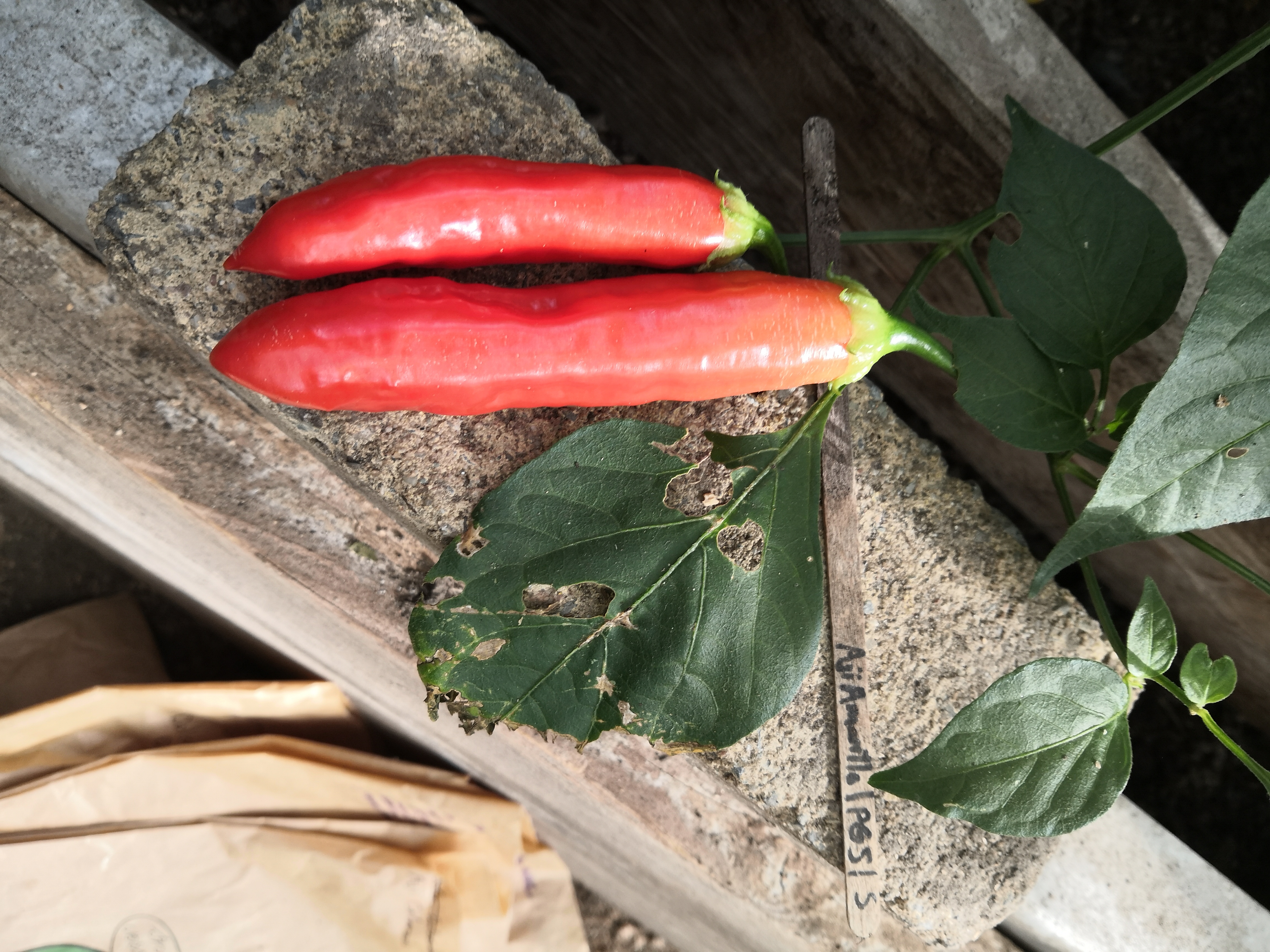
aji amarillo PGS
C. baccatum
Vendor: Plant Good Seed
Very different from most other aji amarillos; this one is thinner and ripens to red. The flavor is good, with a fresh taste reminescent of apple. Heat 6/10.
C. baccatum
Vendor: Plant Good Seed
Very different from most other aji amarillos; this one is thinner and ripens to red. The flavor is good, with a fresh taste reminescent of apple. Heat 6/10.
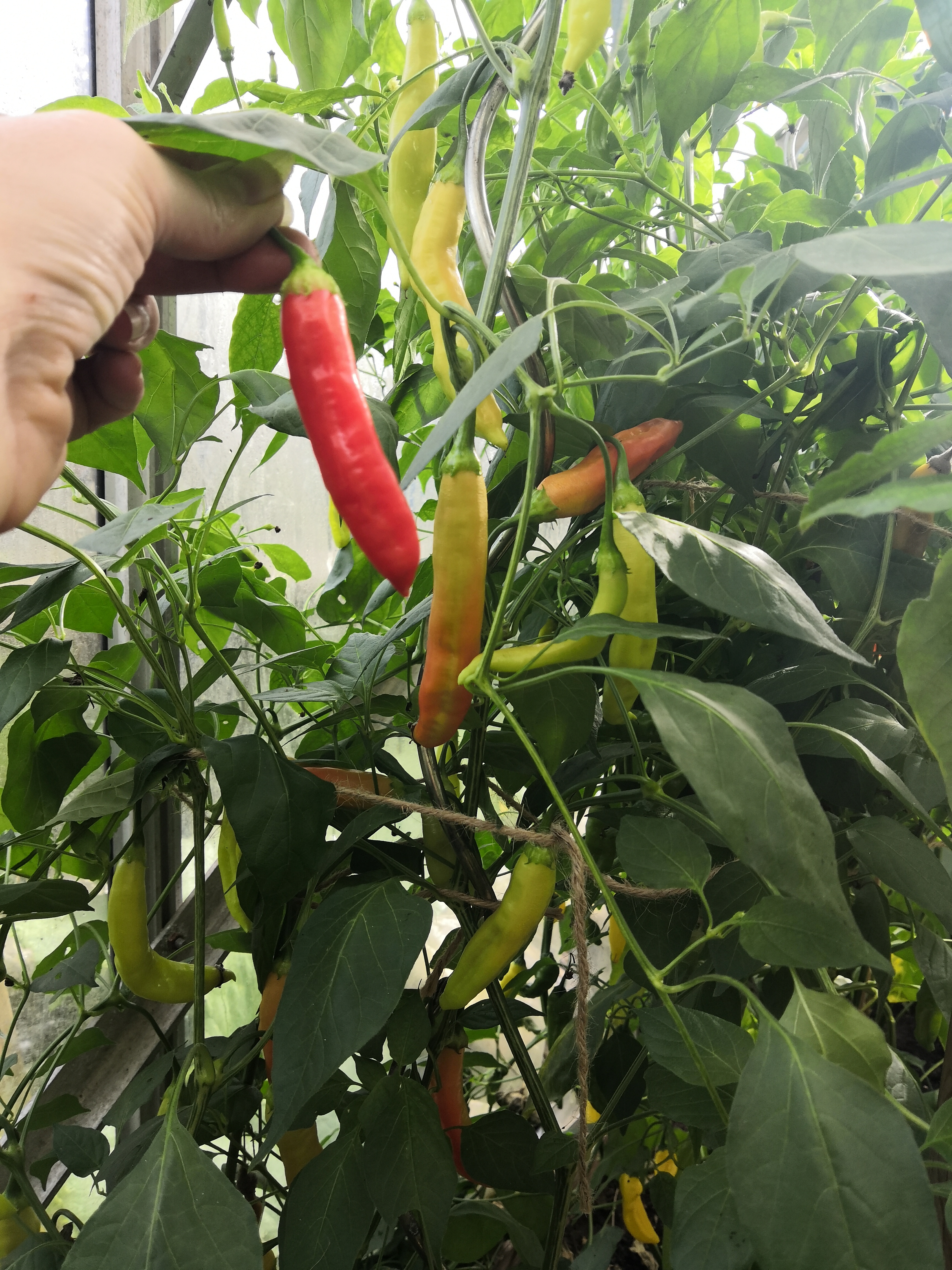
aji amarillo PGS
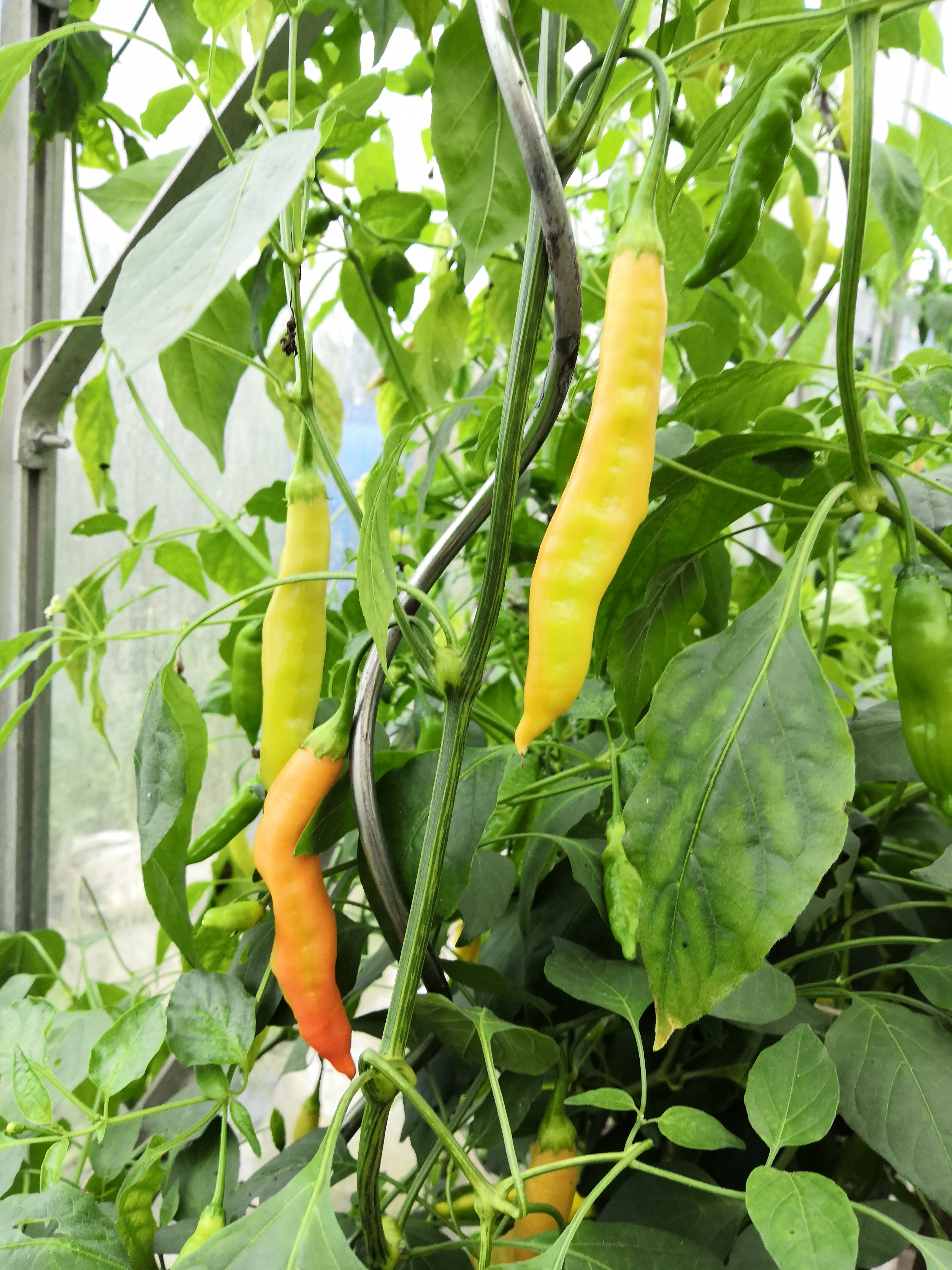
aji amarillo PGS
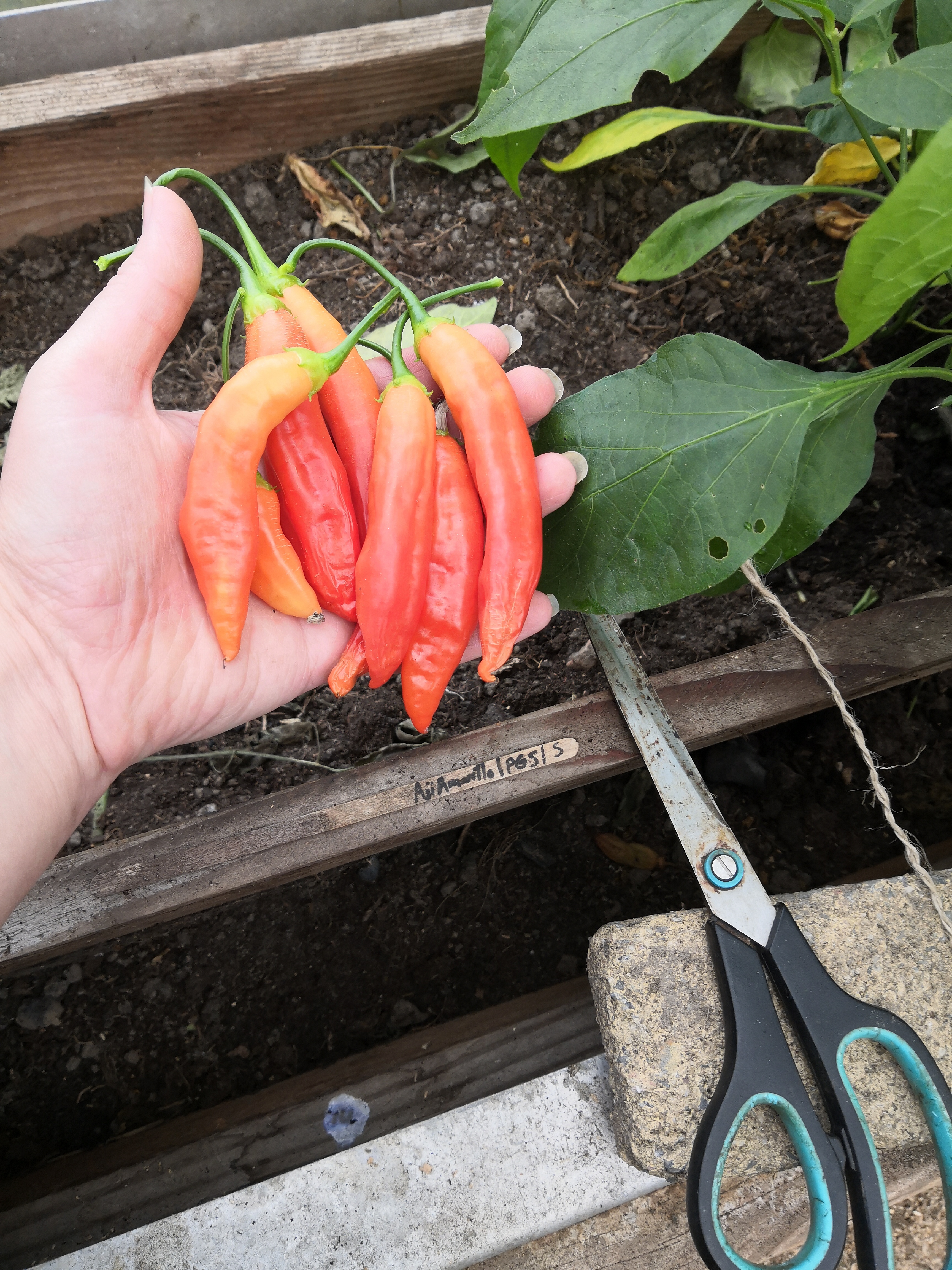
aji amarillo PGS
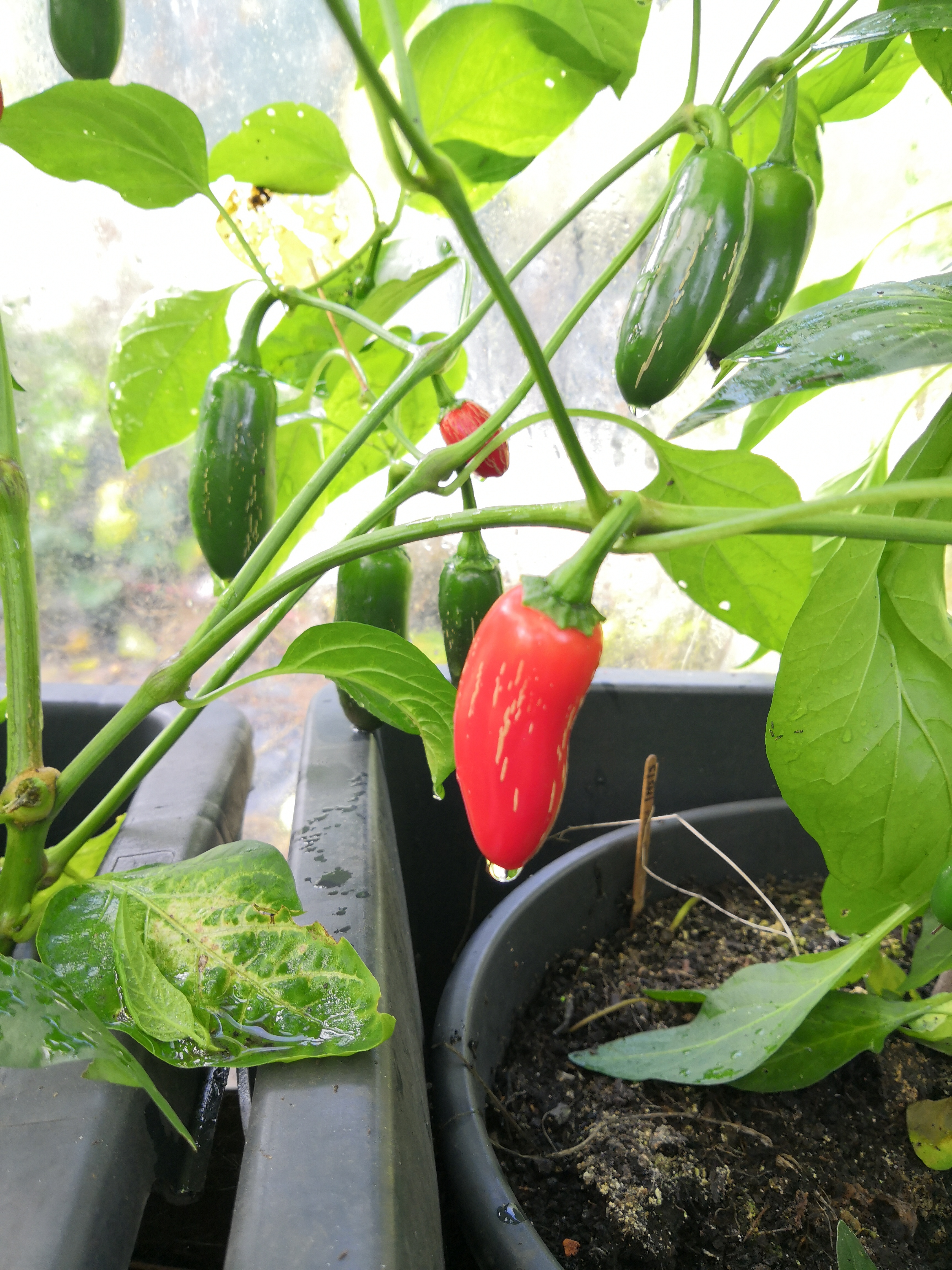
um ji put
C. annuum
Vendor: hippy seed
This is a fairly mild jalapeno, but gets five stars for production. Plants tend to be large and grow many peppers. They also tend to be more rounded in shape than most jalapenos.
C. annuum
Vendor: hippy seed
This is a fairly mild jalapeno, but gets five stars for production. Plants tend to be large and grow many peppers. They also tend to be more rounded in shape than most jalapenos.
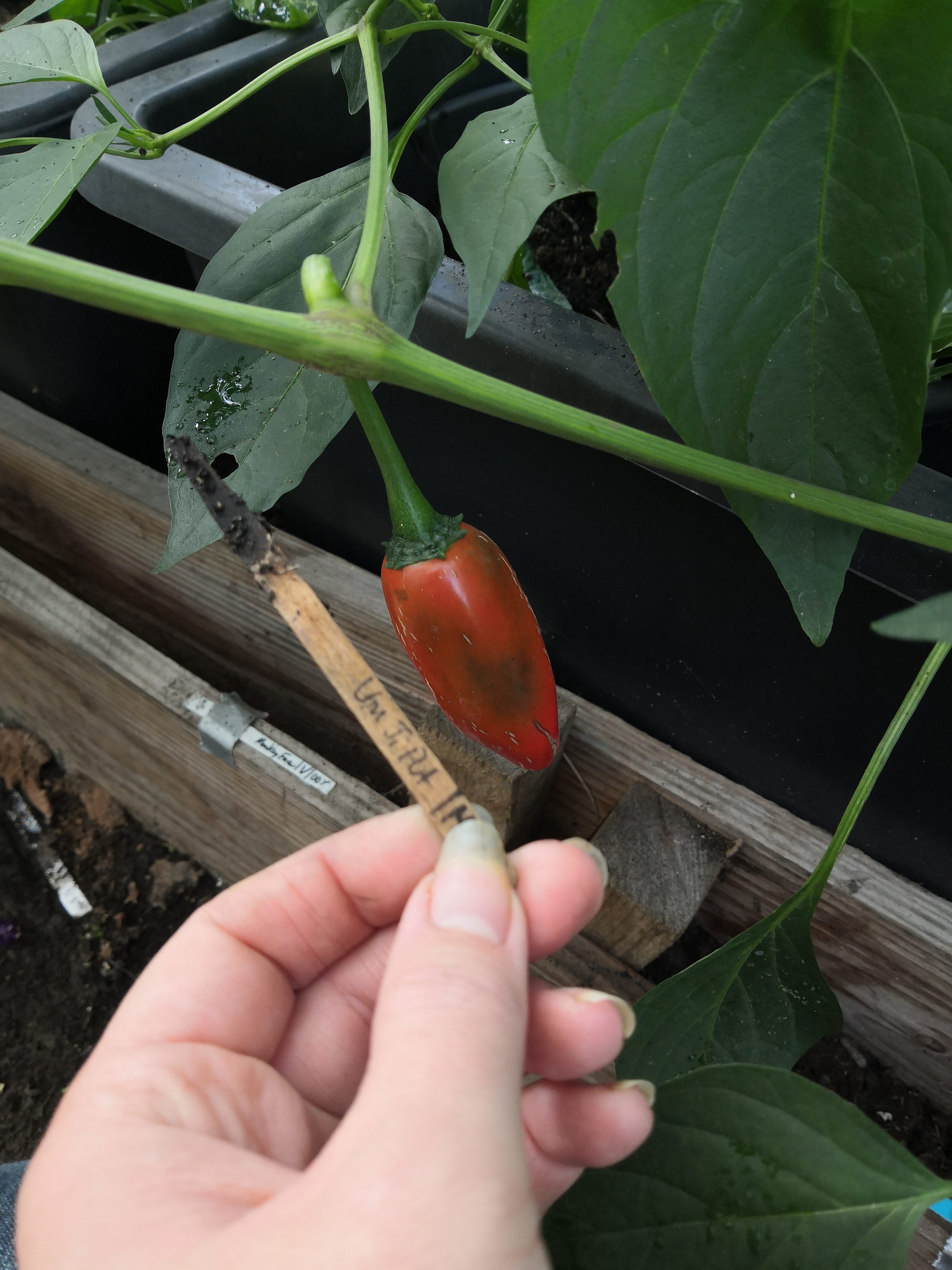
um ji put
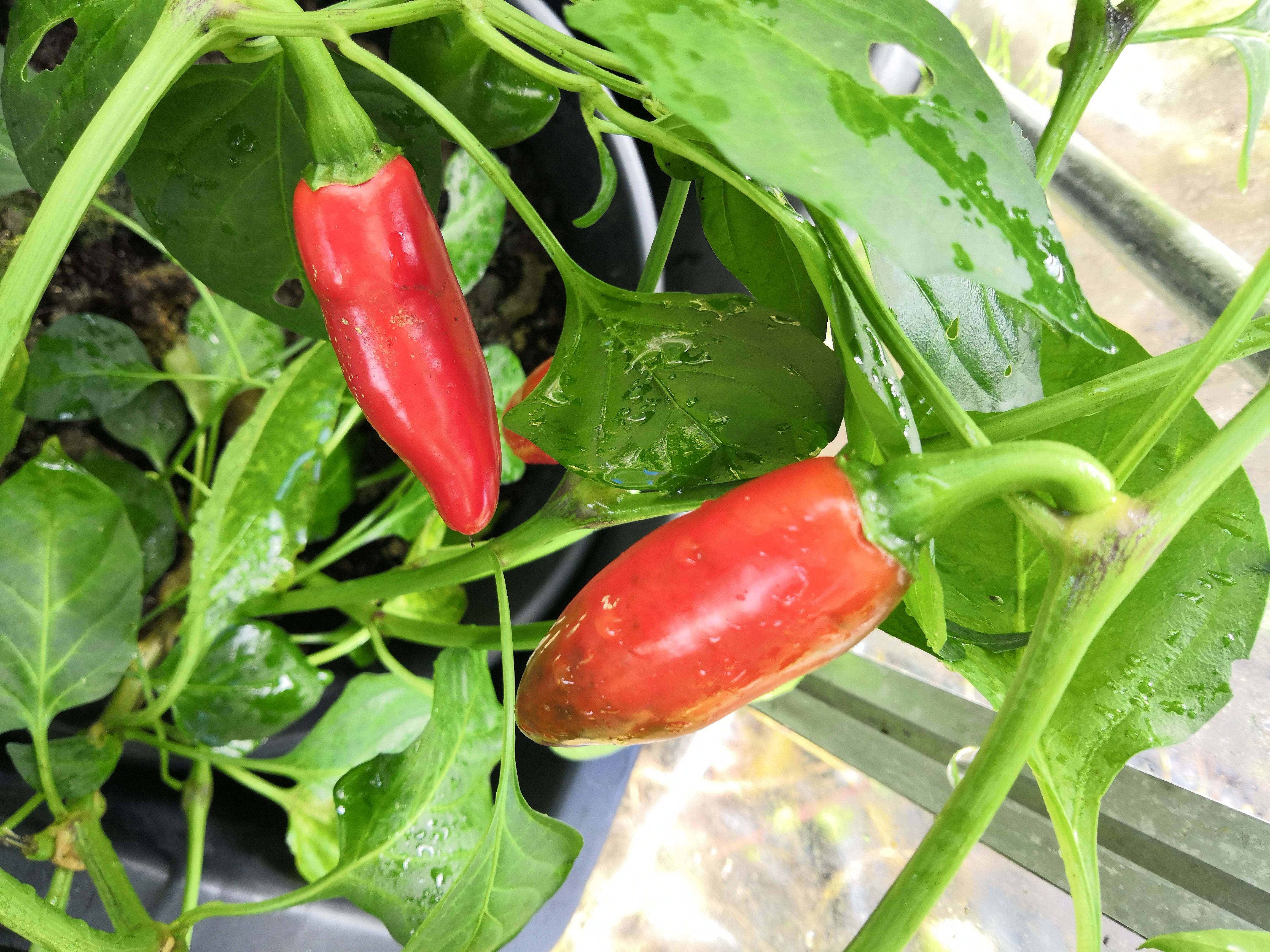
zapotec jalapeno
C. annuum
Vendor: refining fire
Finally, a jalapeno that produces hot peppers in our climate! Heat 5/10.
C. annuum
Vendor: refining fire
Finally, a jalapeno that produces hot peppers in our climate! Heat 5/10.
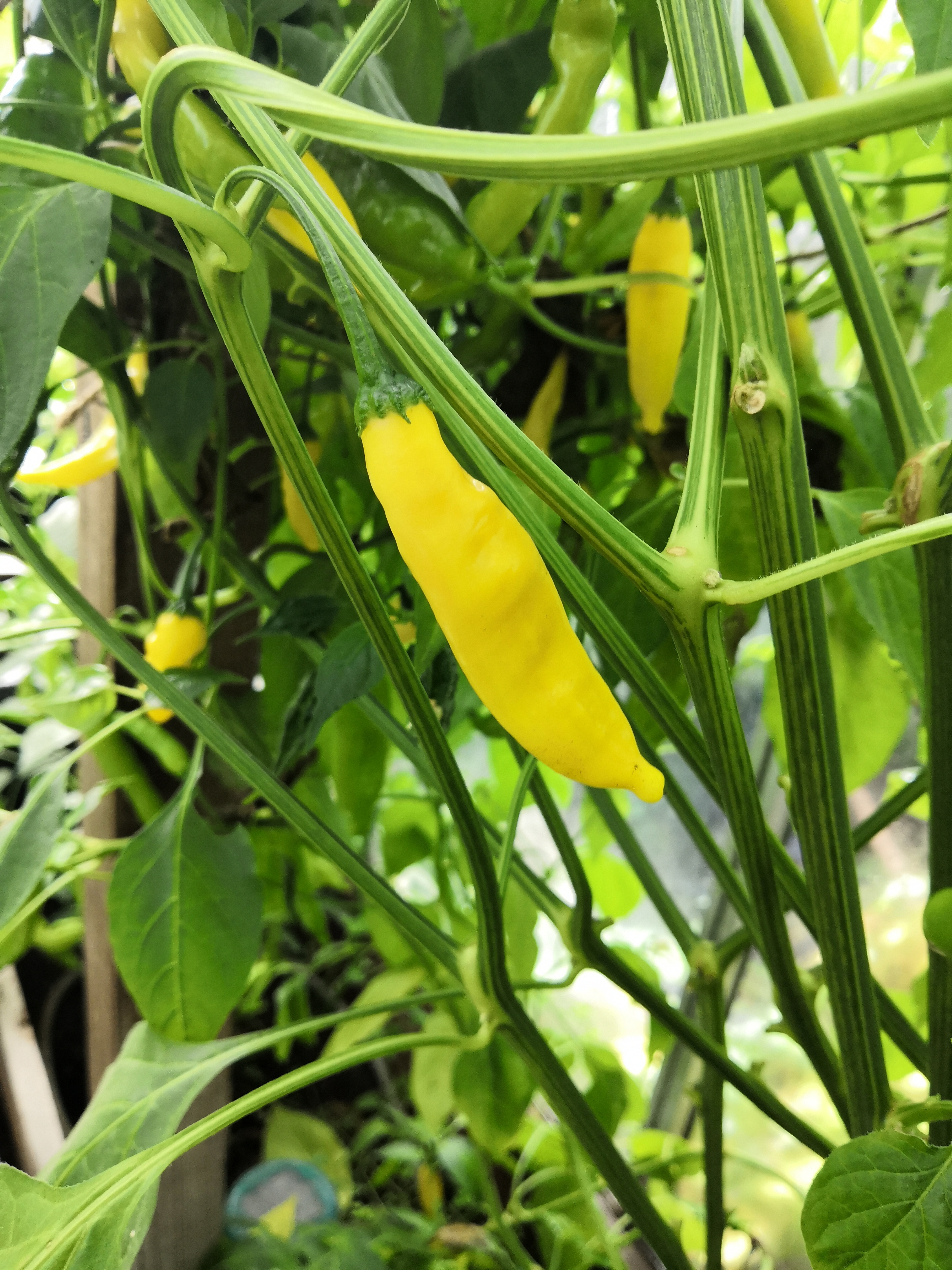
hot lemon
C. baccatum
C. baccatum
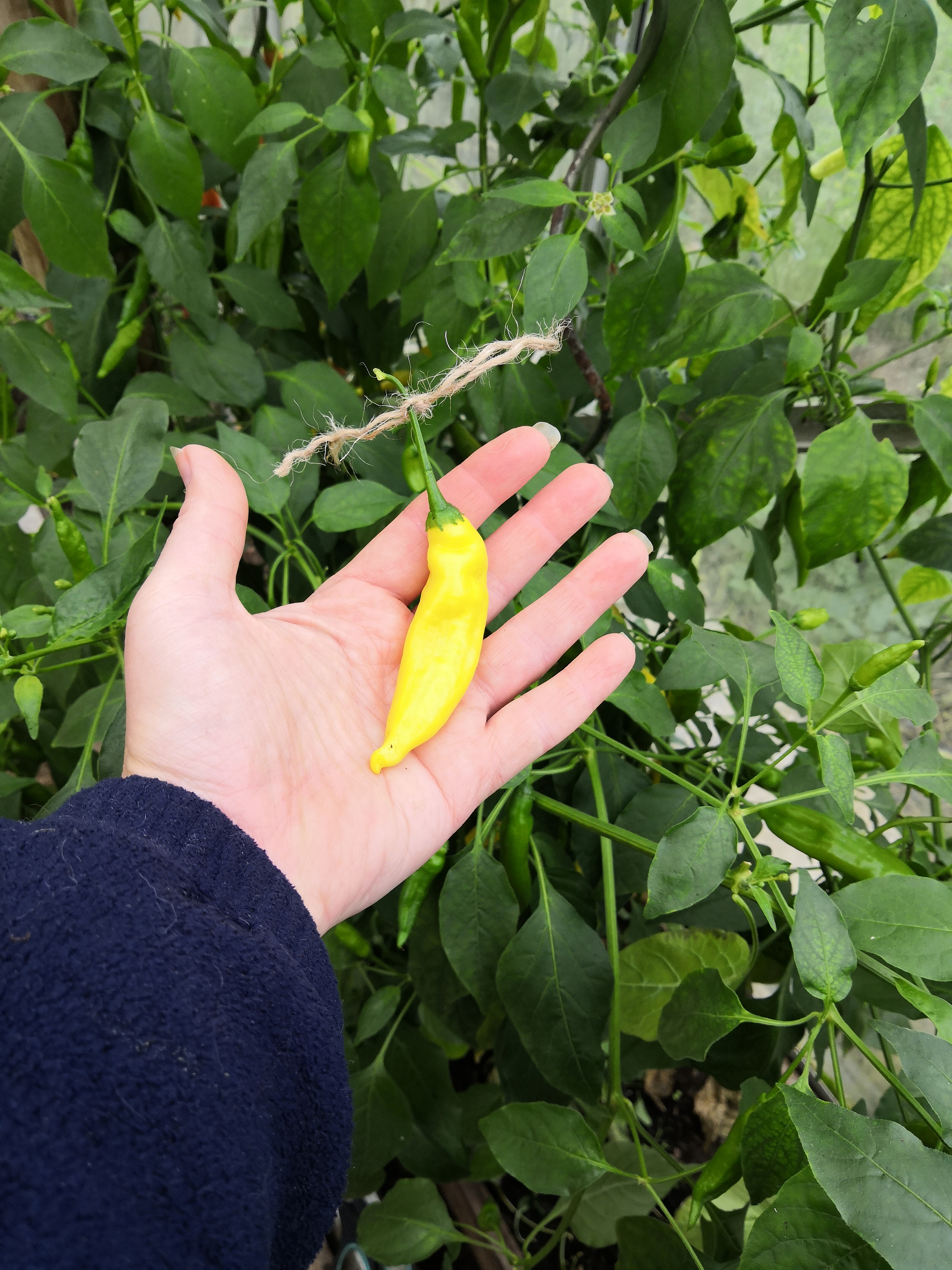
hot lemon
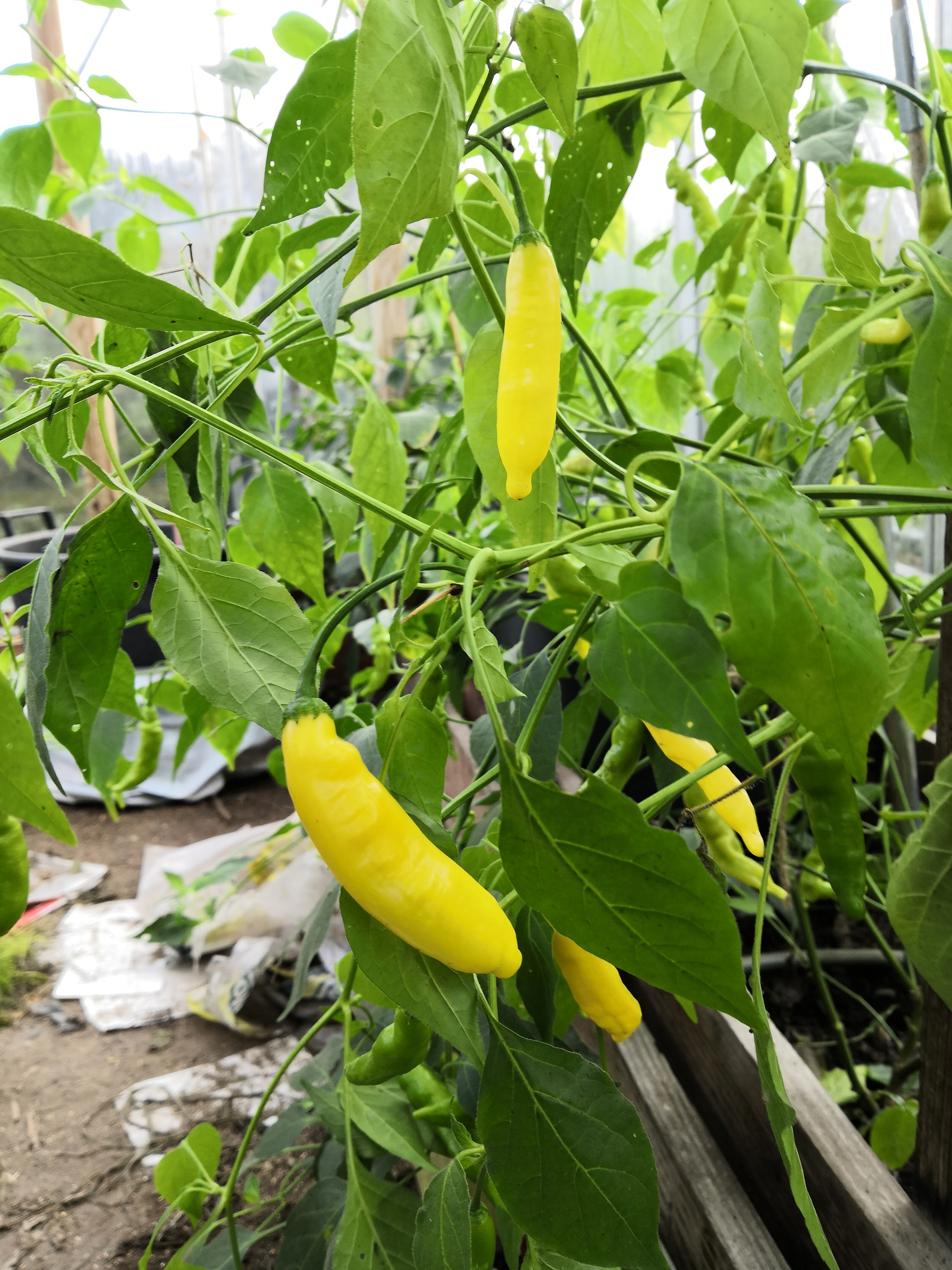
hot lemon
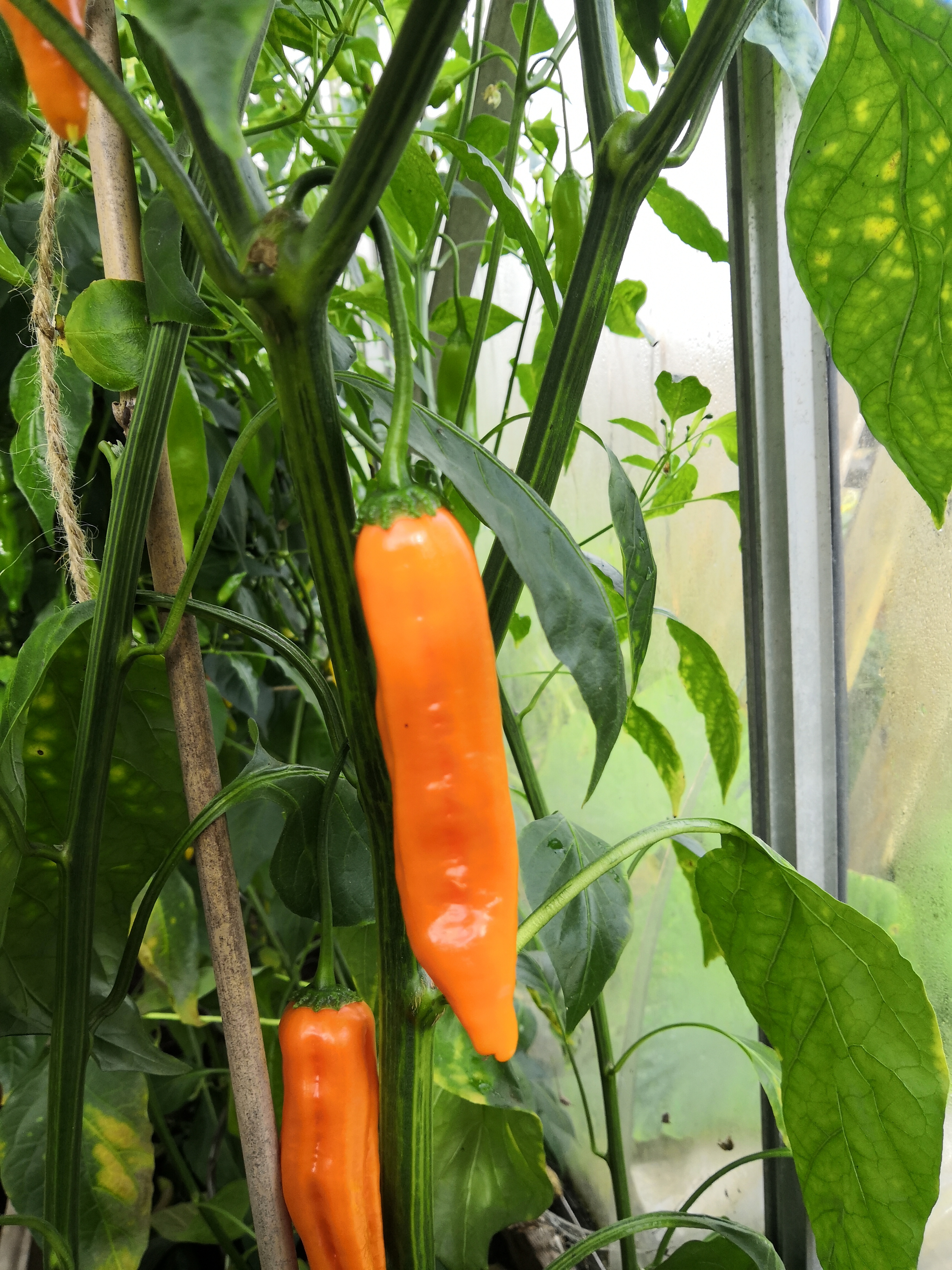
aji amarillo RF
C. baccatum
Vendor: refining fire
Similar to other aji amarillos, with a bit thinner walls and a bit more heat than average. Very similar to Franco's aji. Heat 5/10.
C. baccatum
Vendor: refining fire
Similar to other aji amarillos, with a bit thinner walls and a bit more heat than average. Very similar to Franco's aji. Heat 5/10.
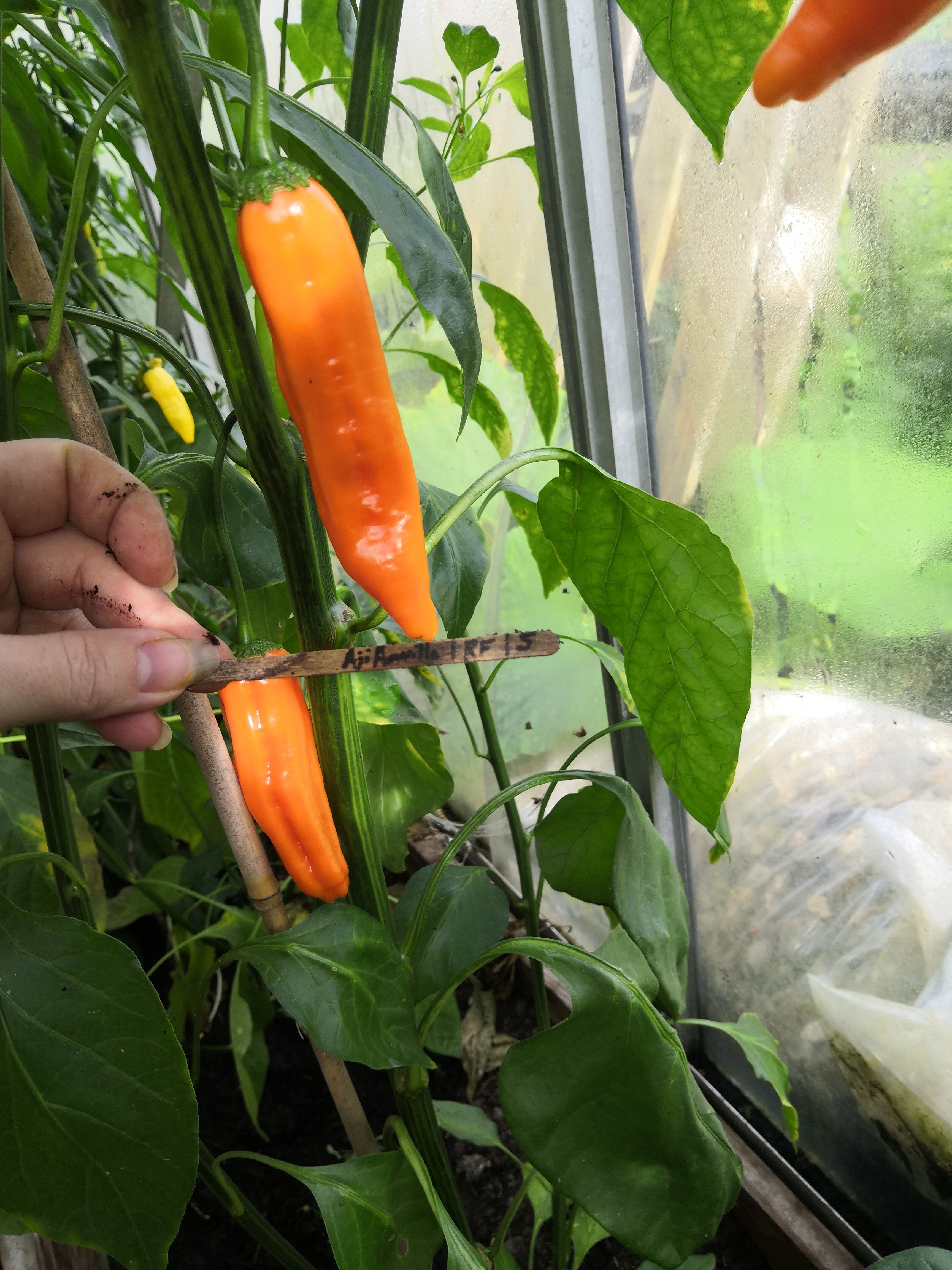
aji amarillo RF
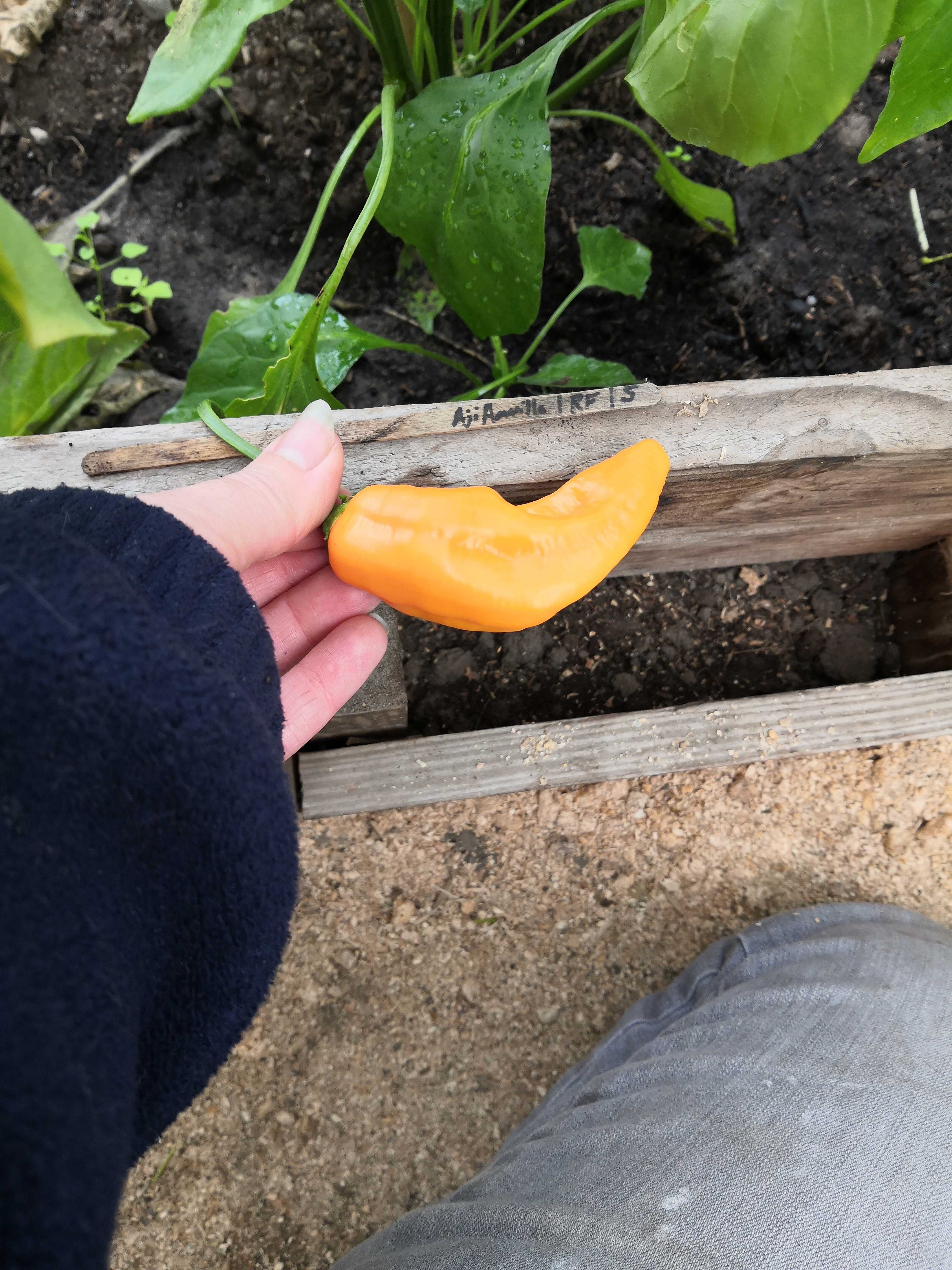
aji amarillo RF
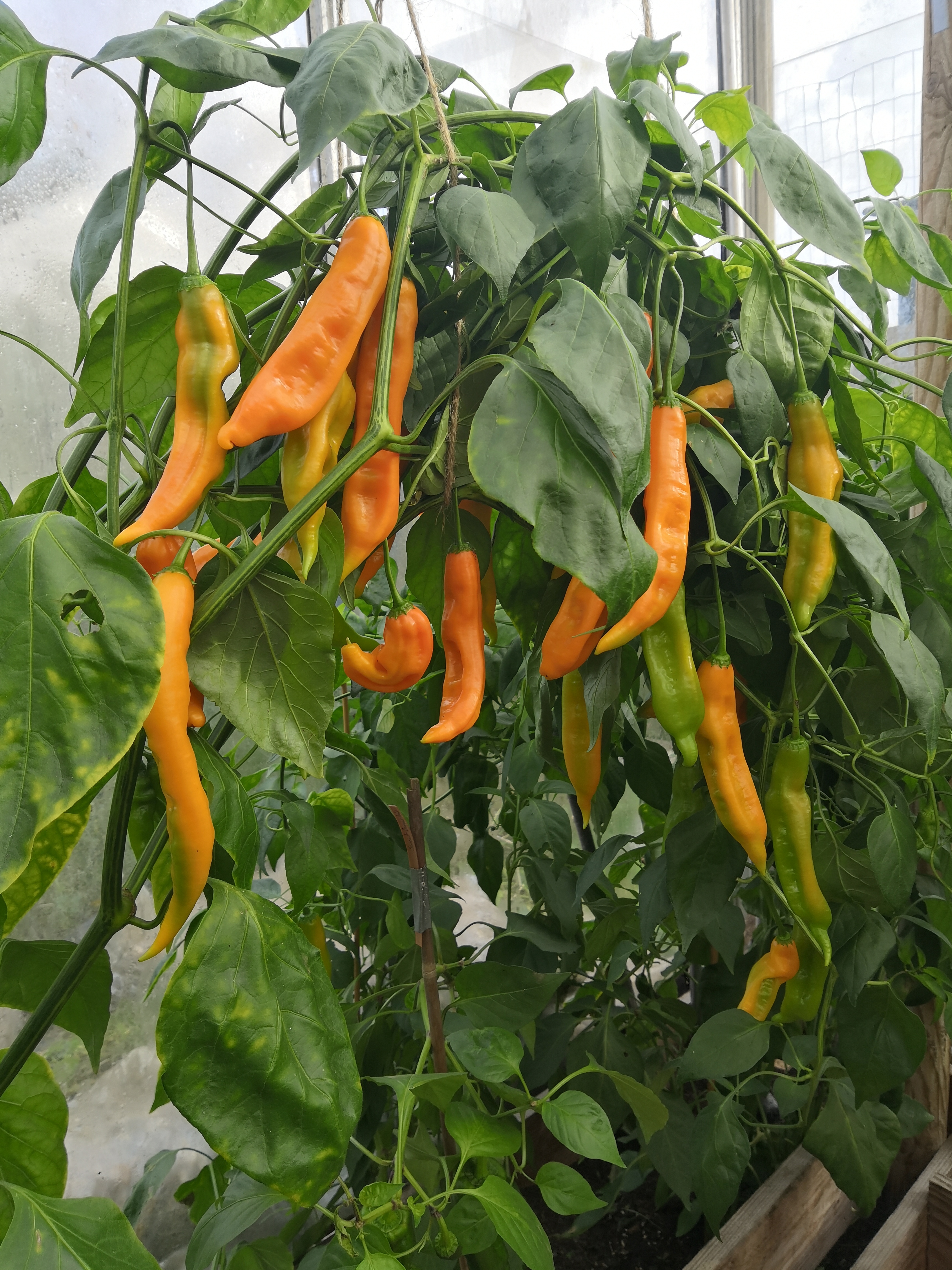
aji amarillo RF
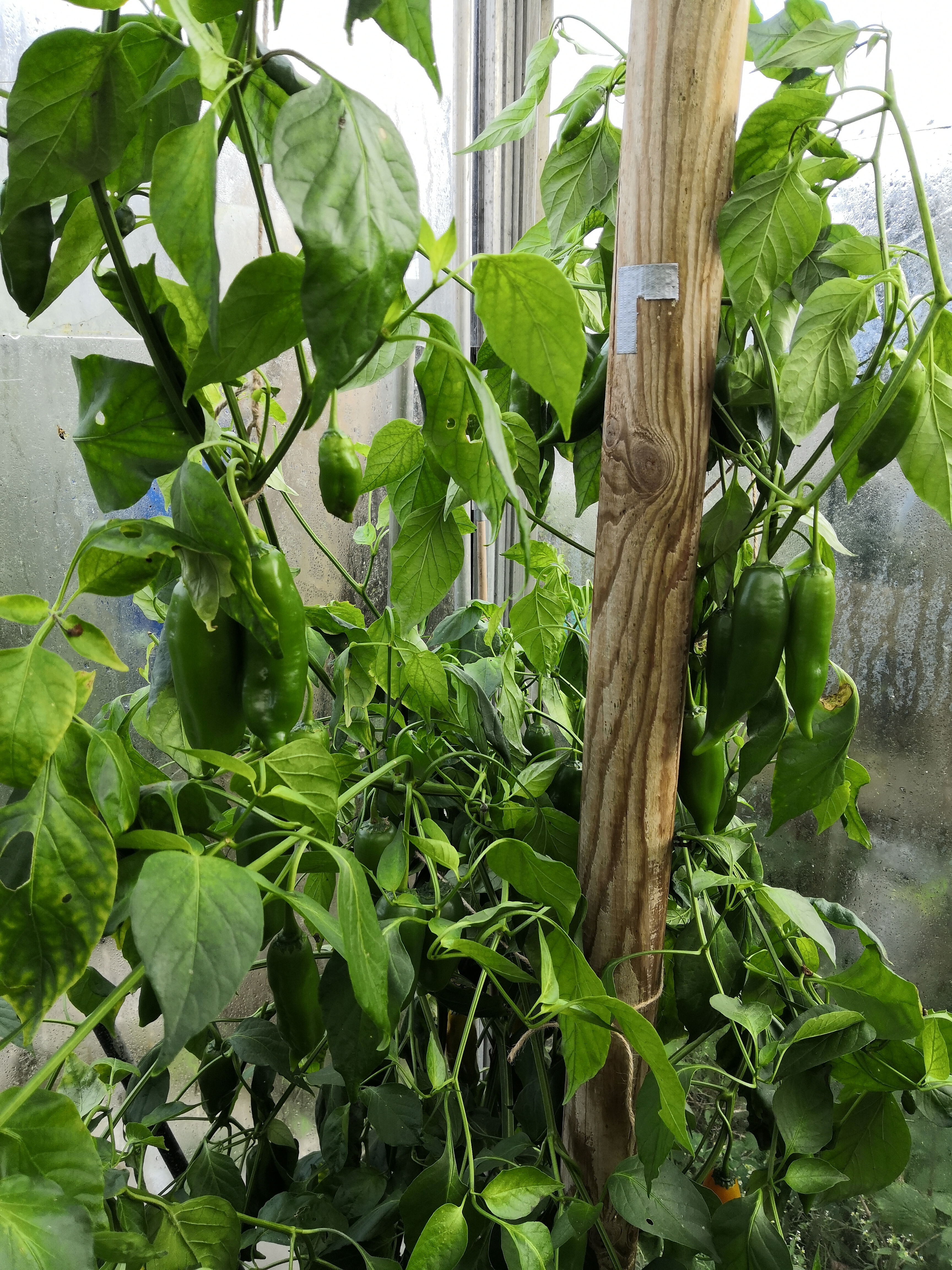
aji amarillo RF
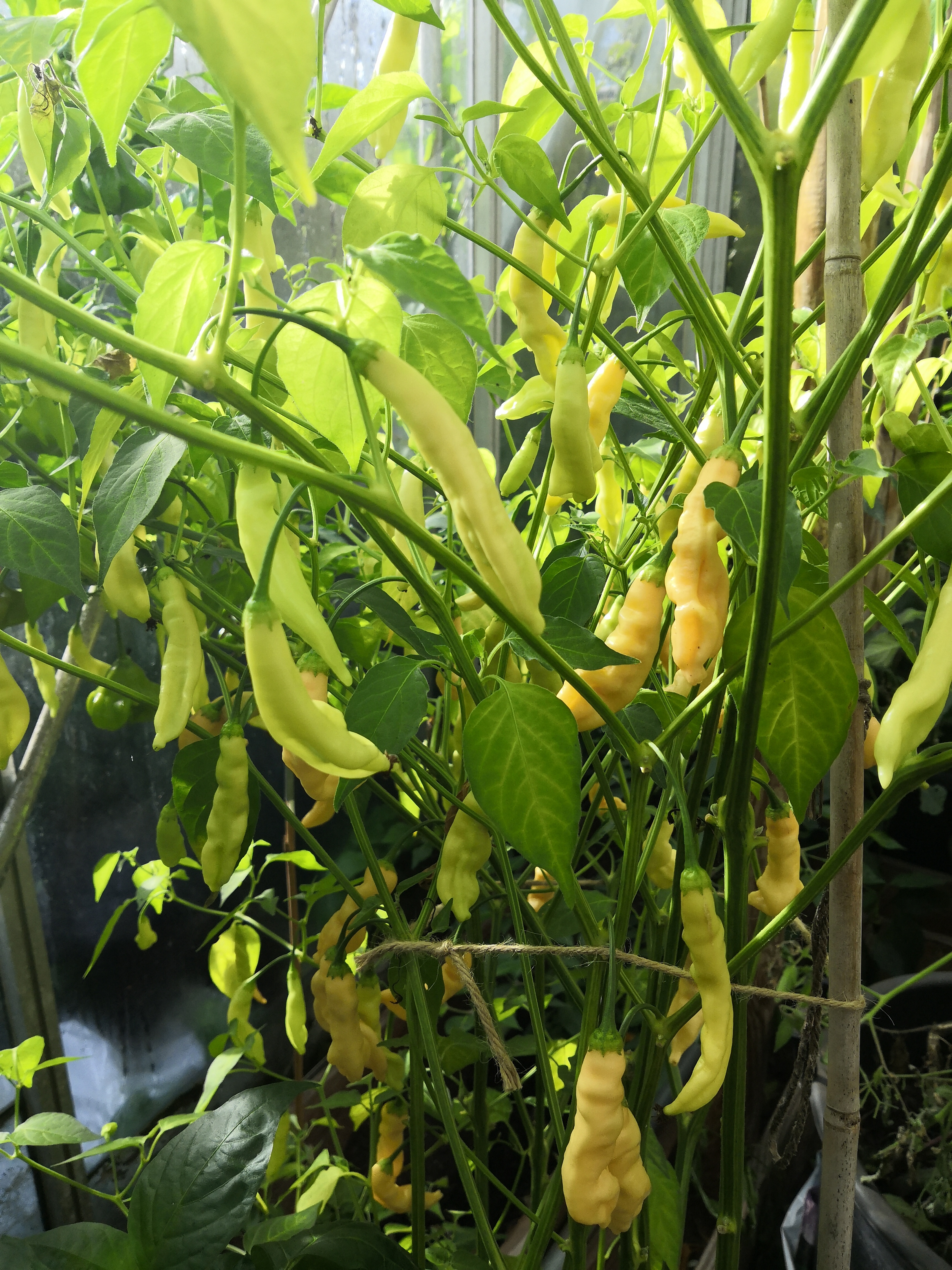
aji melocoton
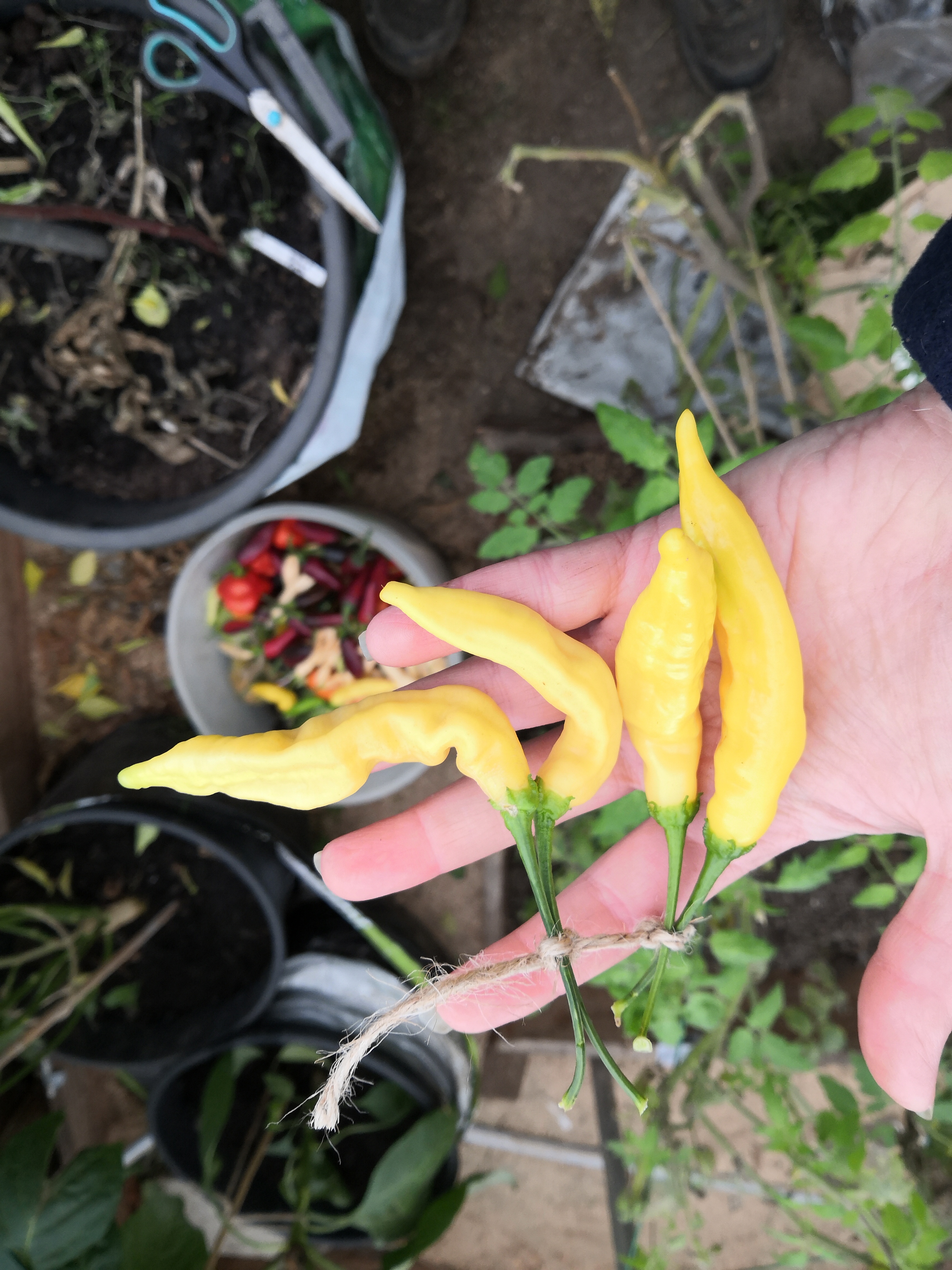
aji melocoton
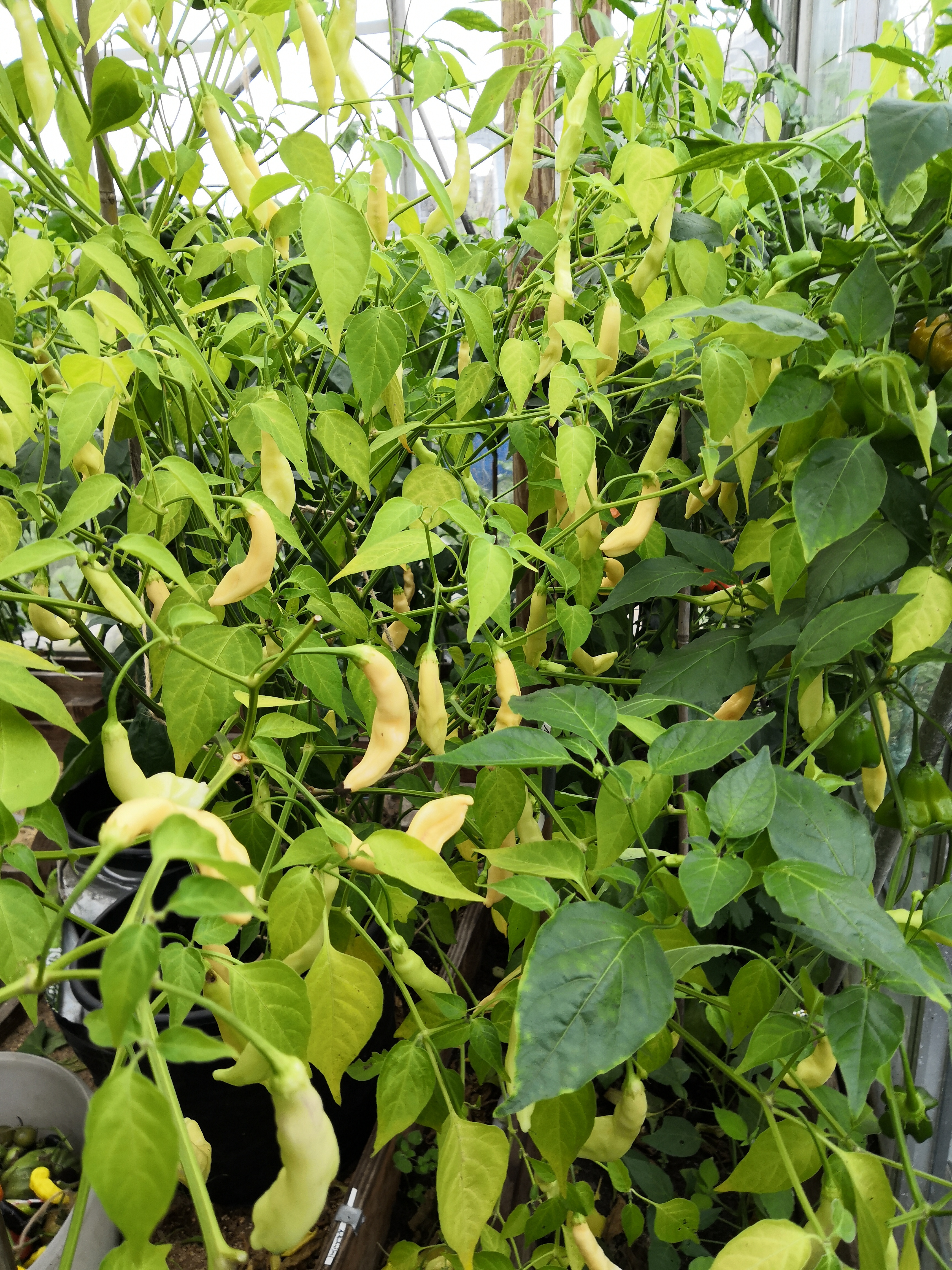
aji melocoton
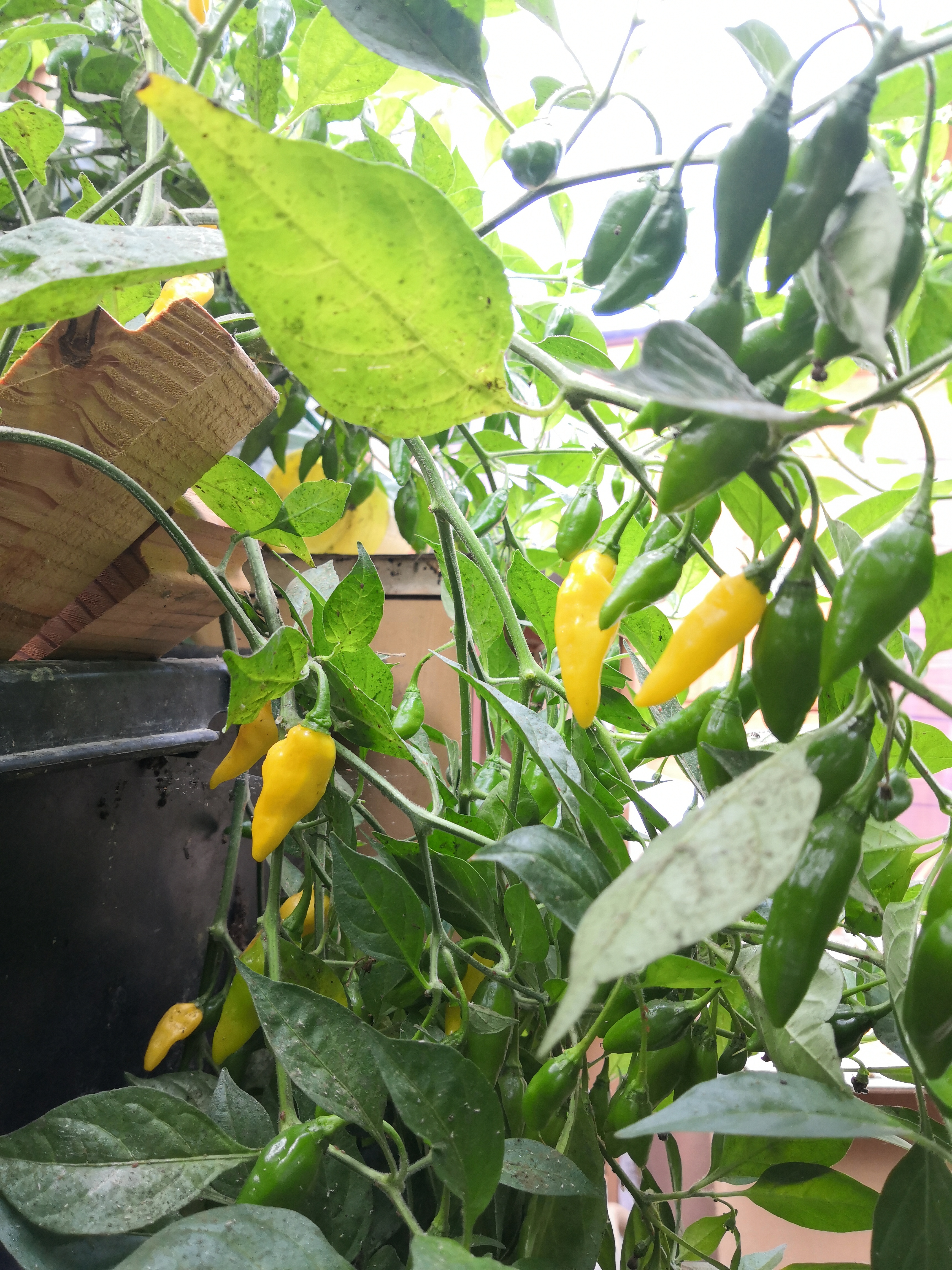
habenero hot lemon
C. chinense
Vendor: magic garden
Very productive and with a shape that's very normal for most peppers, but very unusual for a chinense. The flavor is similar to other habeneros. Heat 9/10.
C. chinense
Vendor: magic garden
Very productive and with a shape that's very normal for most peppers, but very unusual for a chinense. The flavor is similar to other habeneros. Heat 9/10.
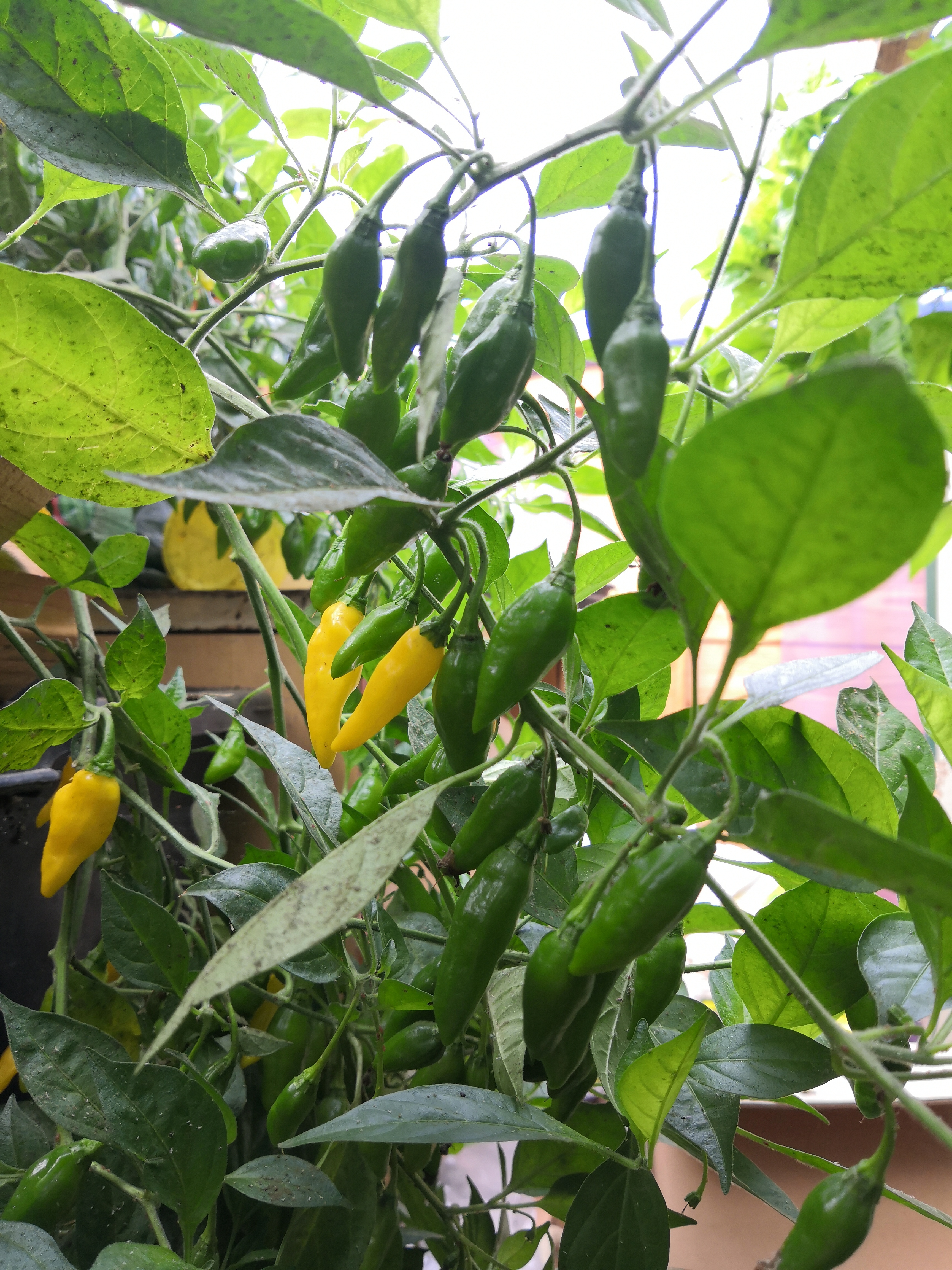
habenero hot lemon
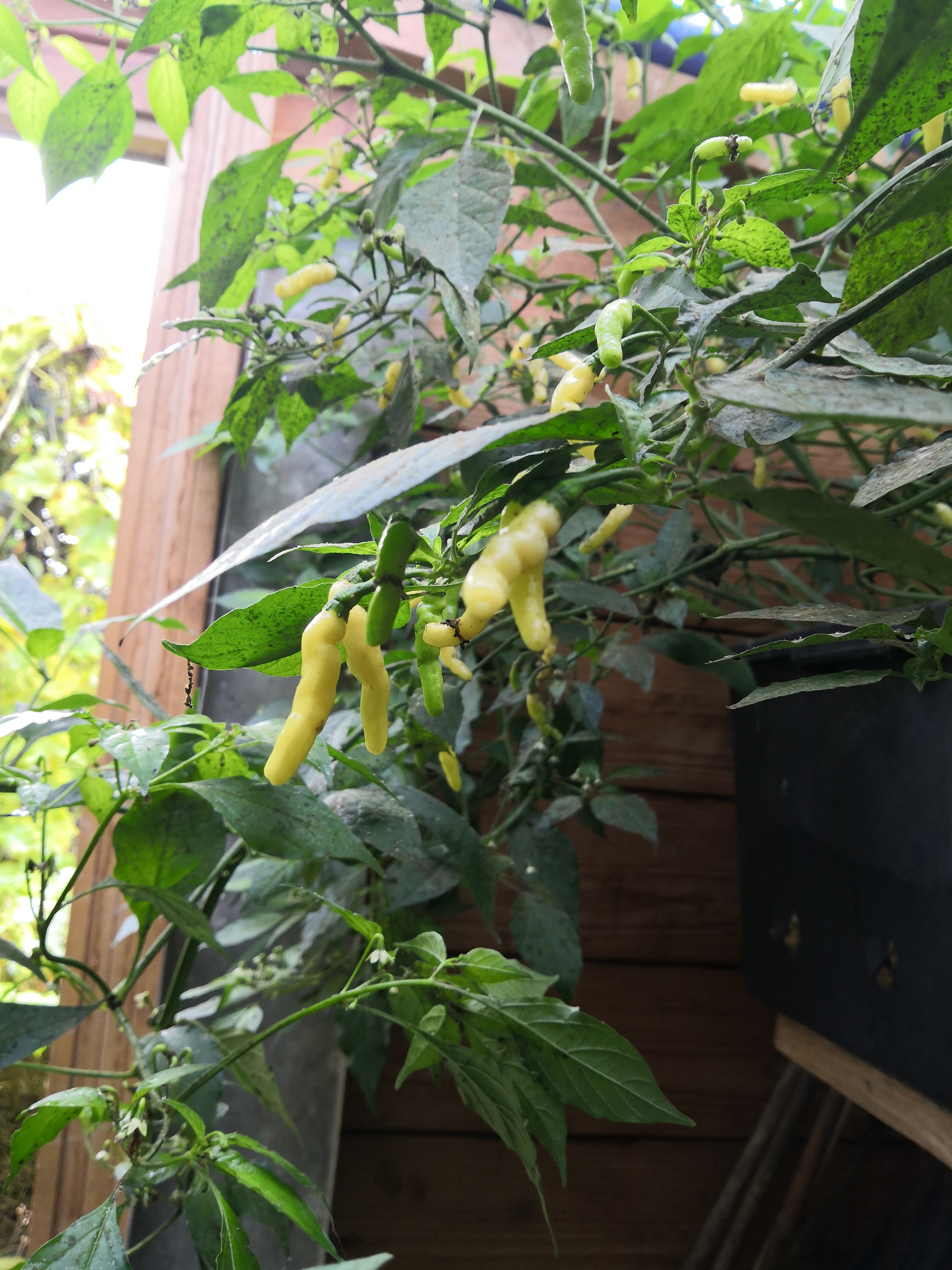
aribibi gusano
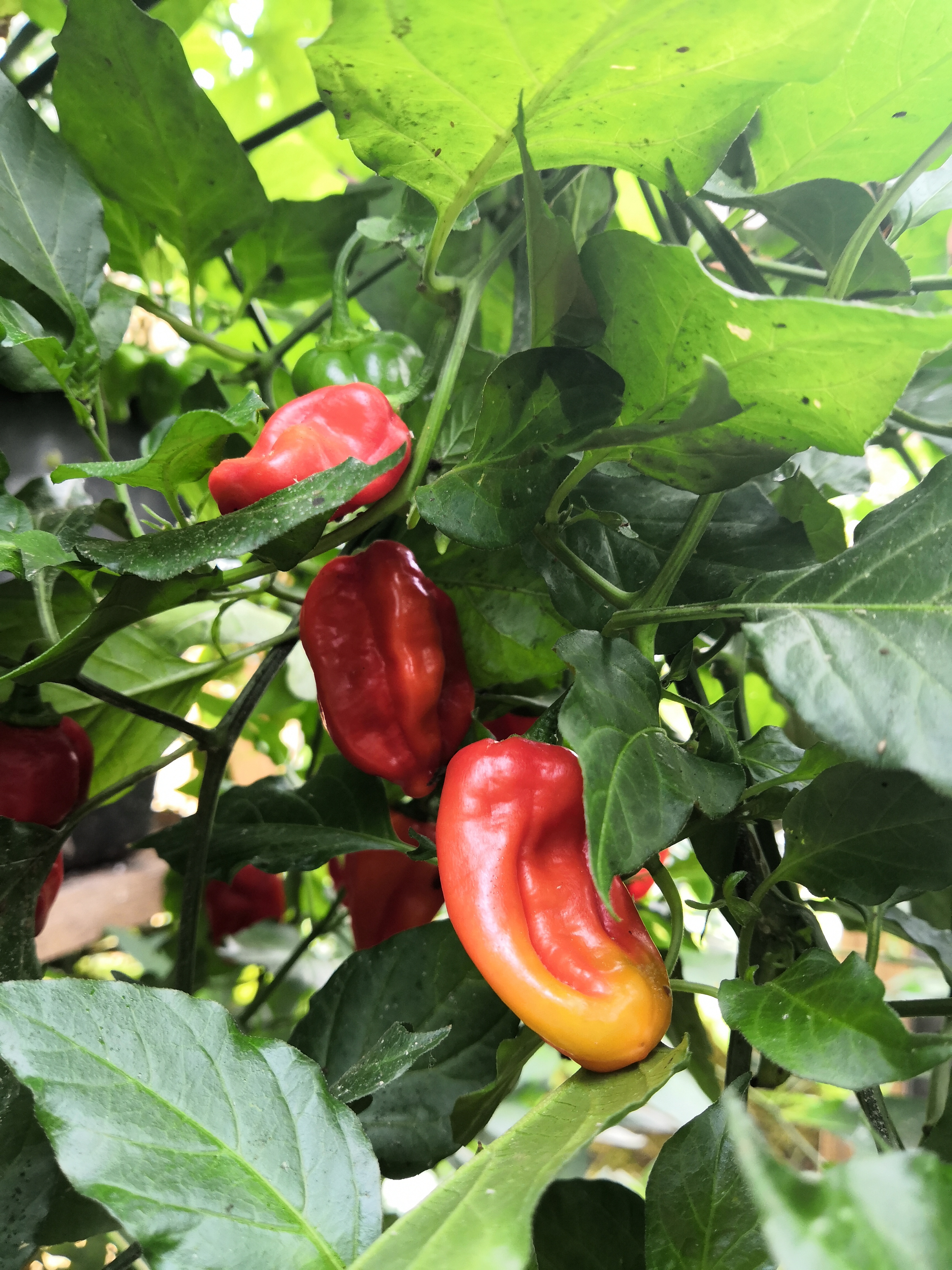
scotch bonnet
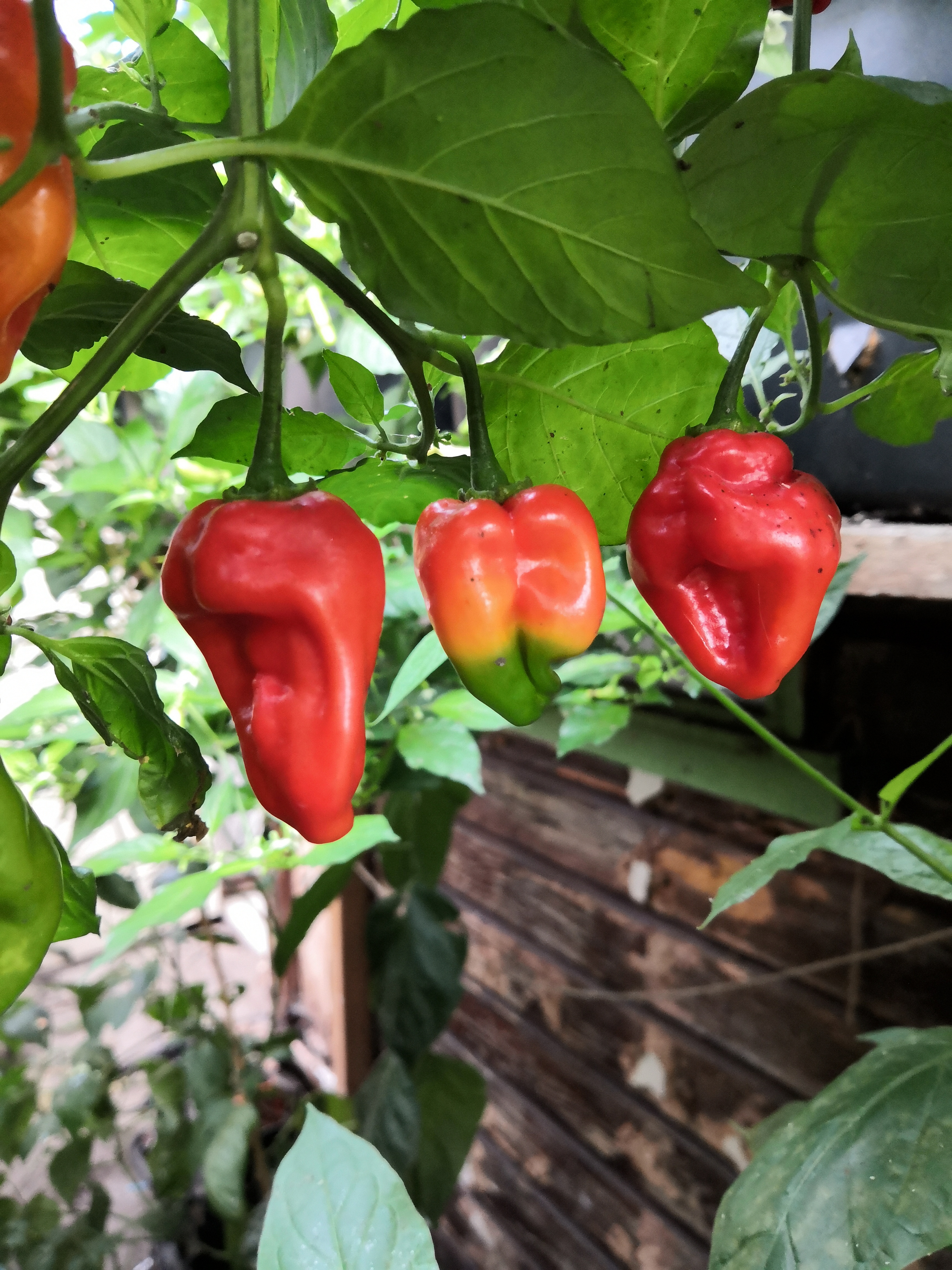
scotch bonnet
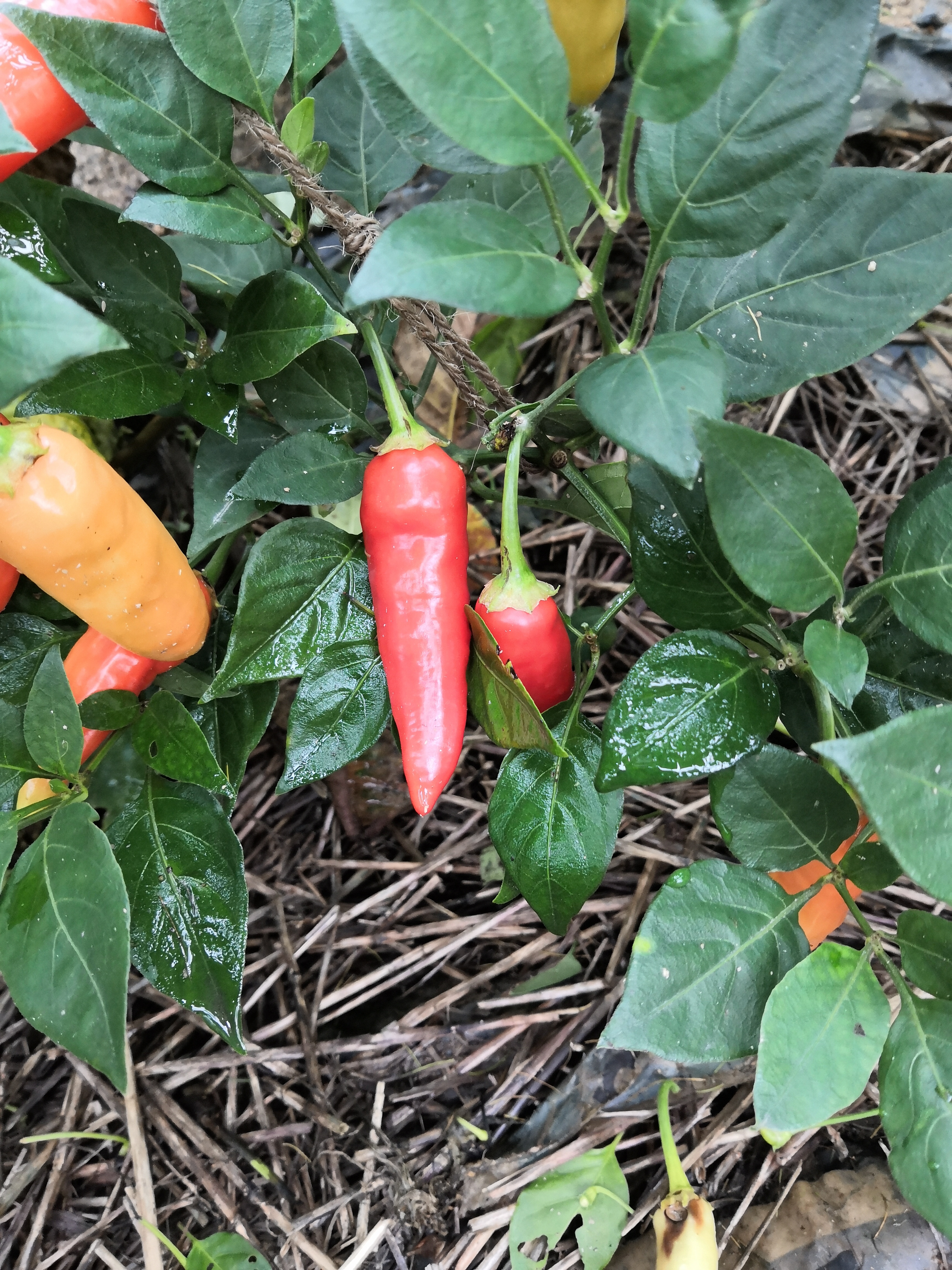
aji crystal
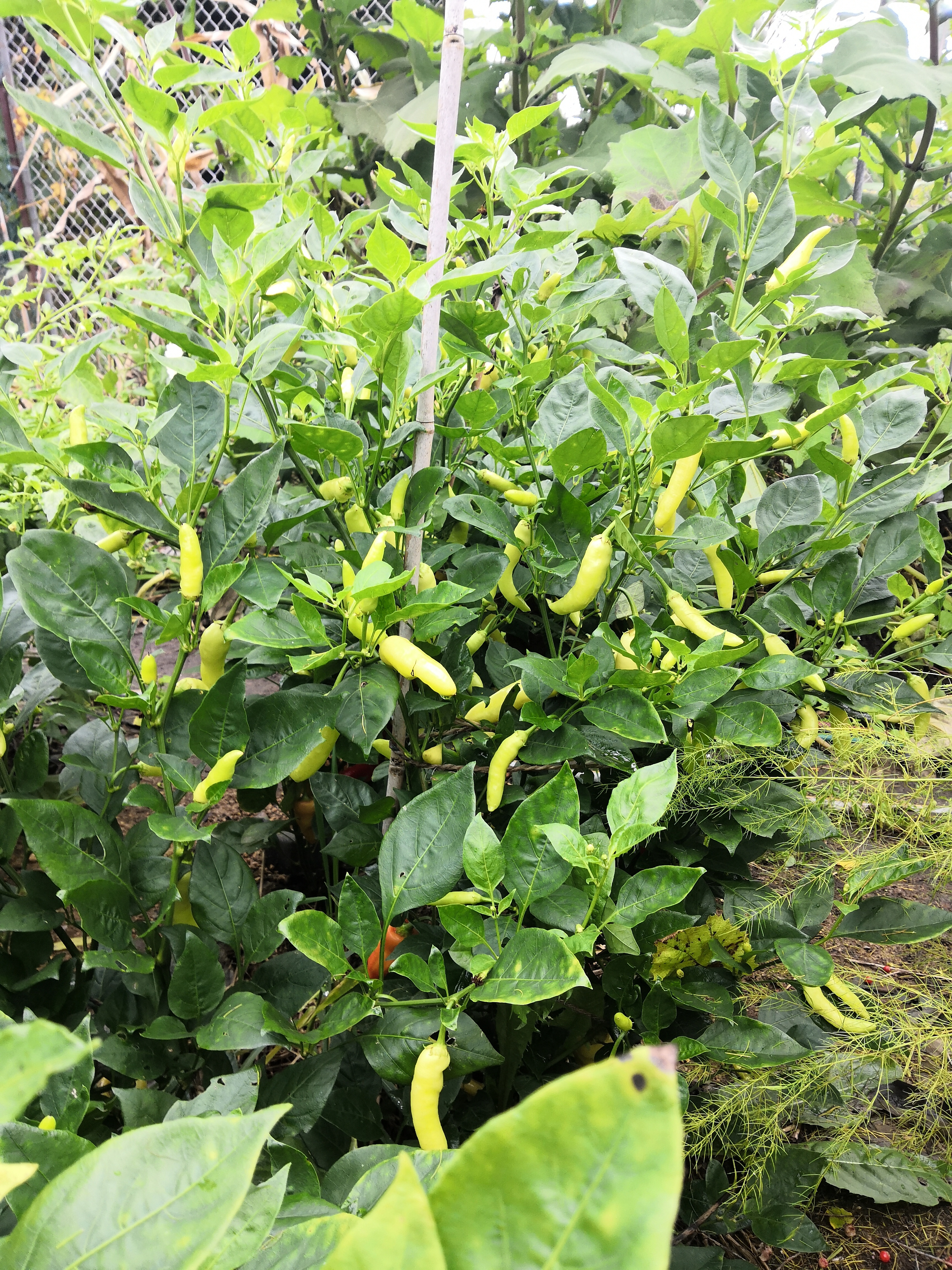
aji crystal
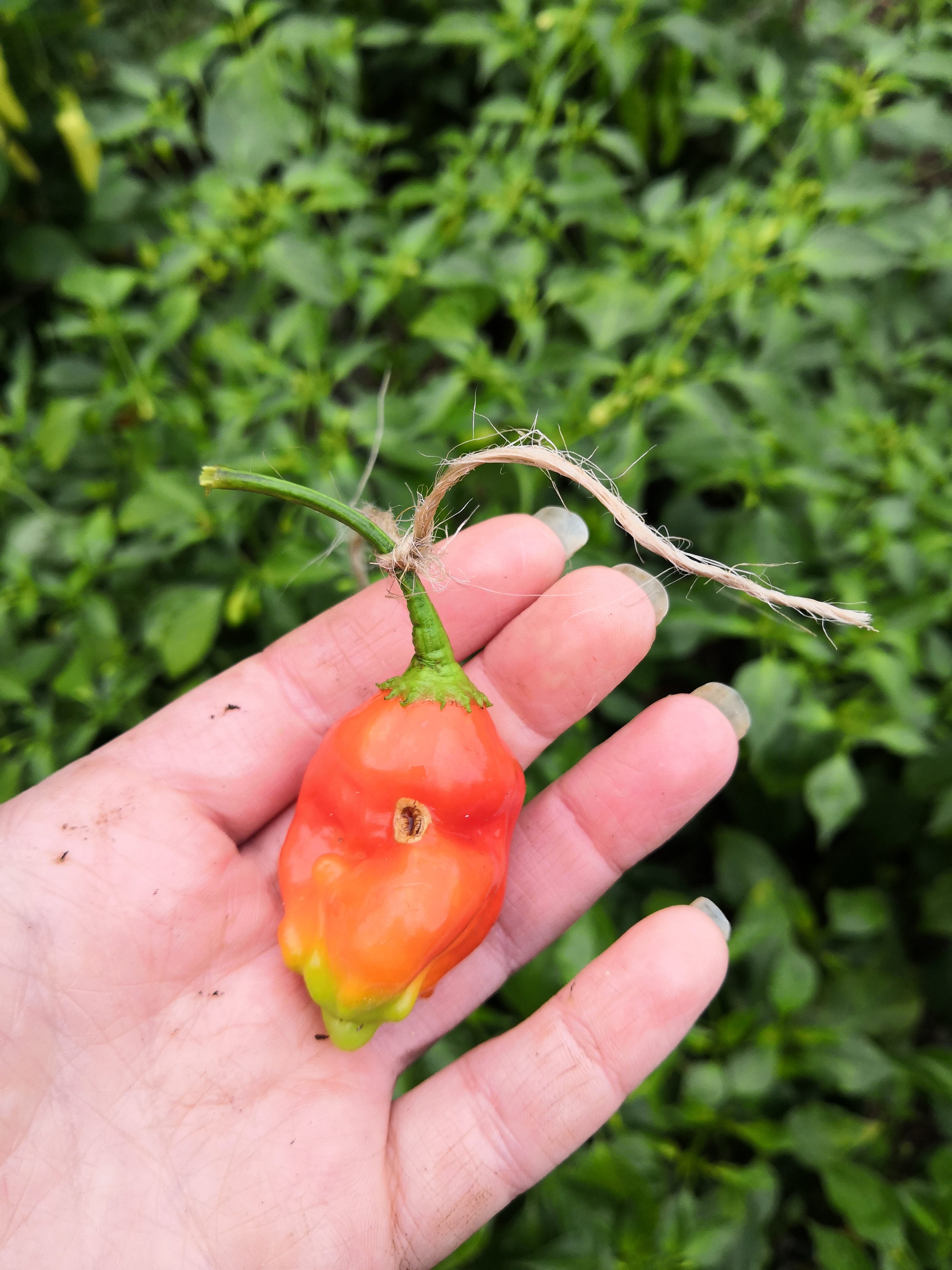
dulce dolor
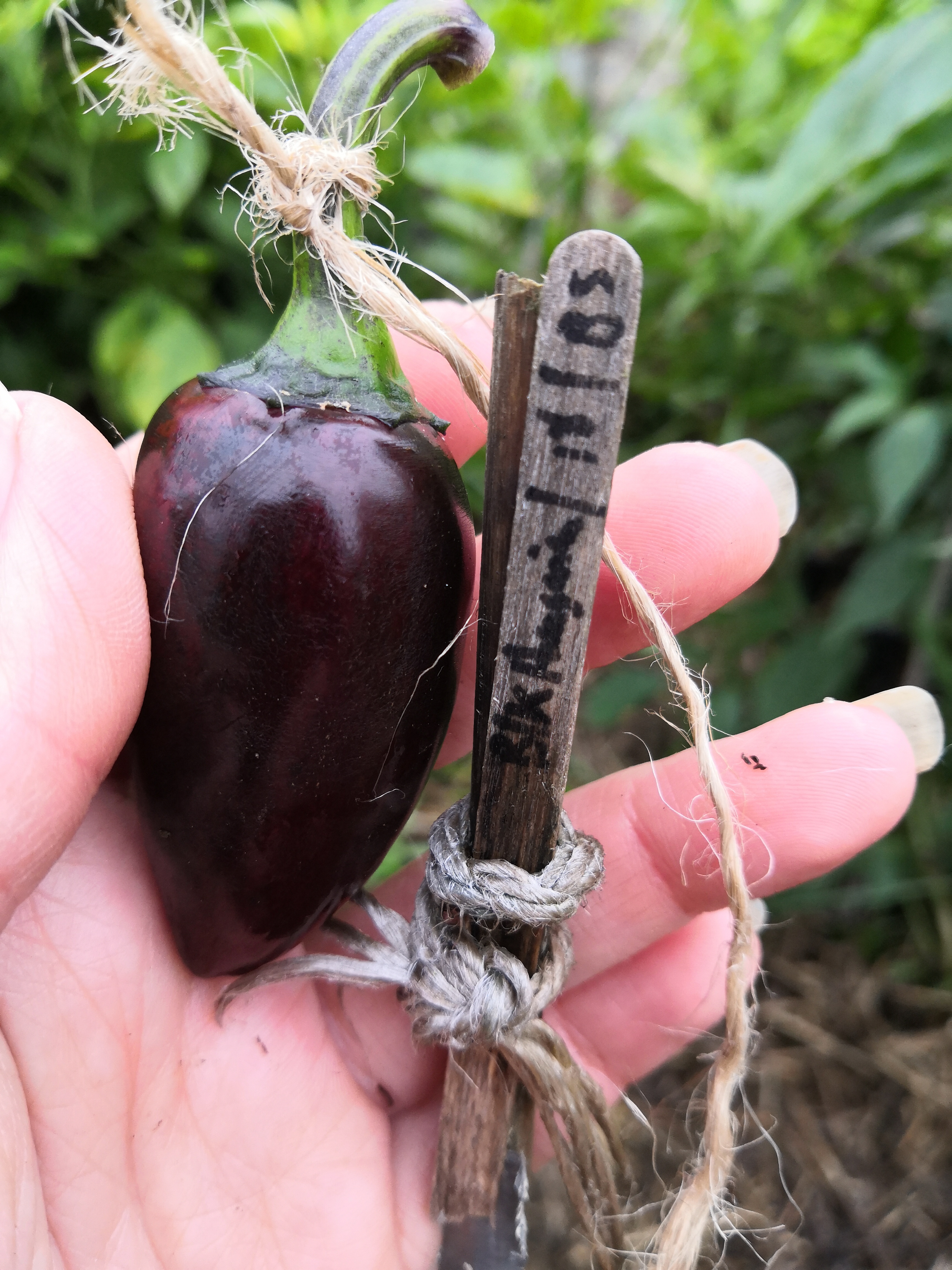
black hungarian
C. annuum
Vendor: peperzaden
As far as I can tell, identical to the Czech black.
C. annuum
Vendor: peperzaden
As far as I can tell, identical to the Czech black.
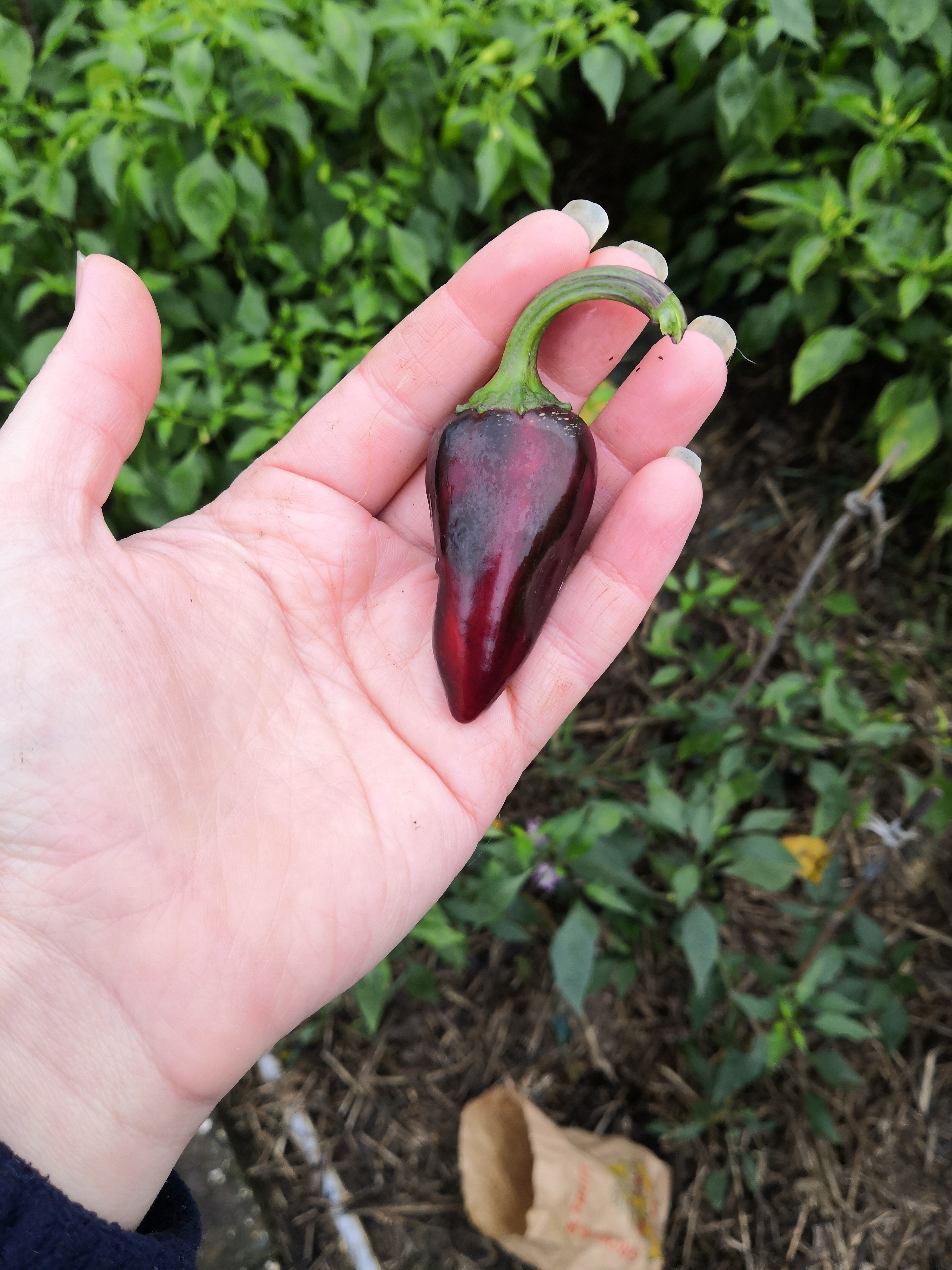
czech black
This was one of the first peppers that I grew, and I've grown it every year since. Very pretty purple-black pepper that ripens to burgandy red. Heat is present but typically very mild; about 1 in 20 individual peppers will have more spice. Has a very nice flavor. Heat 2/10.
This was one of the first peppers that I grew, and I've grown it every year since. Very pretty purple-black pepper that ripens to burgandy red. Heat is present but typically very mild; about 1 in 20 individual peppers will have more spice. Has a very nice flavor. Heat 2/10.
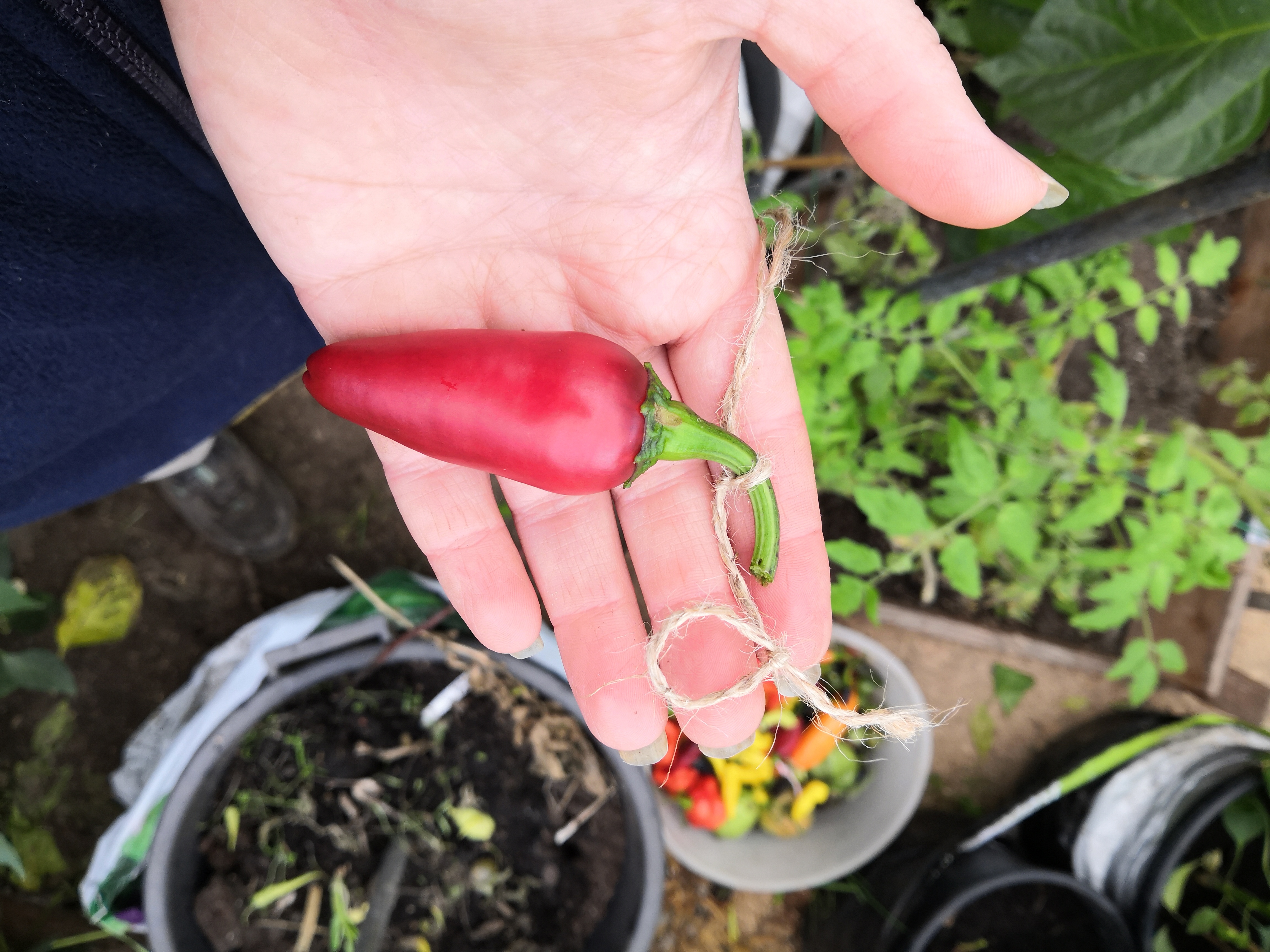
Czech black
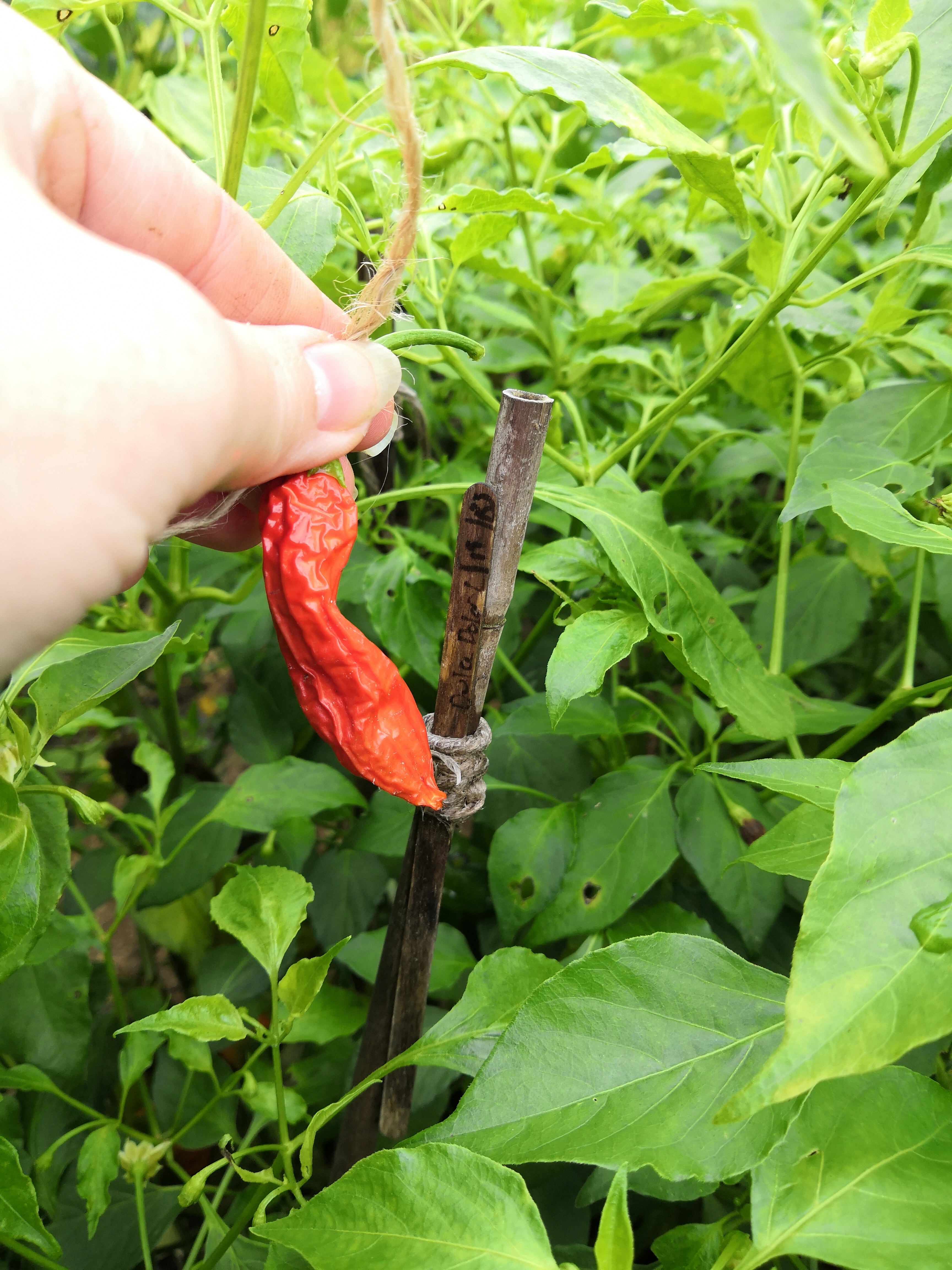
dulce dolor (long phenotype)
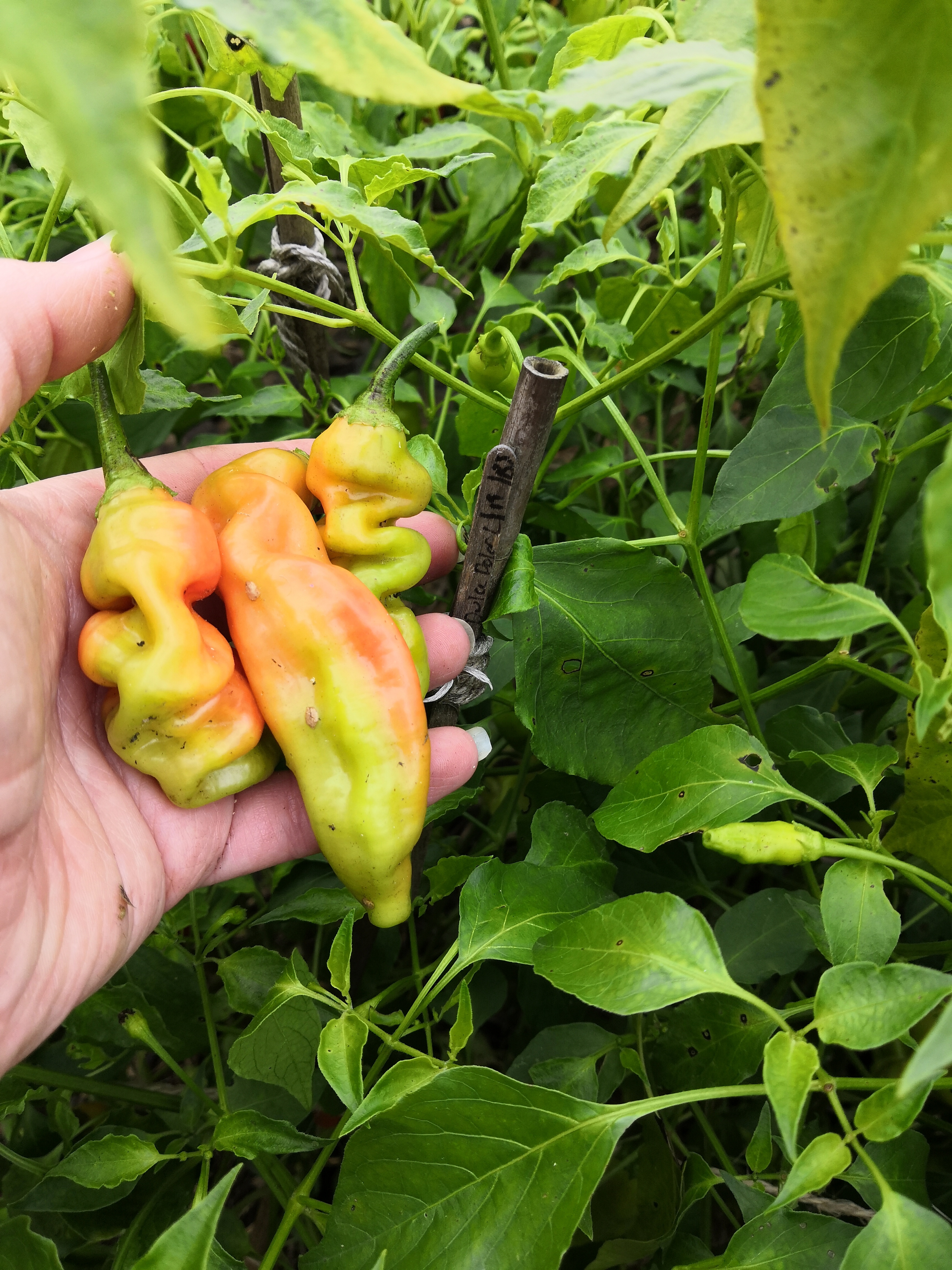
dulce dolor
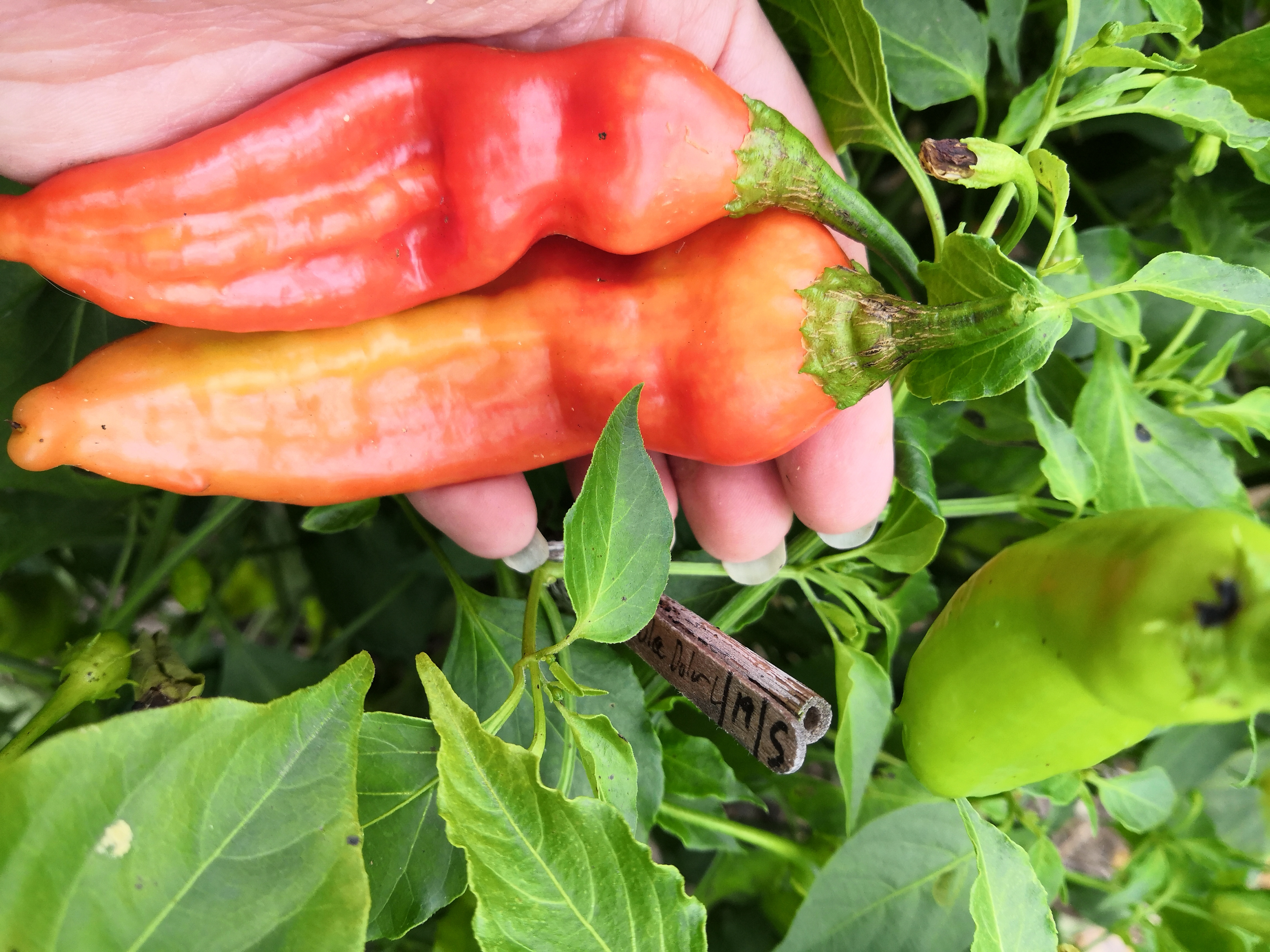
dulce dolor
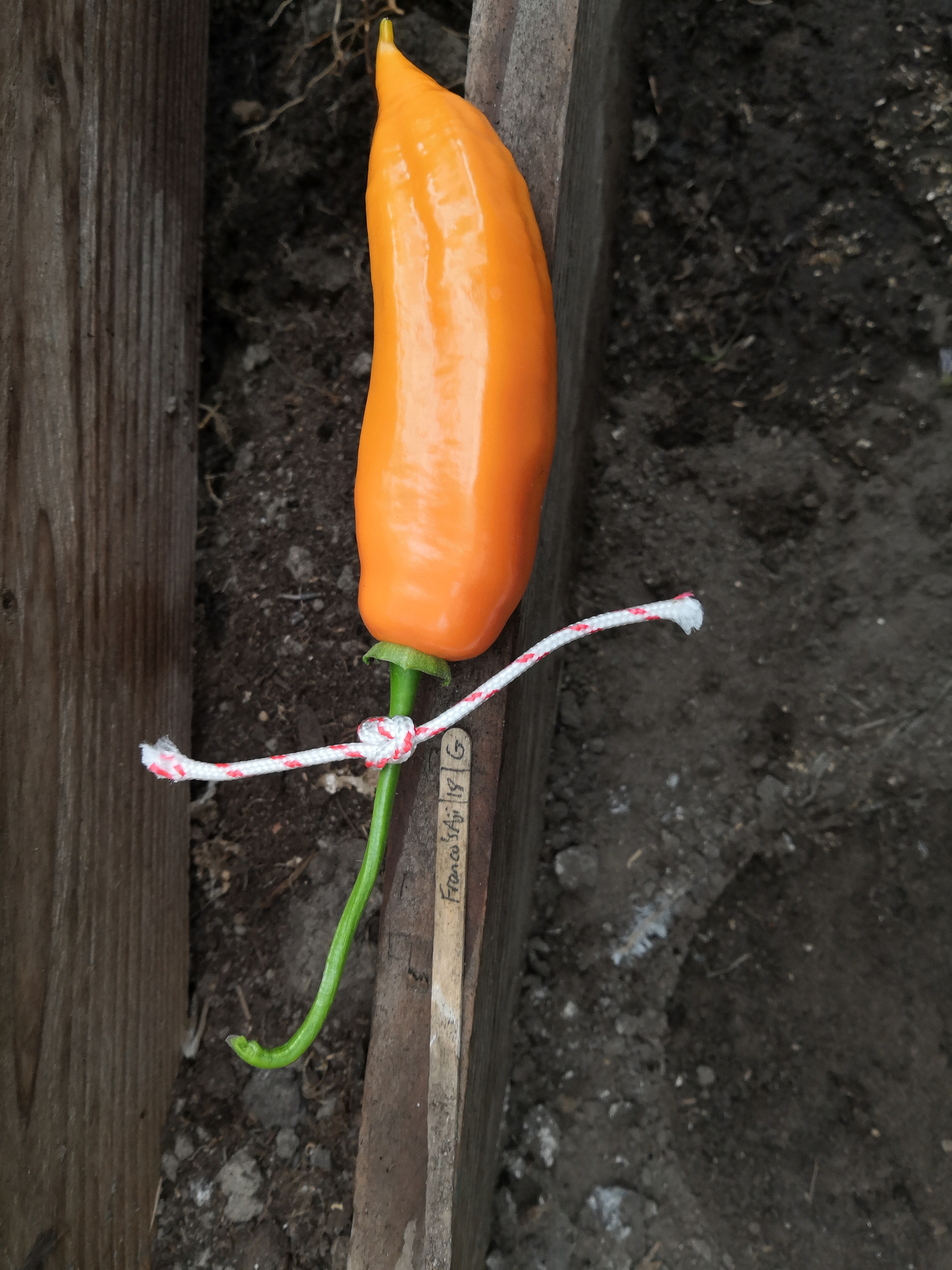
Franco's aji
C. baccatum
Vendor: Semillas la palma
Closely resembles an aji amarillo. Tends to be a bit thinner-walled and hotter. Heat 5/10.
C. baccatum
Vendor: Semillas la palma
Closely resembles an aji amarillo. Tends to be a bit thinner-walled and hotter. Heat 5/10.
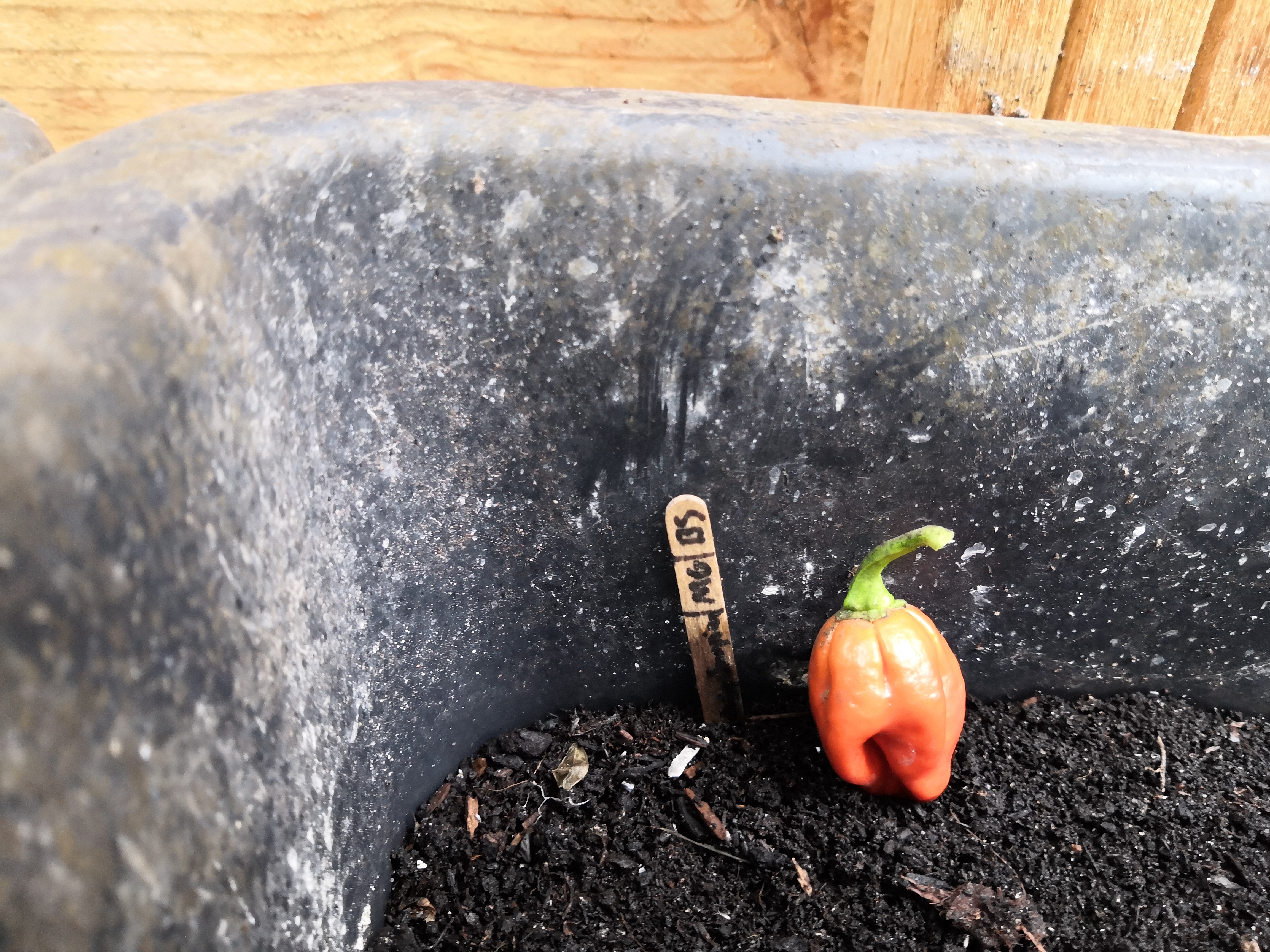
trinidad moruga scorpion
C. chinense
Magic Garden
This pepper returned the title of hottest pepper to the Carribean descendents, and was the first to cross the 2-million Scoville mark. They are indisputably hot, but don't seem to have anything interesting flavor-wise. Subjectively, this is the hottest pepper I've grown - but unless I need some pesticide I don't intend to grow it again. Heat level: "Cut it out, guys. This isn't fun any more."
C. chinense
Magic Garden
This pepper returned the title of hottest pepper to the Carribean descendents, and was the first to cross the 2-million Scoville mark. They are indisputably hot, but don't seem to have anything interesting flavor-wise. Subjectively, this is the hottest pepper I've grown - but unless I need some pesticide I don't intend to grow it again. Heat level: "Cut it out, guys. This isn't fun any more."
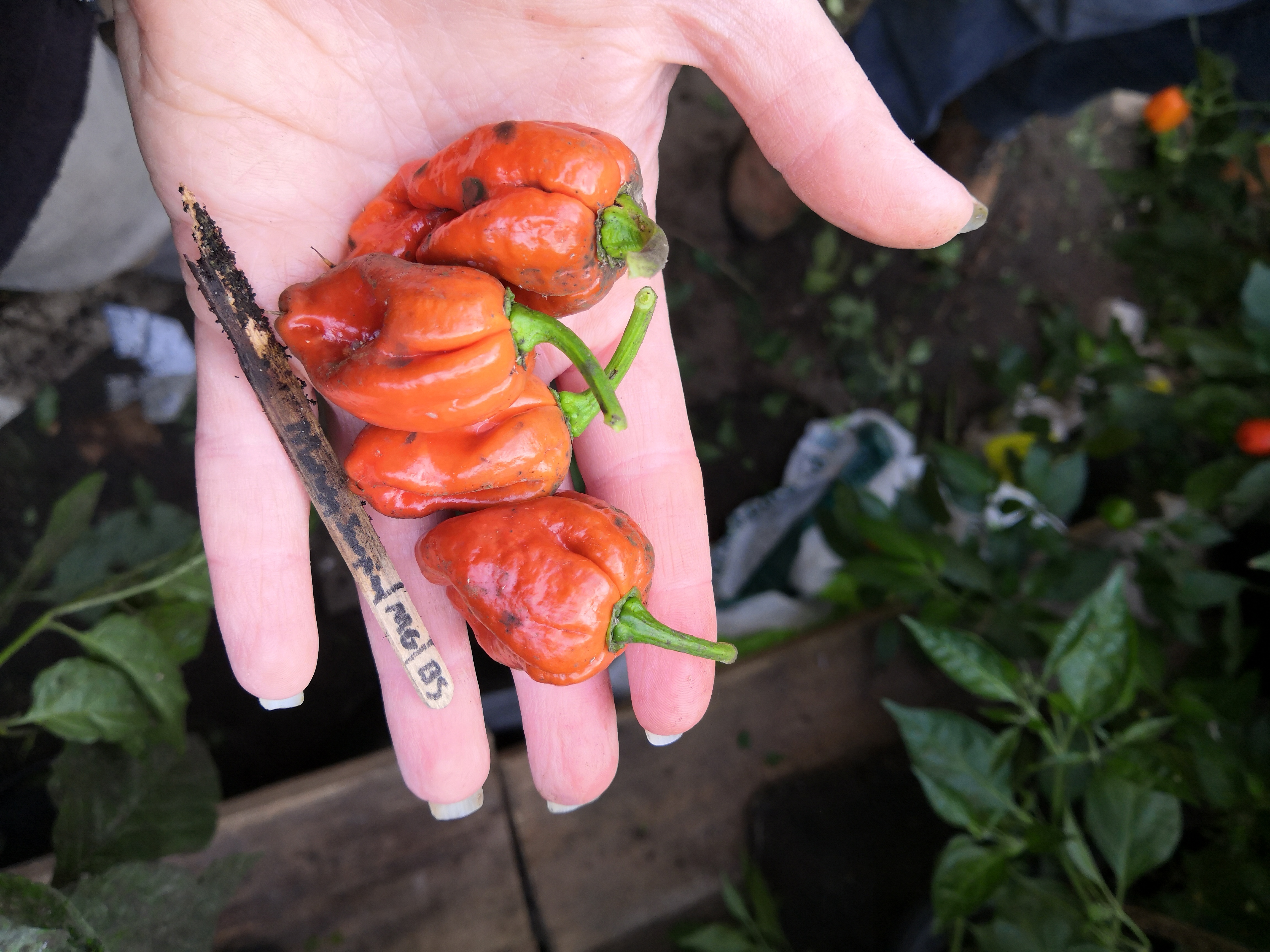
trinidad moruga scorpionr
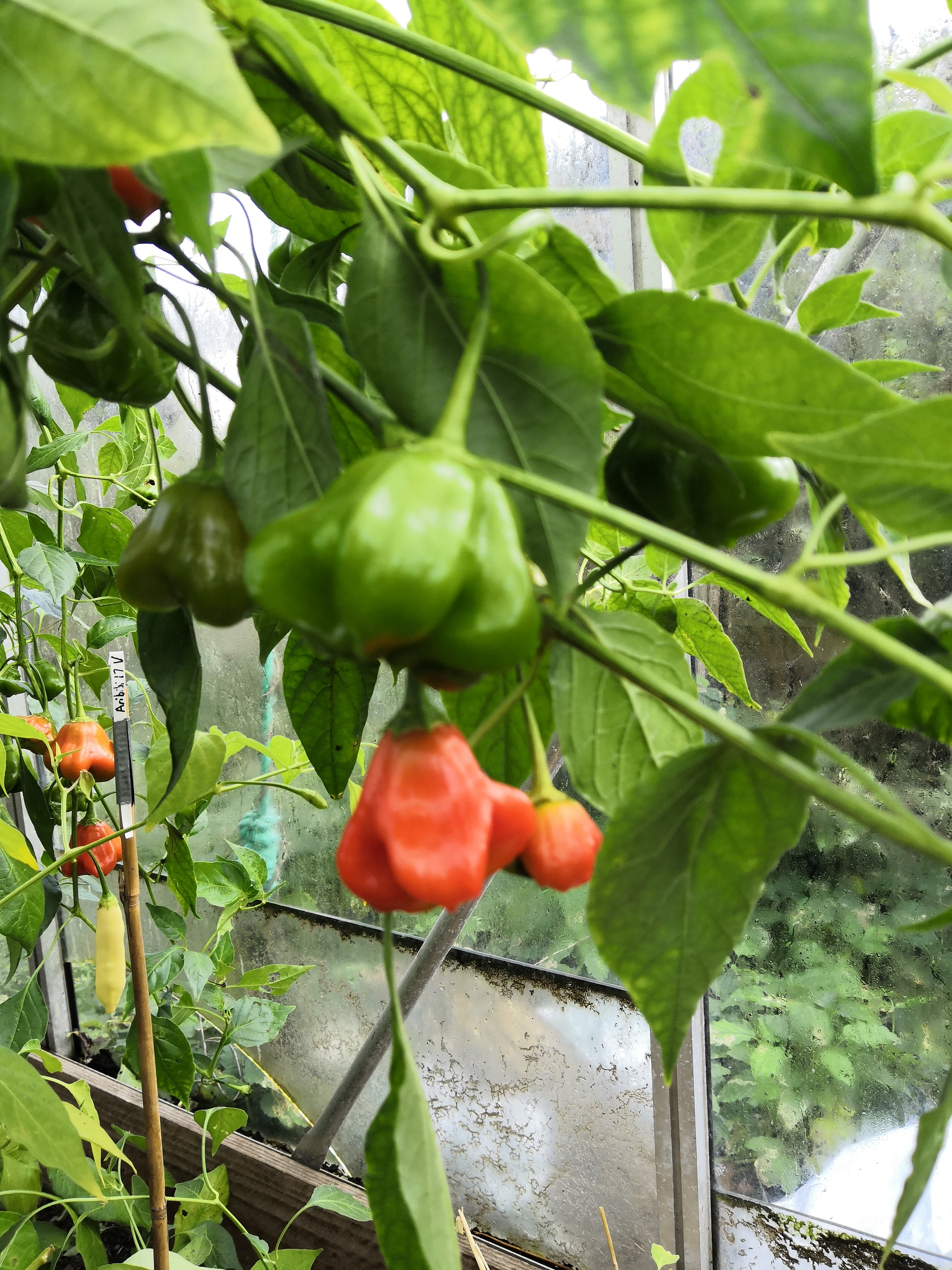
pimenta cambucha
C. baccatum
Hippy Seed
The shape of this pepper is similar to some other baccatums, but it has almost no heat. The flesh is very thick and the peppers are fairly large, forming a 5-7cm ball. Heat 0/10.
C. baccatum
Hippy Seed
The shape of this pepper is similar to some other baccatums, but it has almost no heat. The flesh is very thick and the peppers are fairly large, forming a 5-7cm ball. Heat 0/10.
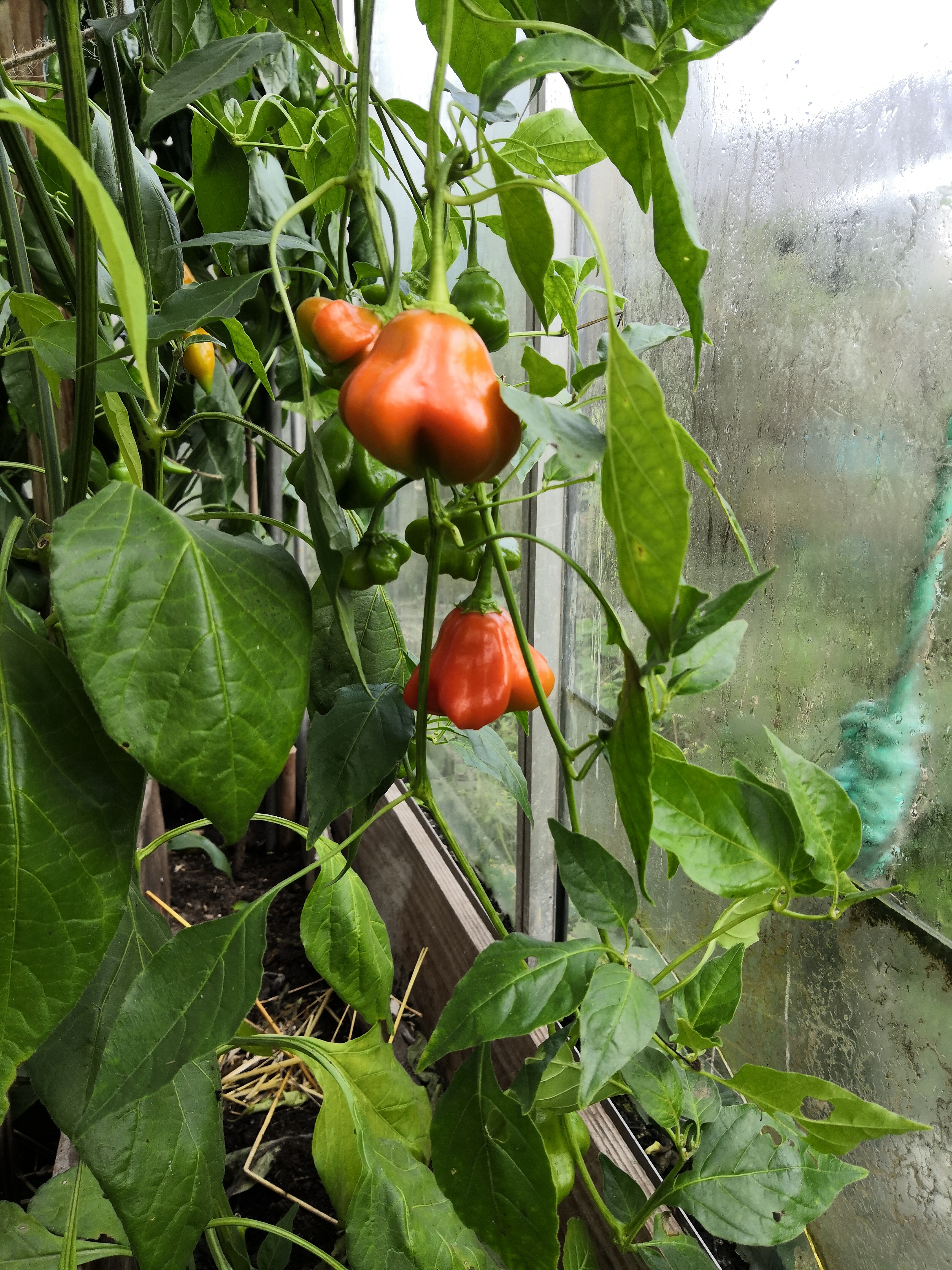
pimenta cambucha
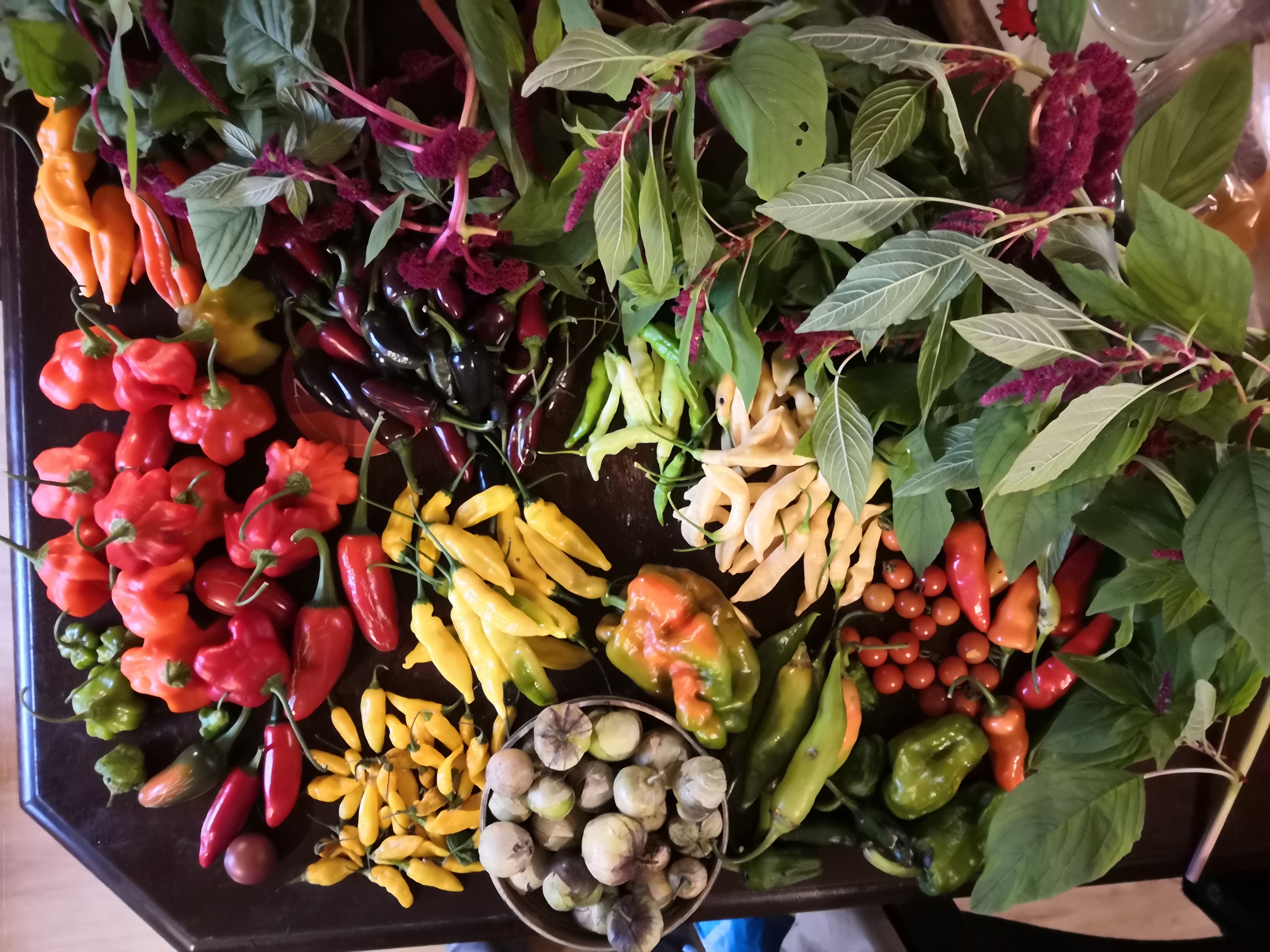
catch of the day
2021
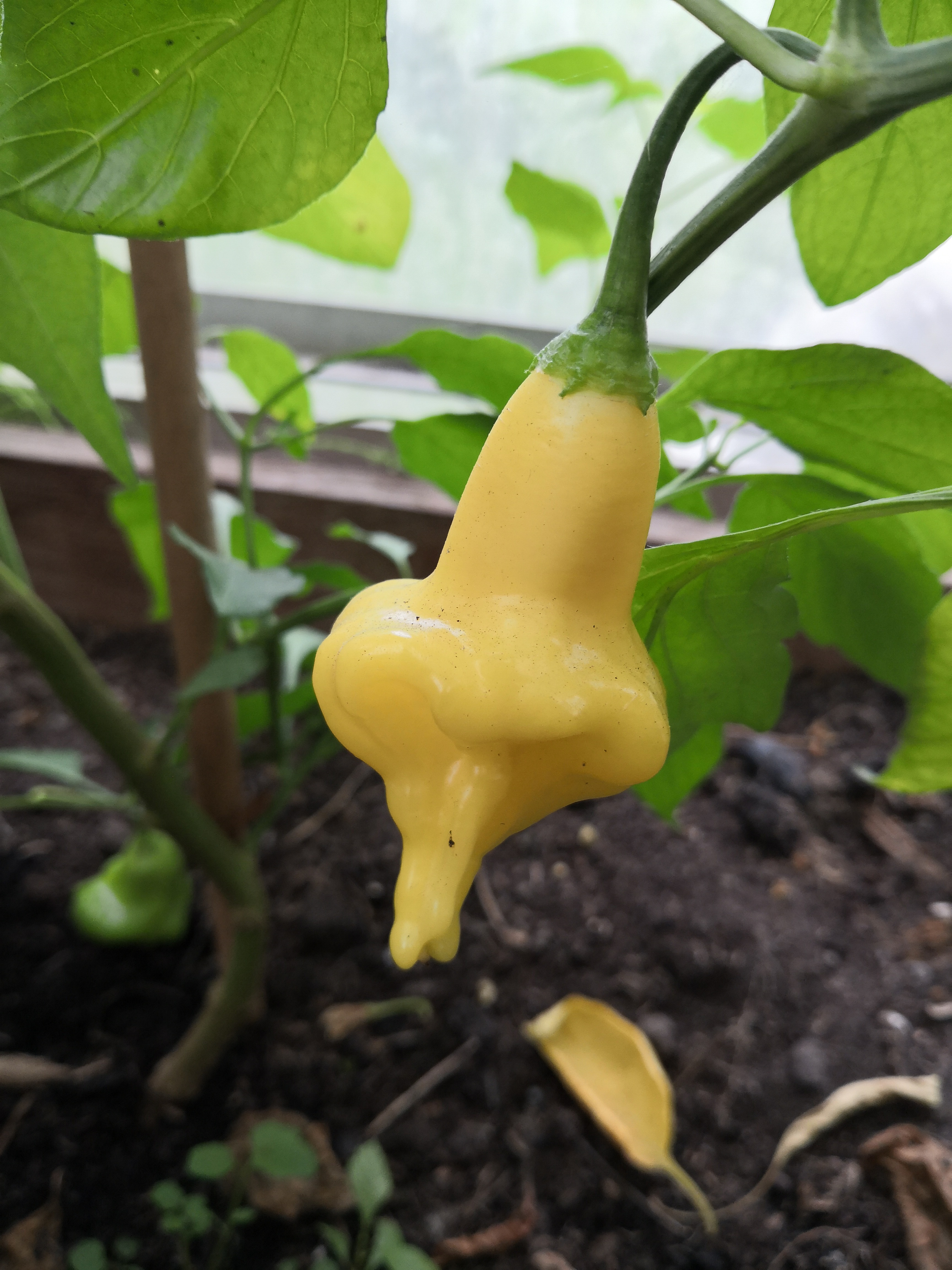
dulce luna
C. baccatum
Deaflora
Clear yellow peppers with a flattened bell shape. Very nice flavor reminiscent of crisp fruit, apples. Heat is in the ribs; the overall heat is mild, 3/10.
C. baccatum
Deaflora
Clear yellow peppers with a flattened bell shape. Very nice flavor reminiscent of crisp fruit, apples. Heat is in the ribs; the overall heat is mild, 3/10.
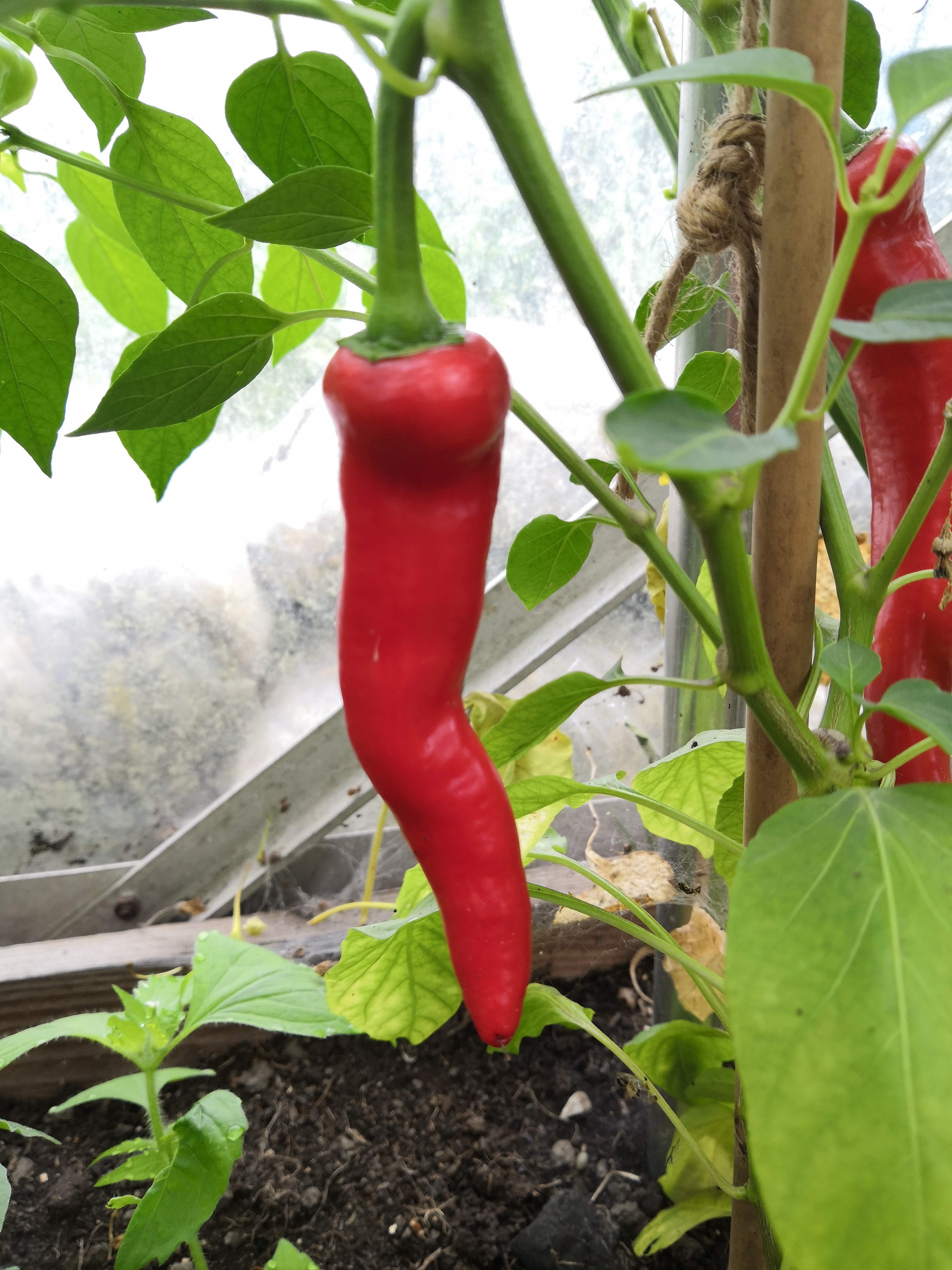
pinga de perro
C. baccatum
Hippy Seed
Surprisingly mild. Produces fairly large peppers (about 15cm long) with a nice sweet flavor and a bit of the baccatum fruitiness. Only down side is that the plant did not produce well in my garden - each plant made 2-3 peppers then quit. Heat 1/10.
C. baccatum
Hippy Seed
Surprisingly mild. Produces fairly large peppers (about 15cm long) with a nice sweet flavor and a bit of the baccatum fruitiness. Only down side is that the plant did not produce well in my garden - each plant made 2-3 peppers then quit. Heat 1/10.
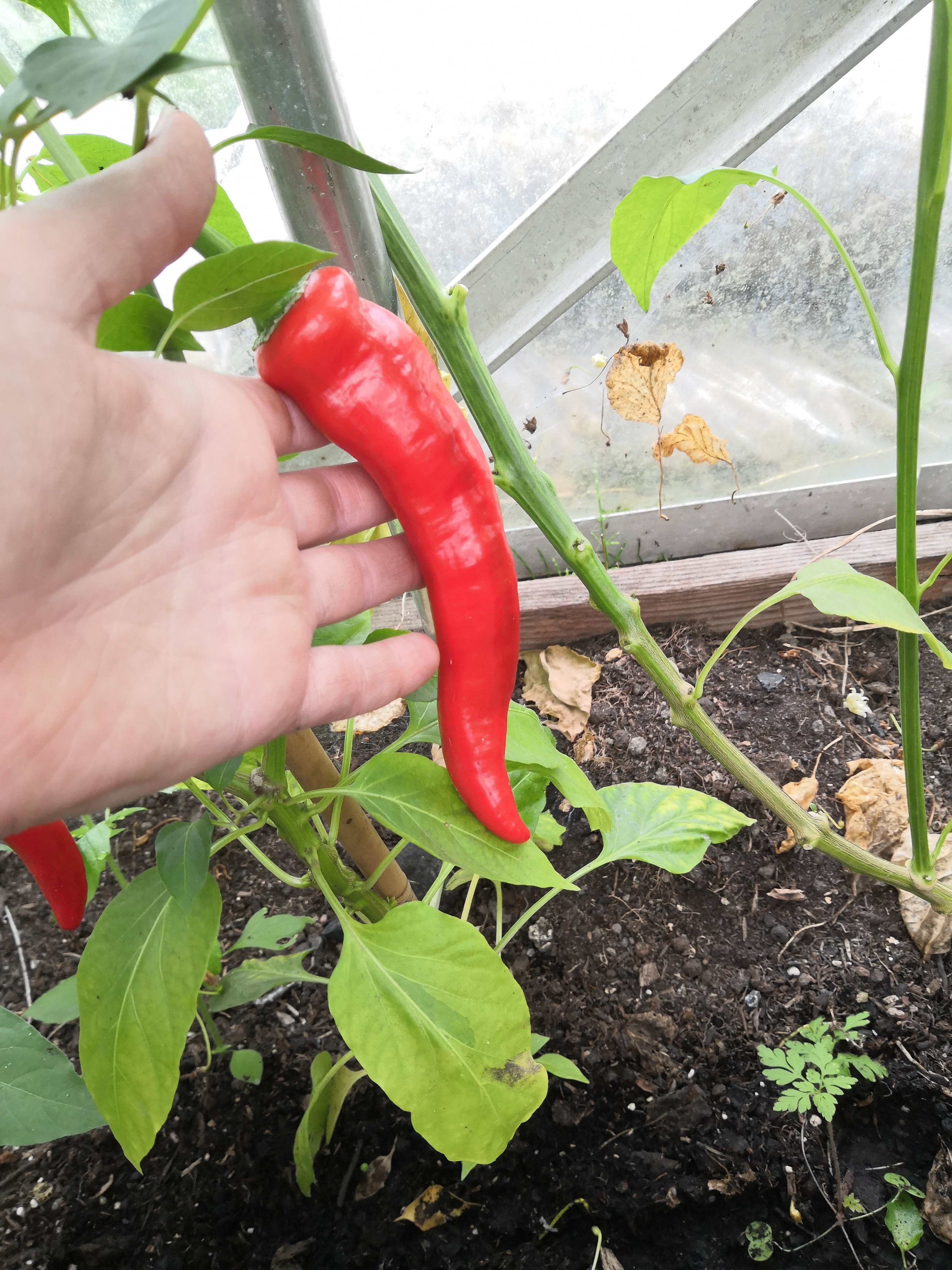
pinga de perro
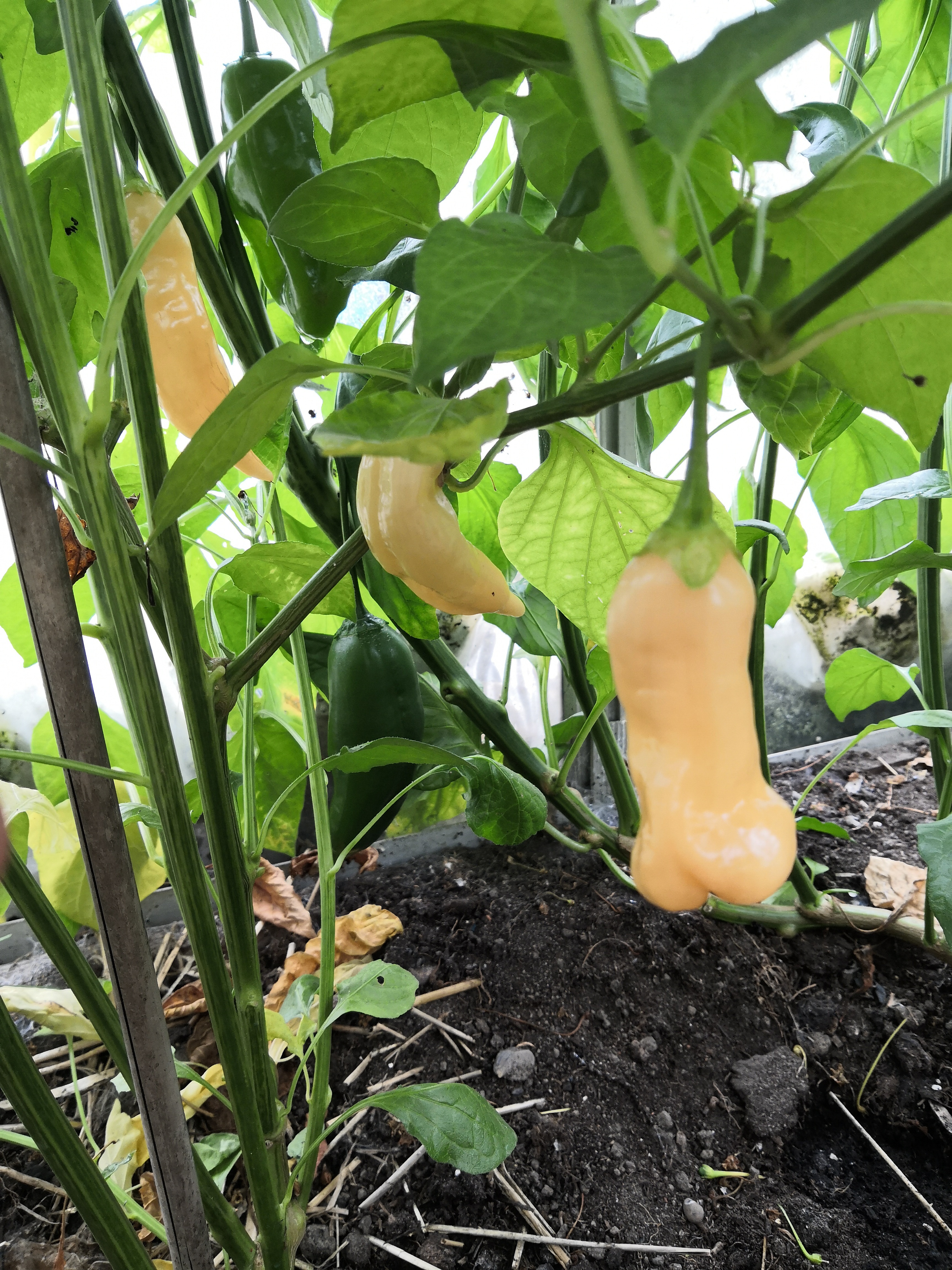
sugar peach/sugar rush
C. baccatum
UK chili
Pretty peach-color fruit with a fairly serious heat in the ribs. Floral notes; not as sweet as one might expect from the name. Heat 6/10.
C. baccatum
UK chili
Pretty peach-color fruit with a fairly serious heat in the ribs. Floral notes; not as sweet as one might expect from the name. Heat 6/10.
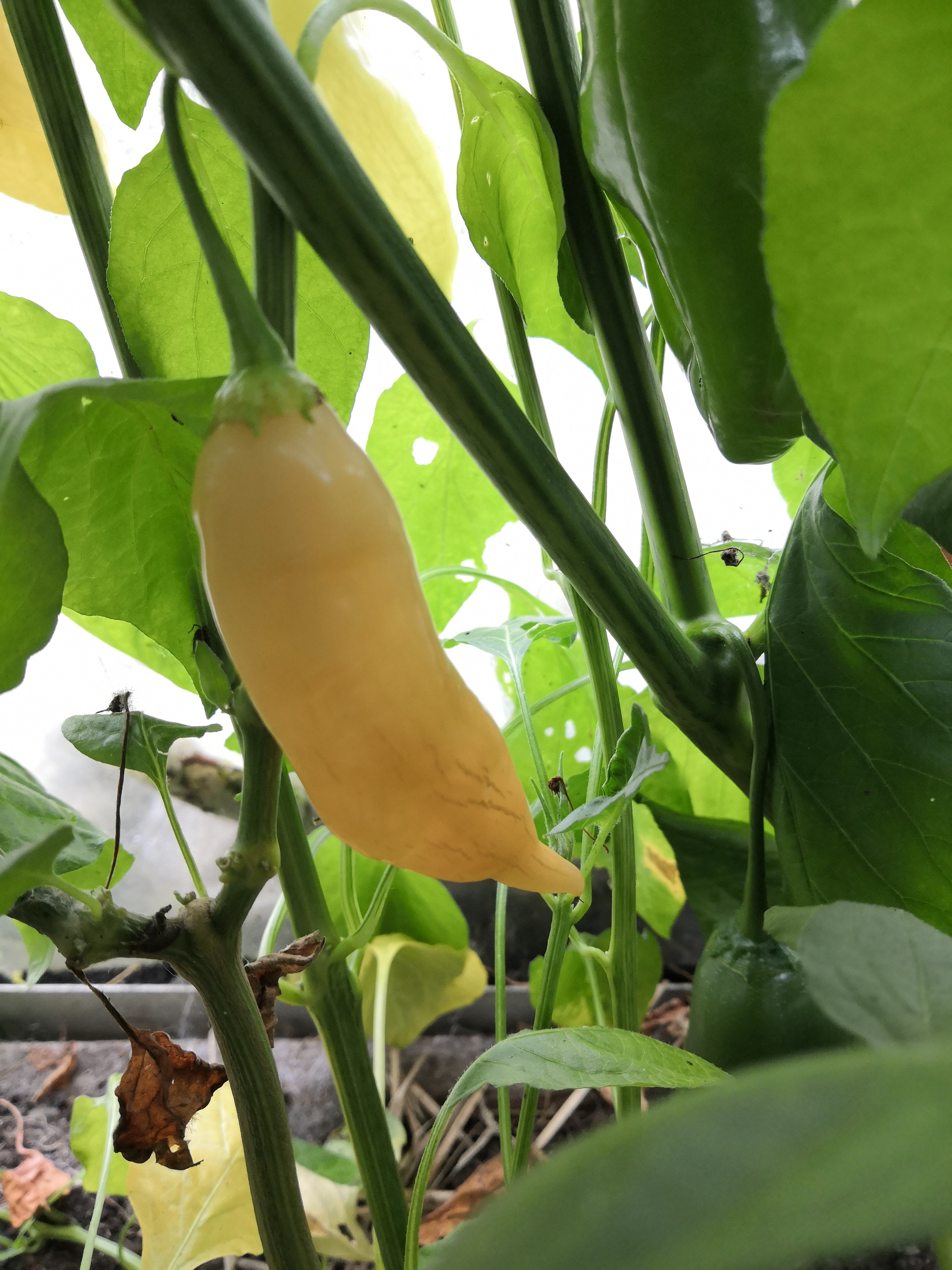
sugar peach
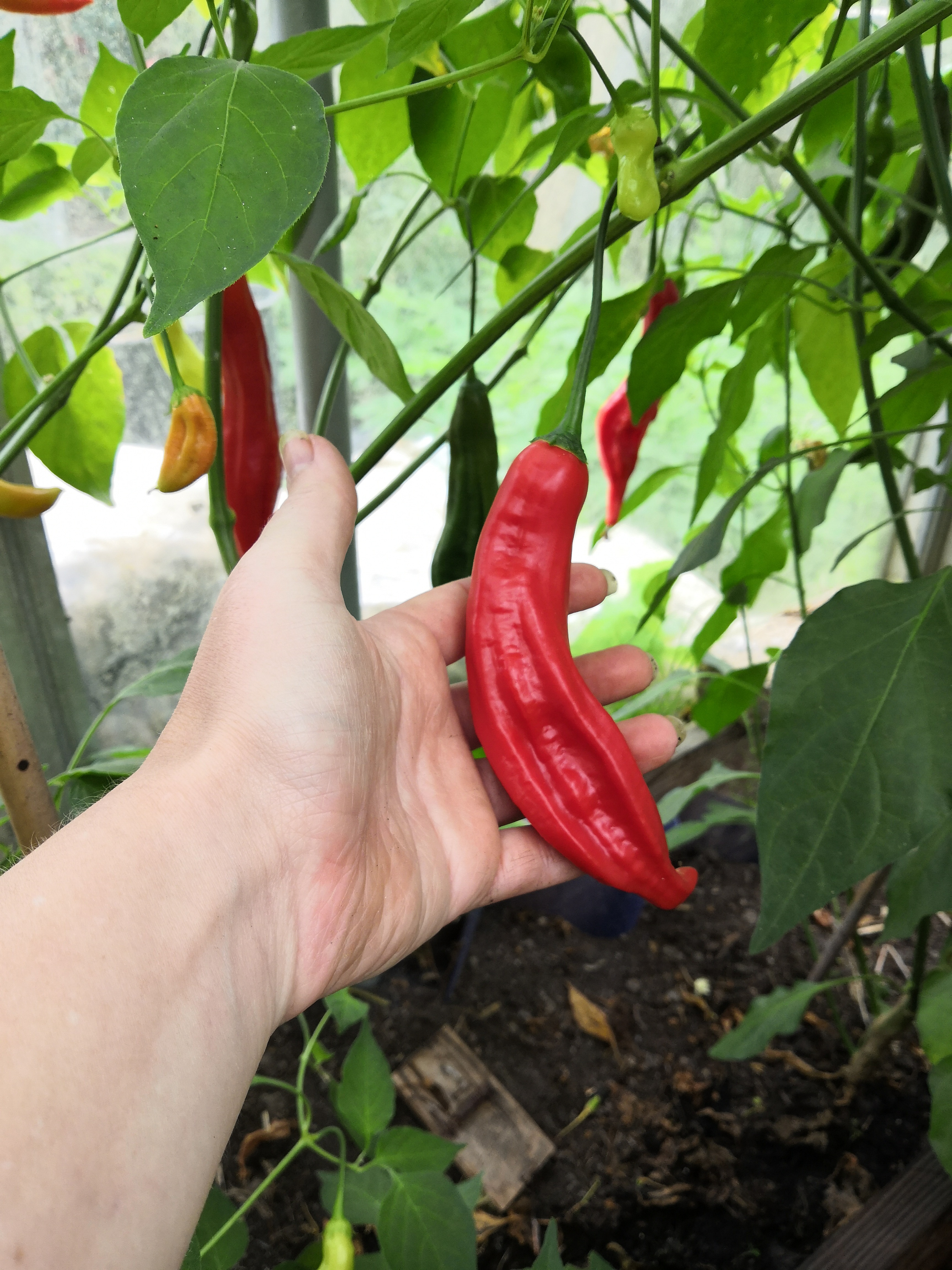
aji santa cruz
C. baccatum
Vreeken's zaden
Very mild, with thin flesh and surprisingly little flavor for a baccatum. Heat 0/10.
C. baccatum
Vreeken's zaden
Very mild, with thin flesh and surprisingly little flavor for a baccatum. Heat 0/10.
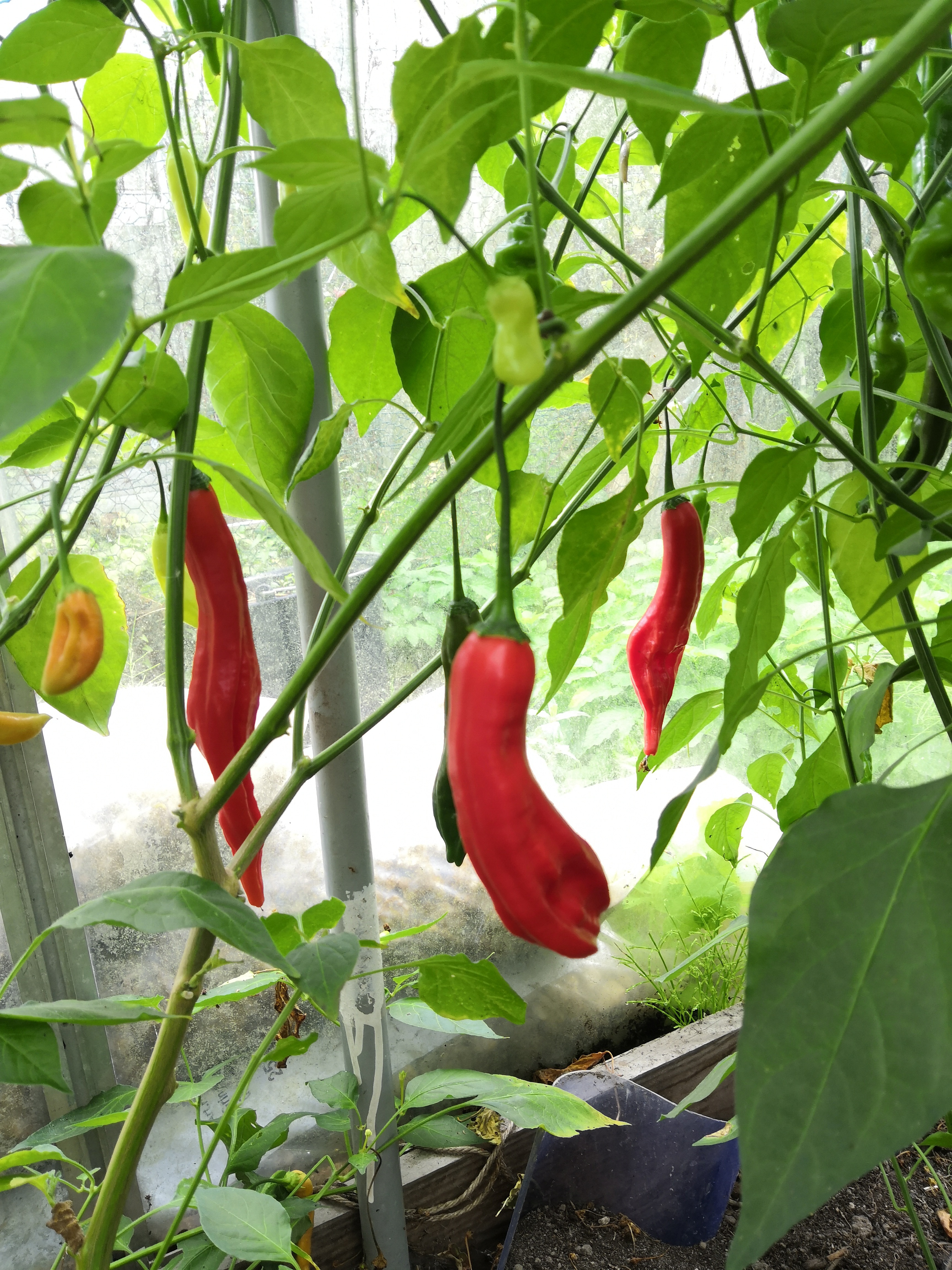
aji santa cruz
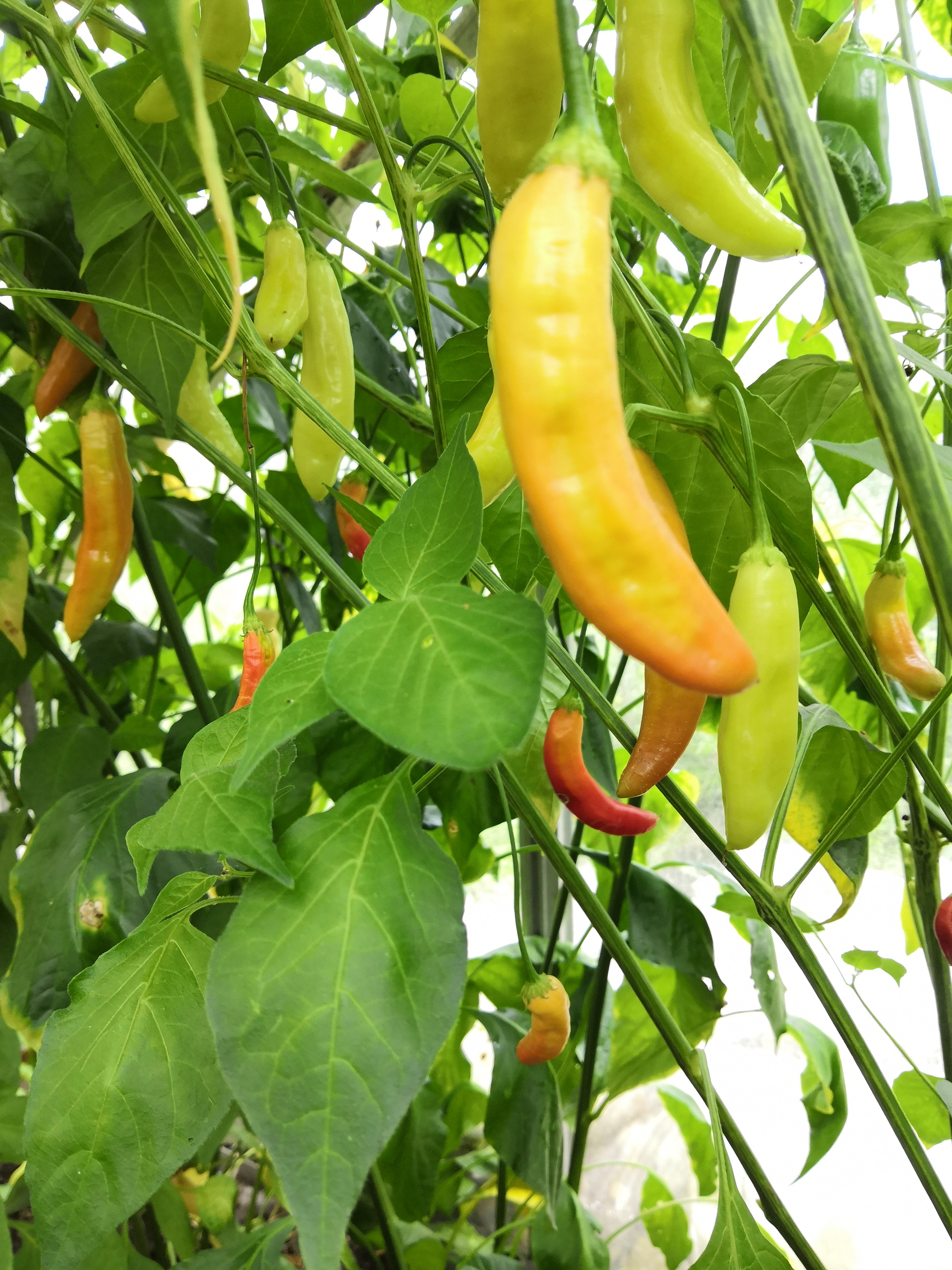
aji amarillo PGS
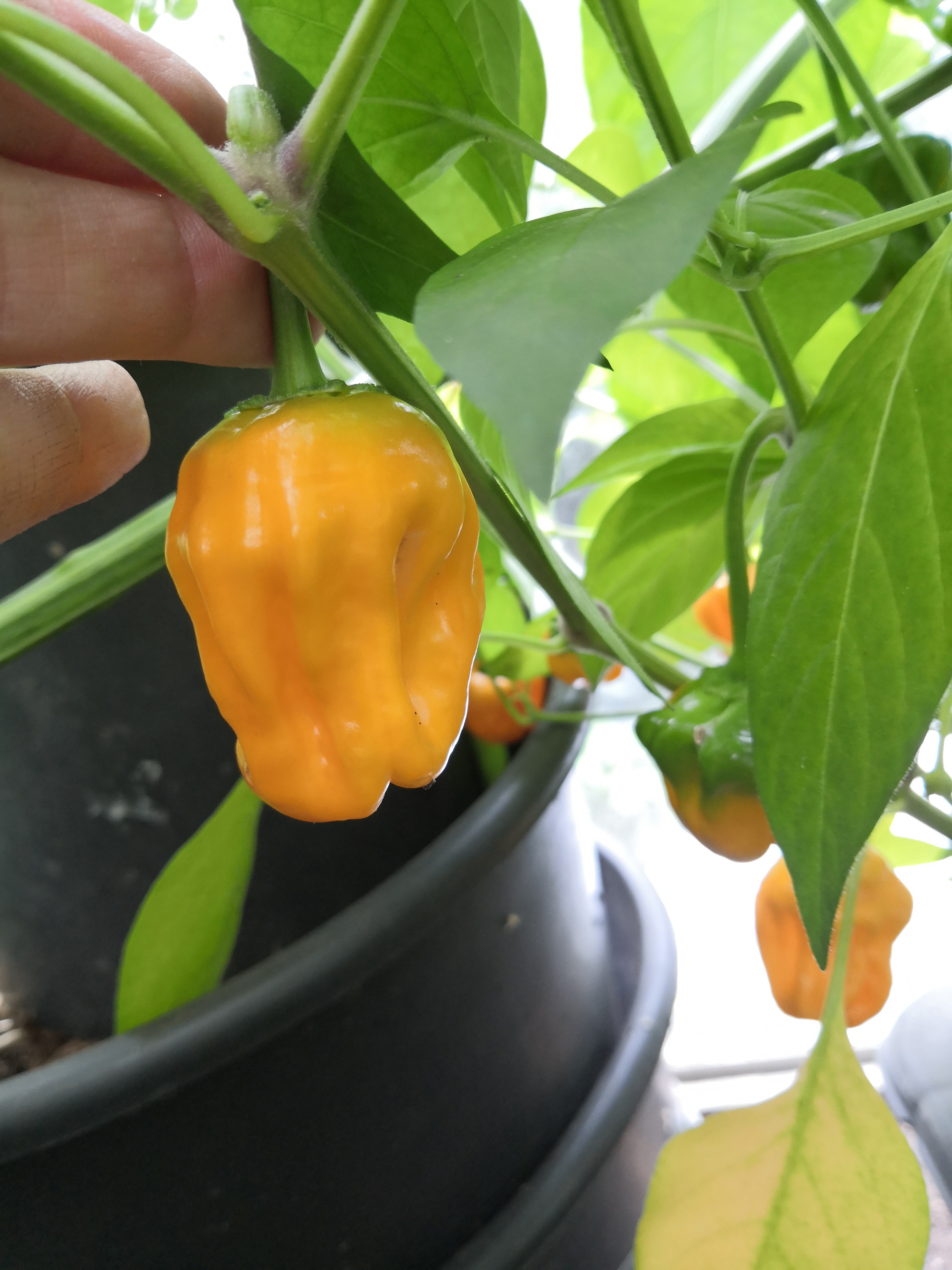
mushroom pepper
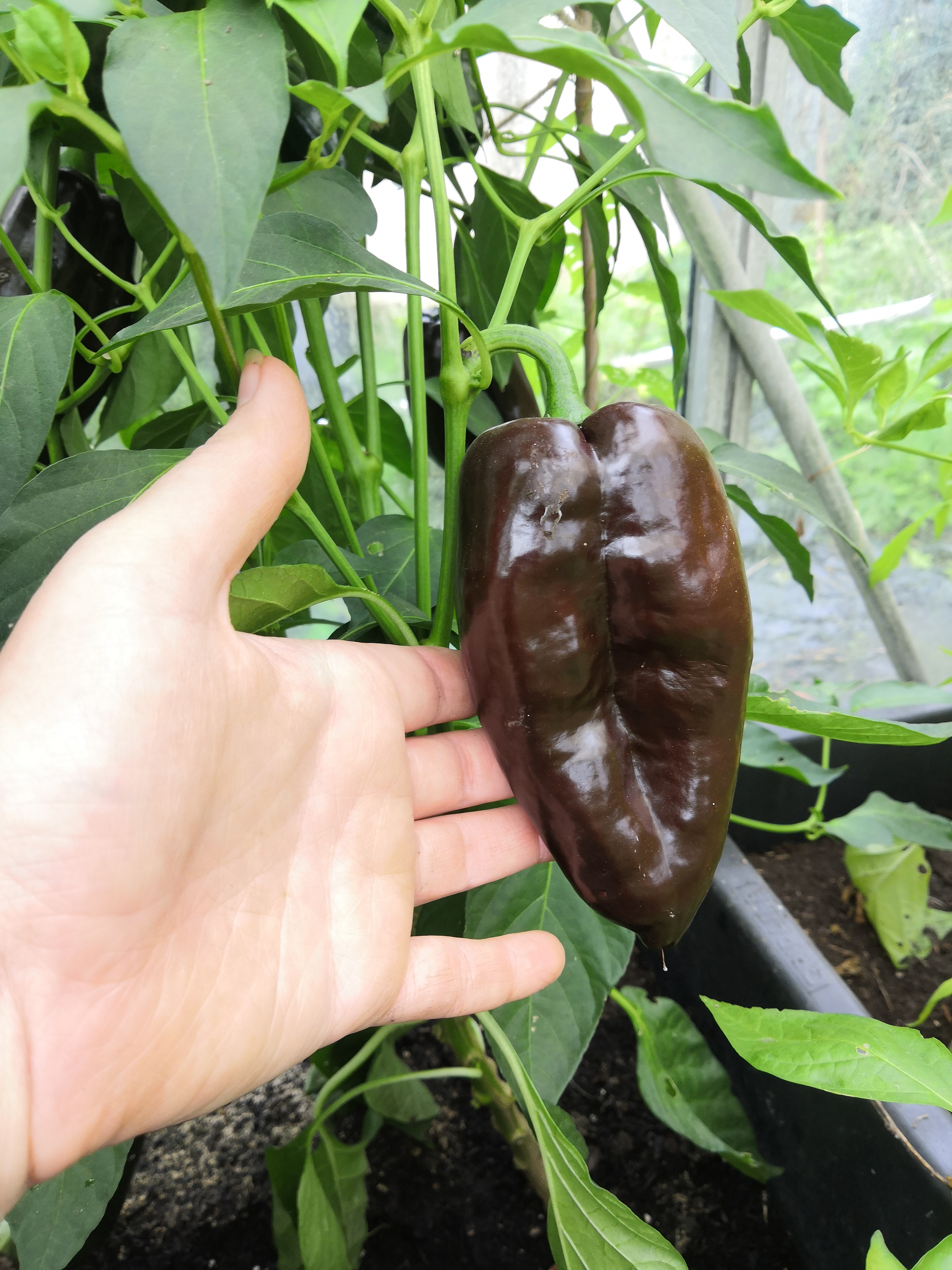
ancho mulato
C. annuum
Deaflora
This is one of the peppers that is often mentioned as having a great flavor, but in this case, it's true. This pepper has a fantastic, rich depth of flavor that is easily the equal of my favorite baccatums and chinenses. As an added bonus, the outdoor plants managed to produce reasonably as well. Very mild: Heat 1/10.
C. annuum
Deaflora
This is one of the peppers that is often mentioned as having a great flavor, but in this case, it's true. This pepper has a fantastic, rich depth of flavor that is easily the equal of my favorite baccatums and chinenses. As an added bonus, the outdoor plants managed to produce reasonably as well. Very mild: Heat 1/10.
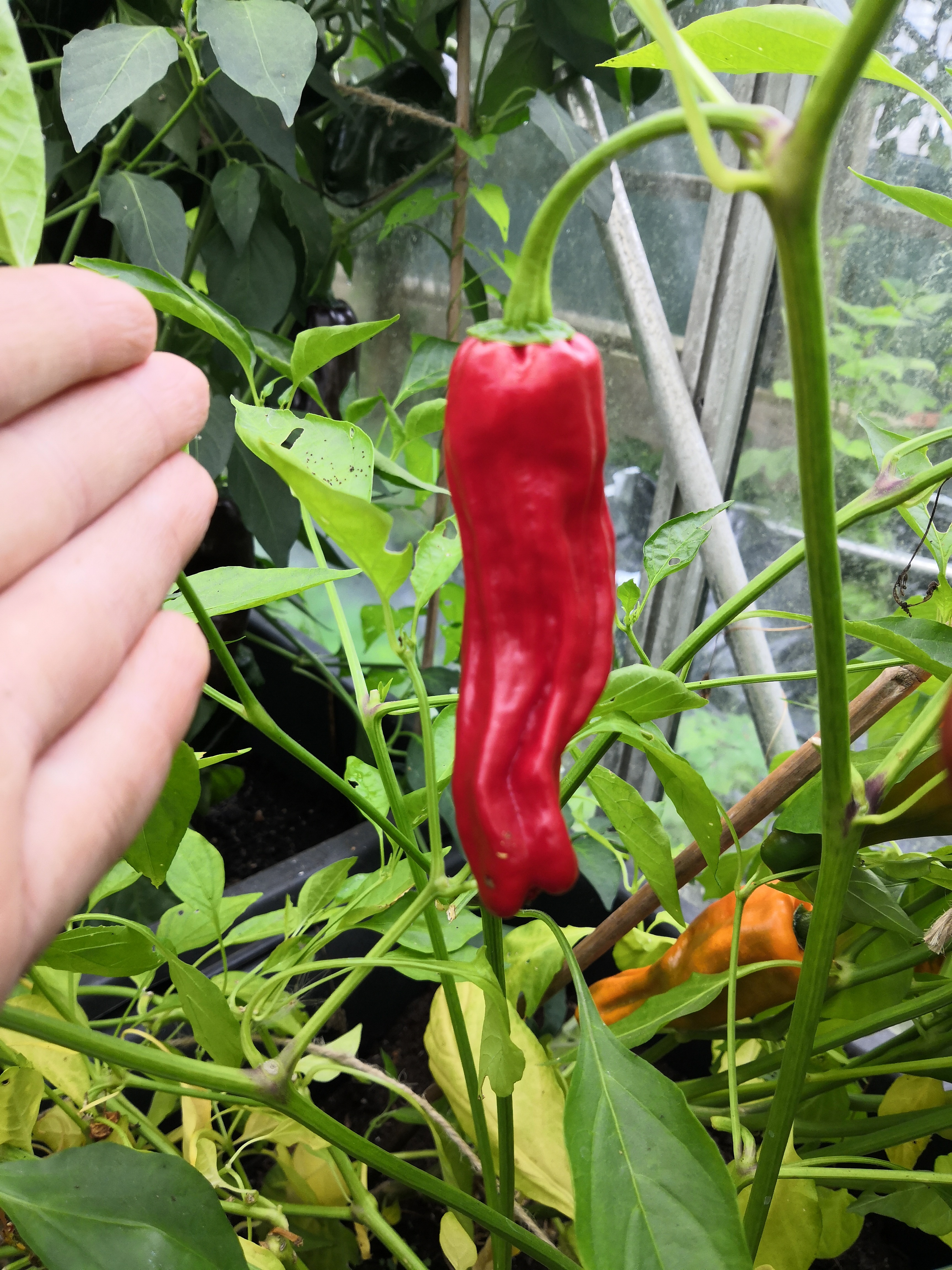
shishito
C. annuum
UK chili
This plant produced many peppers far earlier than the other plants. The peppers are about 10cm long, with no discernable heat, and thin flesh. Apparently they are valued for use in stir fry; I did not find them particularly interesting. Heat 0/10.
C. annuum
UK chili
This plant produced many peppers far earlier than the other plants. The peppers are about 10cm long, with no discernable heat, and thin flesh. Apparently they are valued for use in stir fry; I did not find them particularly interesting. Heat 0/10.
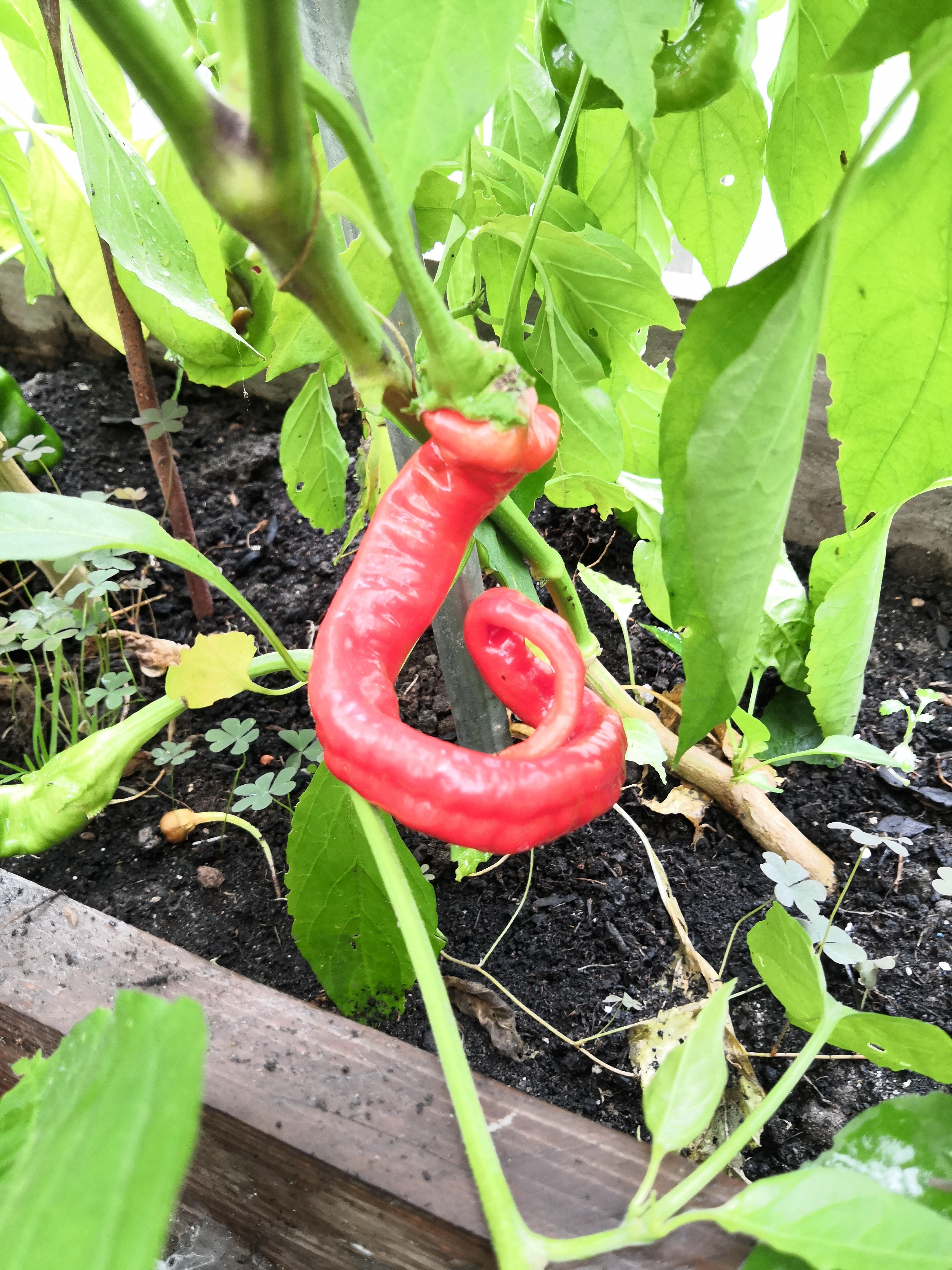
Hingjiao 5 Helix Nebula
C. annuum
Deaflora
China decided to try accelerating the advancement of its agricultural industry by sending pepper seeds into space and searching the result for beneficial mutations. One of the resulting breeds is the Hingjiao 5 Helix Nebula. These are big peppers - they would probably be 20cm if stretched out straight. They are also cool-looking, with their snake-like coils. The flavor is unremarkable - there is no heat and it has a mild flavor typical of an annuum. The coils in the peppers tend to collect water and develop rot rather quickly - I got only a few fully ripe peppers before the rest rotted. Not a beneficial mutation for my soggy Dutch garden. Heat 0/10.
C. annuum
Deaflora
China decided to try accelerating the advancement of its agricultural industry by sending pepper seeds into space and searching the result for beneficial mutations. One of the resulting breeds is the Hingjiao 5 Helix Nebula. These are big peppers - they would probably be 20cm if stretched out straight. They are also cool-looking, with their snake-like coils. The flavor is unremarkable - there is no heat and it has a mild flavor typical of an annuum. The coils in the peppers tend to collect water and develop rot rather quickly - I got only a few fully ripe peppers before the rest rotted. Not a beneficial mutation for my soggy Dutch garden. Heat 0/10.
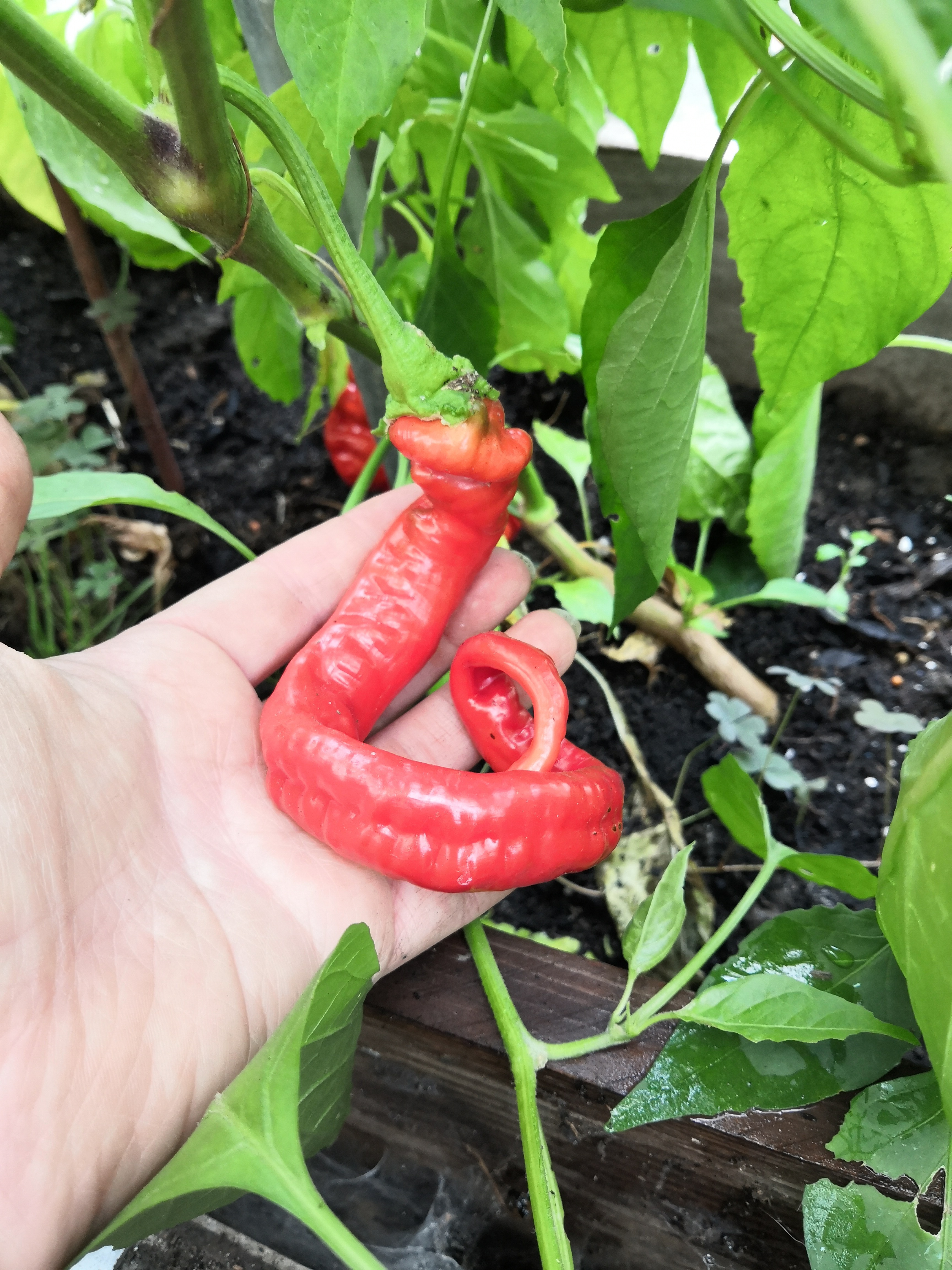
Hingjiao 5 Helix Nebula
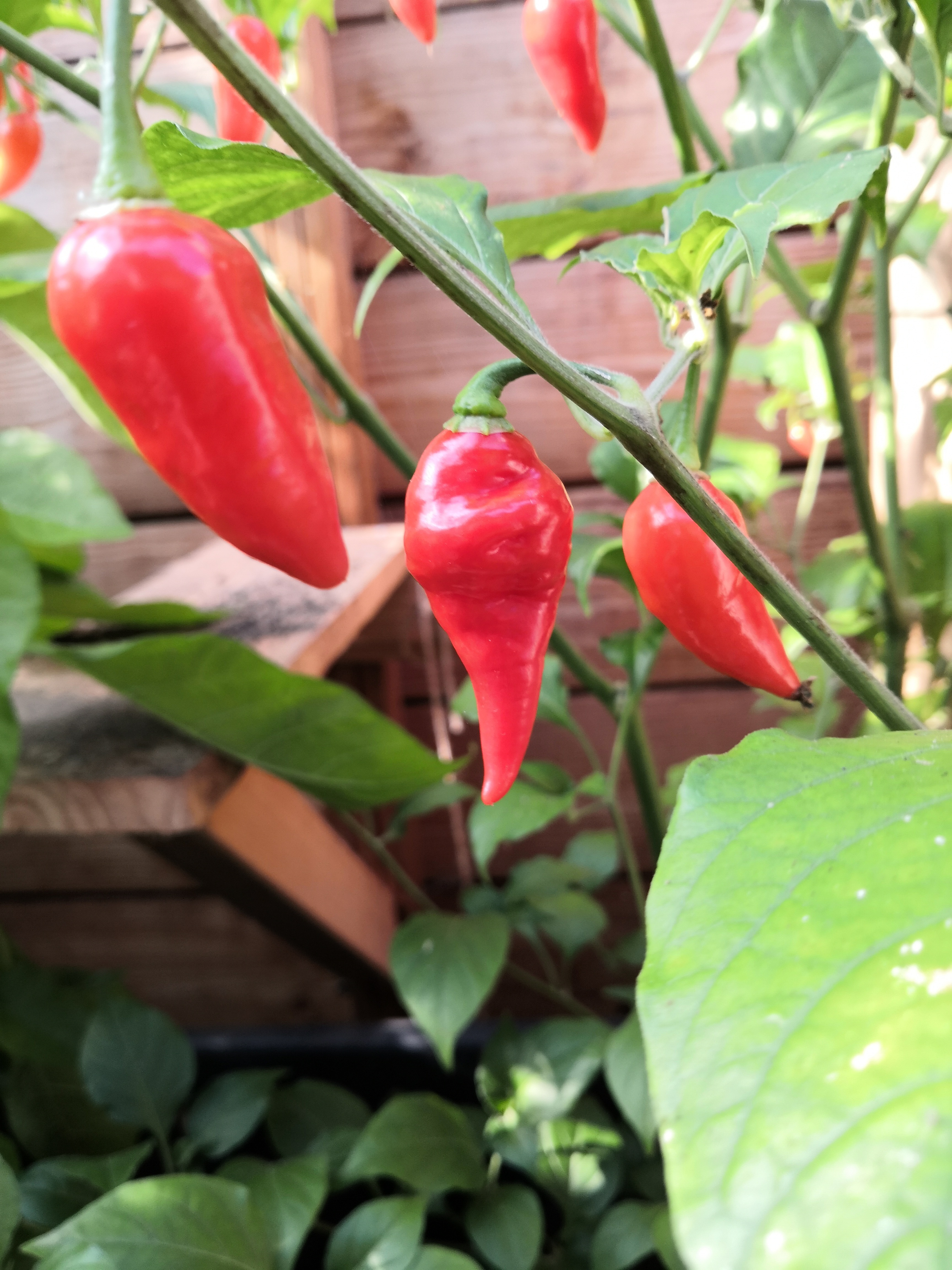
diomar
C. chinense
Vreeken's zaden
An unusual chinense. Like the aribibi, it has the nice fruity part of the chinense flavor without the metallic taste present in many varieties. Heat is moderate, 7/10.
C. chinense
Vreeken's zaden
An unusual chinense. Like the aribibi, it has the nice fruity part of the chinense flavor without the metallic taste present in many varieties. Heat is moderate, 7/10.
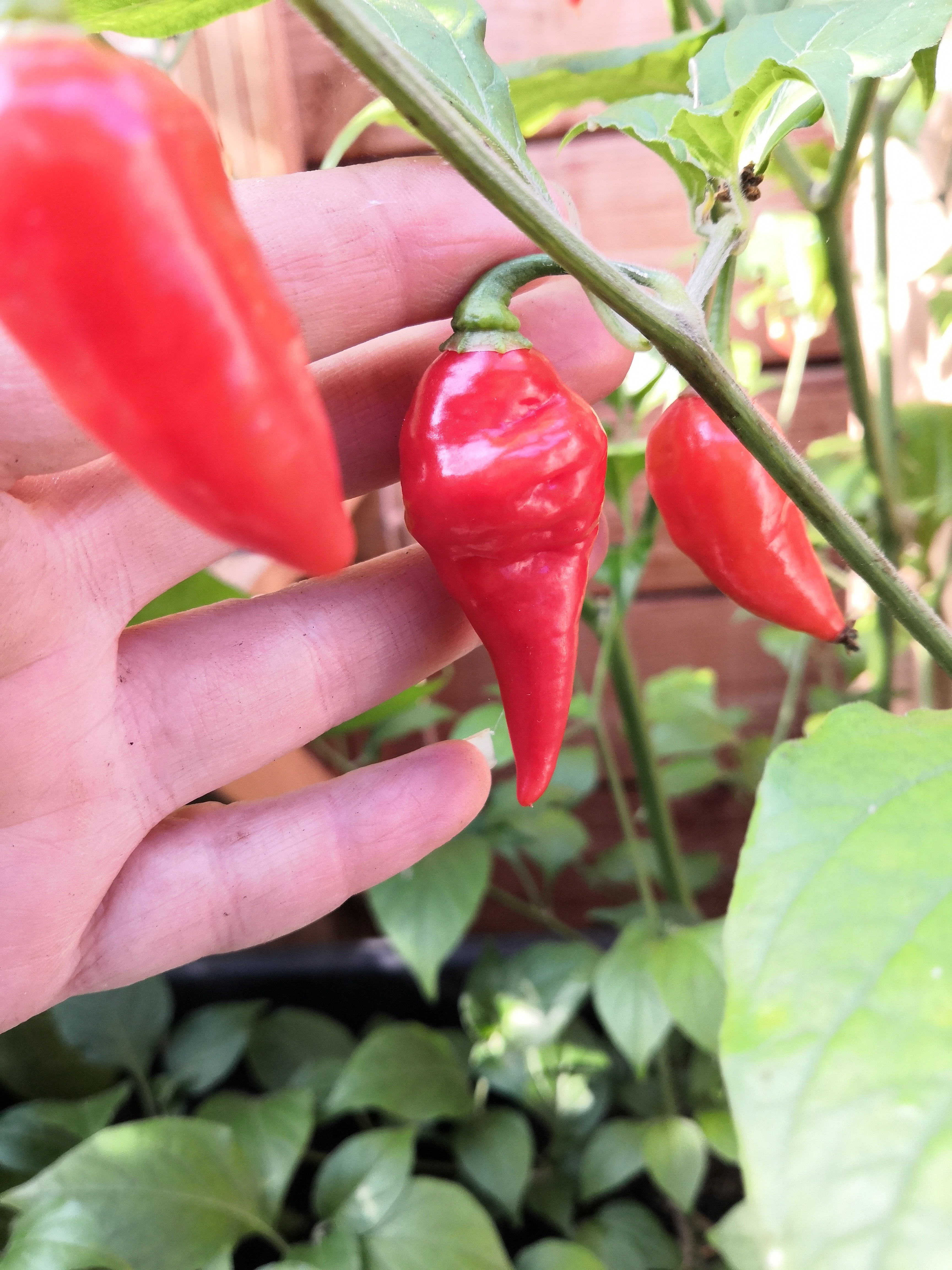
diomar
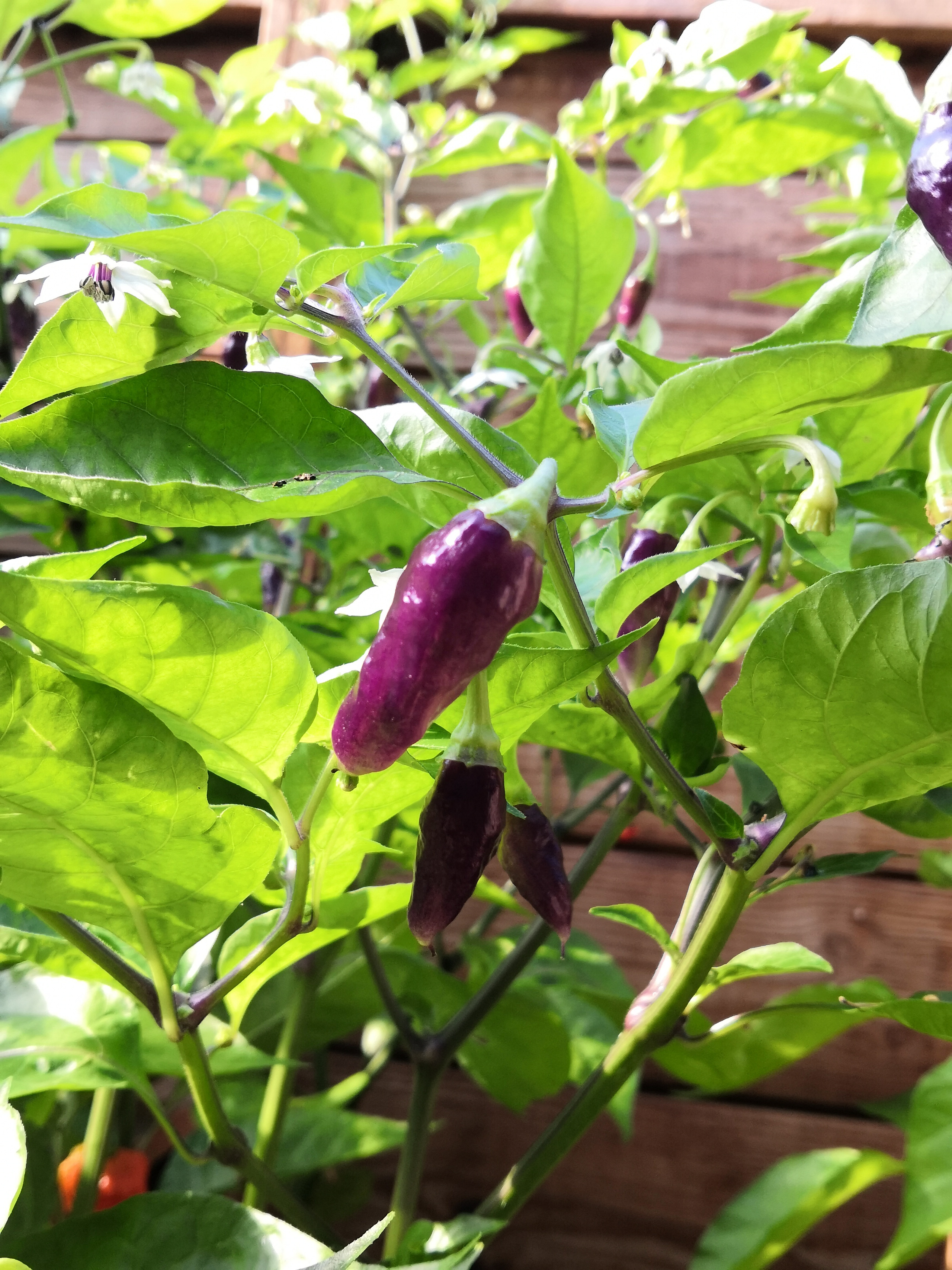
GRIF 9238
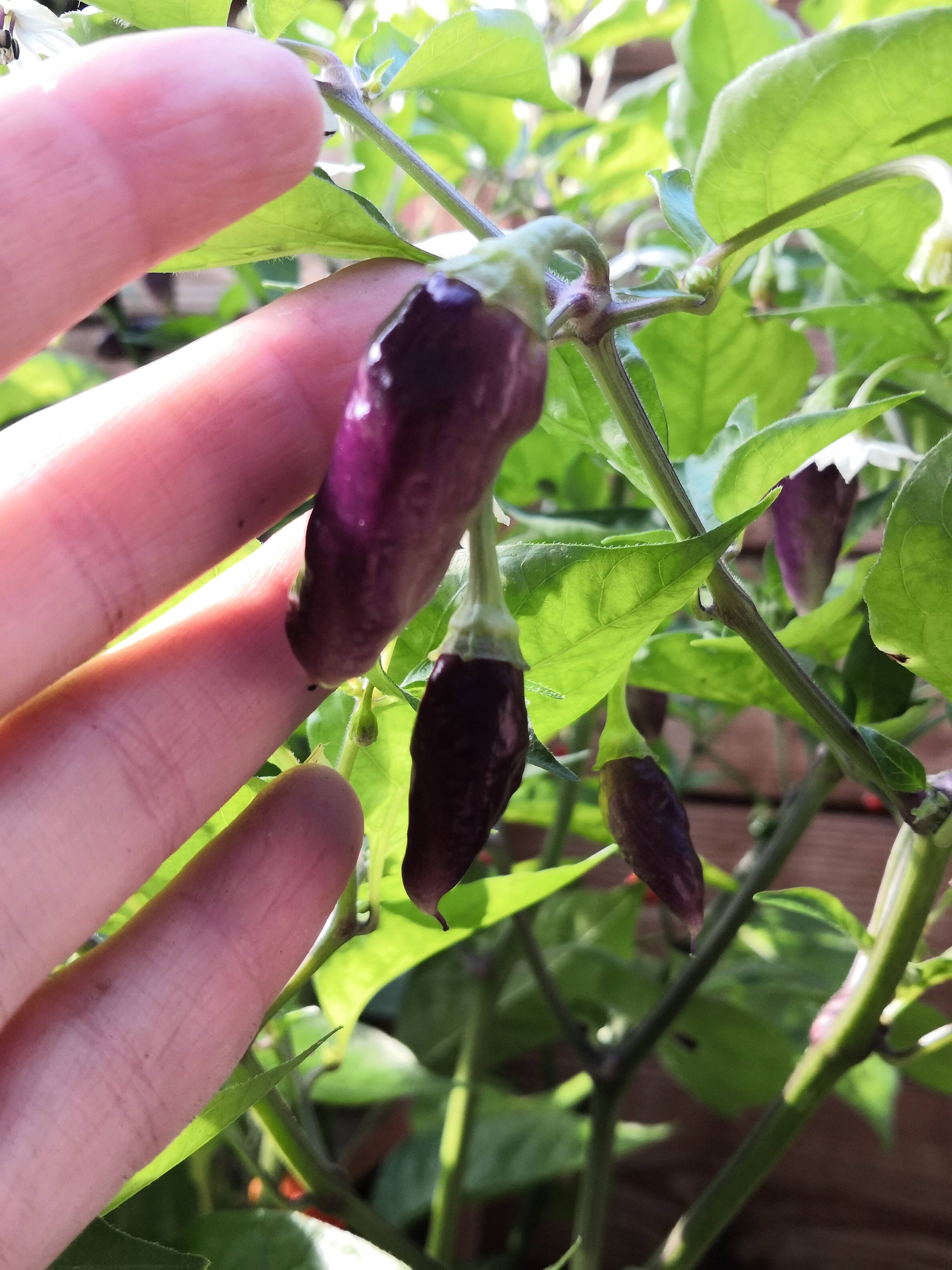
GRIF 9238
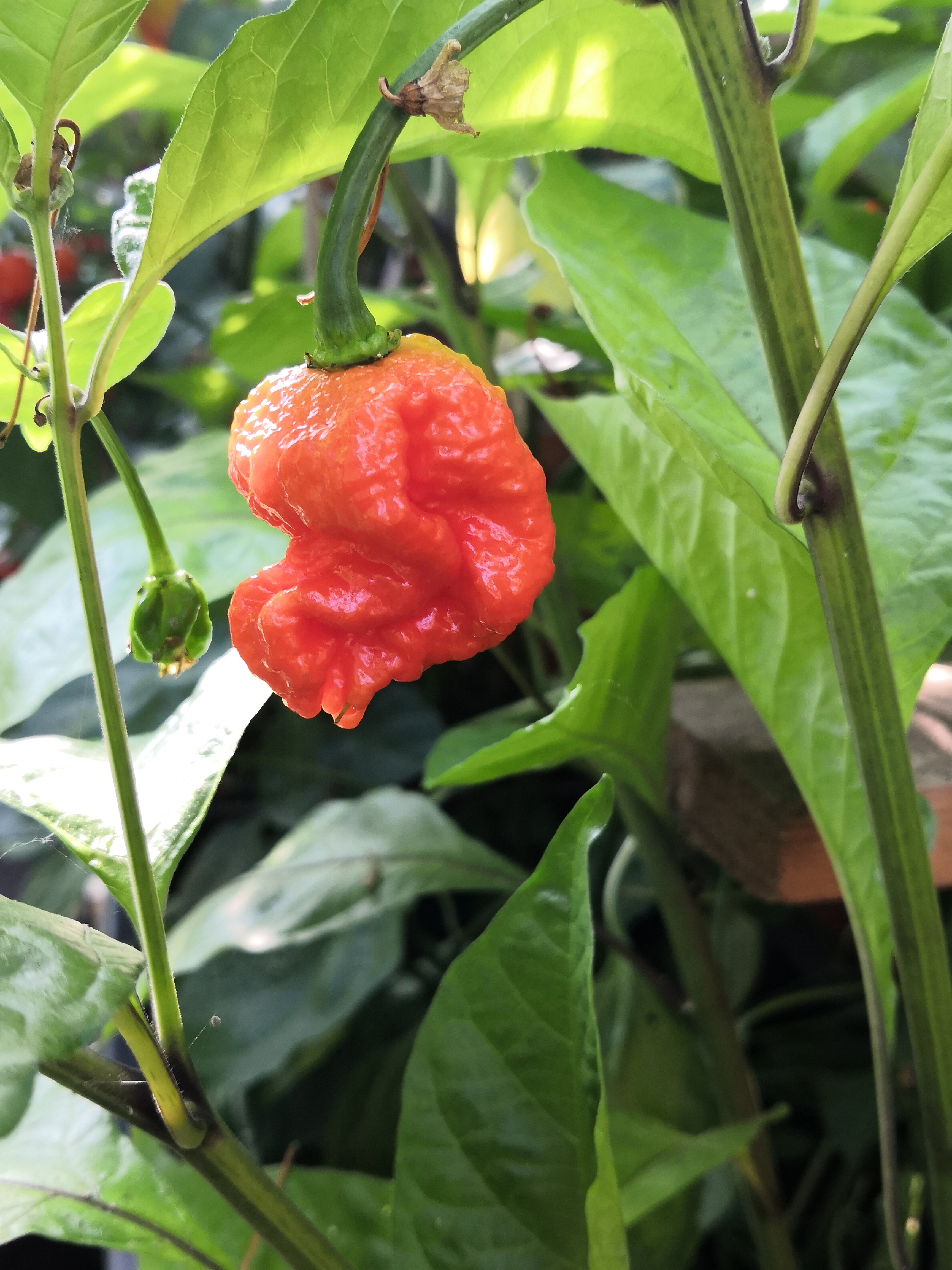
carolina reaper
C. chinense
Simpson's seeds
The Reaper is the current reigning champion of the race to produce the hottest pepper, clocking in at 2.2 million Scovilles. In our cool and damp climate, they are not nearly this hot, but still pack an impressive punch. The flavor is surprisingly good, reminescent of some kind of hellish fresh fruit. Heat level: "I think my vision is fading."
C. chinense
Simpson's seeds
The Reaper is the current reigning champion of the race to produce the hottest pepper, clocking in at 2.2 million Scovilles. In our cool and damp climate, they are not nearly this hot, but still pack an impressive punch. The flavor is surprisingly good, reminescent of some kind of hellish fresh fruit. Heat level: "I think my vision is fading."
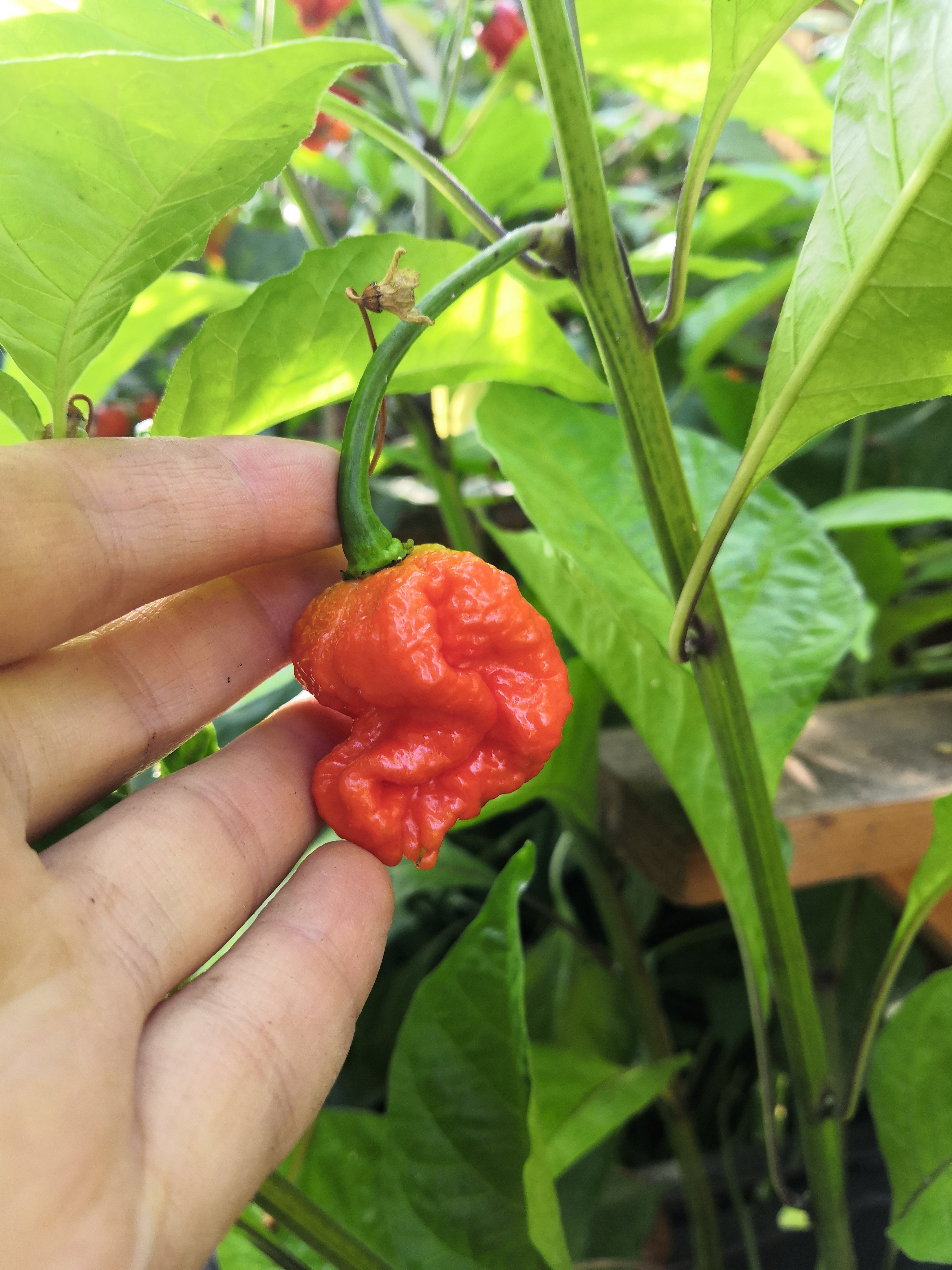
carolina reaper
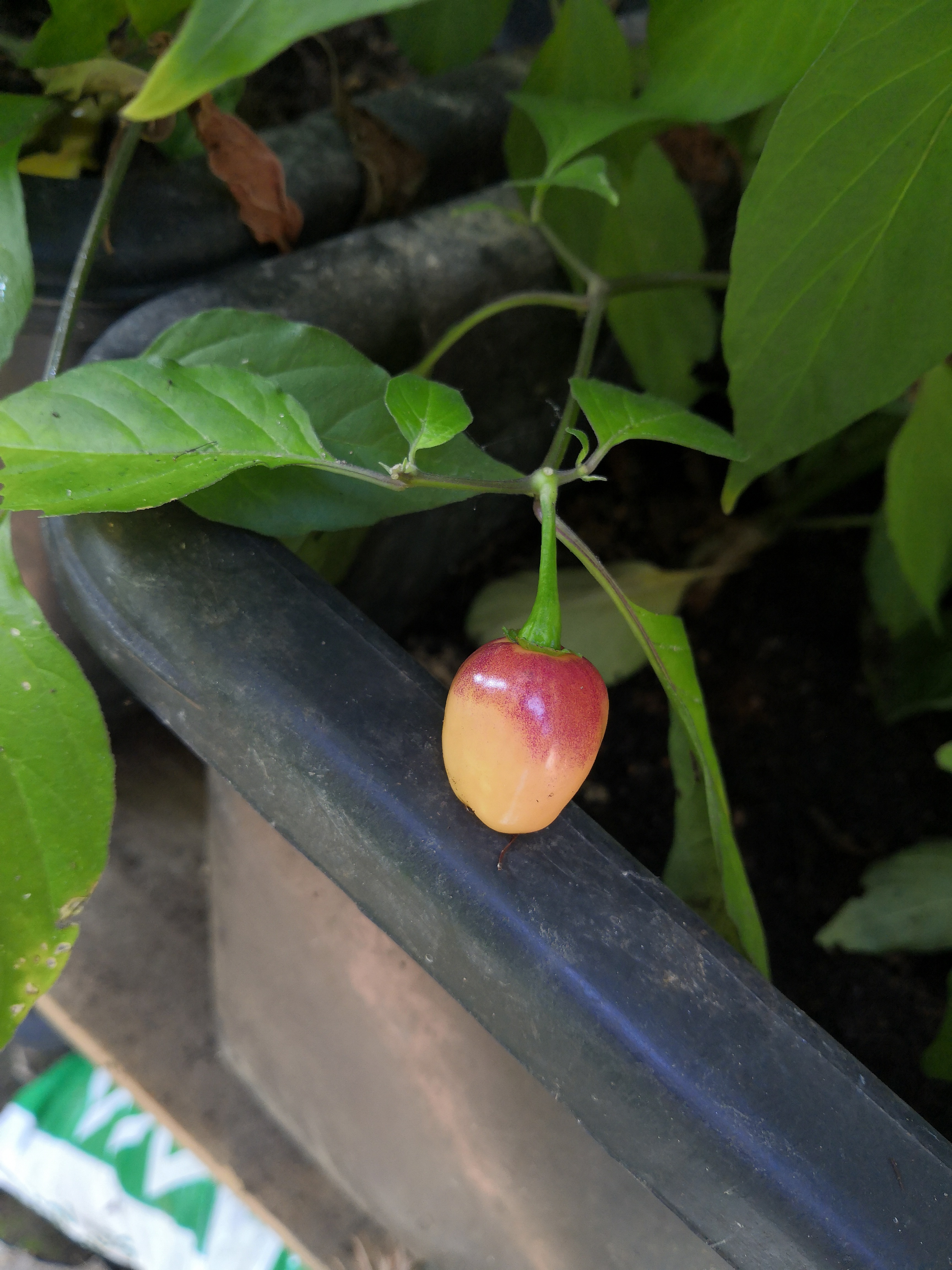
CGN21500
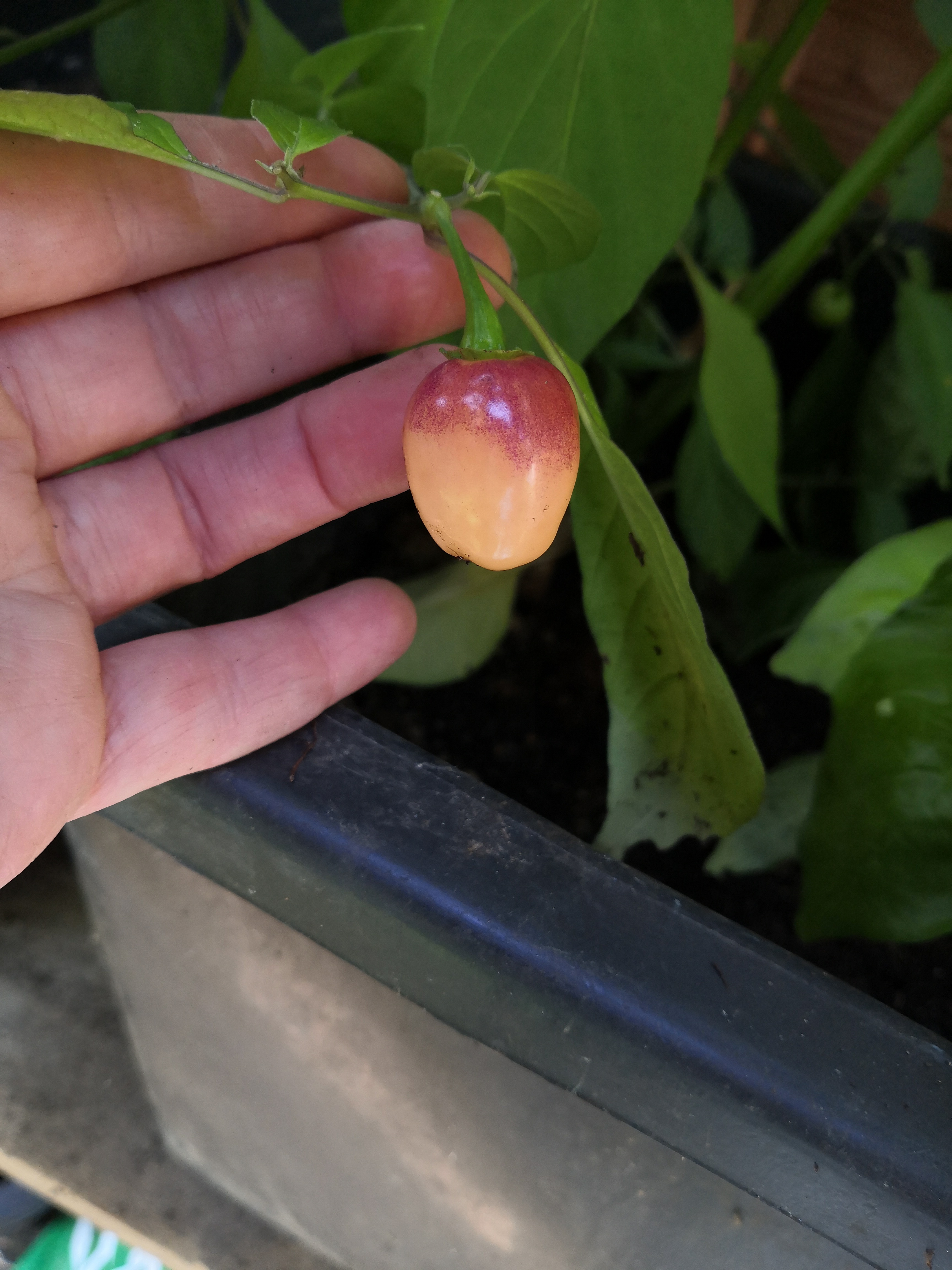
CGN21500
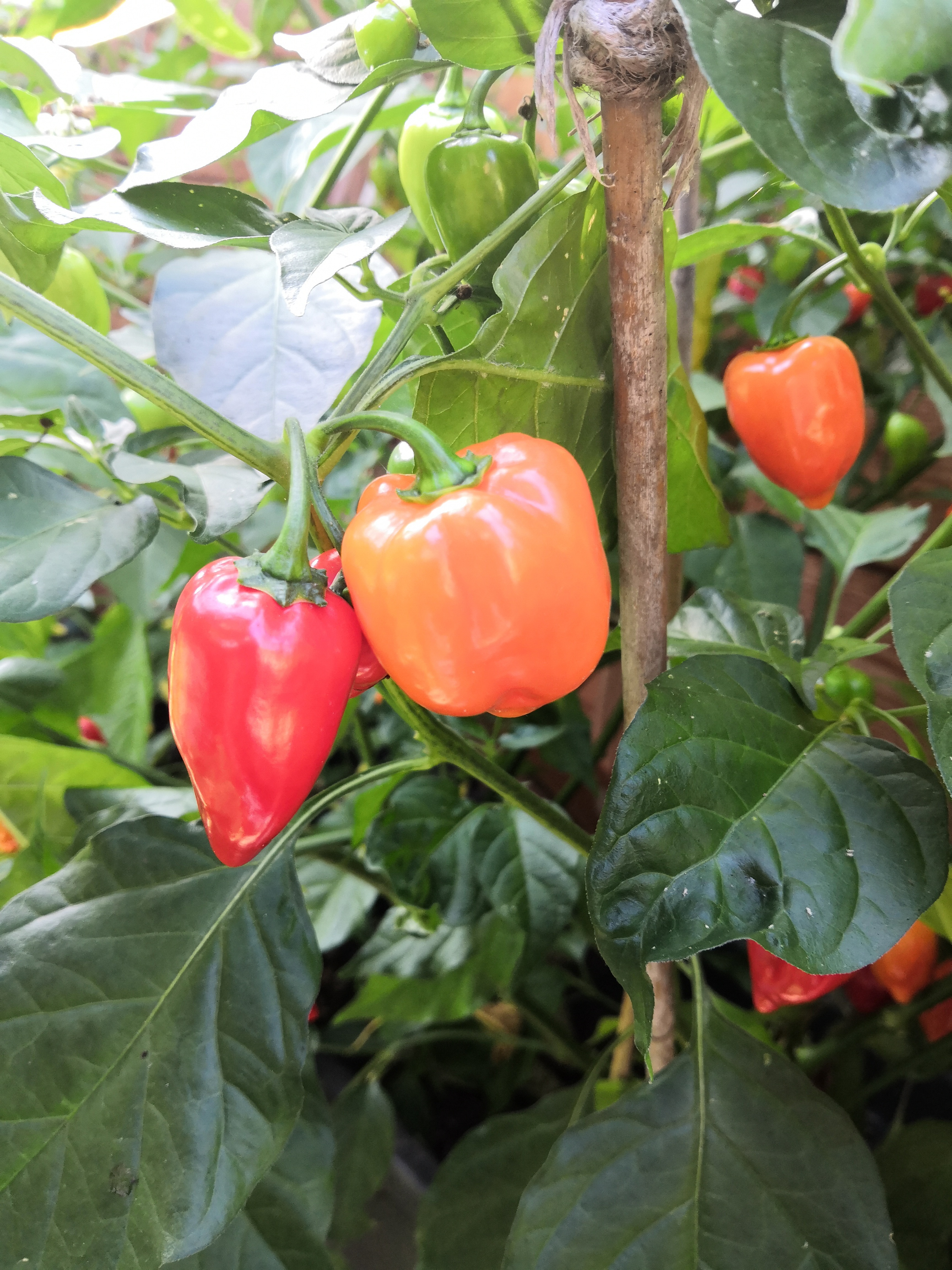
Chris' orange
A friend brought back some peppers from Chile, including some orange habeneros. The peppers produced from the seeds are not orange, but seem to be a fairly typical hot red habenero. They are exceptionally prolific, though, with easily 100 peppers/plant. Heat 10/10.
A friend brought back some peppers from Chile, including some orange habeneros. The peppers produced from the seeds are not orange, but seem to be a fairly typical hot red habenero. They are exceptionally prolific, though, with easily 100 peppers/plant. Heat 10/10.
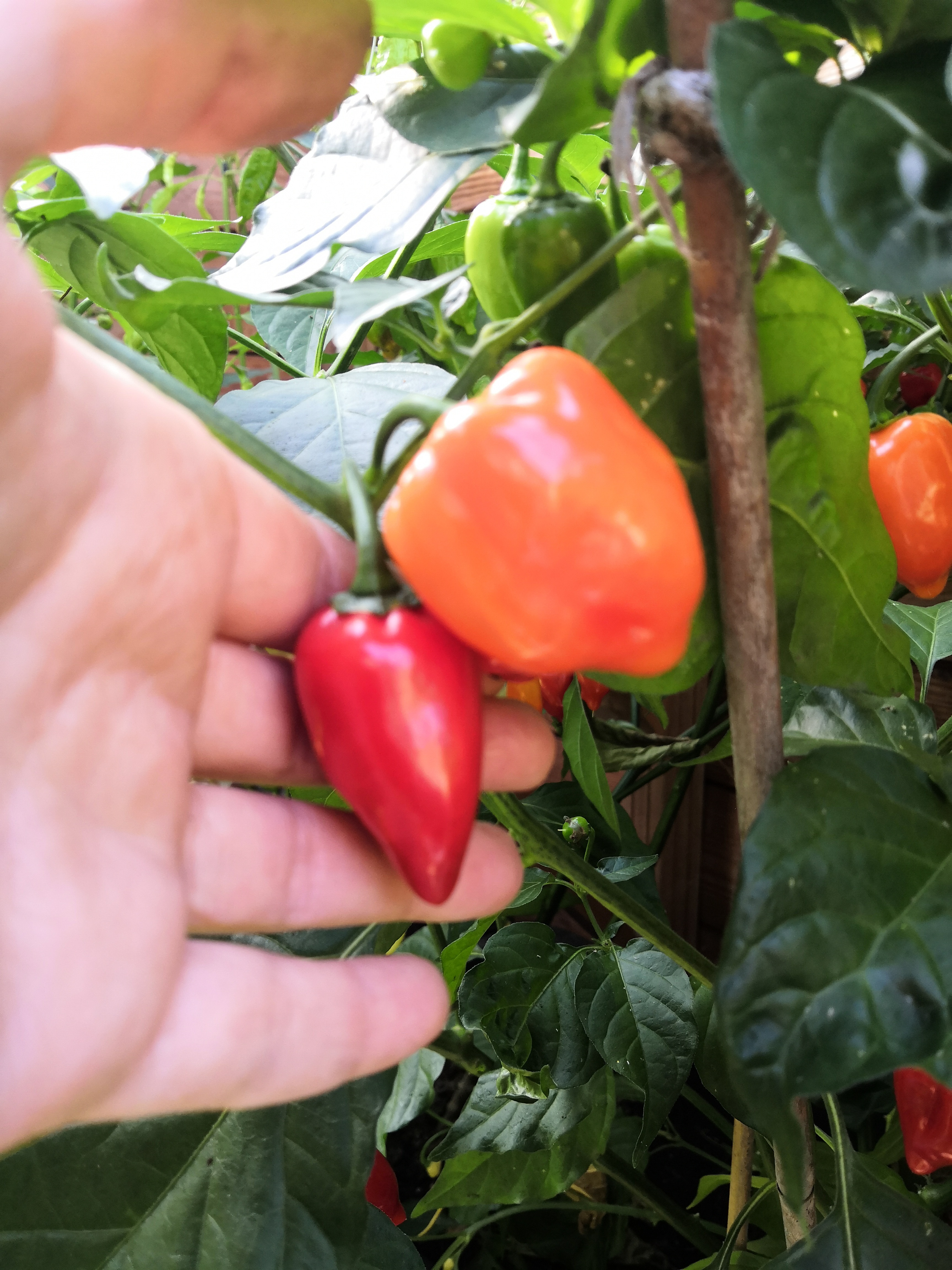
Chris' orange
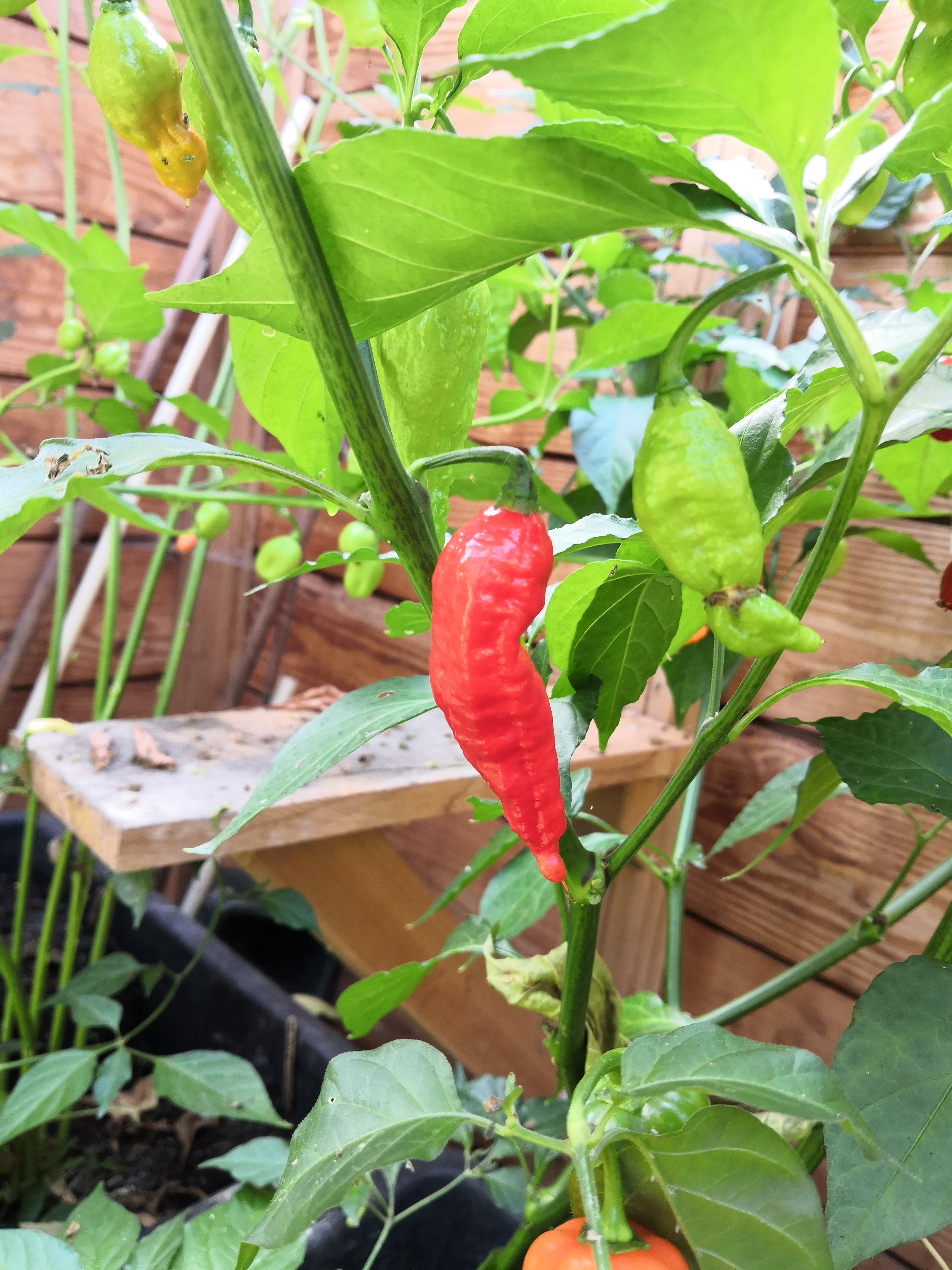
burmese naga
C. chinense
UK chili
Another superhot chili. This chili is similar to the bhut jolokia, but originally obtained from Burma. Sources estimate the heat from 500,000 to 1.5 million Scovilles. Our specimens are milder than the Reapers but also not as interesting in terms of flavor. An upside is that the plants are robust - the plant cheerfully survived a cold snap that killed all the other chinenses. Heat 11/10.
C. chinense
UK chili
Another superhot chili. This chili is similar to the bhut jolokia, but originally obtained from Burma. Sources estimate the heat from 500,000 to 1.5 million Scovilles. Our specimens are milder than the Reapers but also not as interesting in terms of flavor. An upside is that the plants are robust - the plant cheerfully survived a cold snap that killed all the other chinenses. Heat 11/10.
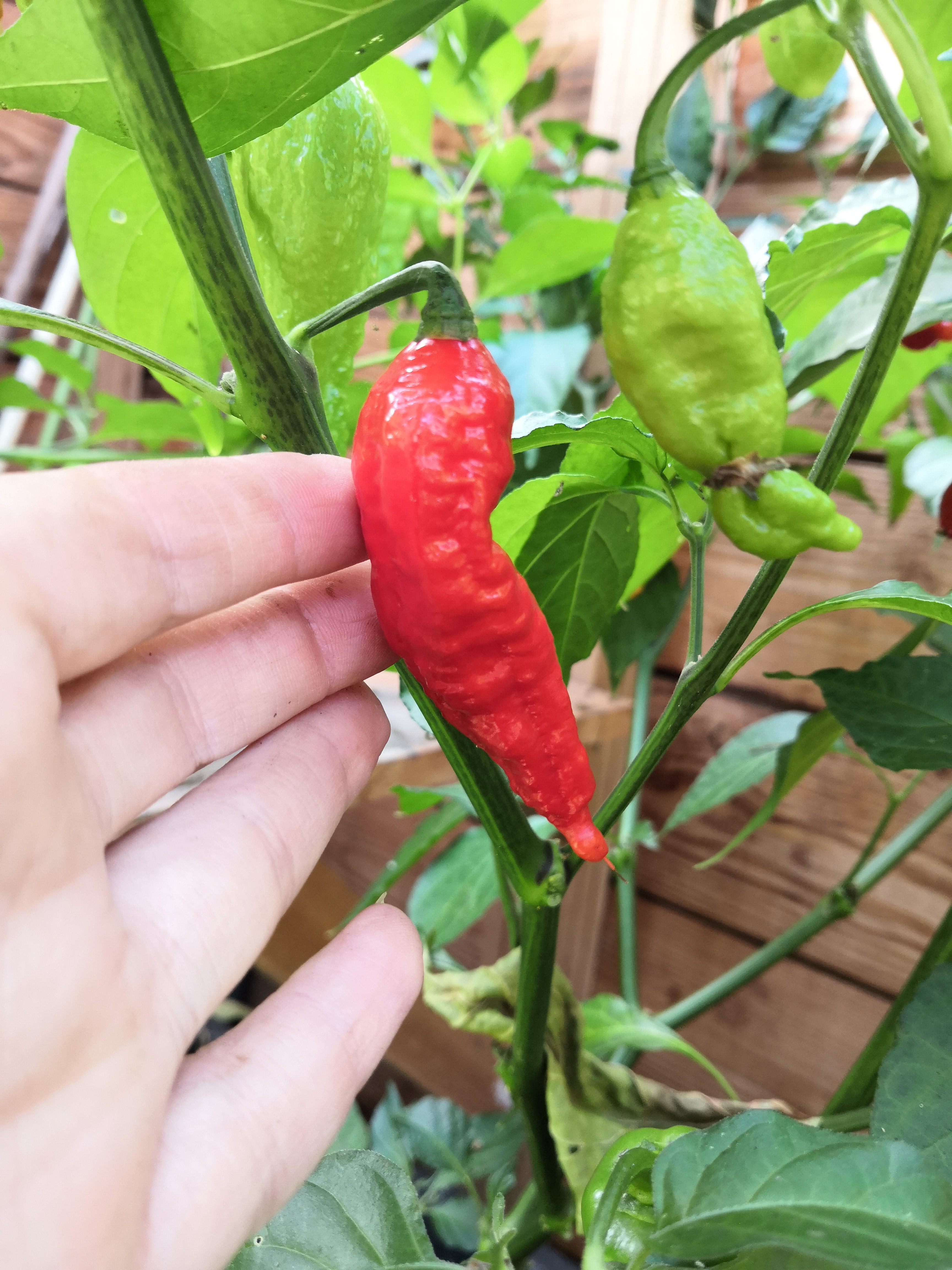
burmese naga
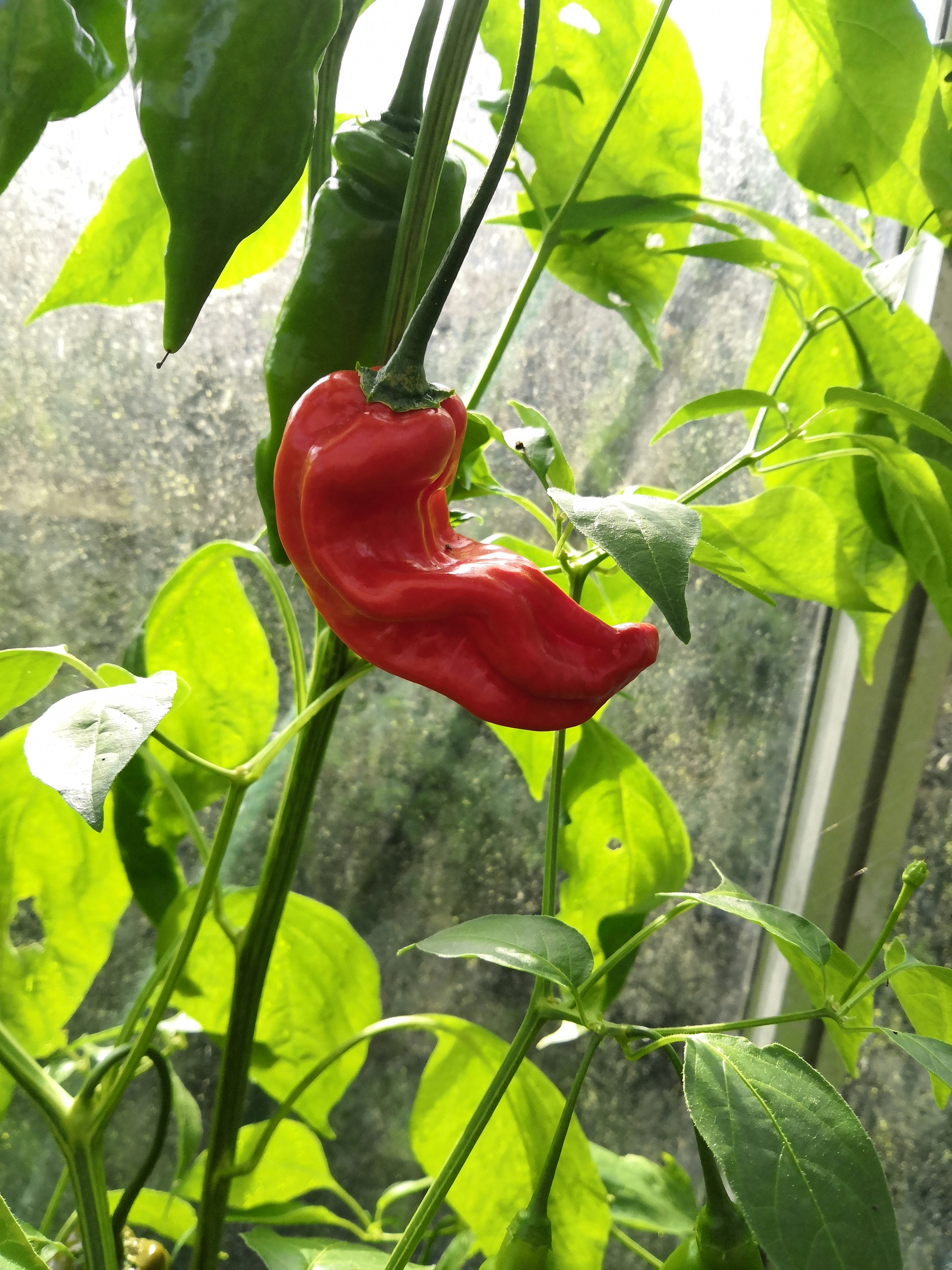
aji rojo
C. baccatum
refining fire
A pleasantly medium-hot baccatum with great flavor. Not quite as robust as the aji amarillos, but a prolific producer of 7-10cm wrinkled red chilis. Heat 4/10.
C. baccatum
refining fire
A pleasantly medium-hot baccatum with great flavor. Not quite as robust as the aji amarillos, but a prolific producer of 7-10cm wrinkled red chilis. Heat 4/10.
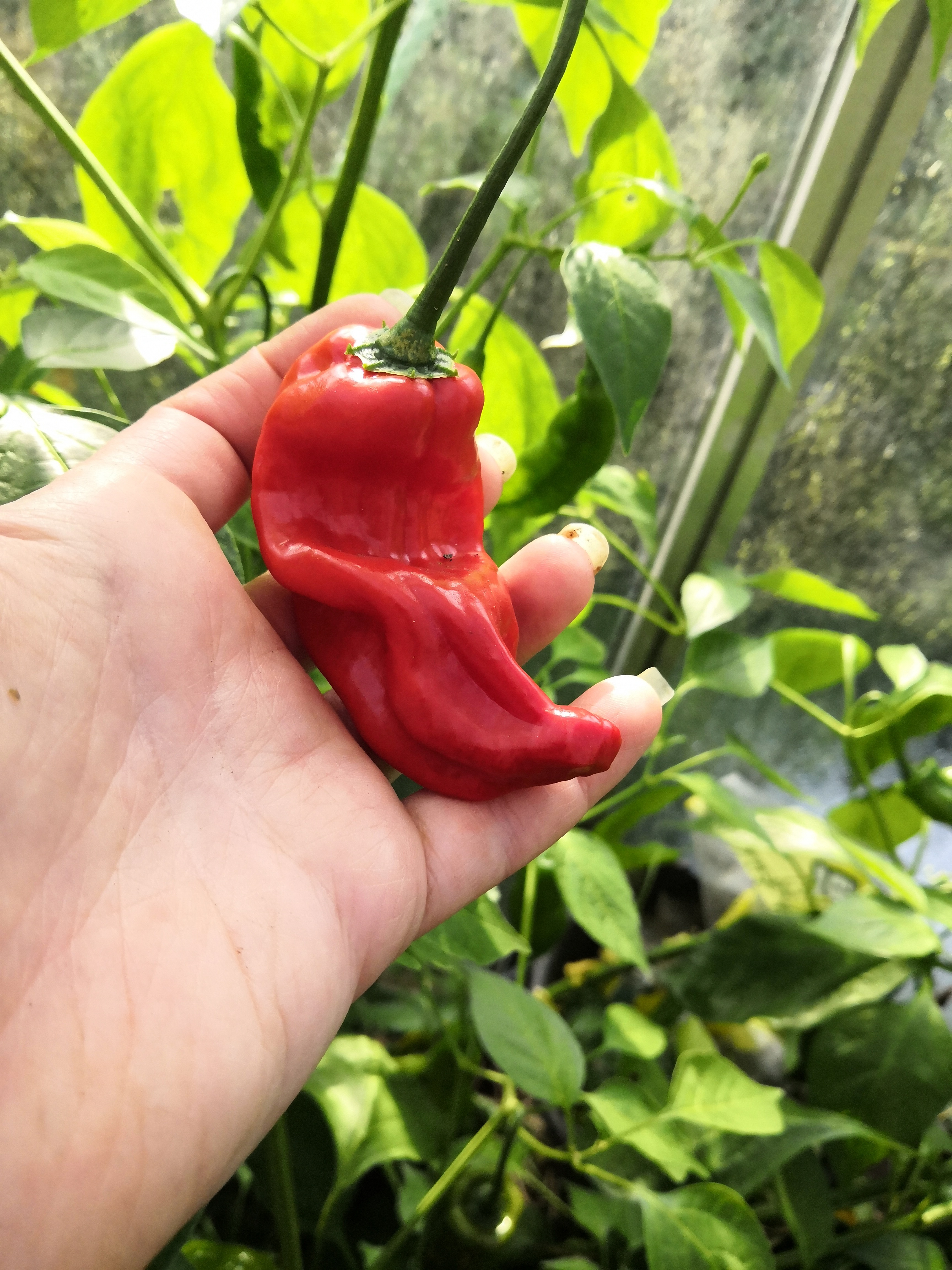
aji rojo
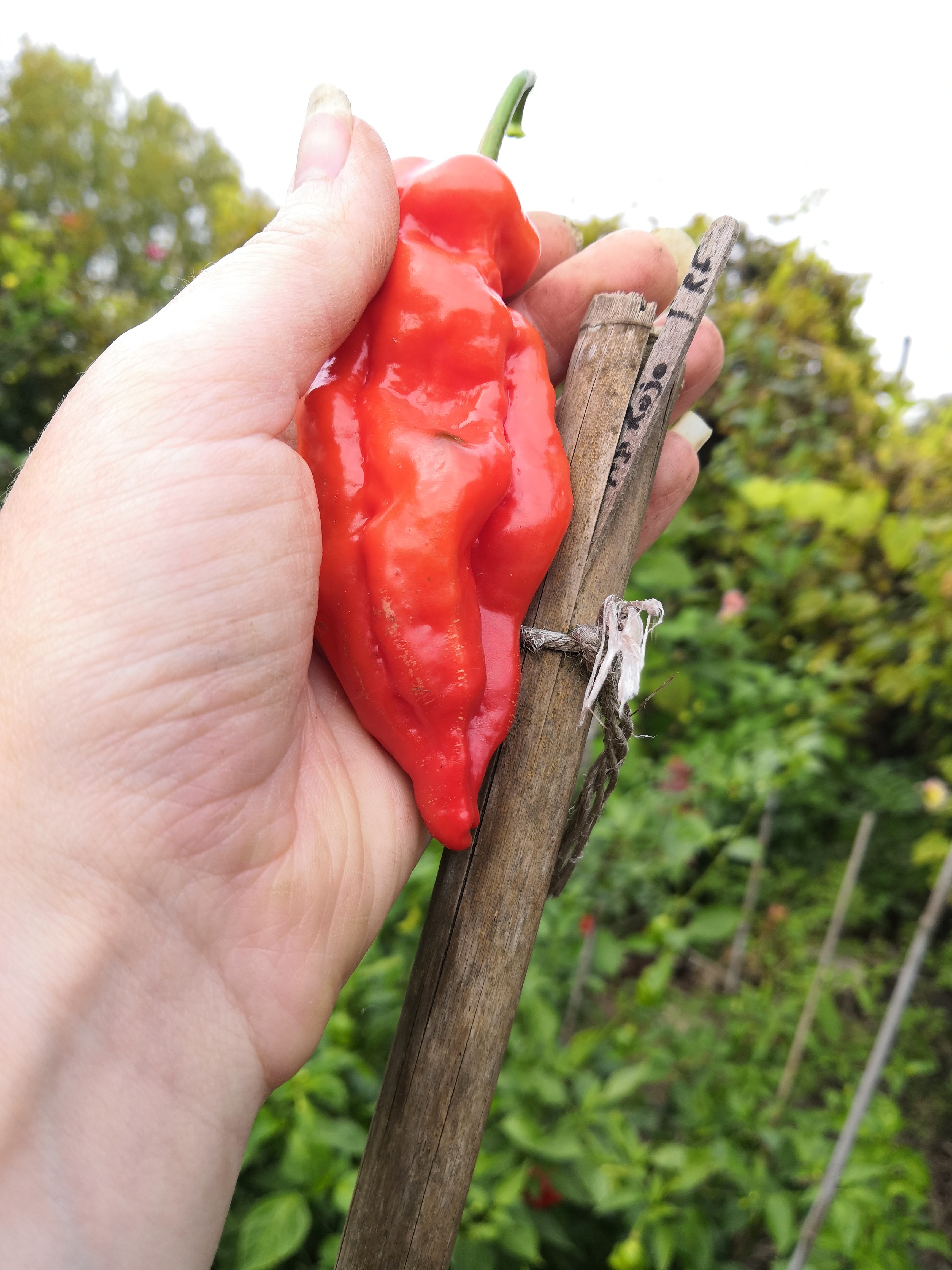
aji rojo
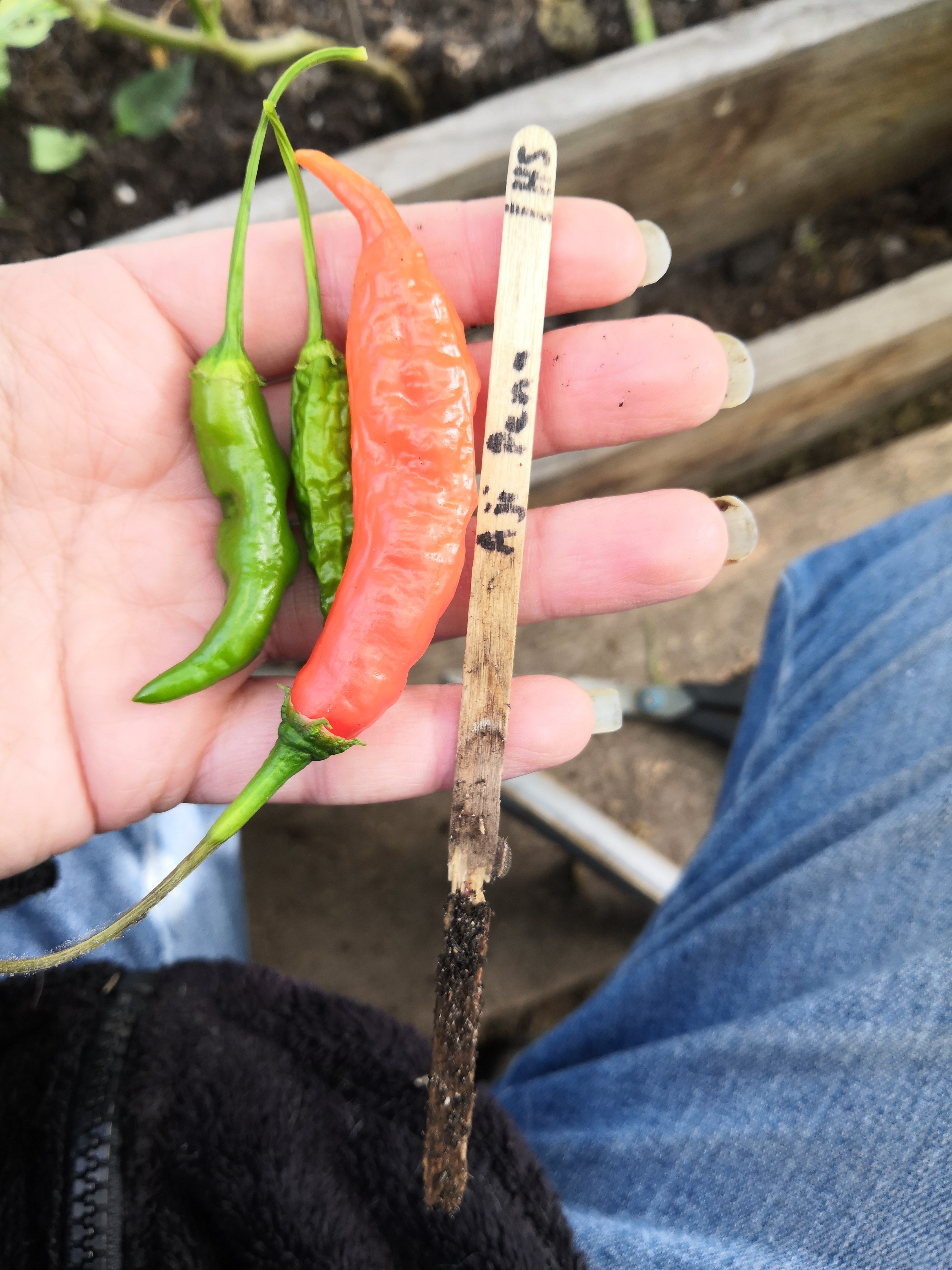
aji pena
C. baccatum
hippy seed
I didn't think much of this chili when I tried it by itself, but it really shines when added to a curry. Somehow it gives the whole dish more depth of flavor. It's about 7cm long and fairly hot, 7/10.
C. baccatum
hippy seed
I didn't think much of this chili when I tried it by itself, but it really shines when added to a curry. Somehow it gives the whole dish more depth of flavor. It's about 7cm long and fairly hot, 7/10.
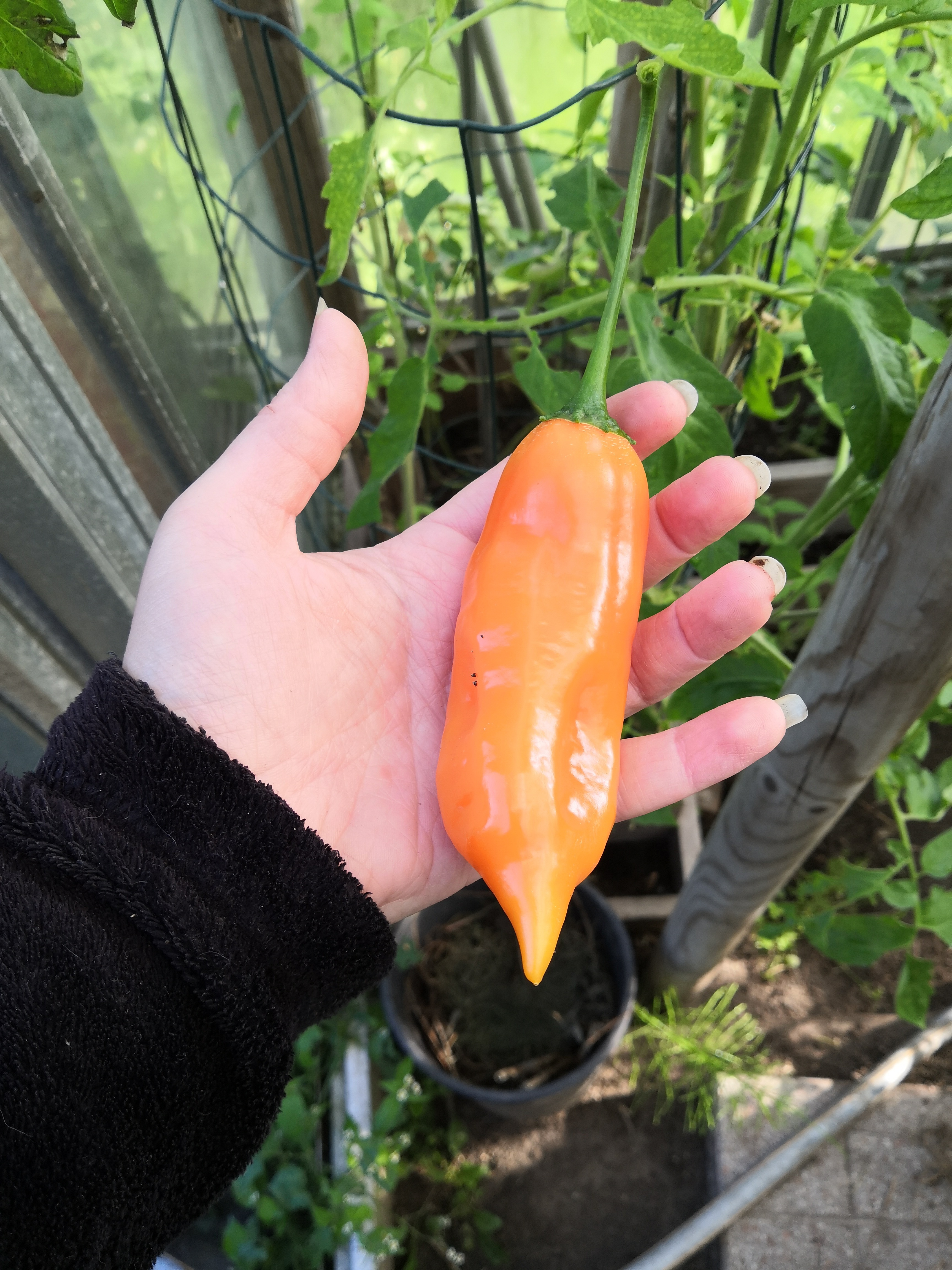
aji amarillo (PI 152217) (CGN23297)
C. baccatum
pepper lover
Very similar to Aji Amarillo BMS.
C. baccatum
pepper lover
Very similar to Aji Amarillo BMS.
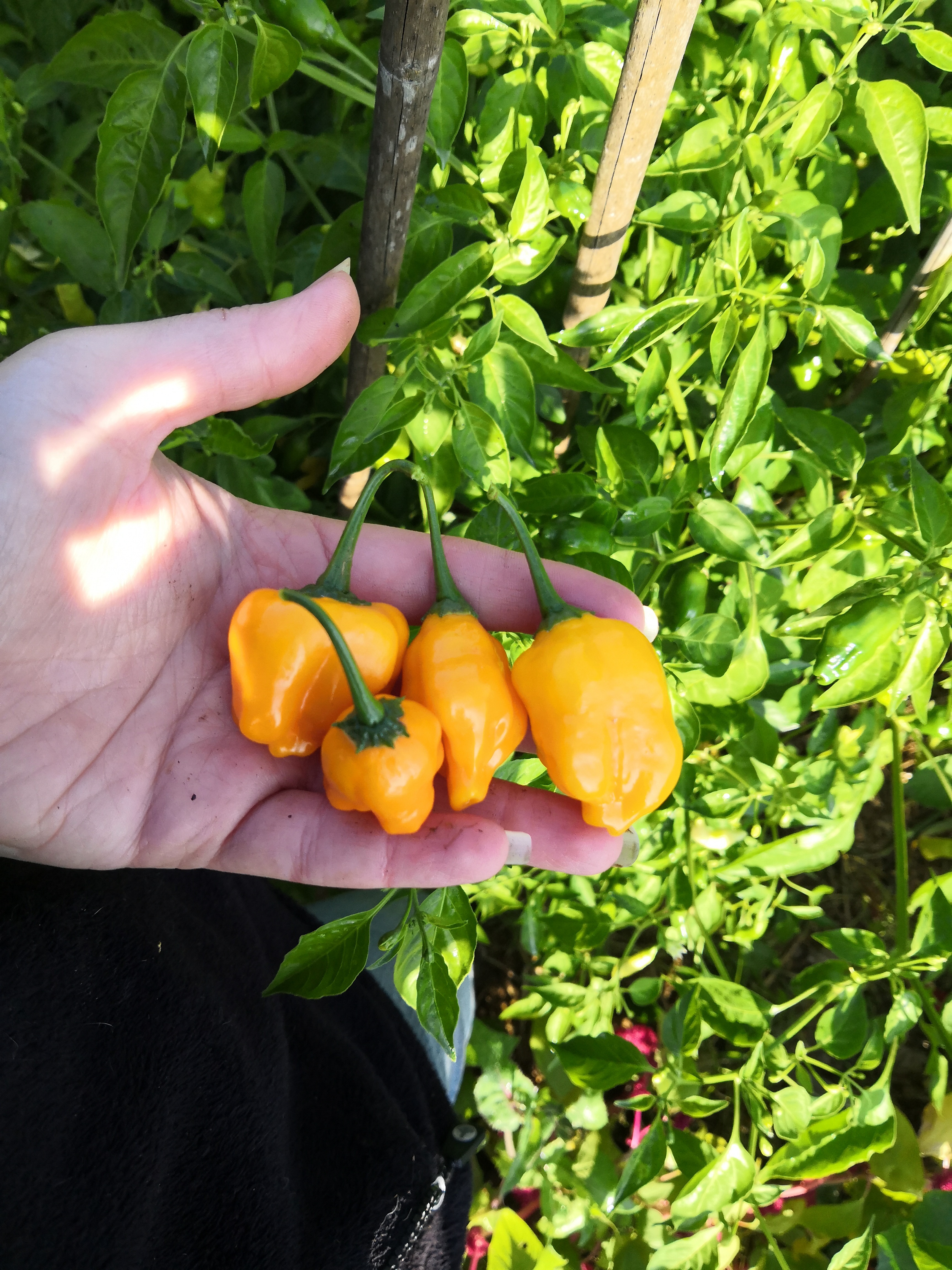
aji angol
C. baccatum
pepper lover
One plant grows red, the other grows orange. The surface has tiny bumps on it, a bit like a cucumber. Walnut-sized fruit that packs a punch. Nice tropical fruit flavors, but thin-walled and rather small. Heat 7/10.
C. baccatum
pepper lover
One plant grows red, the other grows orange. The surface has tiny bumps on it, a bit like a cucumber. Walnut-sized fruit that packs a punch. Nice tropical fruit flavors, but thin-walled and rather small. Heat 7/10.
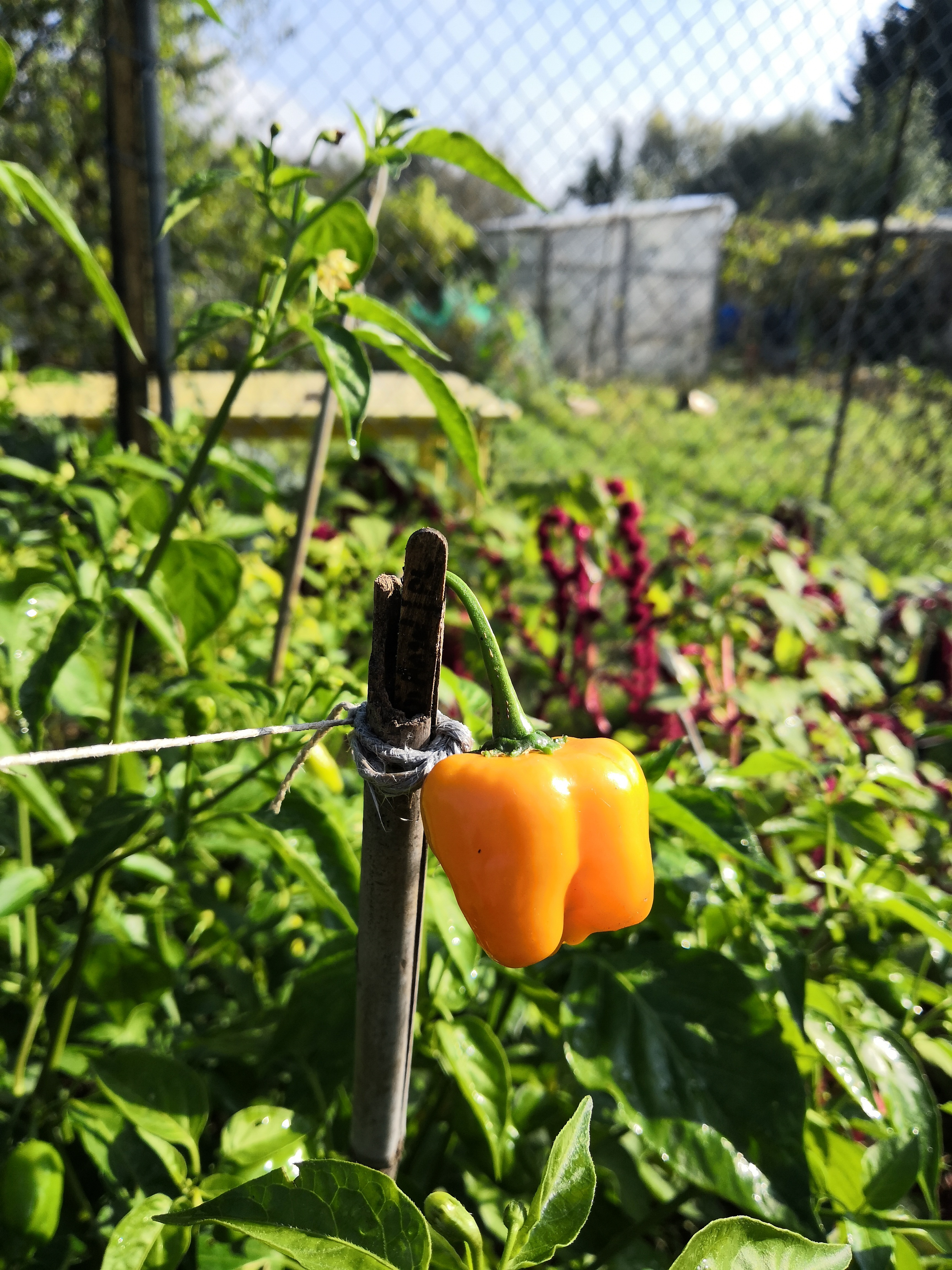
aji angol
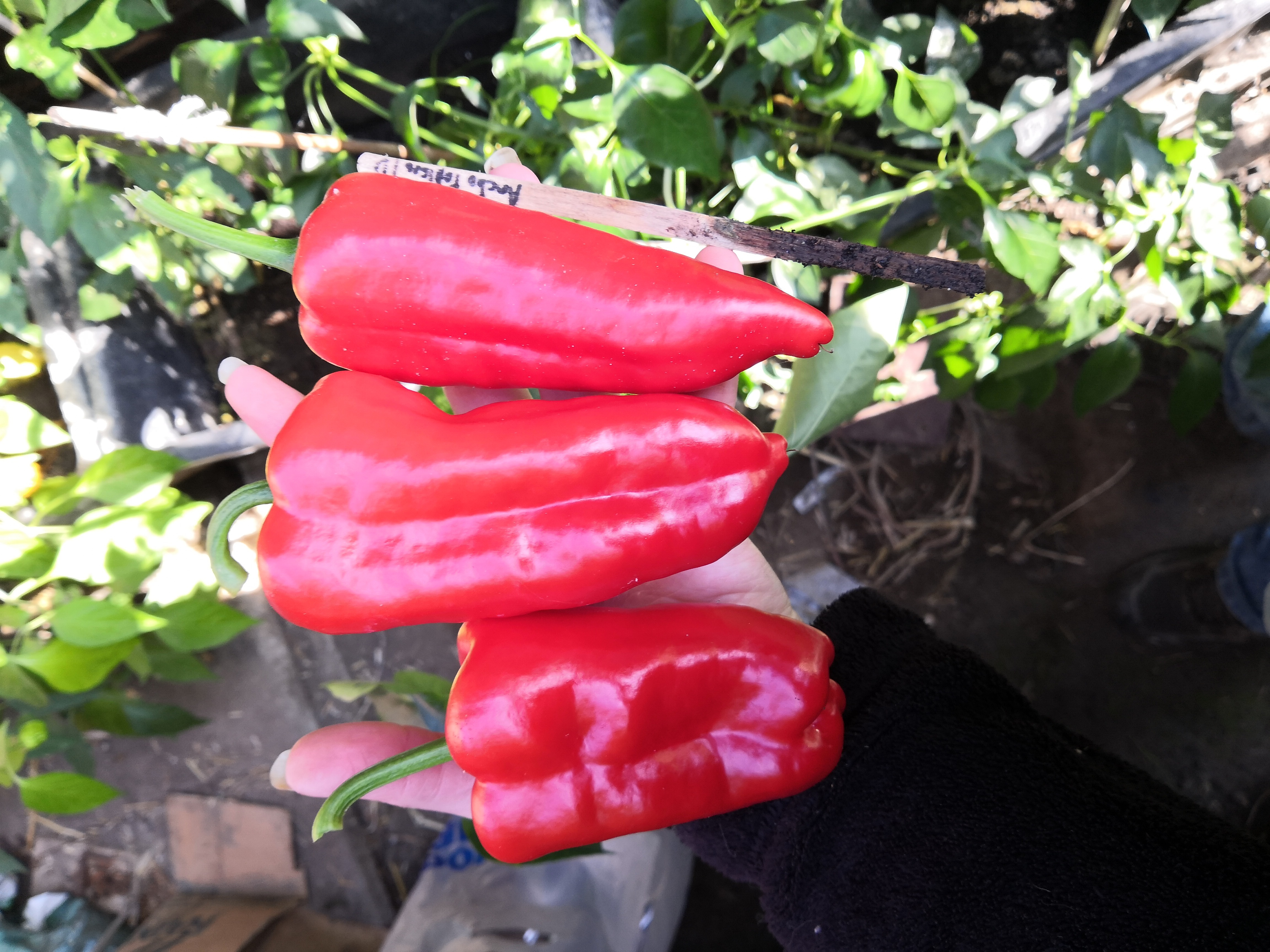
ancho poblano
C. annuum
deaflora
A nice, mildly-hot pepper. Ripens from green to red. Good, but thinner-walled and not as good as the ancho mulato.
C. annuum
deaflora
A nice, mildly-hot pepper. Ripens from green to red. Good, but thinner-walled and not as good as the ancho mulato.
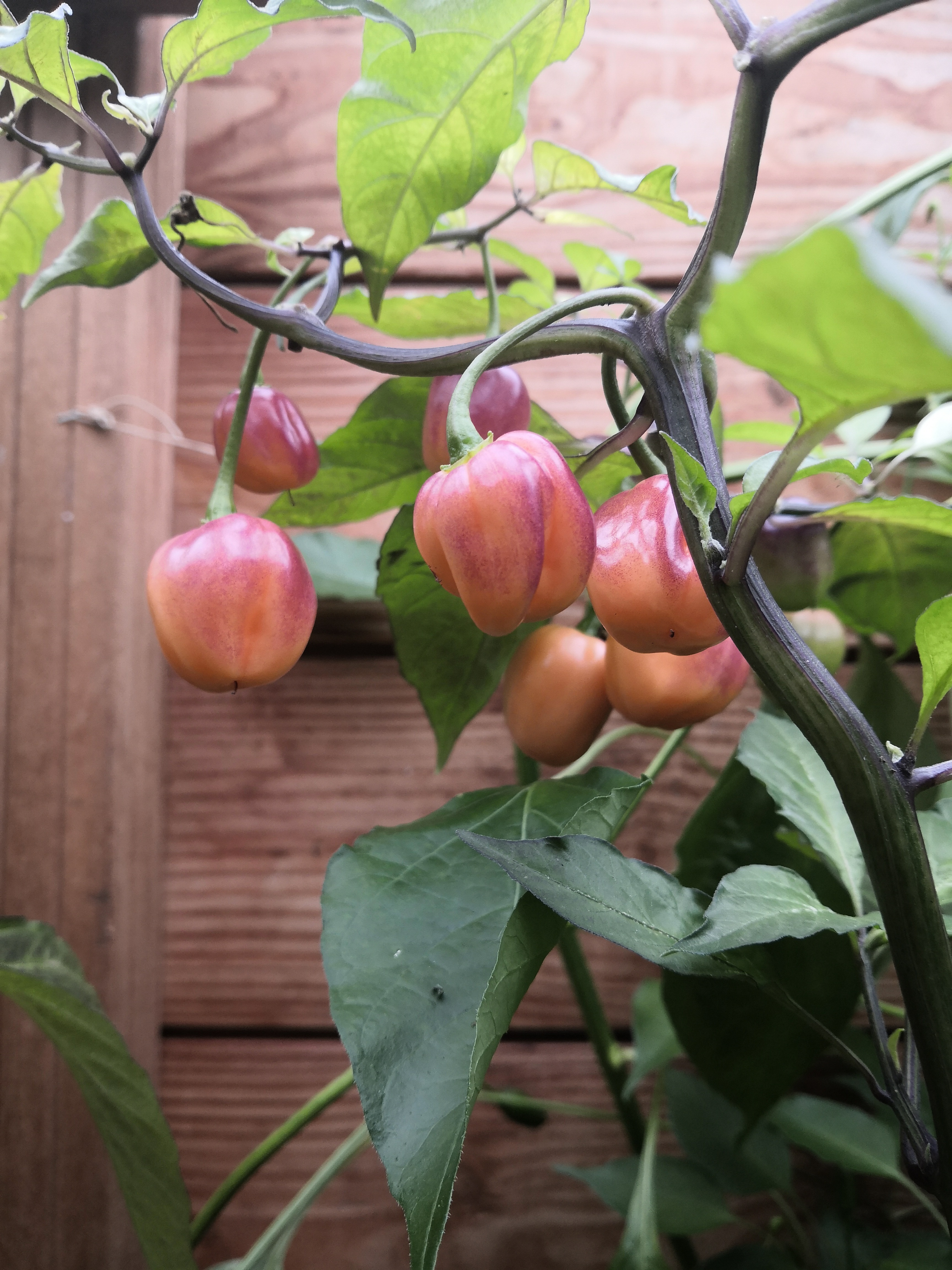
CGN21500
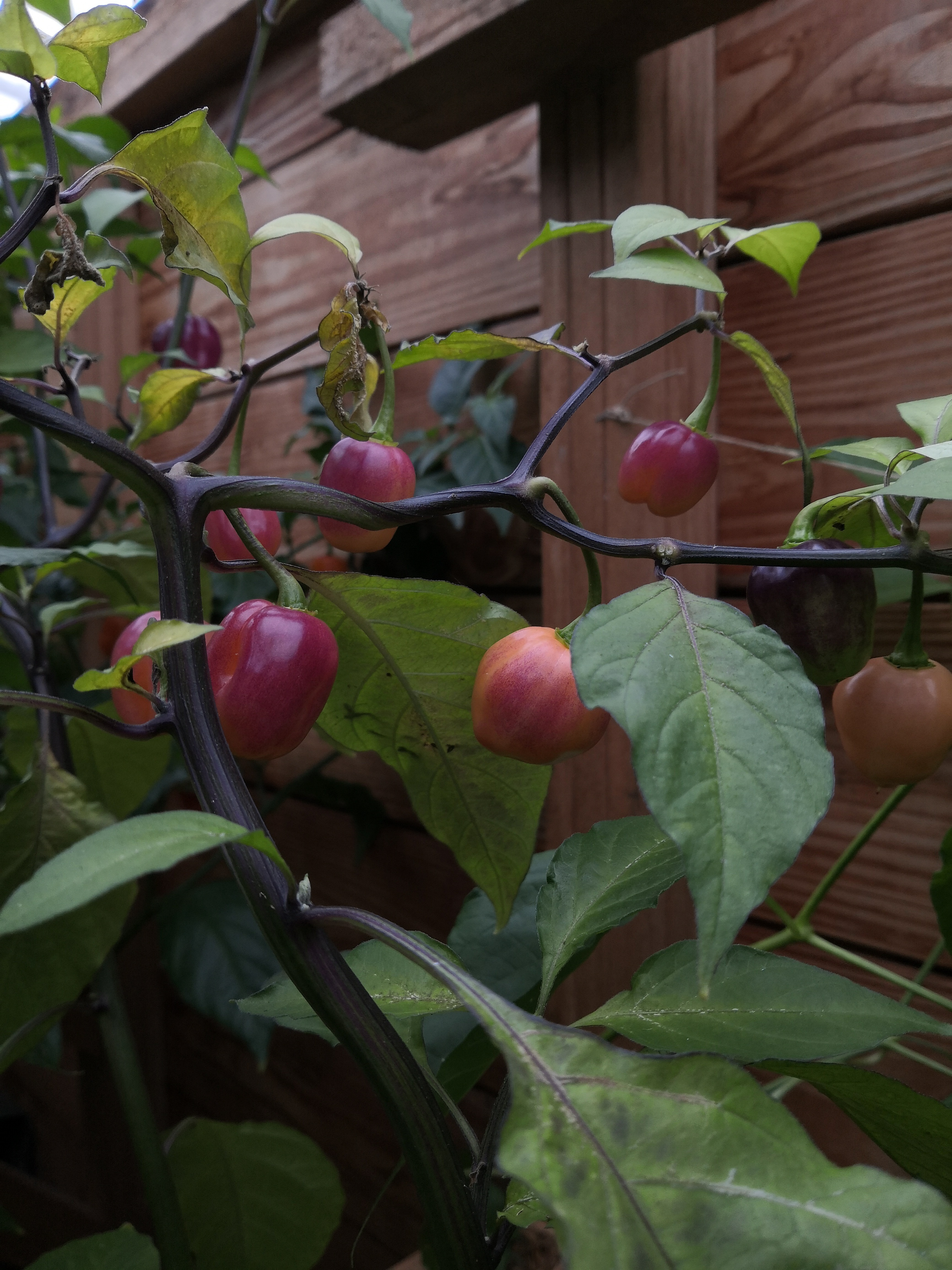
CGN21500
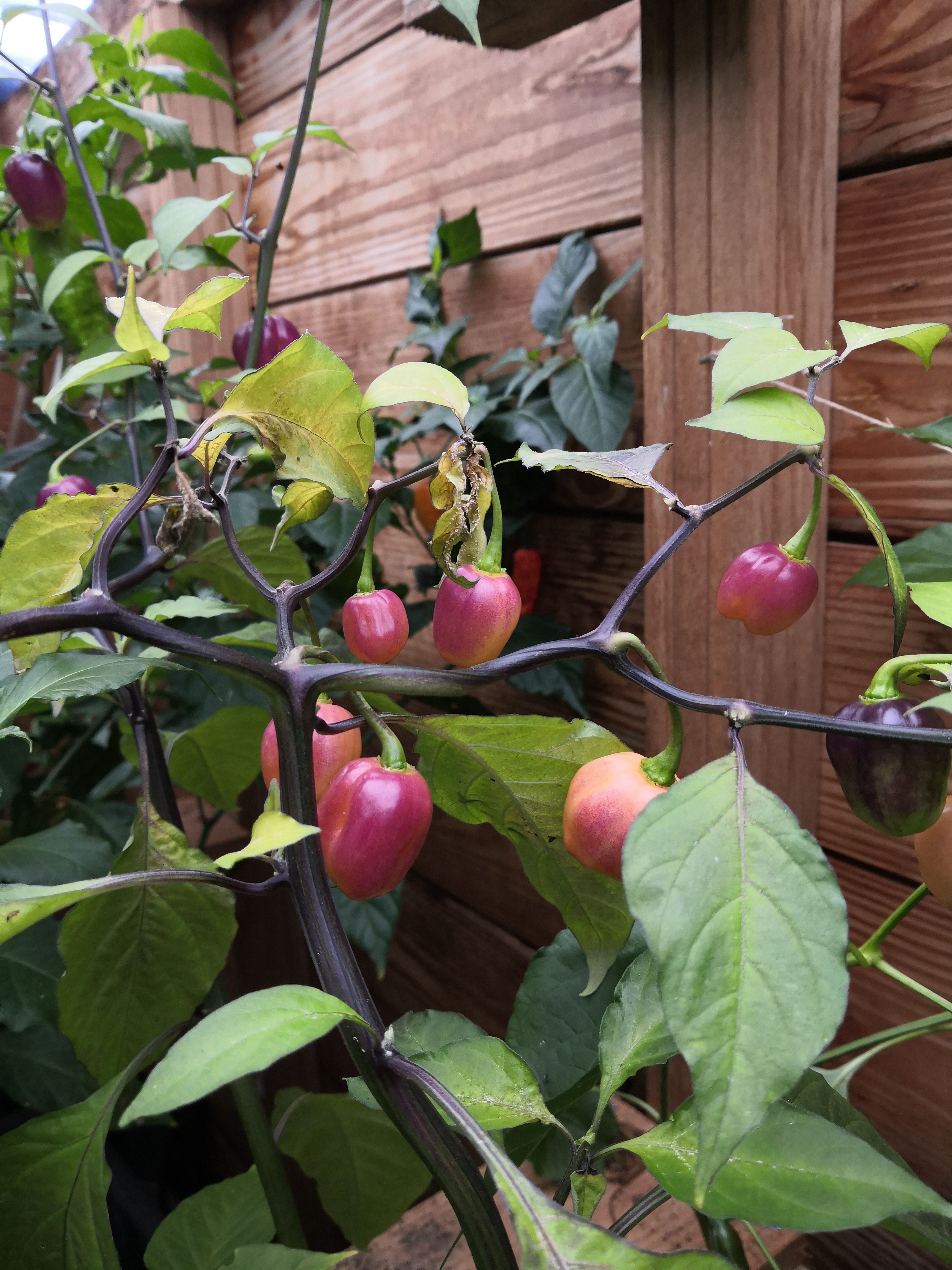
CGN21500
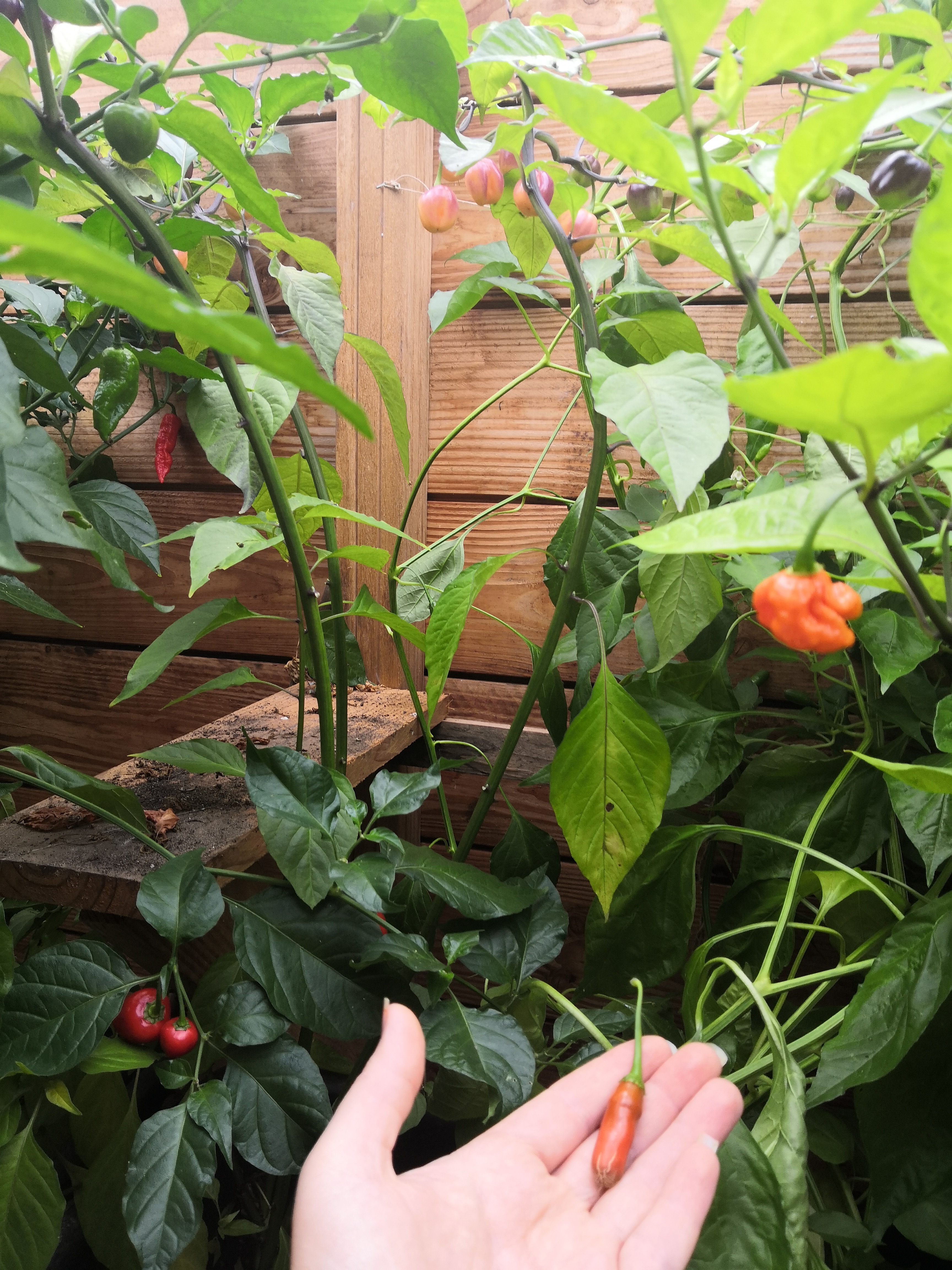
Chris' red (dedo de mono)
C. baccatum
Descended from one of the chilis a friend brought back from South America. These are small, bullet-shaped, firey hot chilis. They are also thin-walled and extremely seedy. Heat 9/10.
C. baccatum
Descended from one of the chilis a friend brought back from South America. These are small, bullet-shaped, firey hot chilis. They are also thin-walled and extremely seedy. Heat 9/10.
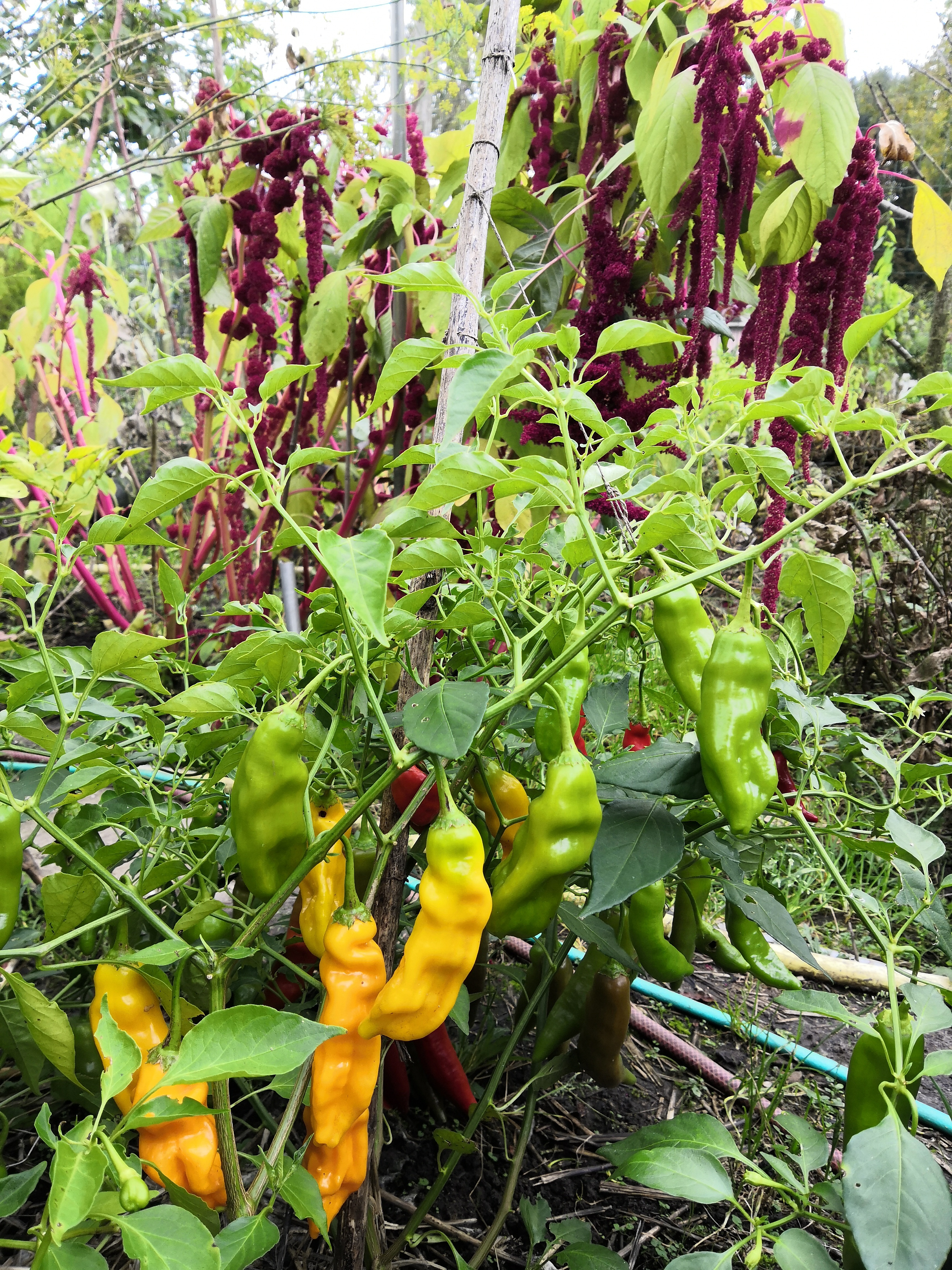
dulce dolor (large yellow wrinkled type)
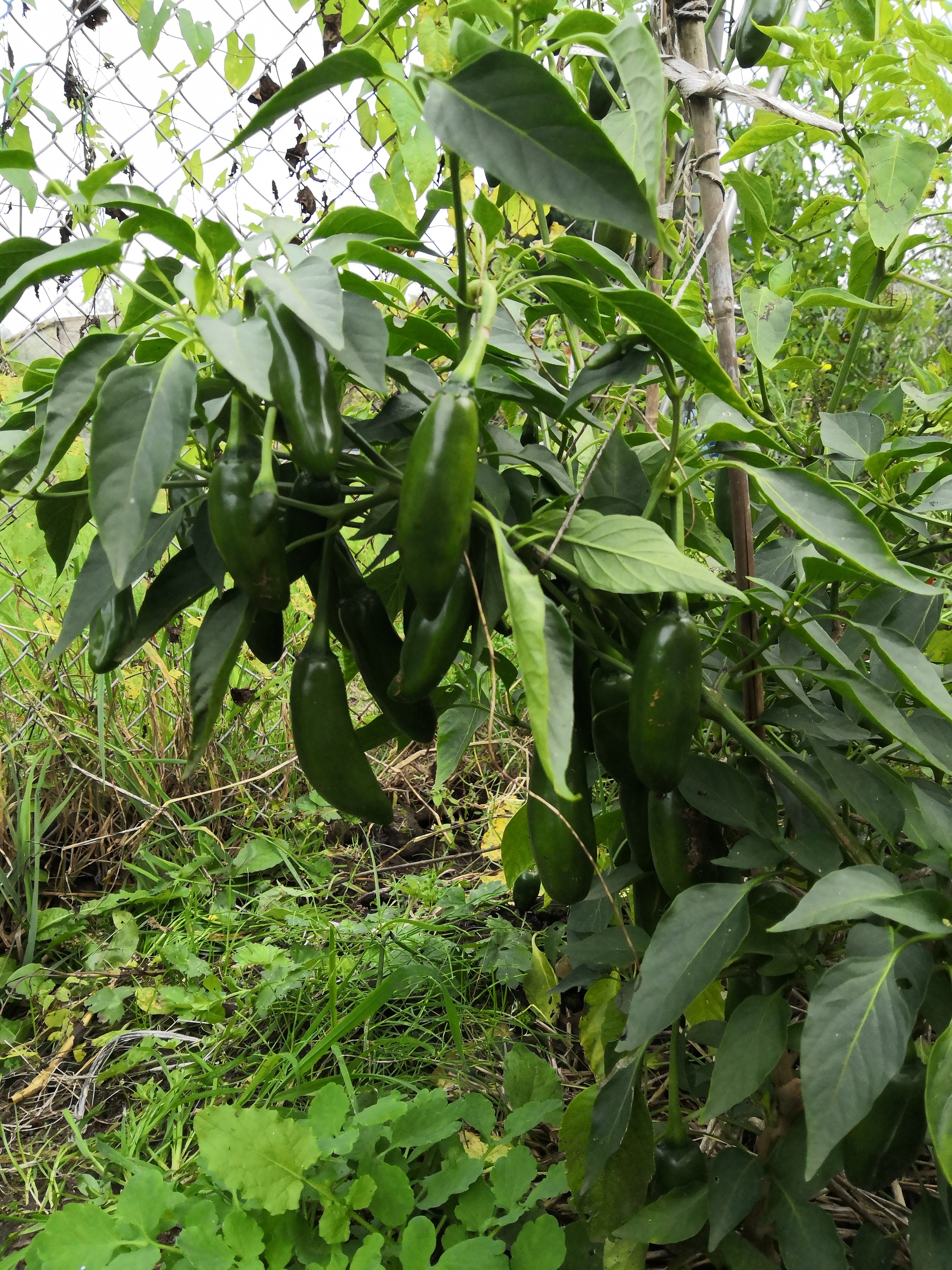
zapotec jalapeno
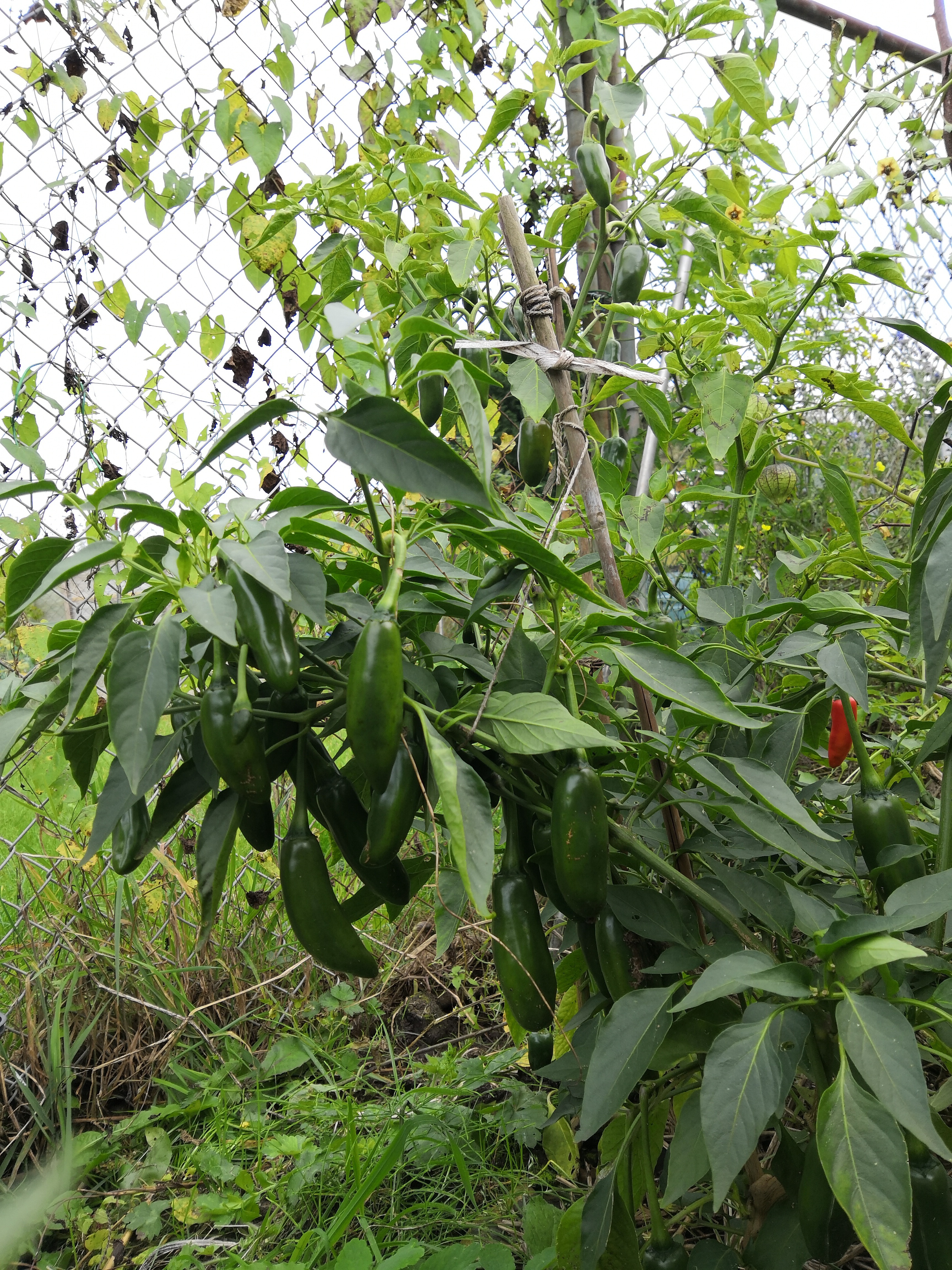
zapotec jalapeno
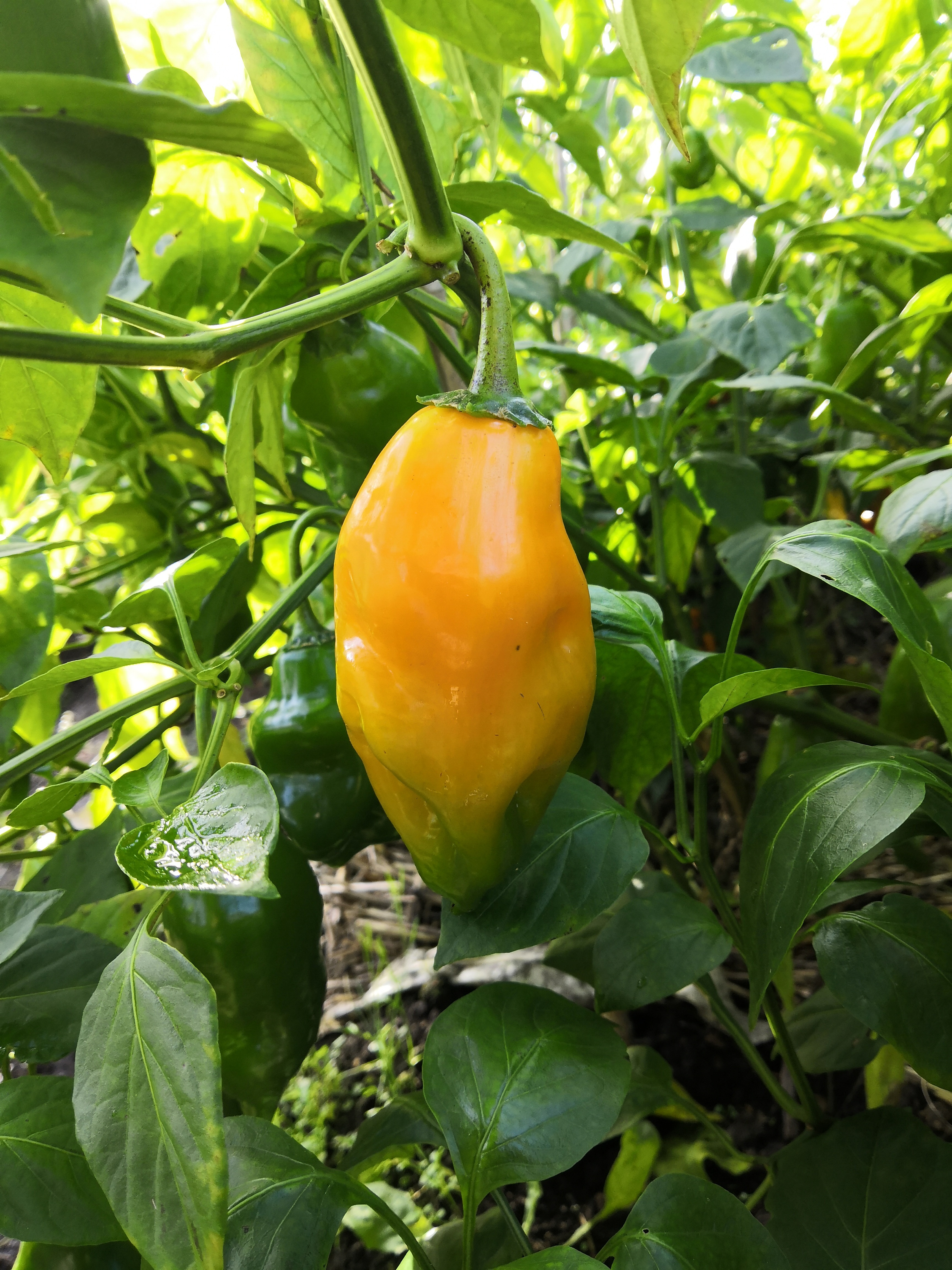
aji amarillo BMS - phat variant
I was surprised to see that two of the aji amarillo plants produced unusually round peppers. The result is almost as big as a bell pepper - rather unusual for a baccatum. We'll find out this year if this variation breeds true.
I was surprised to see that two of the aji amarillo plants produced unusually round peppers. The result is almost as big as a bell pepper - rather unusual for a baccatum. We'll find out this year if this variation breeds true.
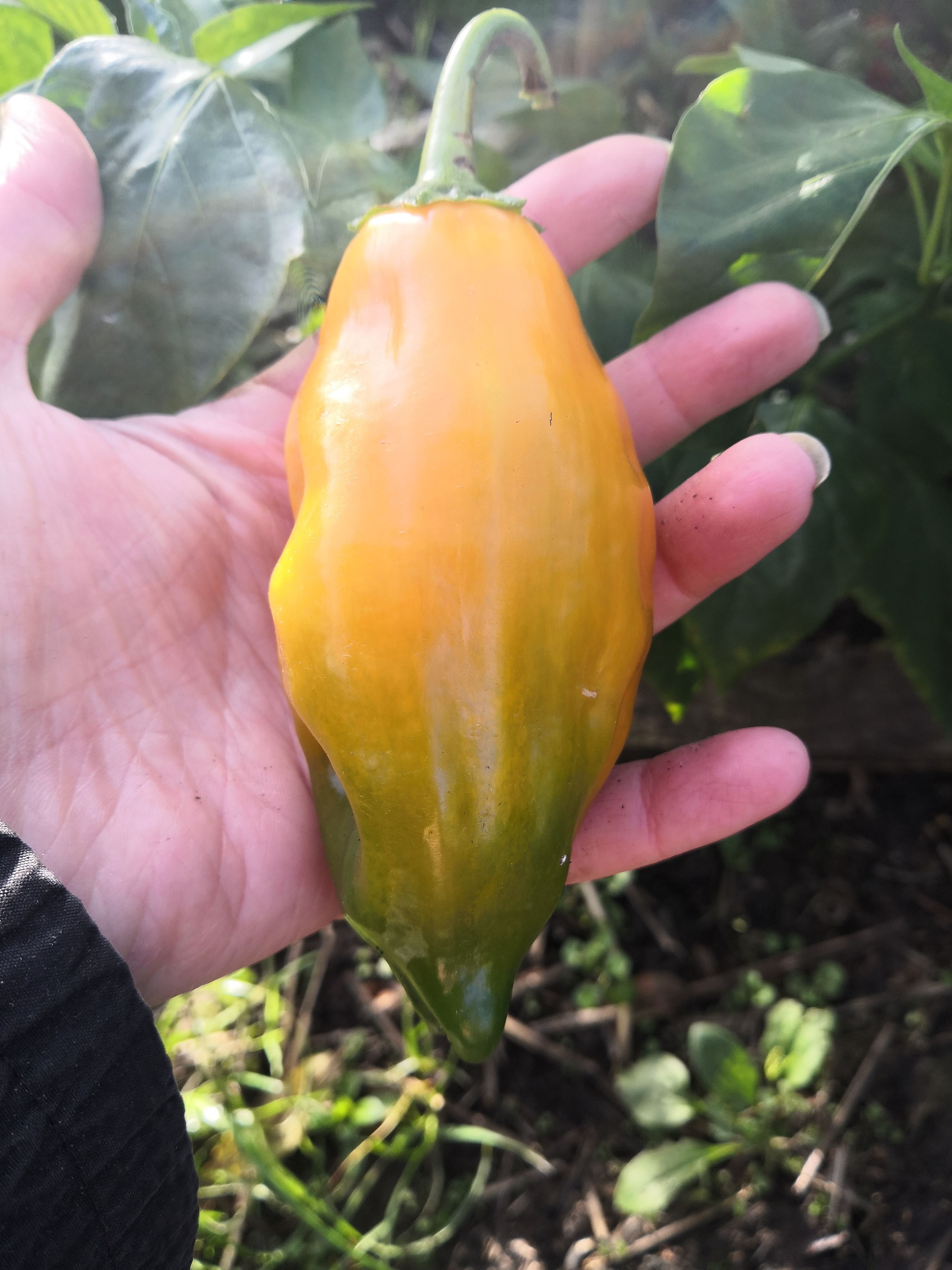
aji amarillo BMS - phat variant
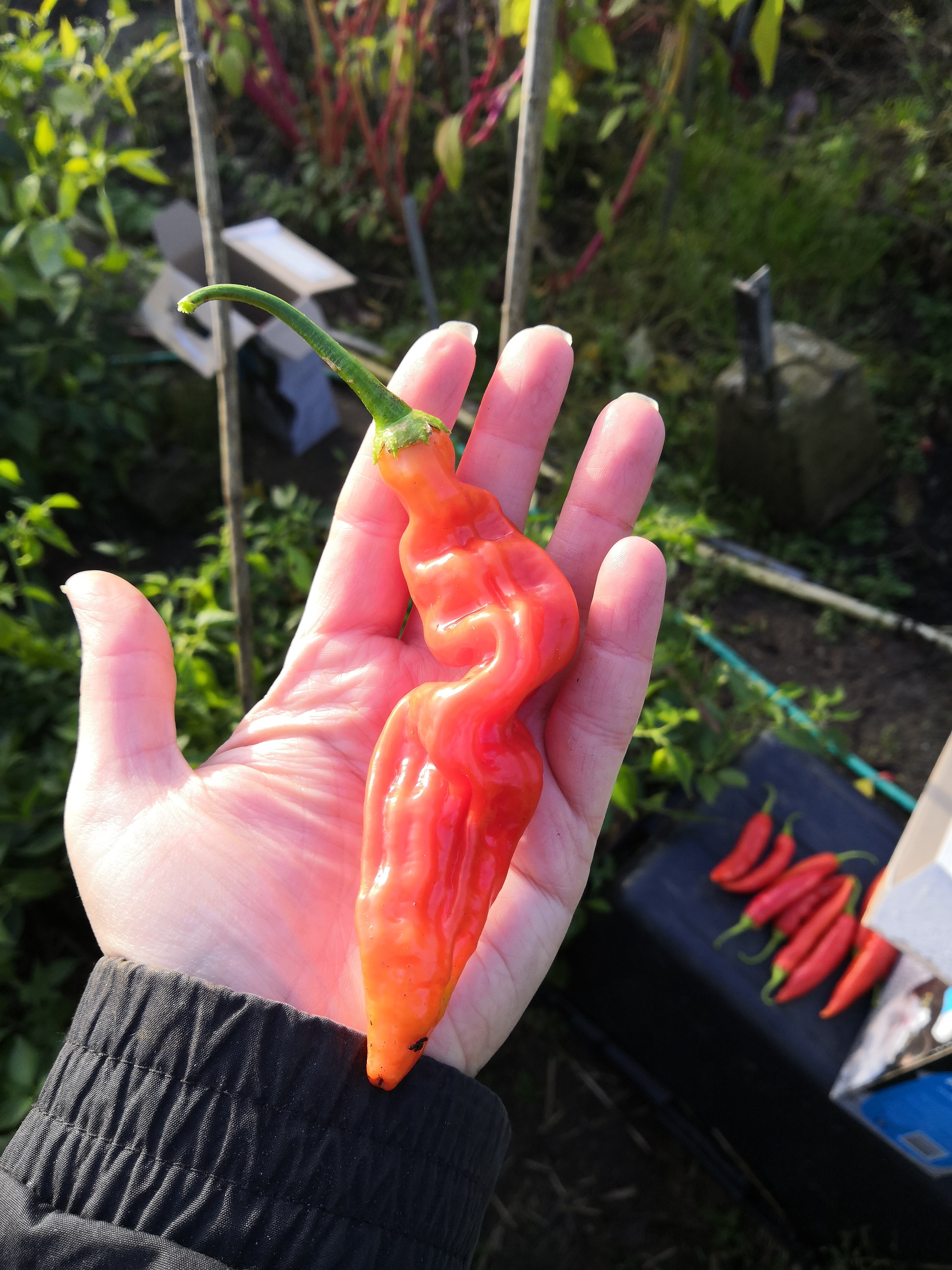
dulce dolor - large long wrinkled variant
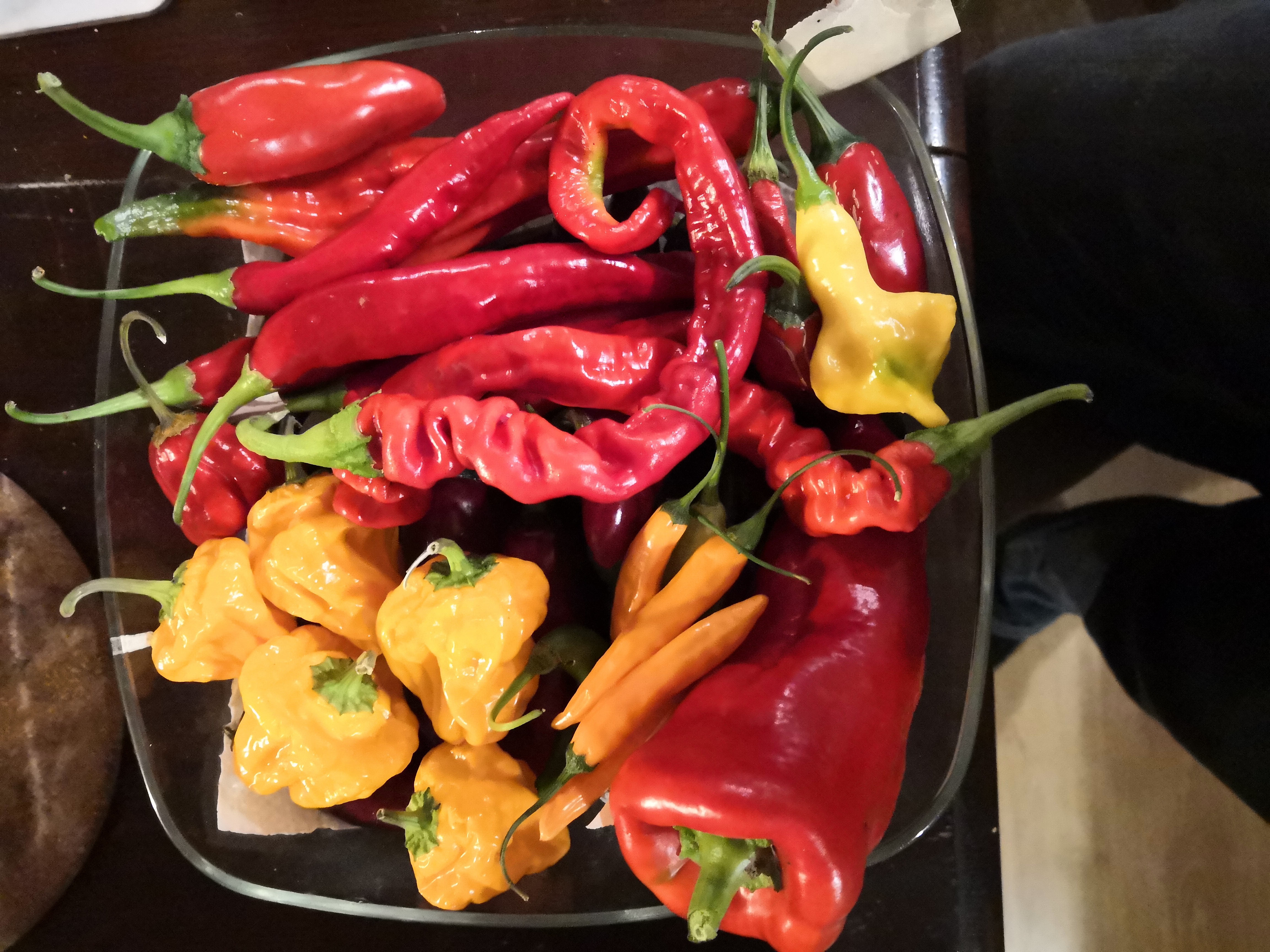
catch of the day
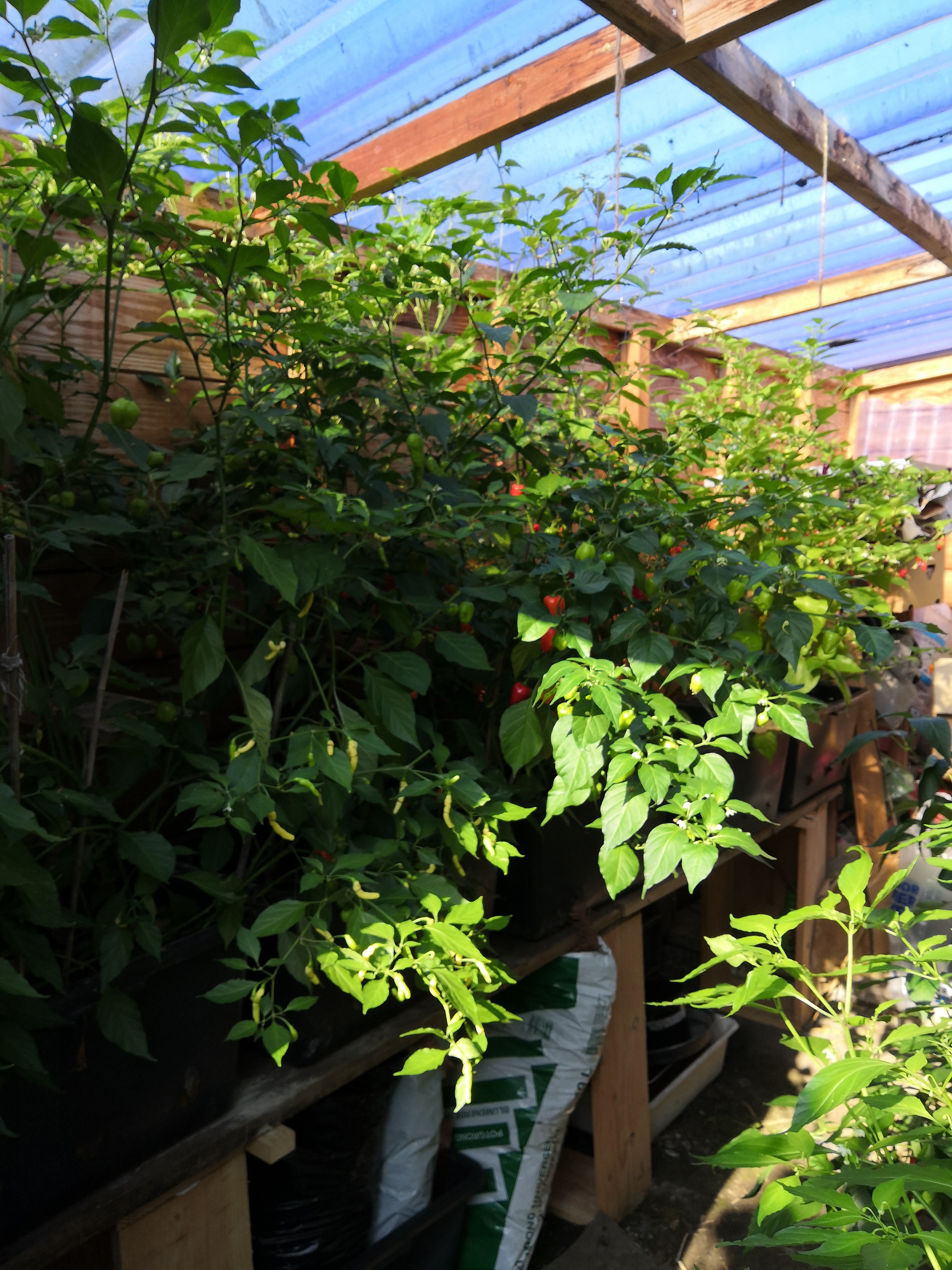
Chinenses 2021: Sept
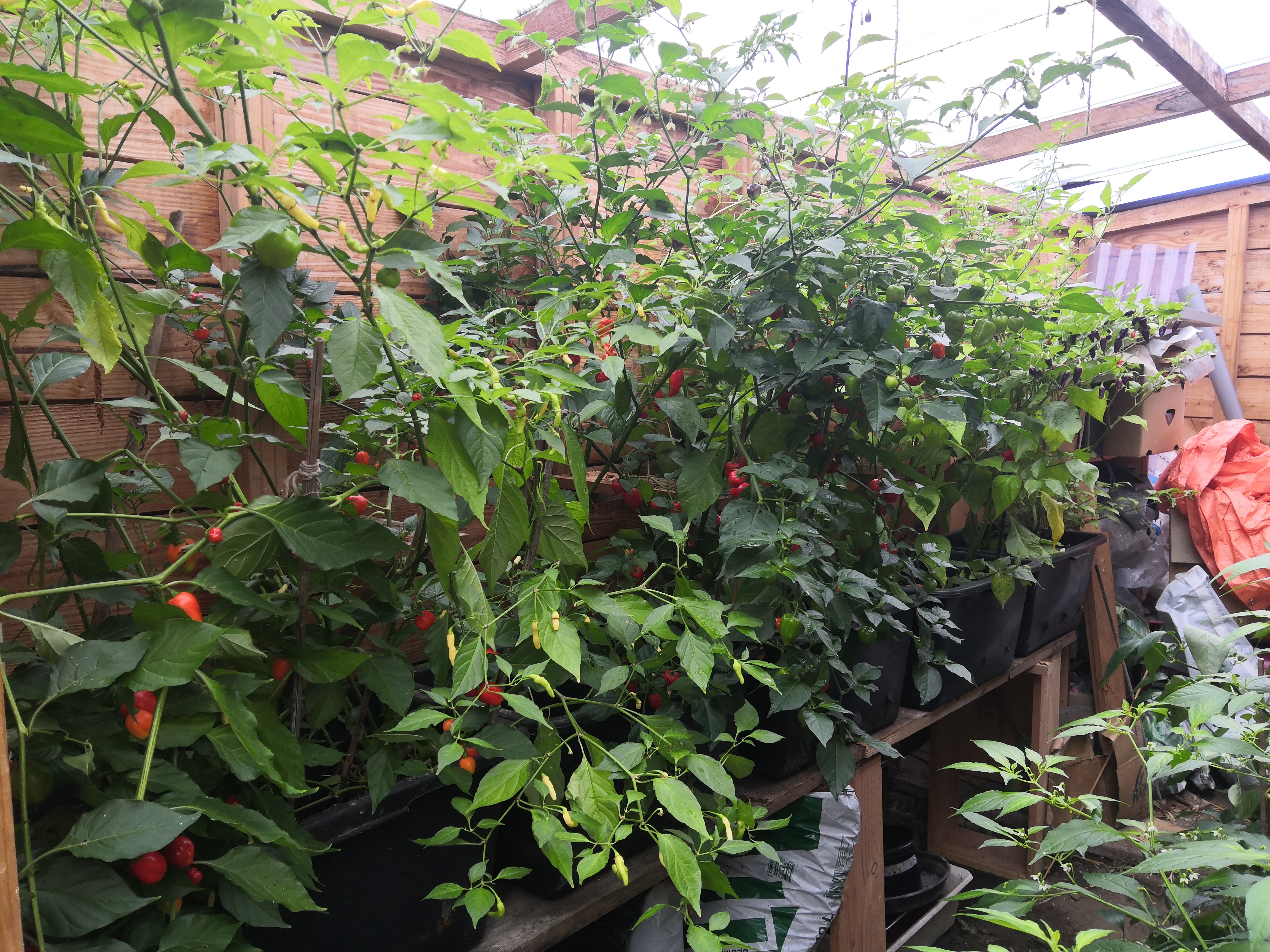
Chinenses 2021: Nov
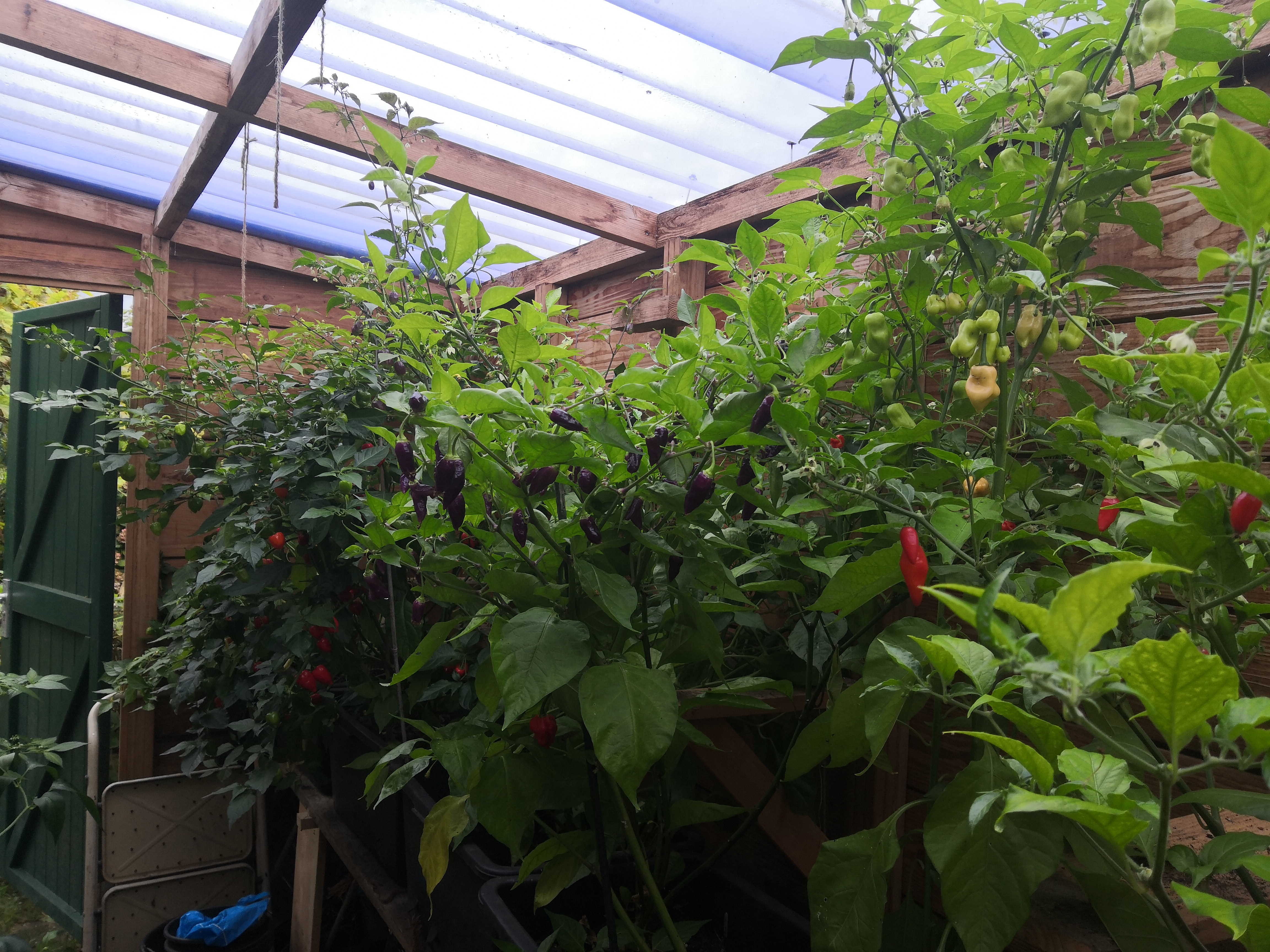
Chinenses 2021: Nov
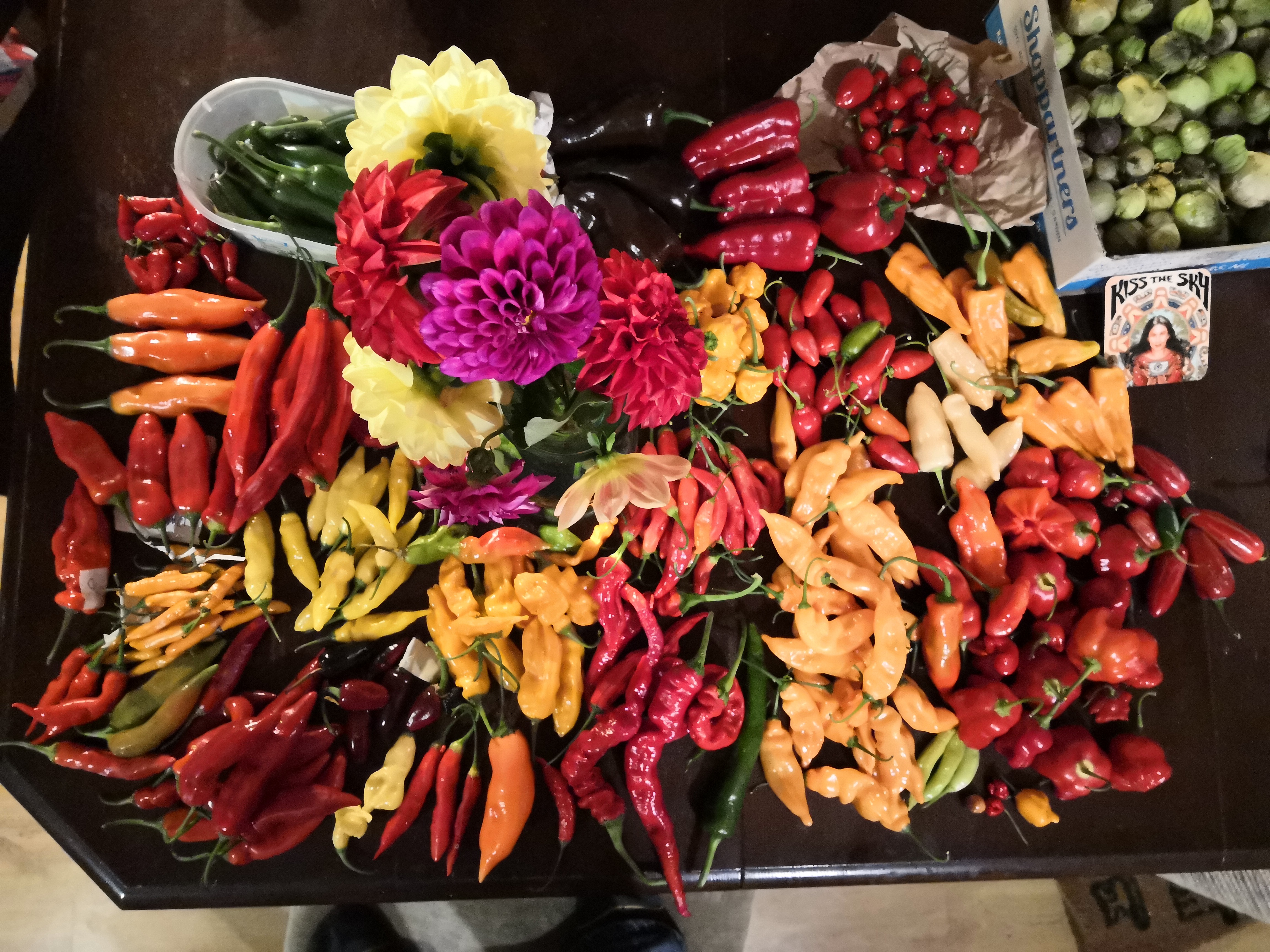
catch of the day nov 2021